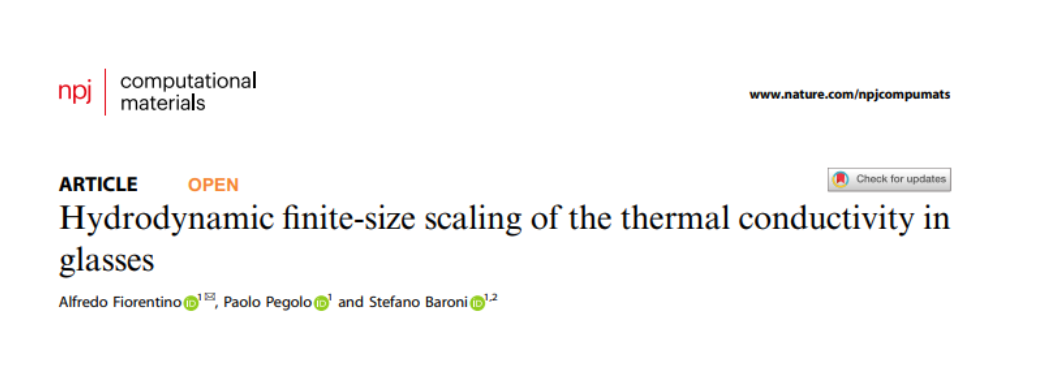
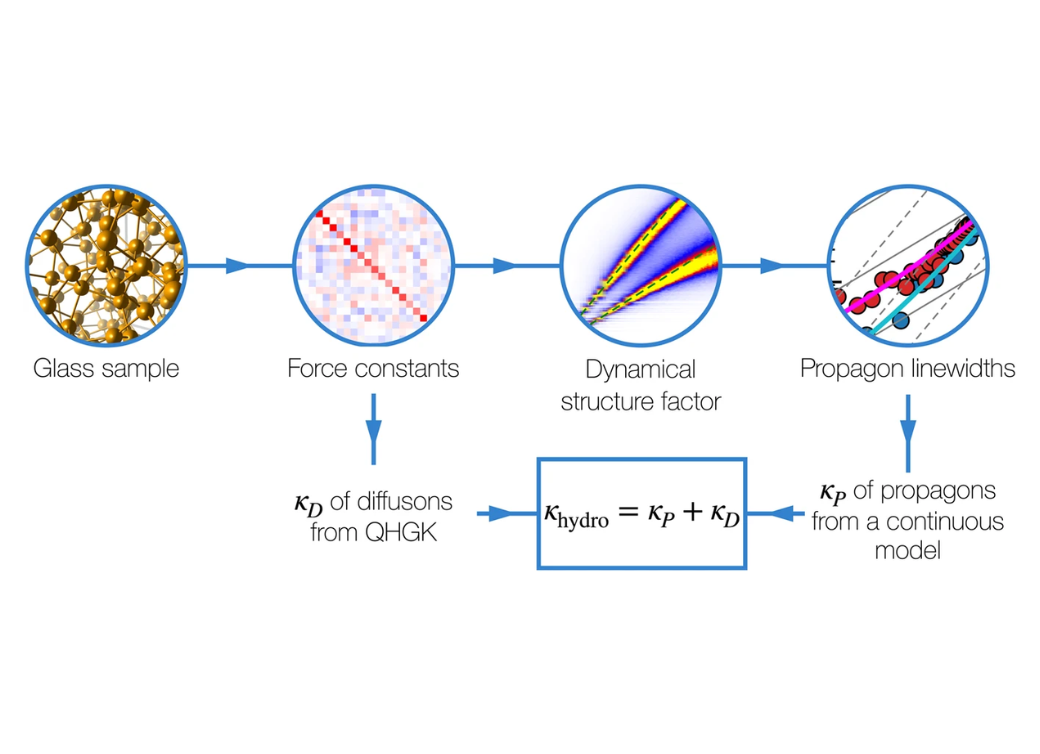
A. Fiorentino, P. Pegolo, and S. Baroni , Hydrodynamic finite-size scaling of the thermal conductivity in glasses, npj Computational Materials 9,157 (2023)
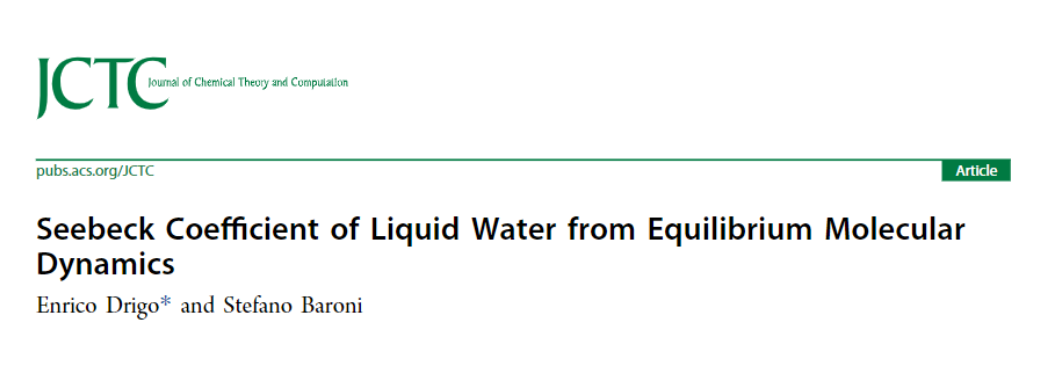
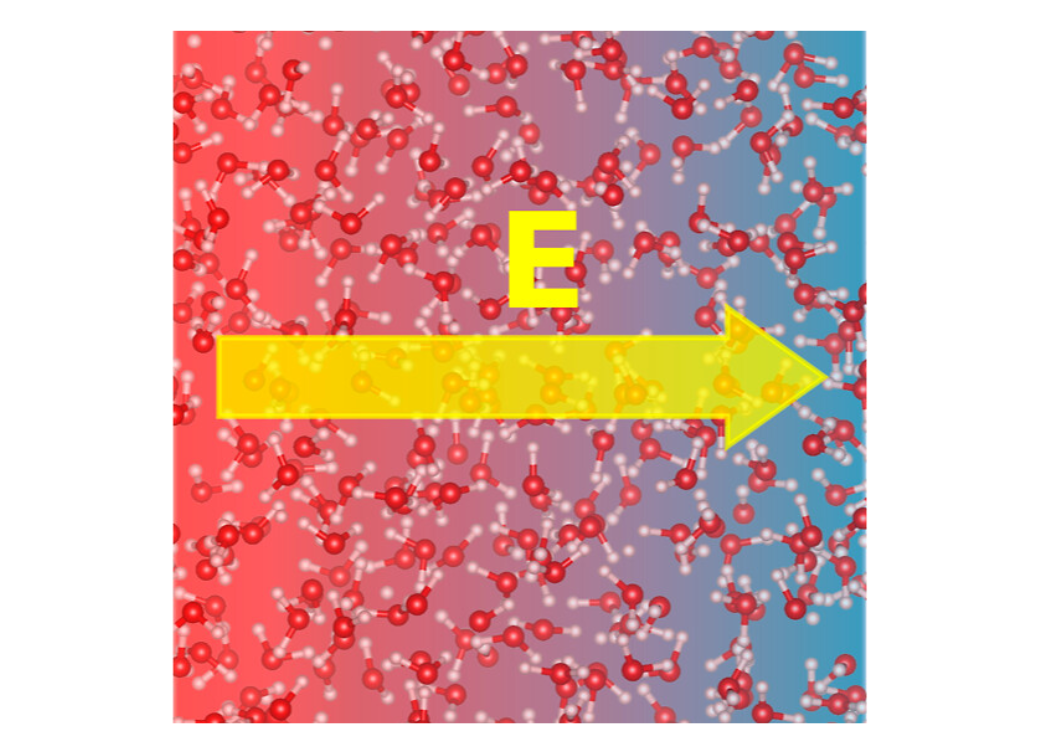
E. Drigo and S. Baroni, Seebeck Coefficient of Liquid Water from Equilibrium Molecular Dynamics, J. Chem. Theory Comput. 2023, 19, 23, 8855–8860 (2023).
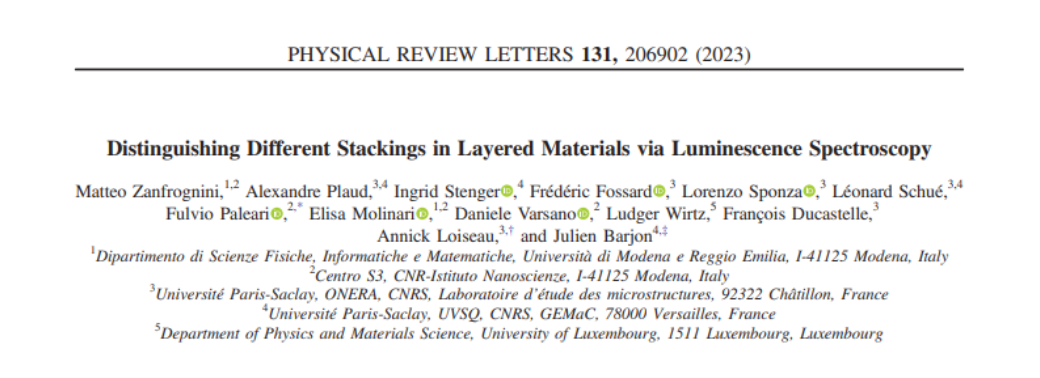
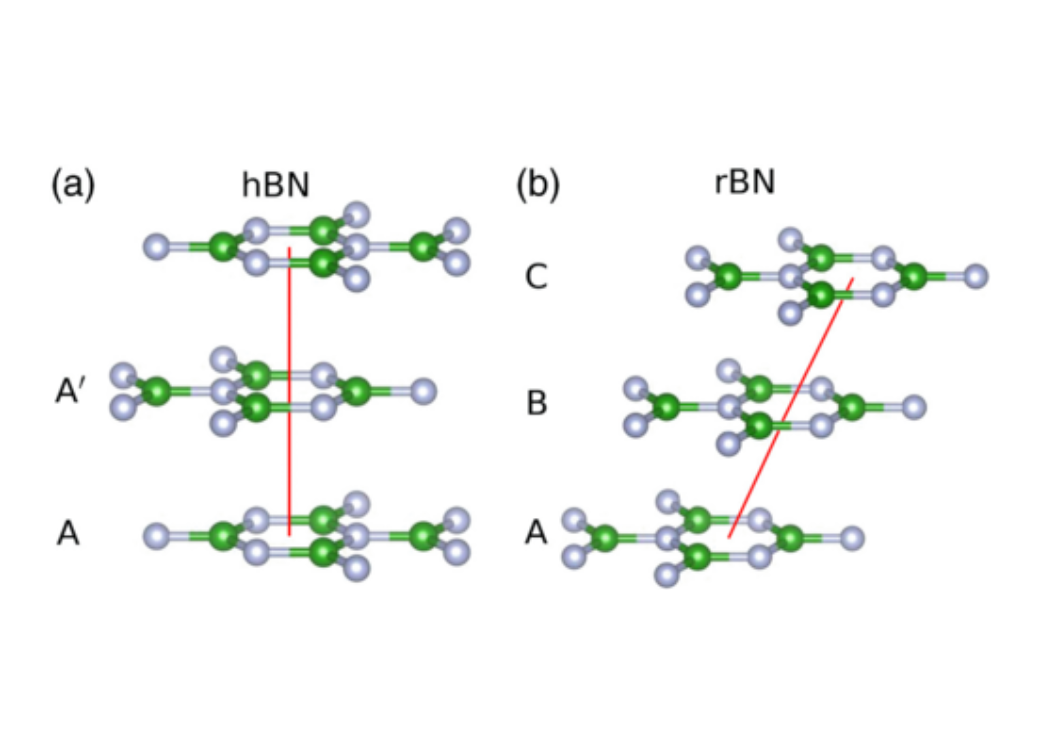
M. Zanfrognini, A. Plaud, I. Stenger, F. Fossard, L. Sponza, L. Schué, F. Paleari, E. Molinari, D. Varsano, L. Wirtz, F. Ducastelle, A. Loiseau, and J. Barjon, Distinguishing different stackings in layered materials via luminescence spectroscopy, Phys. Rev. Lett. 131, 206902 (2023)

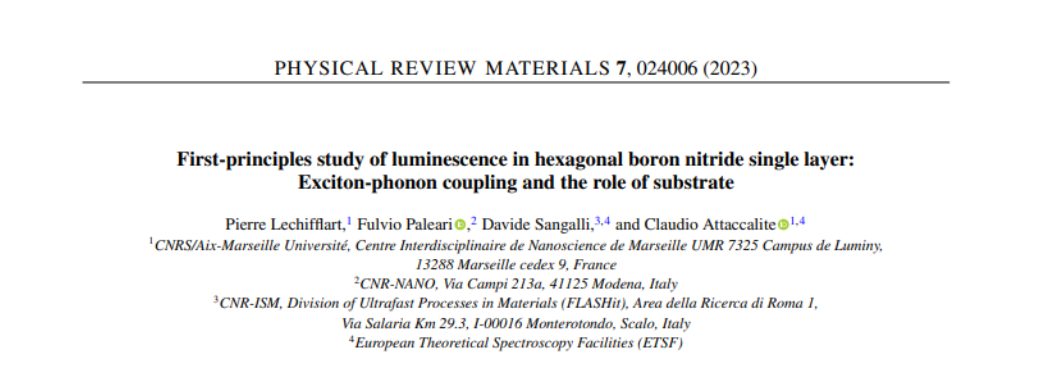
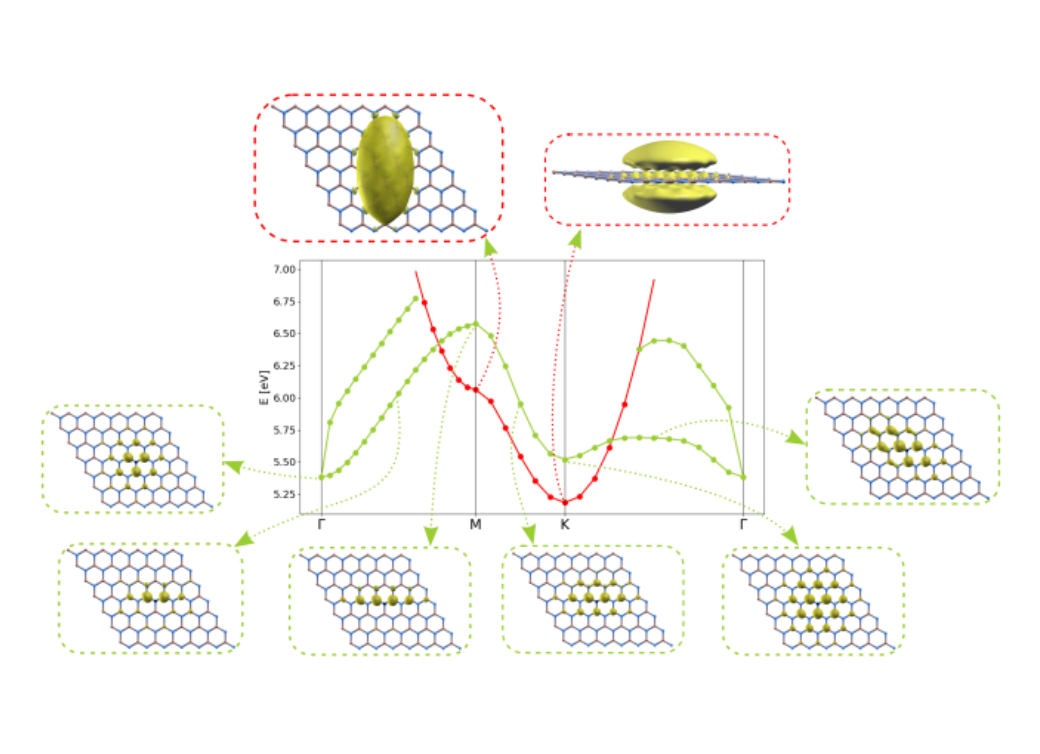
P. Lechifflart, F. Paleari, D. Sangalli, and C. Attaccalite, First-principles study of luminescence in hexagonal boron nitride single layer: Exciton-phonon coupling and the role of substrate, Phys. Rev. Materials 7, 024006 (2023)

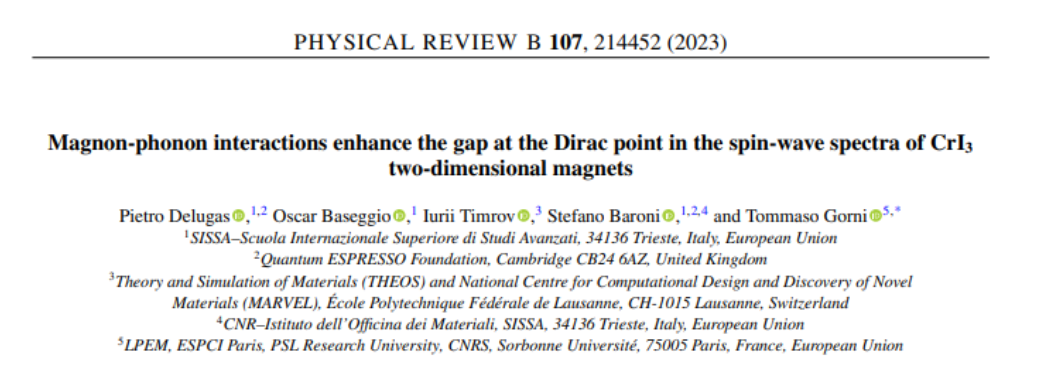
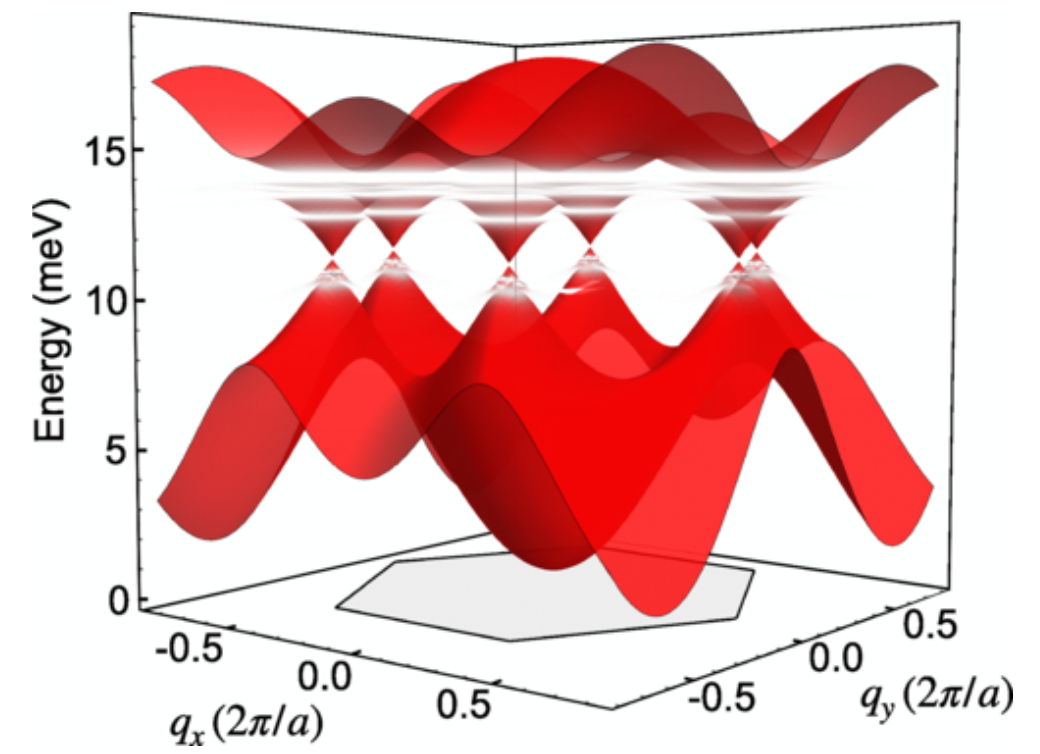
P. Delugas, O. Baseggio, I. Timrov, S. Baroni, and T. Gorni, Magnon-phonon interactions enhance the gap at the Dirac point in the spin-wave spectra of CrI3 two-dimensional magnets, Phys. Rev. B 107, 214452 (2023)
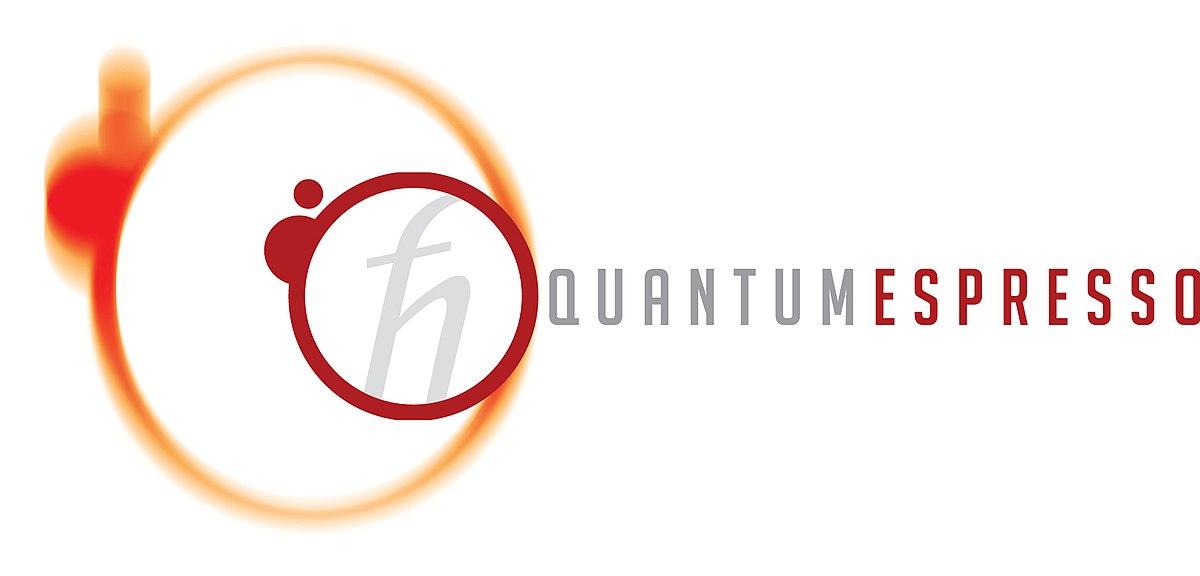
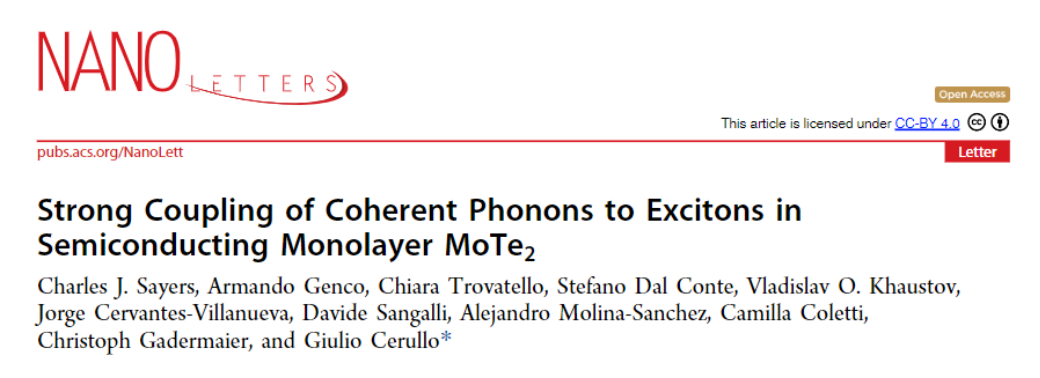
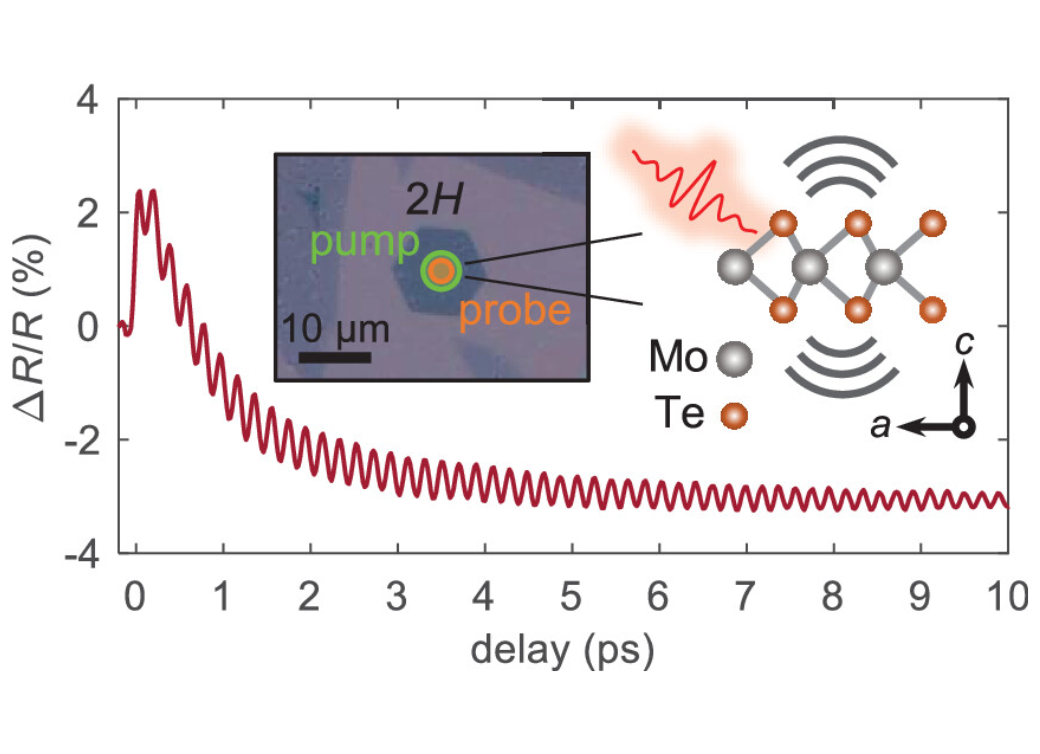
C. J. Sayers, A. Genco, C. Trovatello, S. Dal Conte, V. O. Khaustov, J. Cervantes-Villanueva, D. Sangalli, A. Molina-Sanchez, C. Coletti, C. Gadermaier, and G. Cerullo, Strong Coupling of Coherent Phonons to Excitons in Semiconducting Monolayer MoTe2, Nano Lett. 2023, 23, 20, 9235–9242 (2023)
© 2023 The Authors. Published by American Chemical Society. This publication is licensed under CC-BY 4.0.

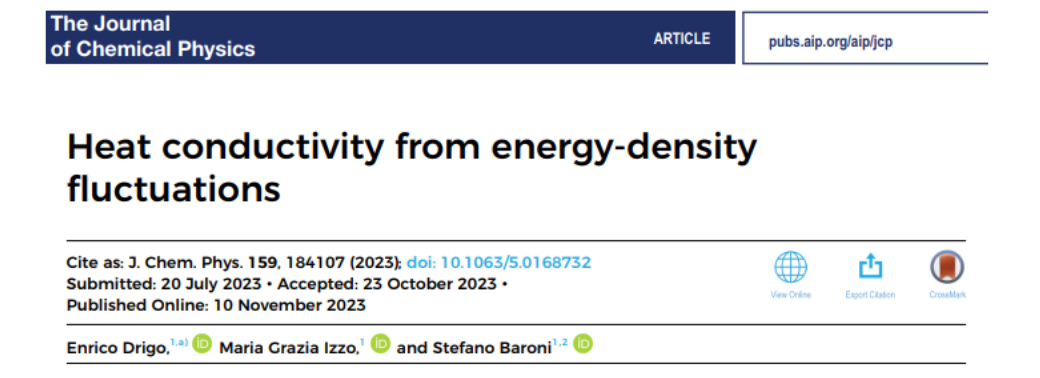
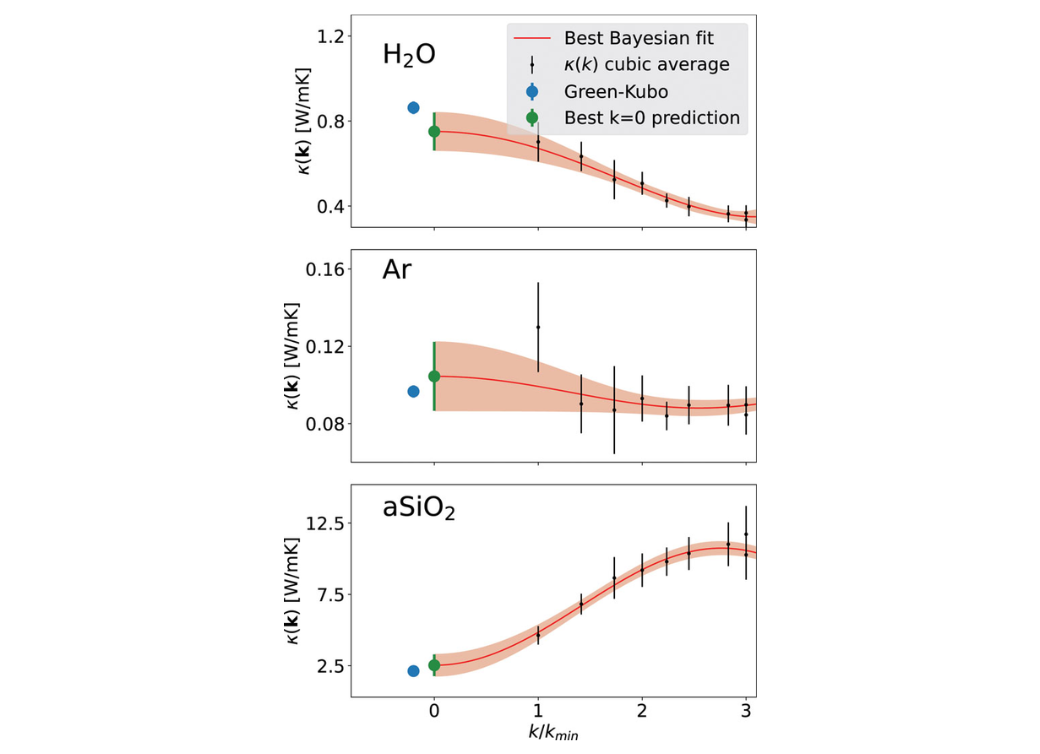
E. Drigo, M. G. Izzo, and S. Baroni, Heat conductivity from energy-density fluctuations, J. Chem. Phys. 159, 184107 (2023)
© 2023 Author(s). All article content, except where otherwise noted, is licensed under a Creative Commons Attribution (CC BY) license.
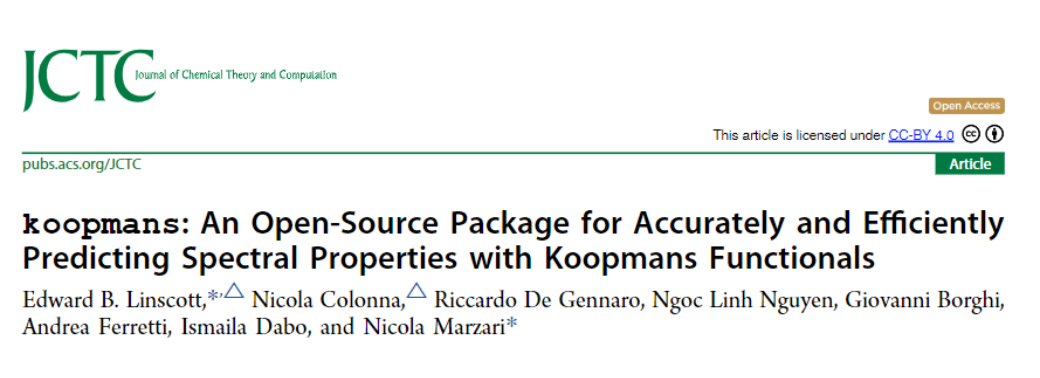
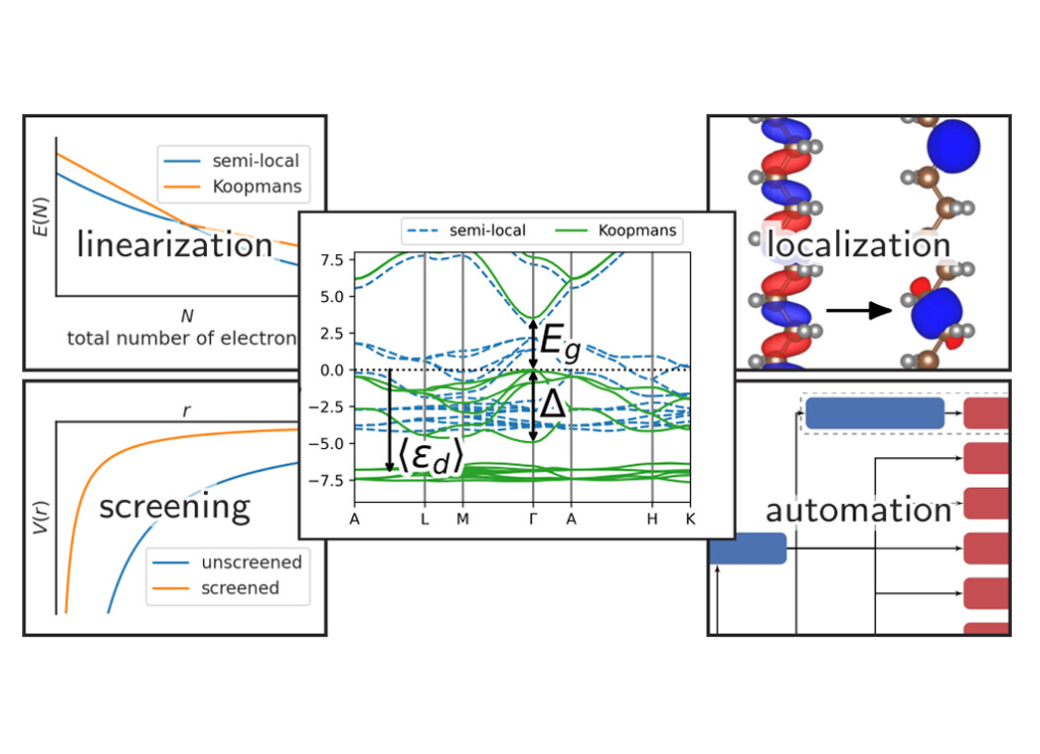
E. B. Linscott, N. Colonna, R. De Genanro, N. L. Nguyen, G. Borghi, and A. Ferretti, koopmans: An Open-Source Package for Accurately and Efficiently Predicting Spectral Properties with Koopmans Functionals, J. Chem. Theory Comput. 2023, 19, 20, 7097–7111 (2023)
© 2023 The Authors.
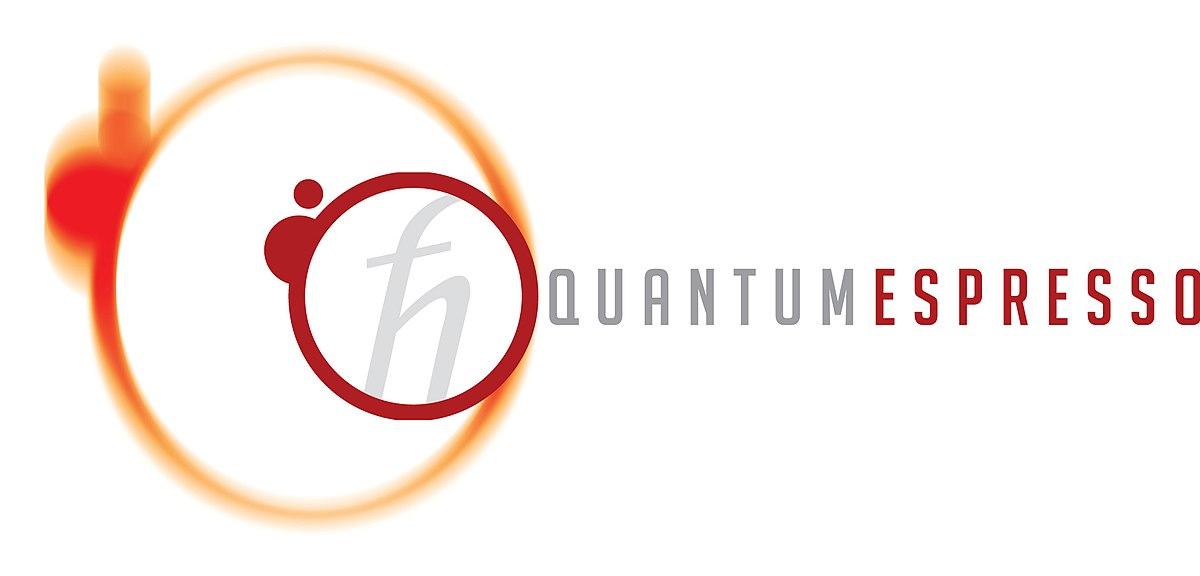
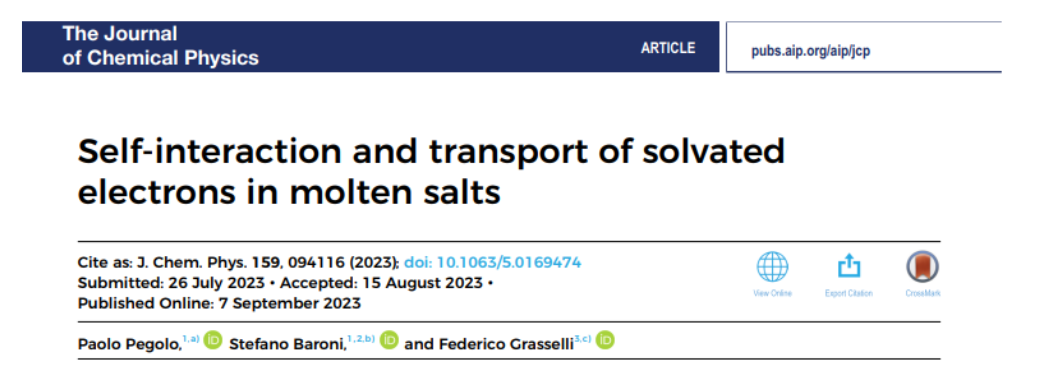
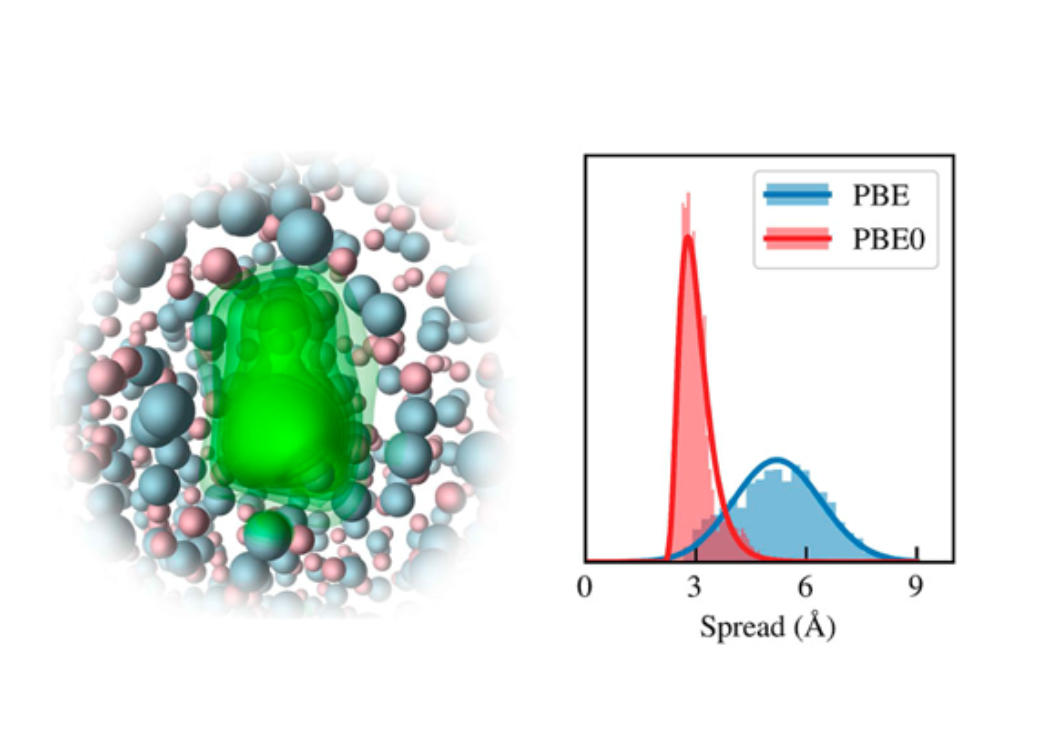
P. Pegolo, S. Baroni, and F. Grasselli, Self-interaction and transport of solvated electrons in molten salts, J. Chem. Phys. 159, 094116 (2023)
© 2023 Author(s). All article content, except where otherwise noted, is licensed under a Creative Commons Attribution (CC BY) license.
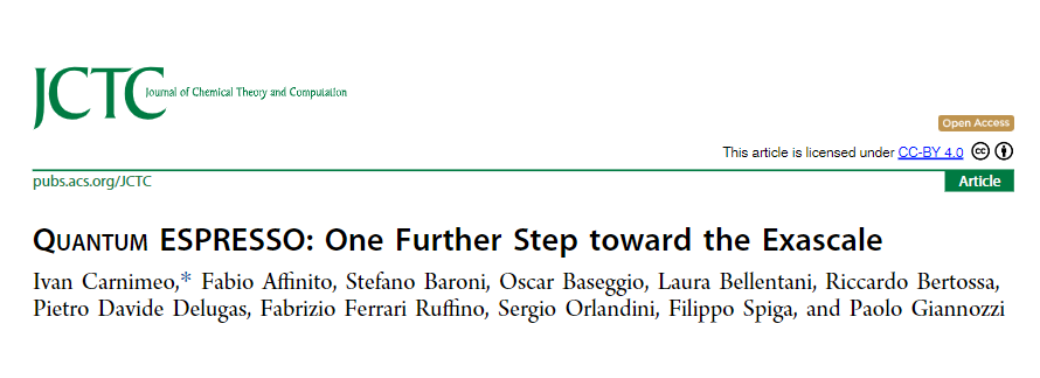
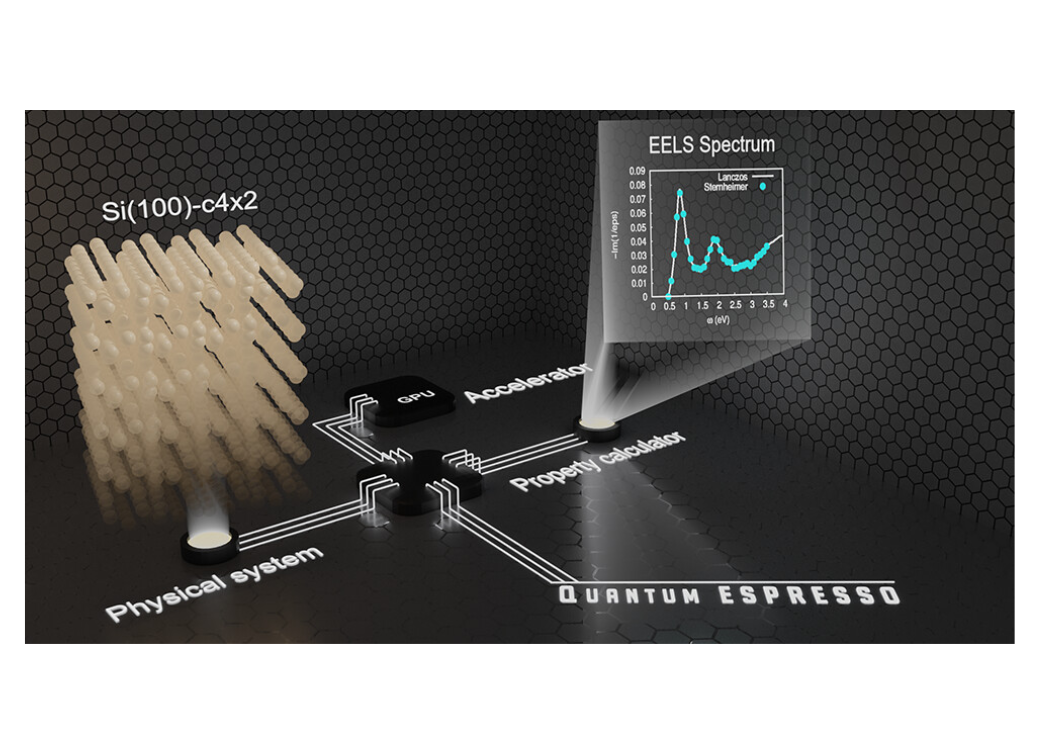
I. Carnimeo, F. Affinito, S. Baroni, O. Baseggio, L. Bellentani, R. Bertossa, P. D. Delugas, F. Ferrari Ruffino, S. Orlandini, F. Spiga, and P. Giannozzi, QUANTUM ESPRESSO: One Further Step toward the Exascale, J. Chem. Theory Comput. 2023, 19, 20, 6992–7006 (2023)
Copyright © 2023 The Authors. Published by American Chemical Society. This publication is licensed under CC-BY 4.0.
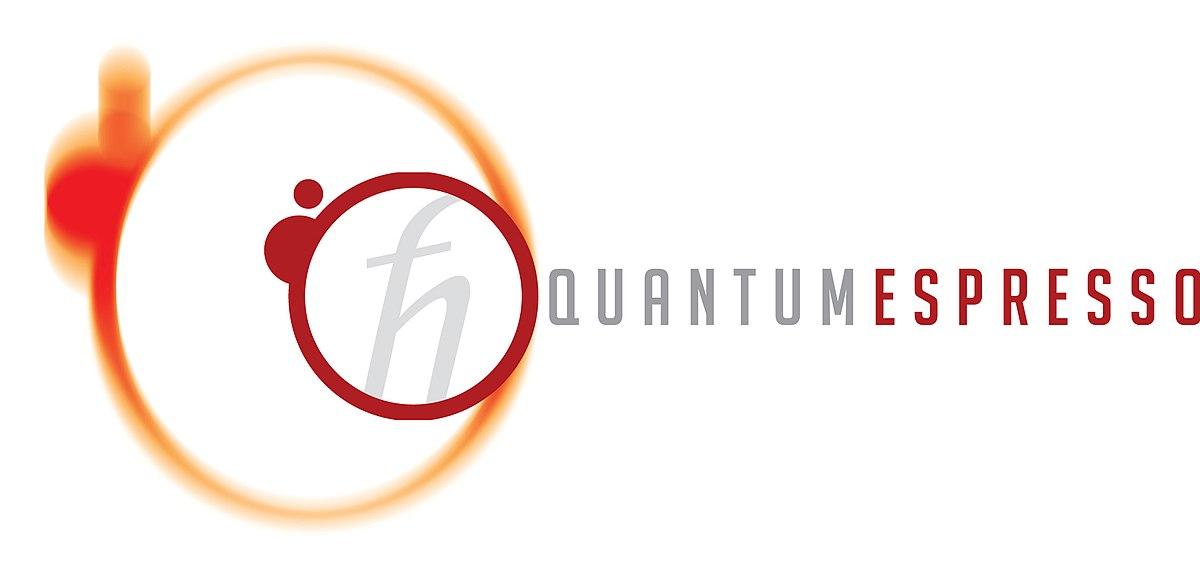
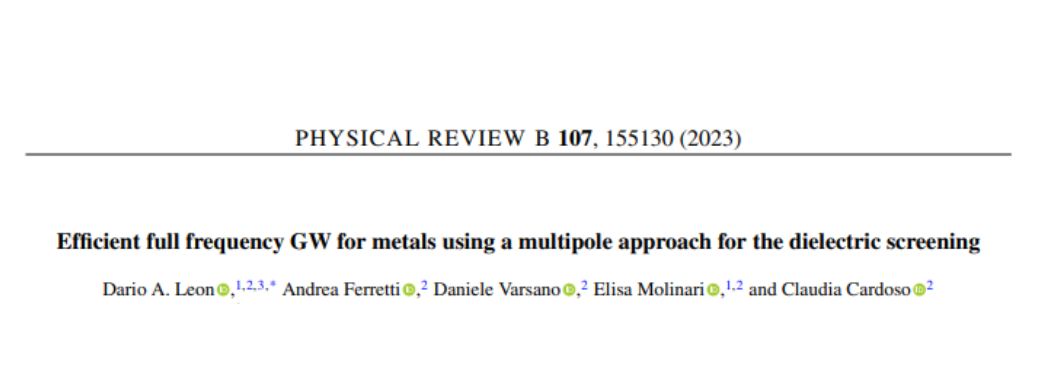
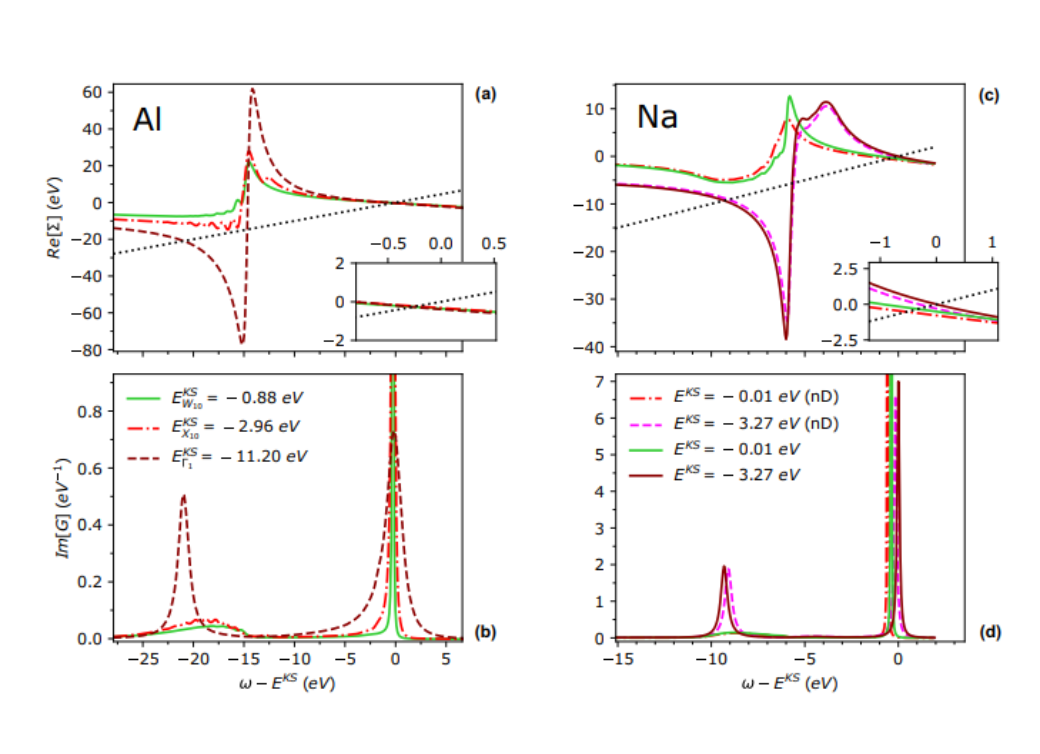
D. A. Leon, A. Ferretti, D. Varsano, E. Molinari, and C. Cardoso, Efficient full frequency GW for metals using a multipole approach for the dielectric screening, Phys. Rev. B 107, 155130 (2023)

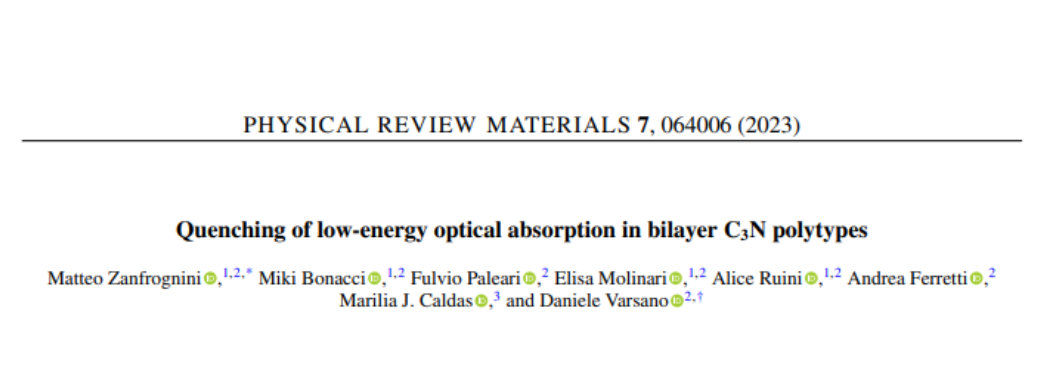
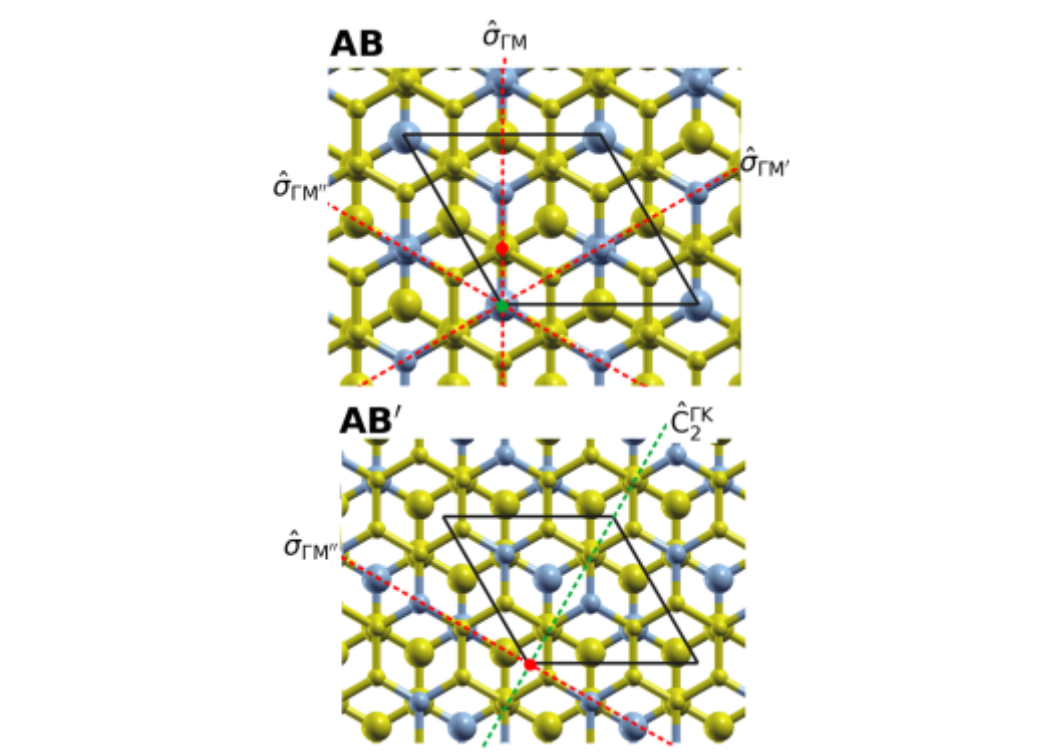
M. Zanfrognini, M. Bonacci, F. Paleari, E. Molinari, A. Ruini, A. Ferretti, M. J. Caldas, and D. Varsano, Quenching of low-energy optical absorption in bilayer C3N polytypes, Phys. Rev. Materials 7, 064006 (2023)

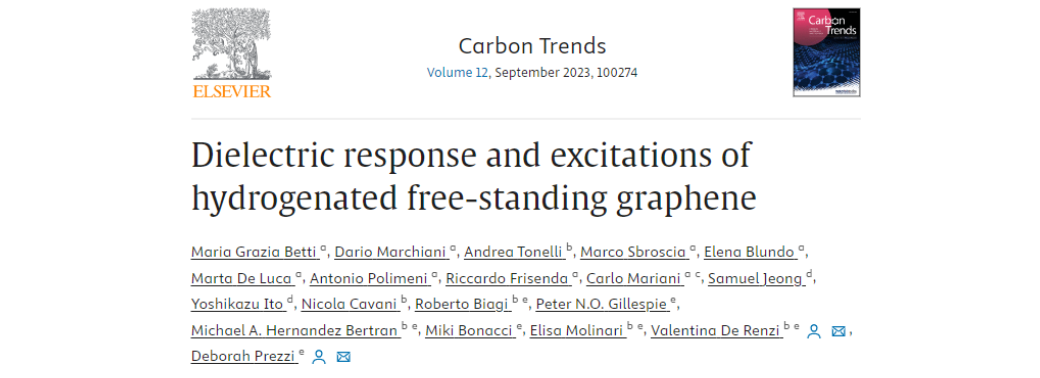
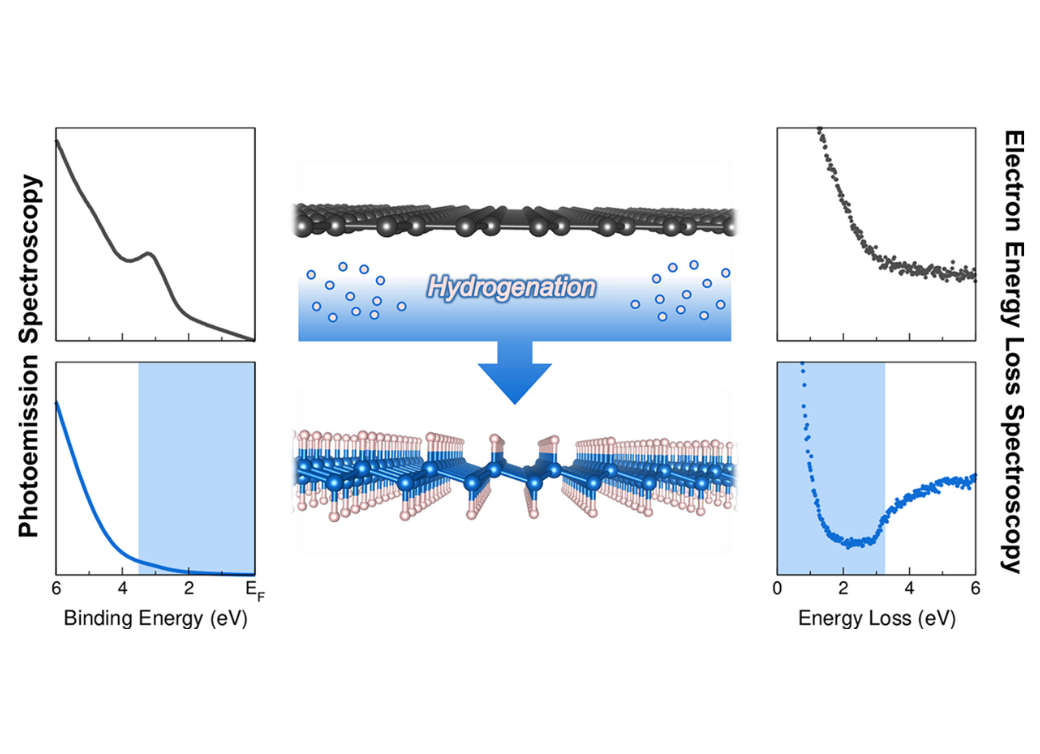
M. G. Betti a, D. Marchiani, A. Tonelli, M. Sbroscia, E. Blundo, M. De Luca, A. Polimeni, R. Frisenda, C. Mariani, S. Jeong, Y. Ito, N. Cavani, R. Biagi, P. N.O. Gillespie, M. A. Hernandez Bertran, M. Bonacci, E. Molinari, V. De Renzi, and D. Prezzi, Dielectric response and excitations of hydrogenated free-standing graphene, Carbon Trends, 12, 100274 (2023).
© 2023 The Authors.

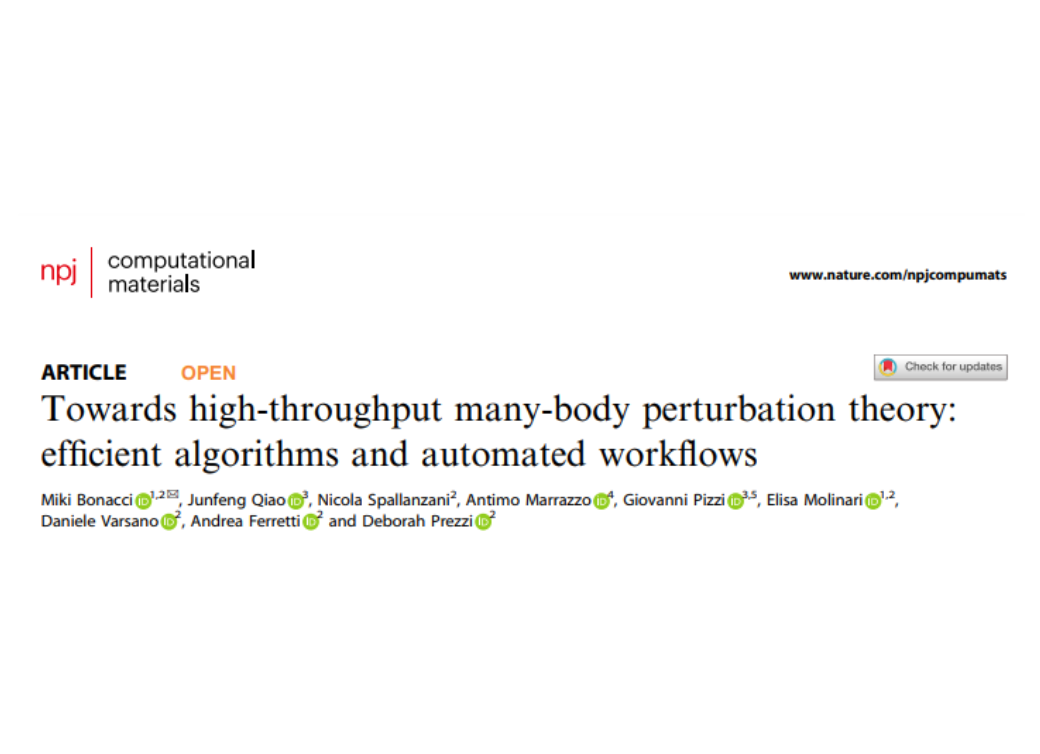
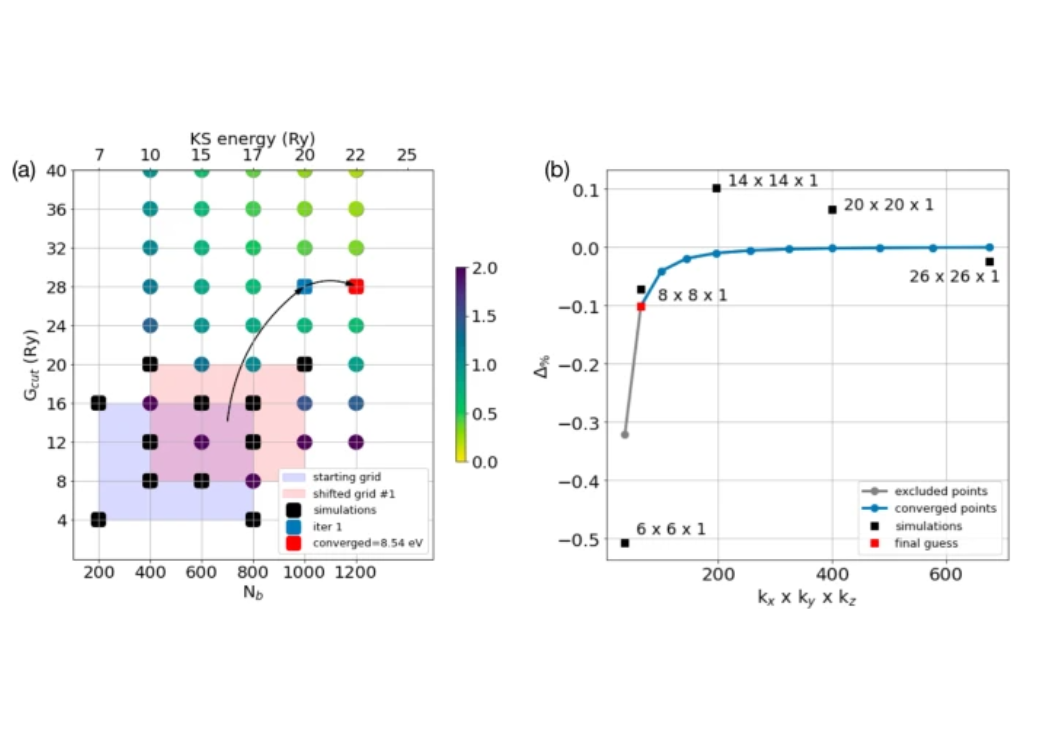
M. Bonacci, J. Qiao, N. Spallanzani, A. Marrazzo, G. Pizzi, E. Molinari, D. Varsano, A. Ferretti, and D. Prezzi, Towards high-throughput many-body perturbation theory: efficient algorithms and automated workflows. npj Comput Mater 9, 74 (2023)
© The Author(s) 2023

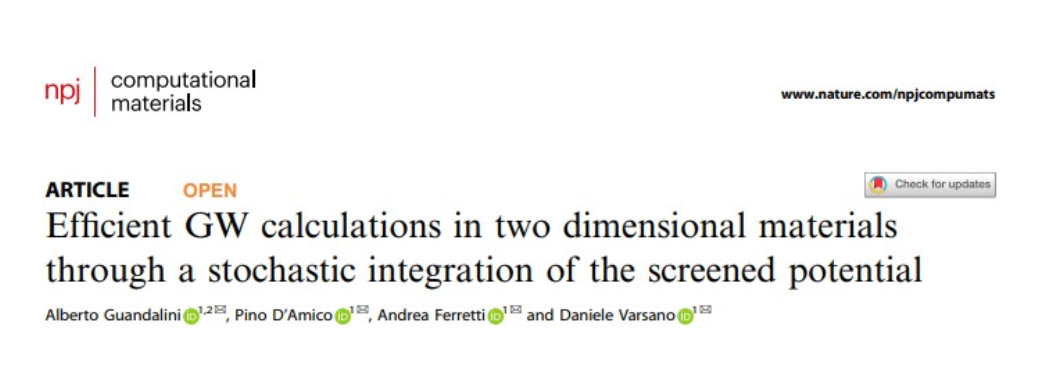
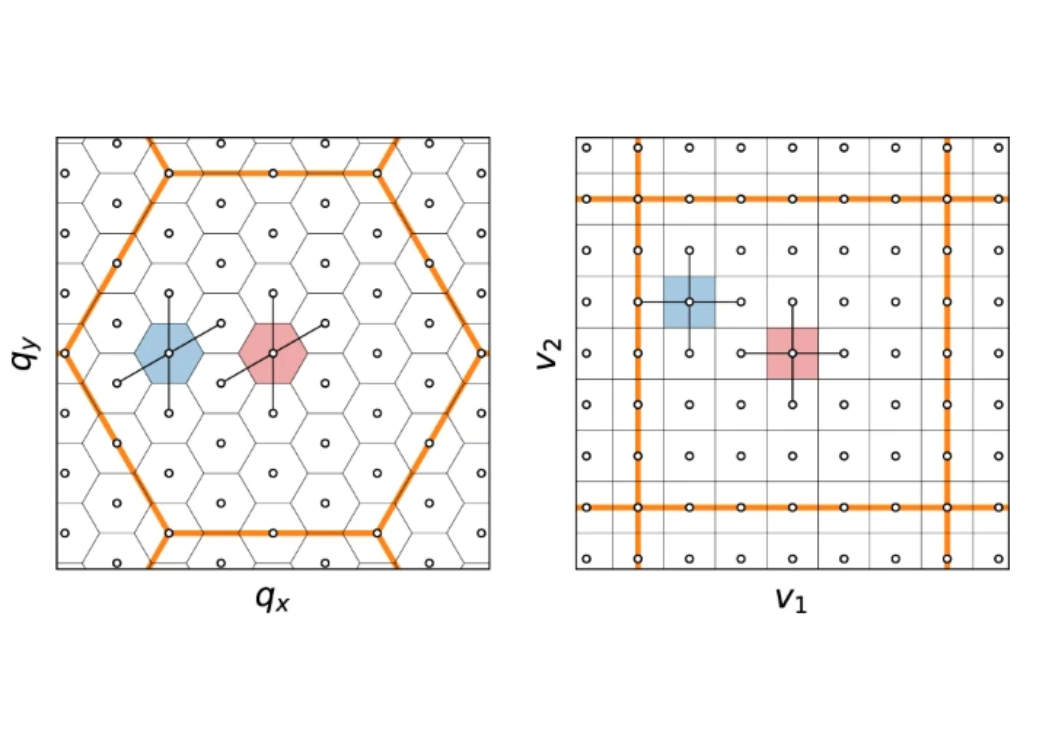
A. Guandalini, P. D'Amico, A. Ferretti, and D. Varsano, Efficient GW calculations in two dimensional materials through a stochastic integration of the screened potential. npj Comput Mater 9, 44 (2023).
© The Author(s) 2023
DOI: 10.1038/s41524-023-00989-7


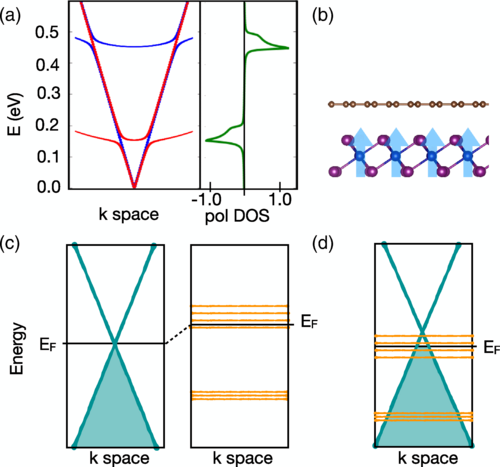
C. Cardoso , A. T. Costa, A. H. MacDonald, and J. Fernández-Rossier
Published by the American Physical Society under the terms of the Creative Commons Attribution 4.0 International license. Further distribution of this work must maintain attribution to the author(s) and the published article’s title, journal citation, and DOI.

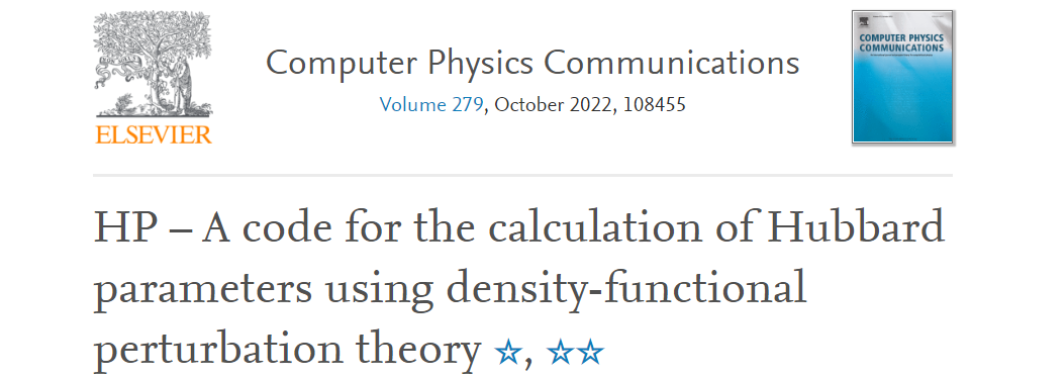
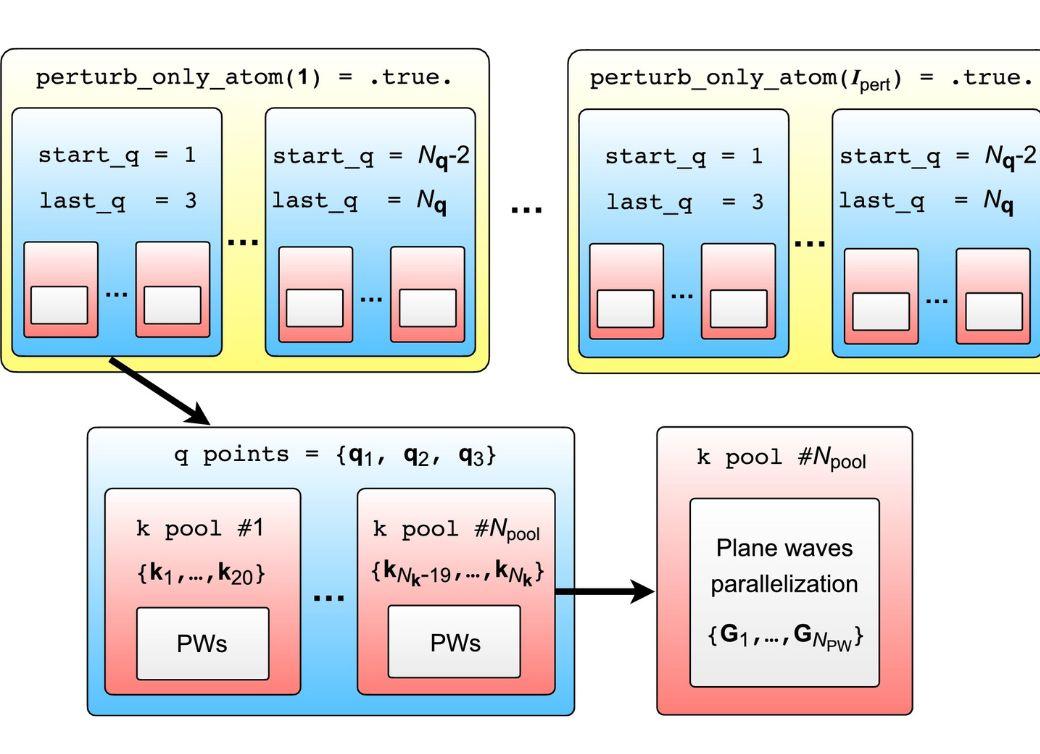
Iurii Timrov, Nicola Marzari, Matteo Cococcioni
© 2022, The Author(s)

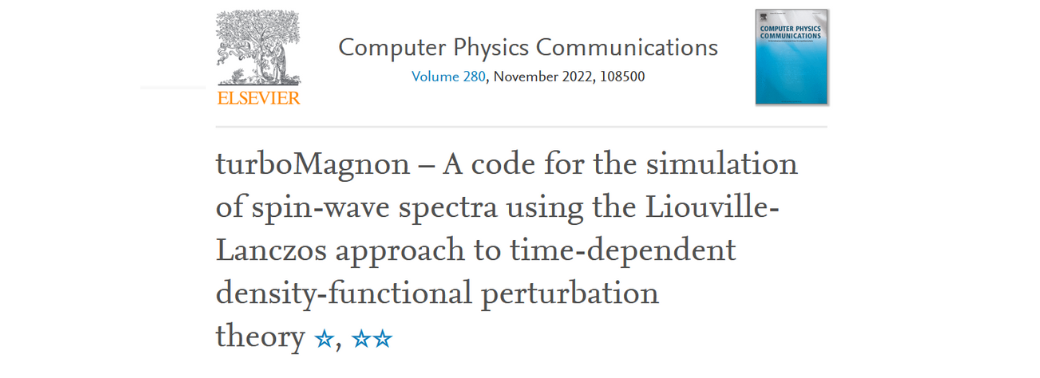
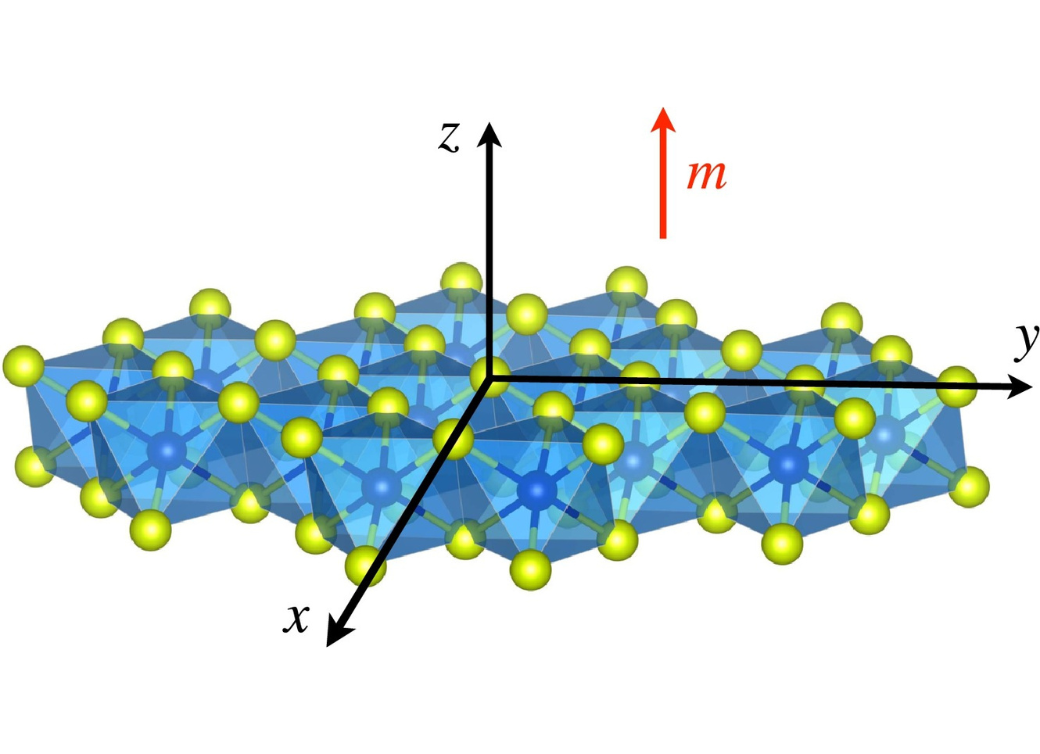
T. Gornia, O. Baseggio, P. Delugas, S. Baroni, and I. Timrov
© 2022, The Author(s)

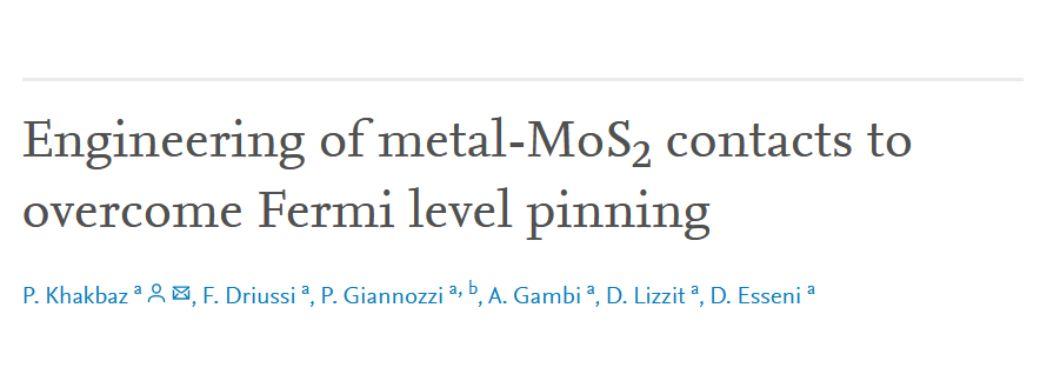
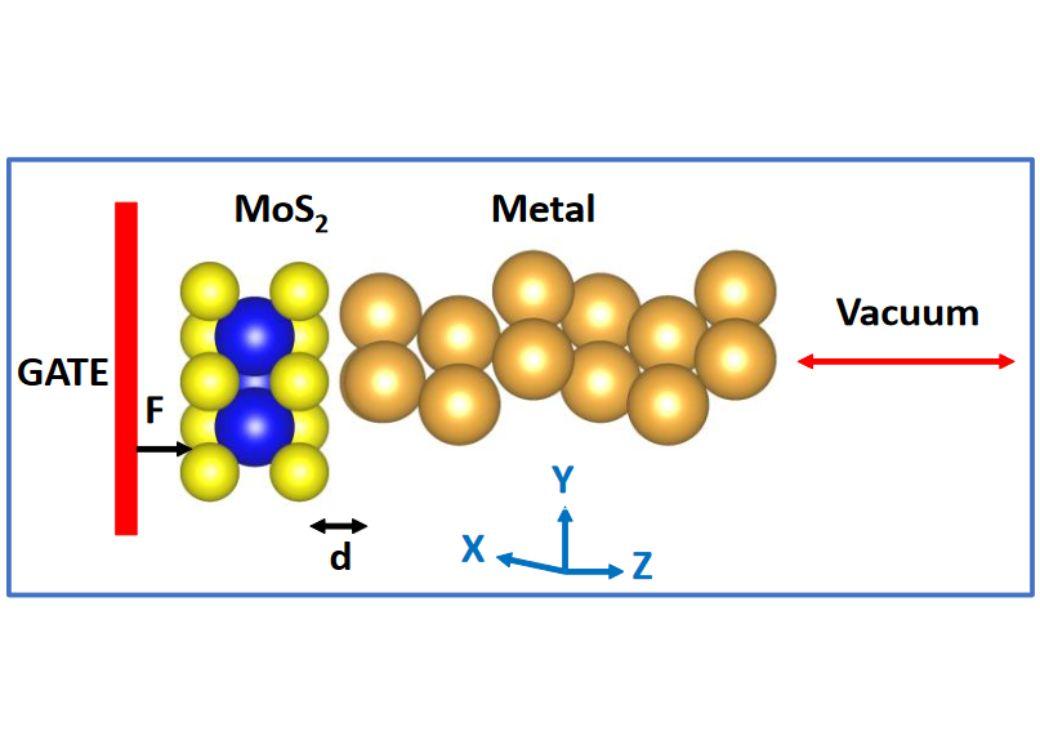
P.Khakbaz, F.Driussi, P.Giannozzi, A.Gambi, D.Lizzit, D.Esseni
© 2022, The Author(s)

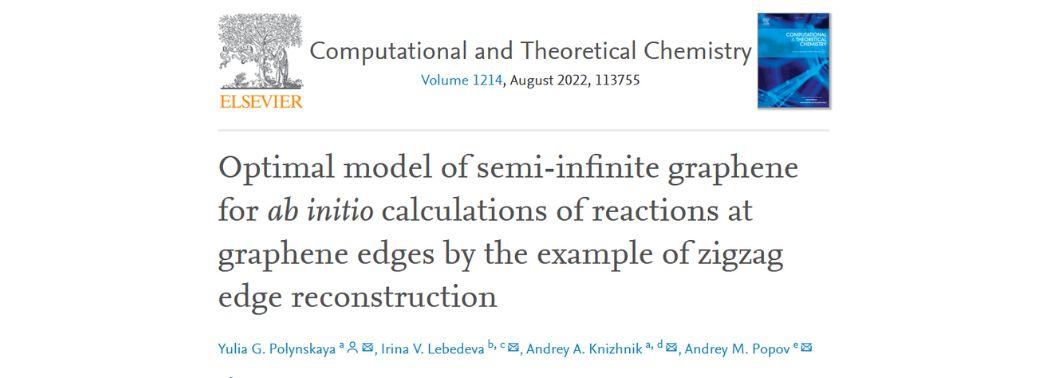
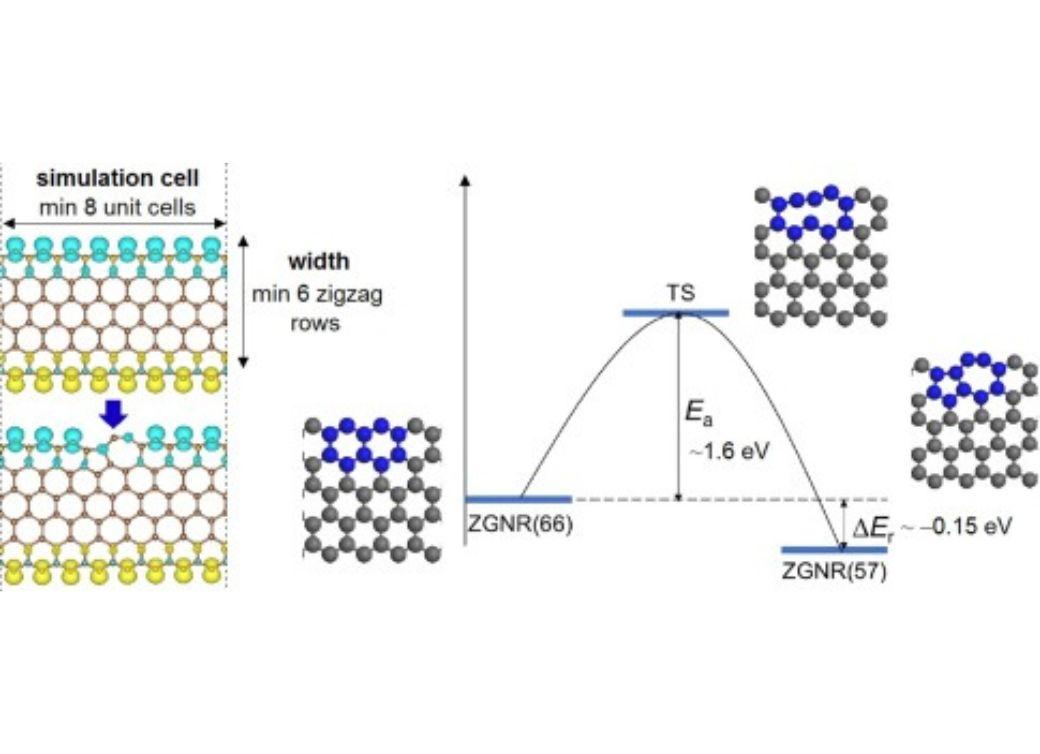
Yulia G.Polynskaya, Irina V.Lebedeva, Andrey A.Knizhnik, Andrey M.Popov
© 2022, The Author(s)
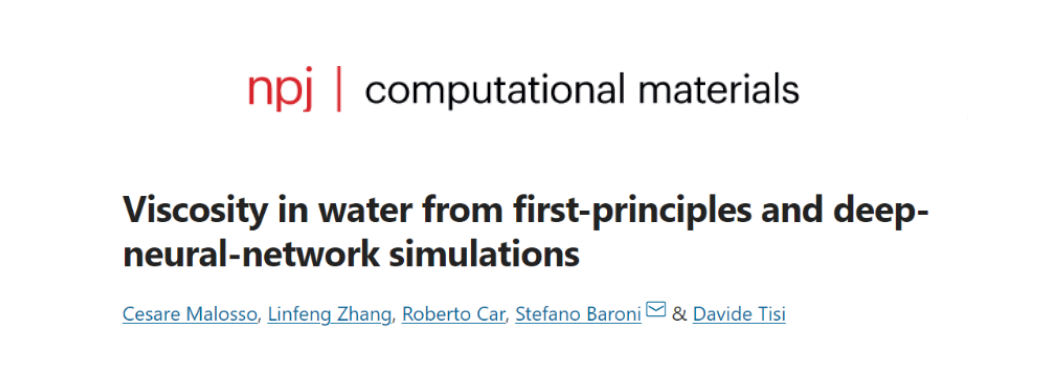
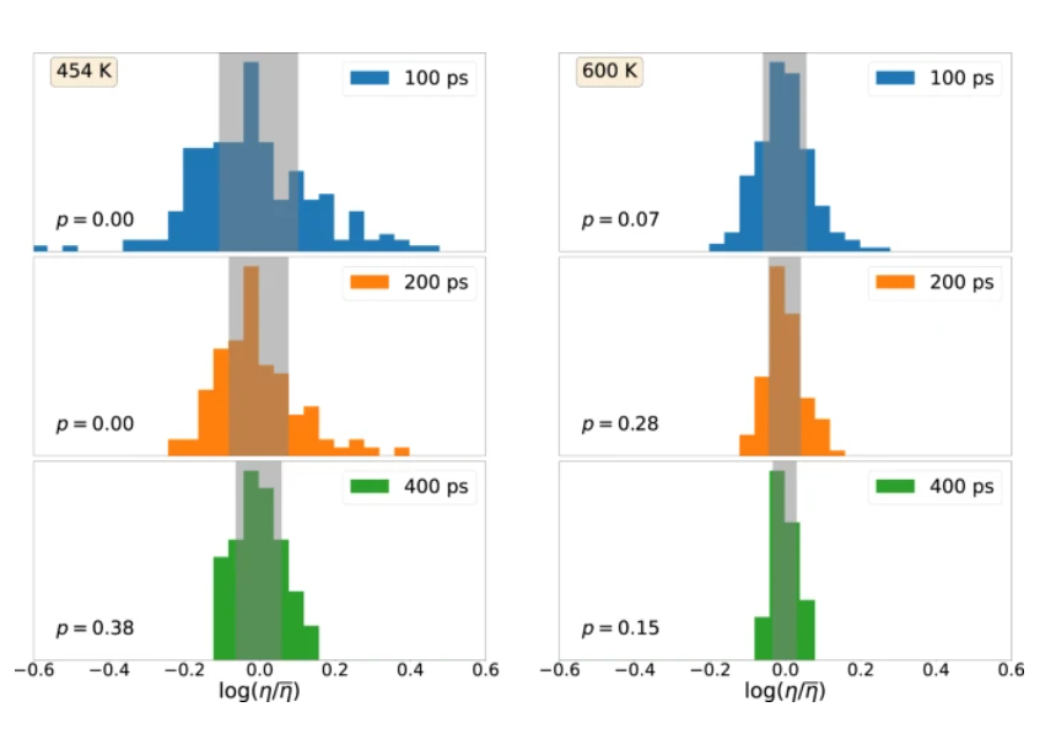
Malosso, C., Zhang, L., Car, R. et al. Viscosity in water from first-principles and deep-neural-network simulations. npj Comput Mater 8, 139 (2022)
© 2022, The Author(s)

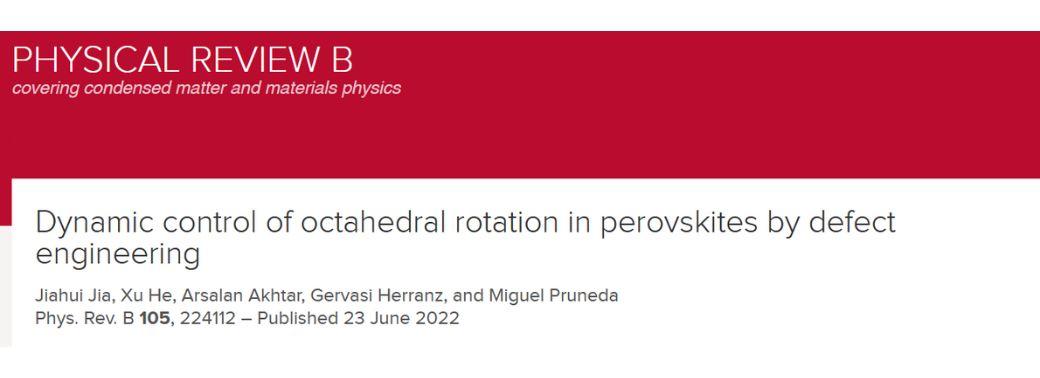
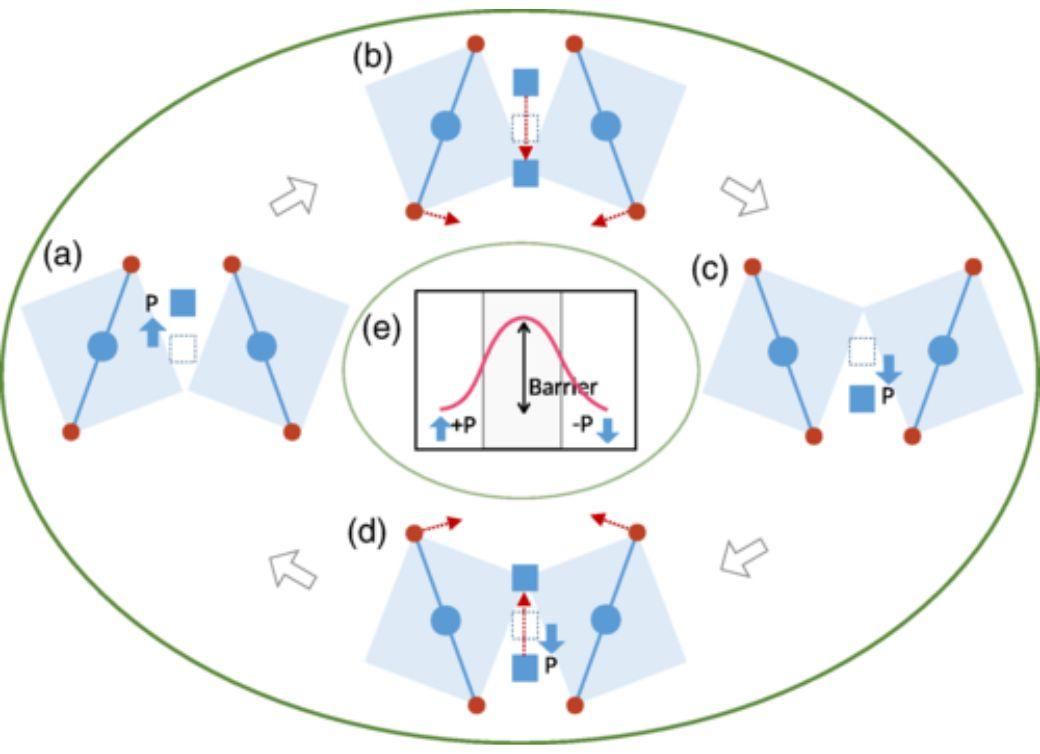
Jiahui Jia, Xu He, Arsalan Akhtar, Gervasi Herranz, and Miguel Pruneda Phys. Rev. B 105, 224112
© 2022, The Author(s)
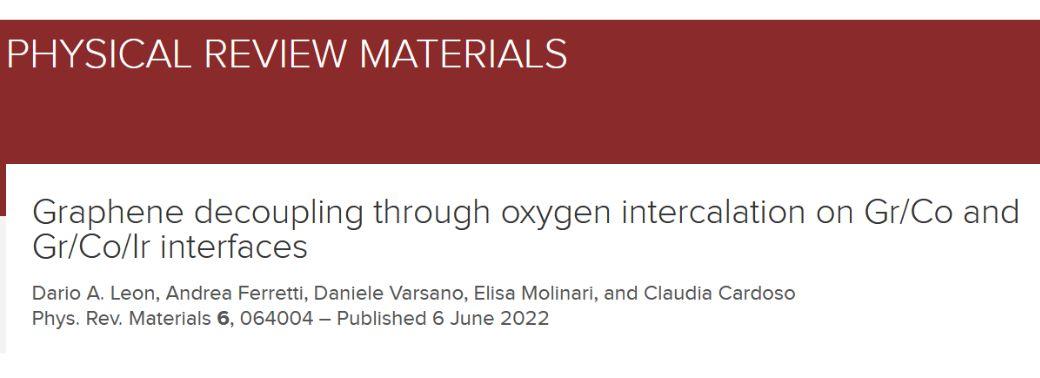
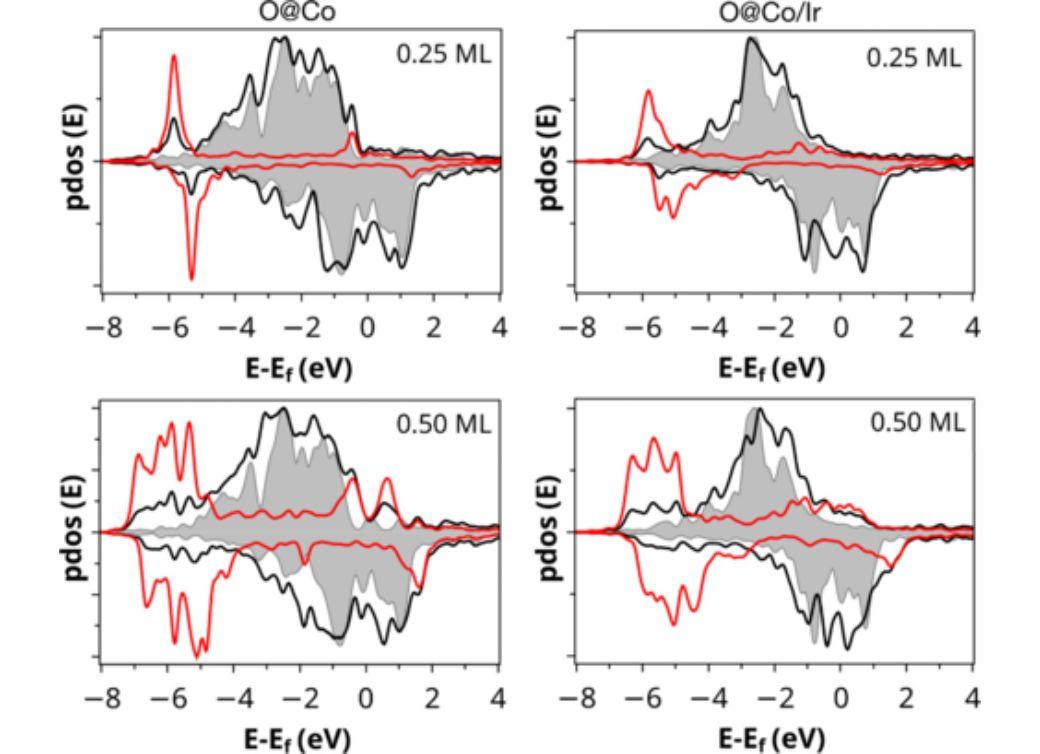
Dario A. Leon, Andrea Ferretti, Daniele Varsano, Elisa Molinari, and Claudia Cardoso Phys. Rev. Materials 6, 064004
© 2022, The Author(s)
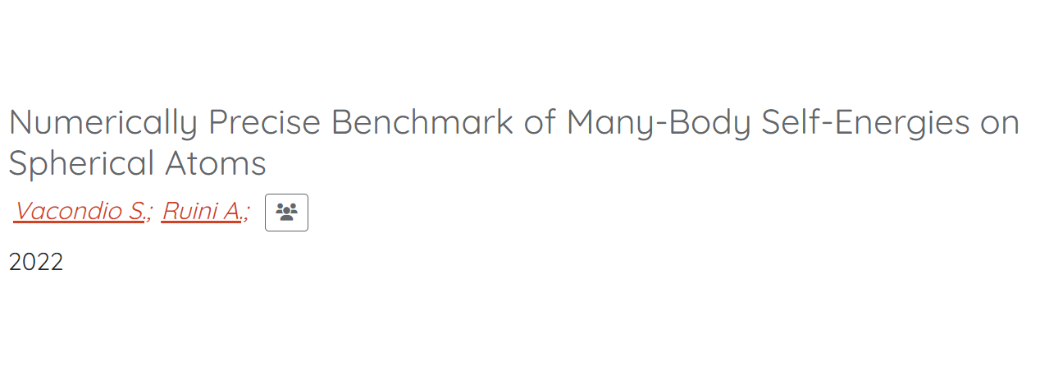
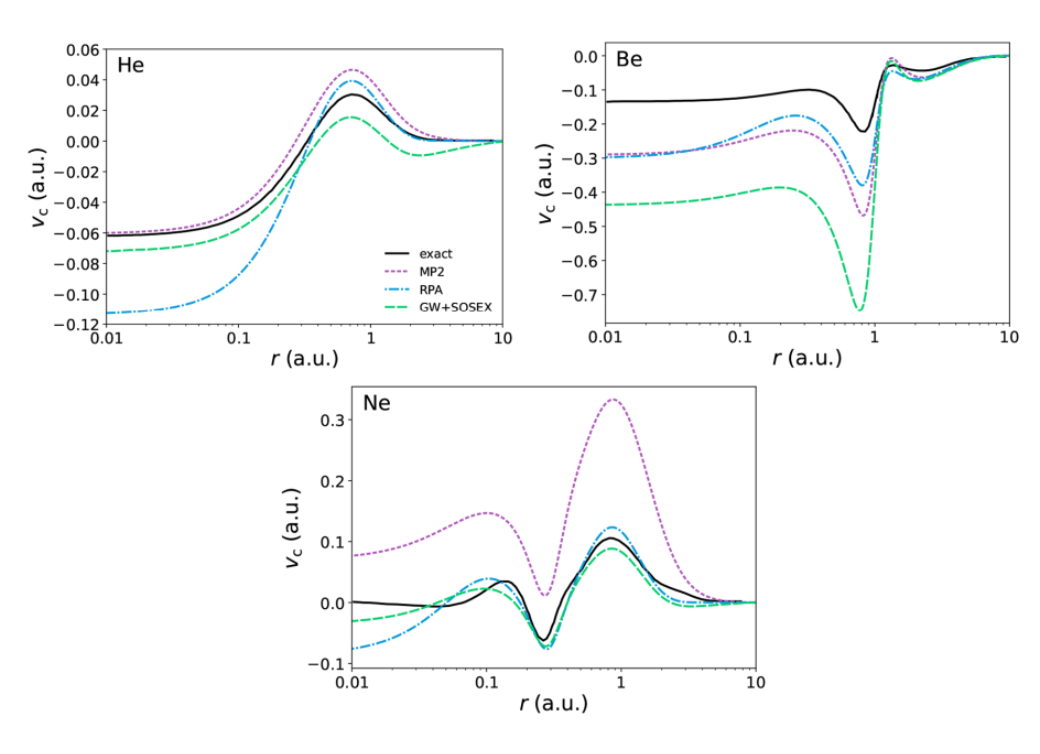
Vacondio, S.; Varsano, D.; Ruini, A.; Ferretti, A.. in: Journal of Chemical Theory and Computation - 18:6(2022)
© 2022, The Authors
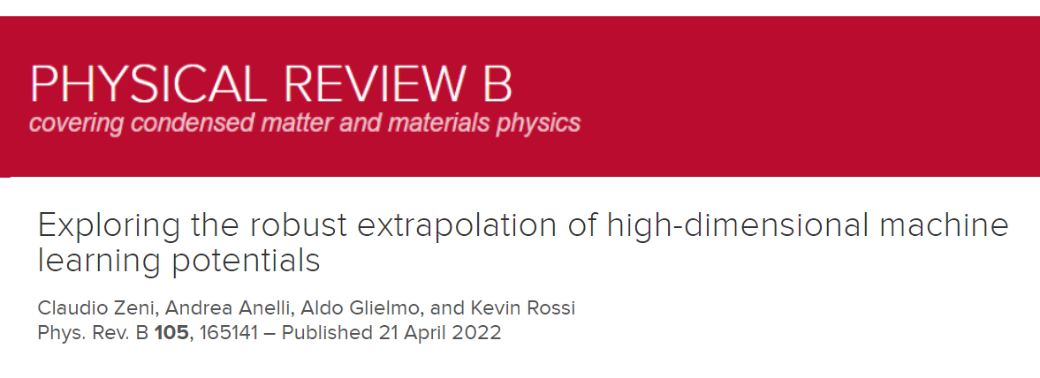
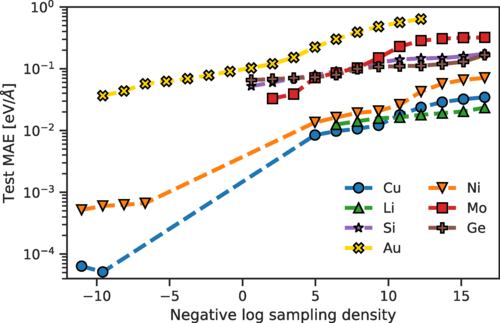
Claudio Zeni, Andrea Anelli, Aldo Glielmo, and Kevin Rossi, Phys. Rev. B 105, 165141
© 2022, The Author(s)
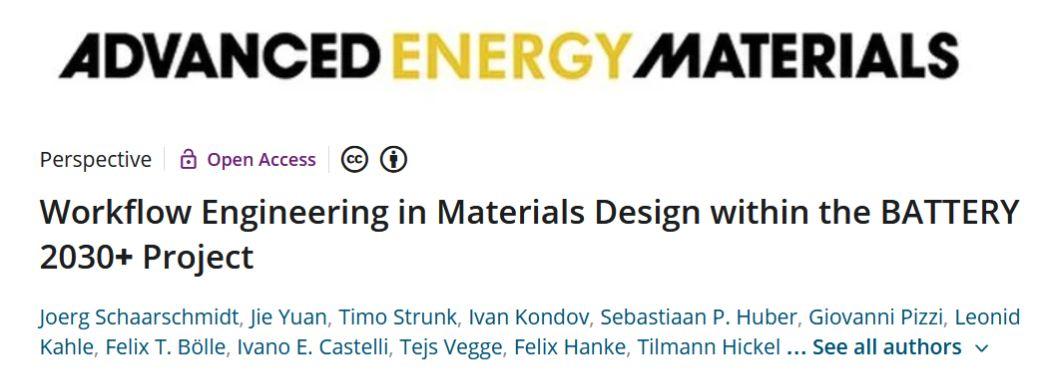
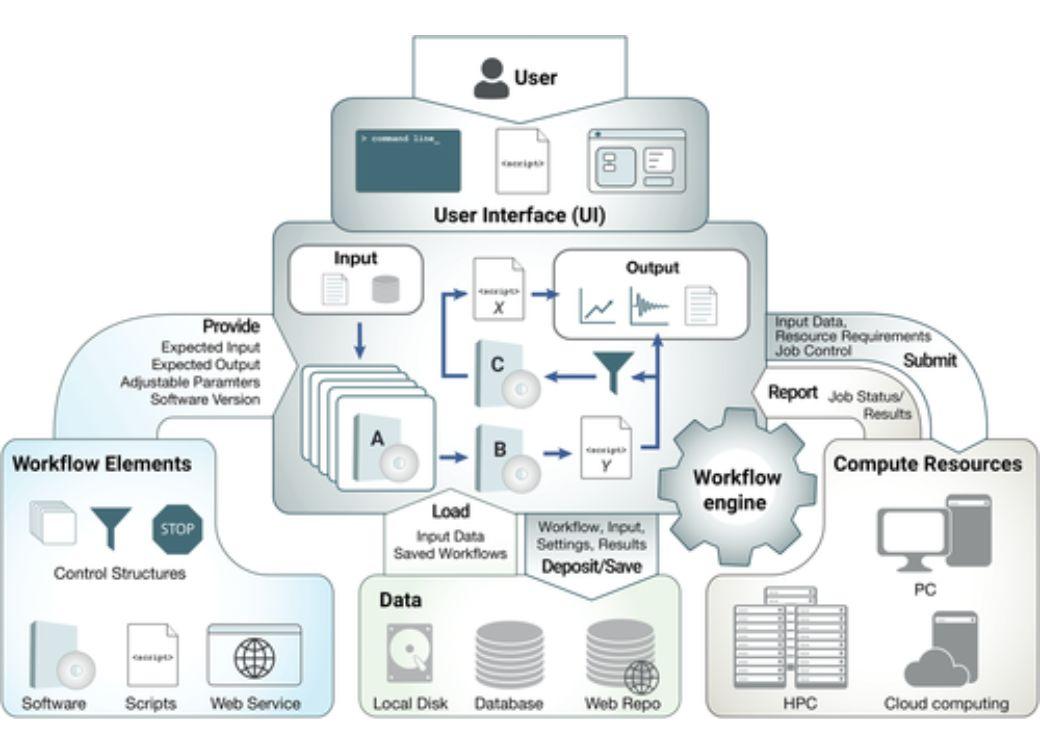
Joerg Schaarschmidt, Jie Yuan, Timo Strunk, Ivan Kondov, Sebastiaan P. Huber, Giovanni Pizzi, Leonid Kahle, Felix T. Bölle, Ivano E. Castelli, Tejs Vegge, Felix Hanke, Tilmann Hickel, Jörg Neugebauer, Celso R. C. Rêgo, Wolfgang Wenzel
© 2022, The Author(s)

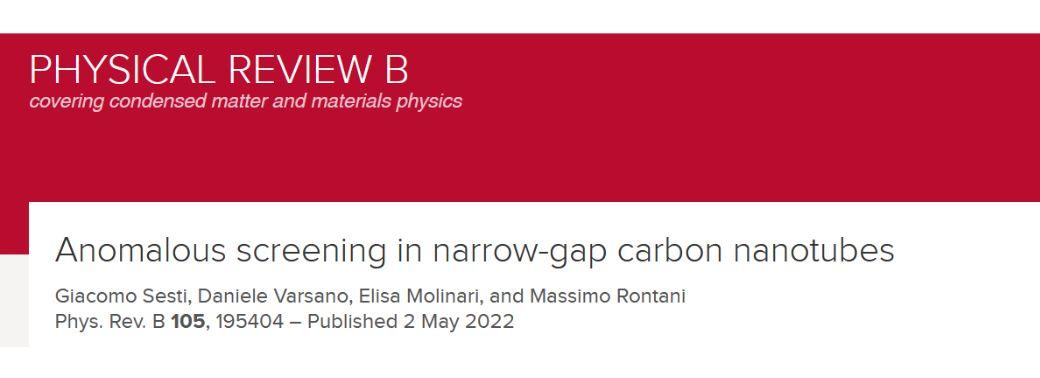
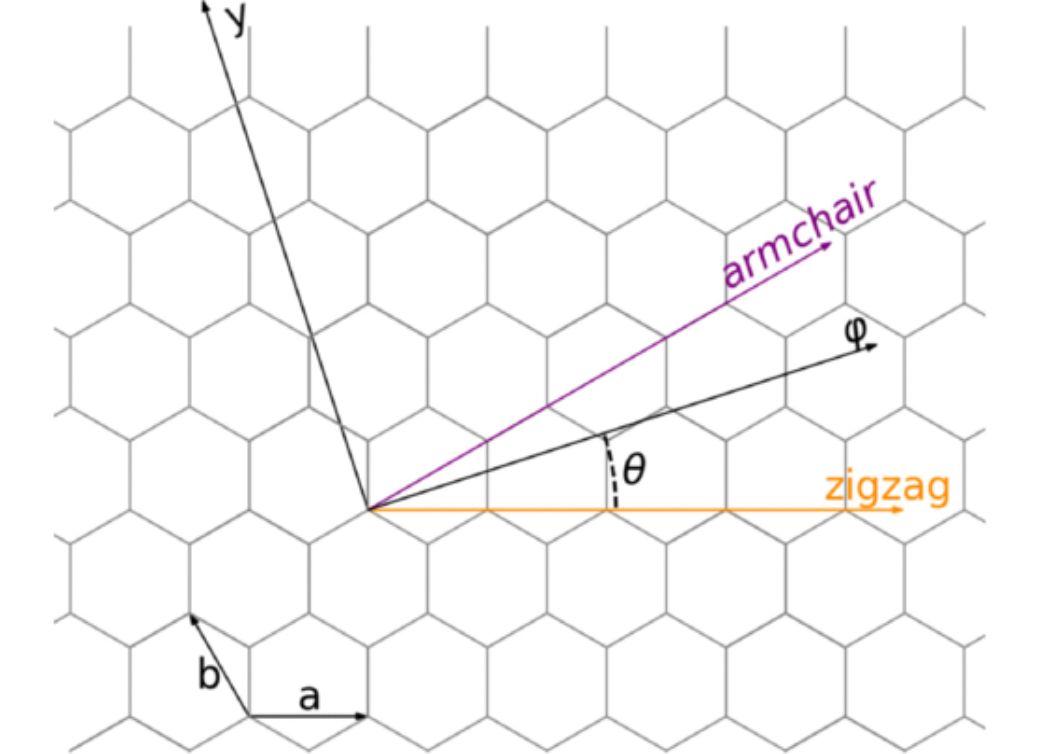
Giacomo Sesti, Daniele Varsano, Elisa Molinari, and Massimo Rontani Phys. Rev. B 105, 195404
© 2022, The Author(s)
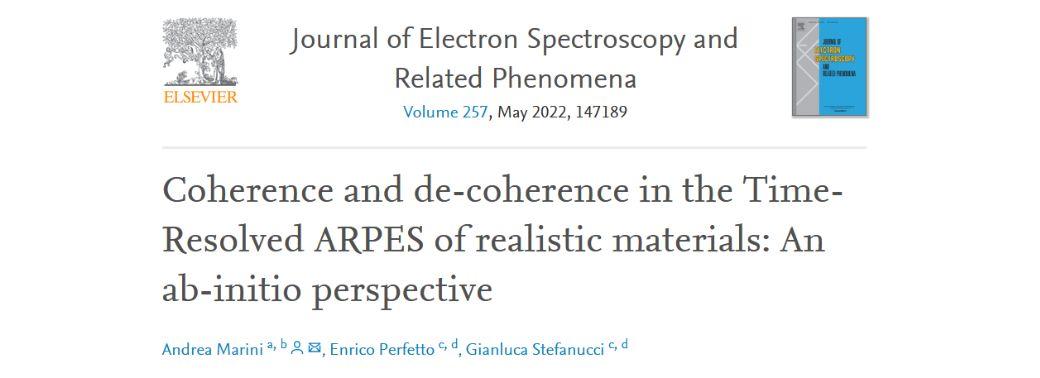
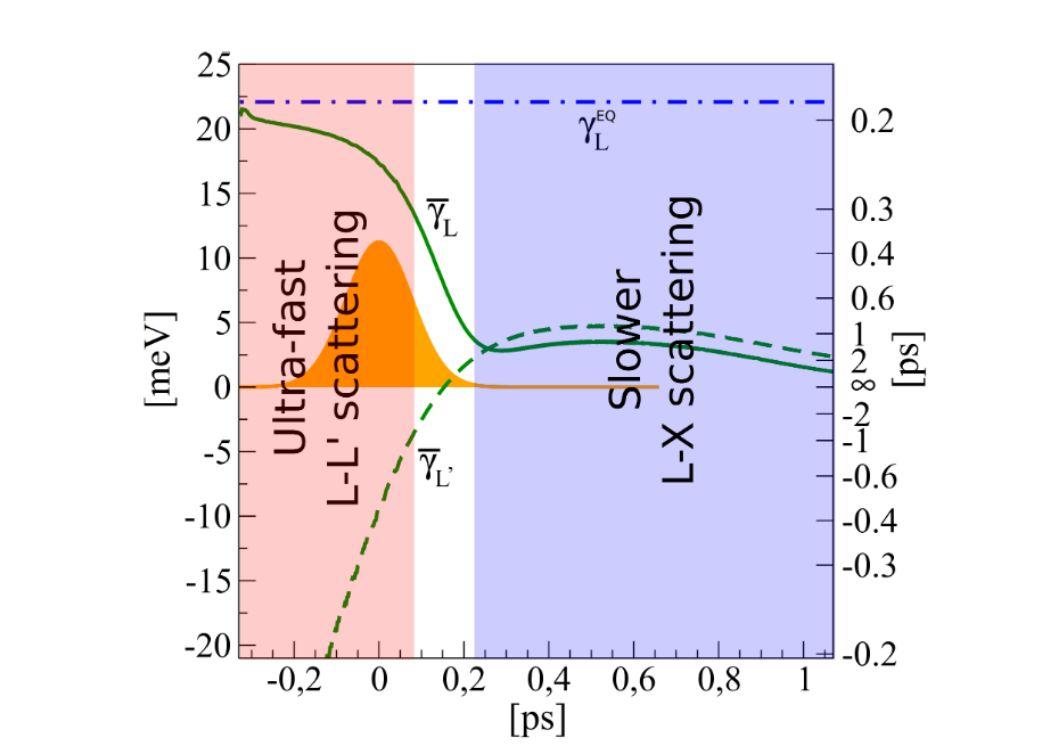
Andrea Marini, Enrico Perfetto, Gianluca Stefanucci
© 2022, The Author(s)
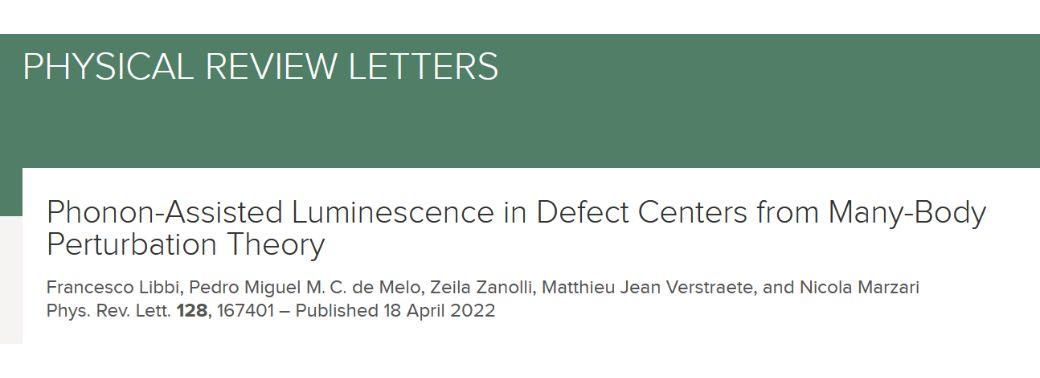
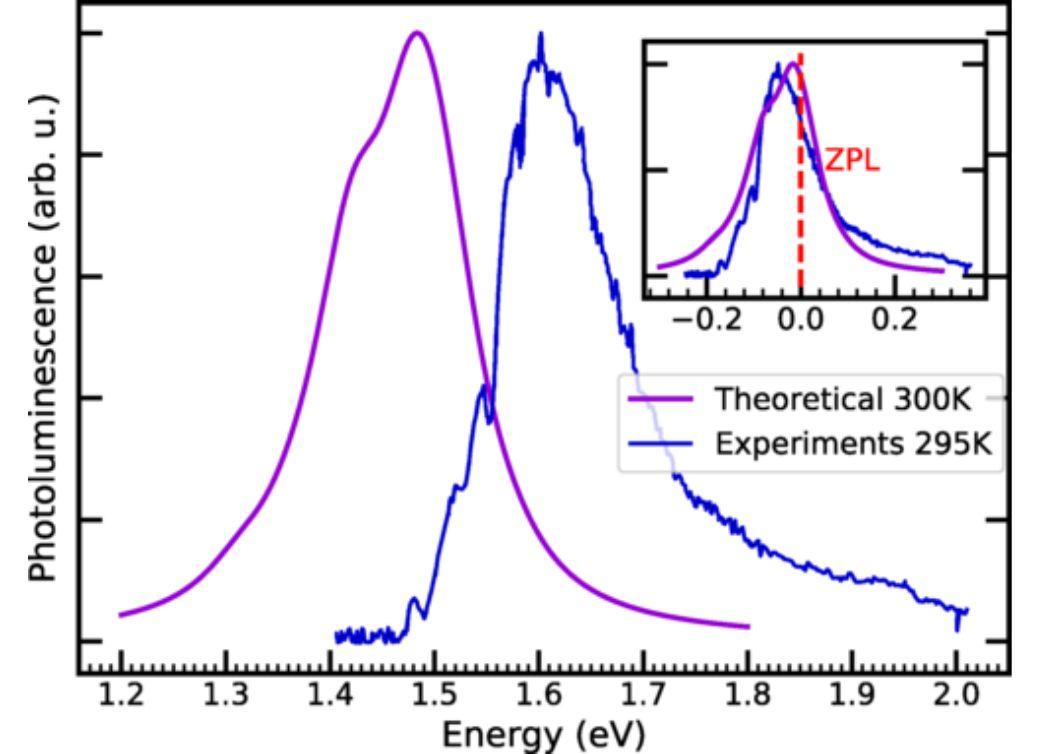
Francesco Libbi, Pedro Miguel M. C. de Melo, Zeila Zanolli, Matthieu Jean Verstraete, and Nicola Marzari Phys. Rev. Lett. 128, 167401
© 2022, The Author(s)
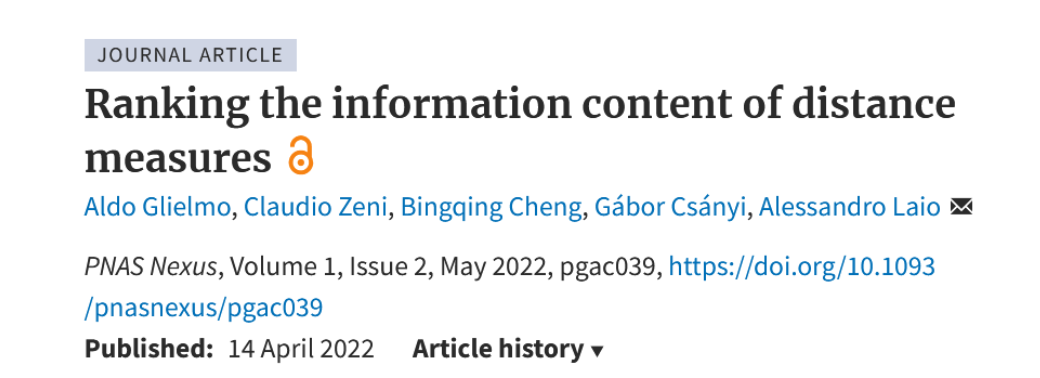
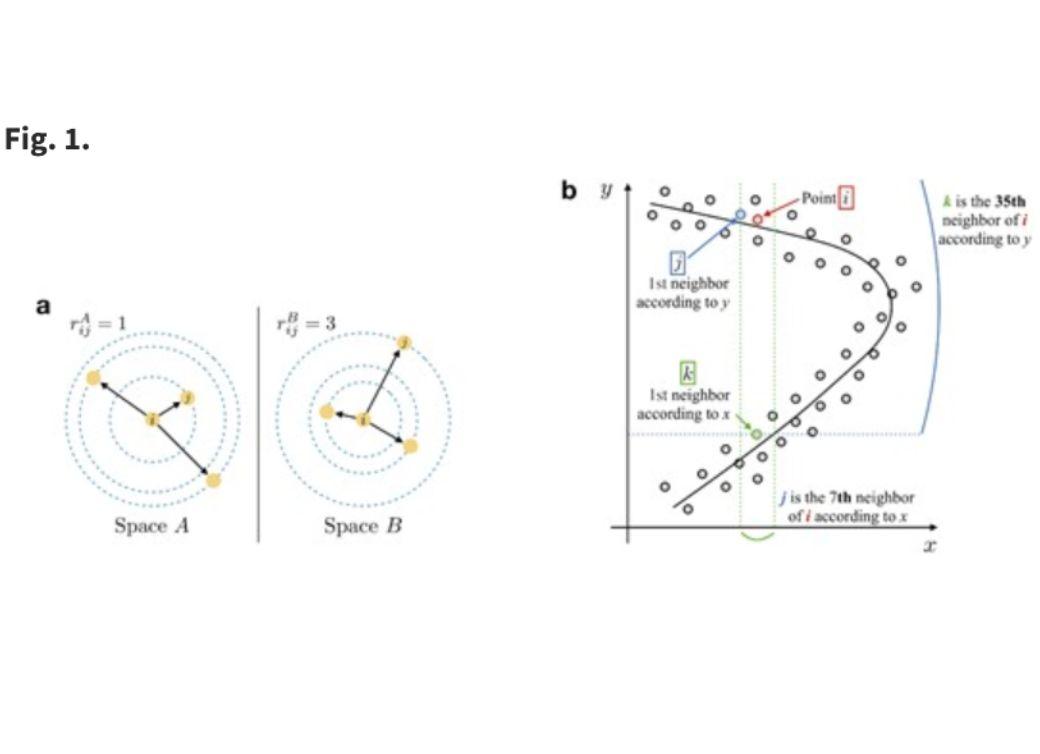
Aldo Glielmo, Claudio Zeni, Bingqing Cheng, Gábor Csányi, Alessandro Laio PNAS Nexus, Volume 1, Issue 2, May 2022, pgac039
© 2022, the Authors
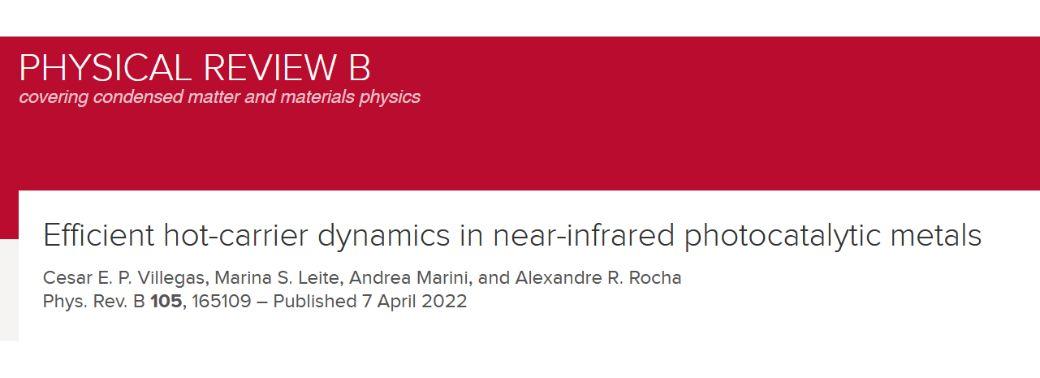
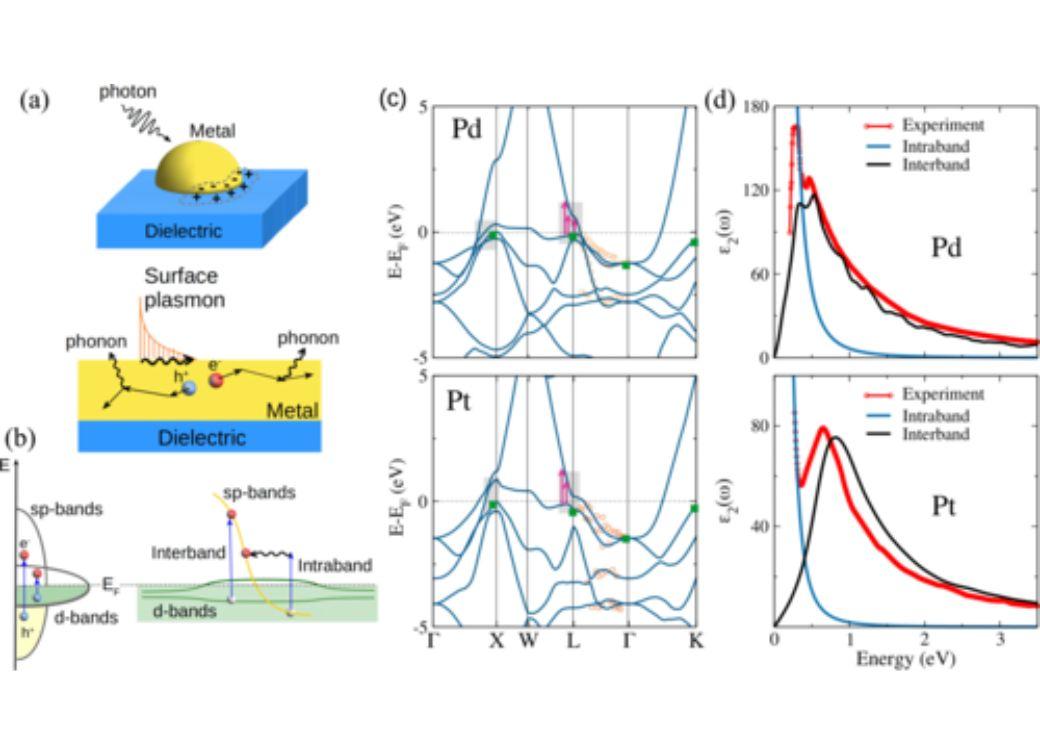
Cesar E. P. Villegas, Marina S. Leite, Andrea Marini, and Alexandre R. Rocha Phys. Rev. B 105, 165109
© 2022, The Author(s)

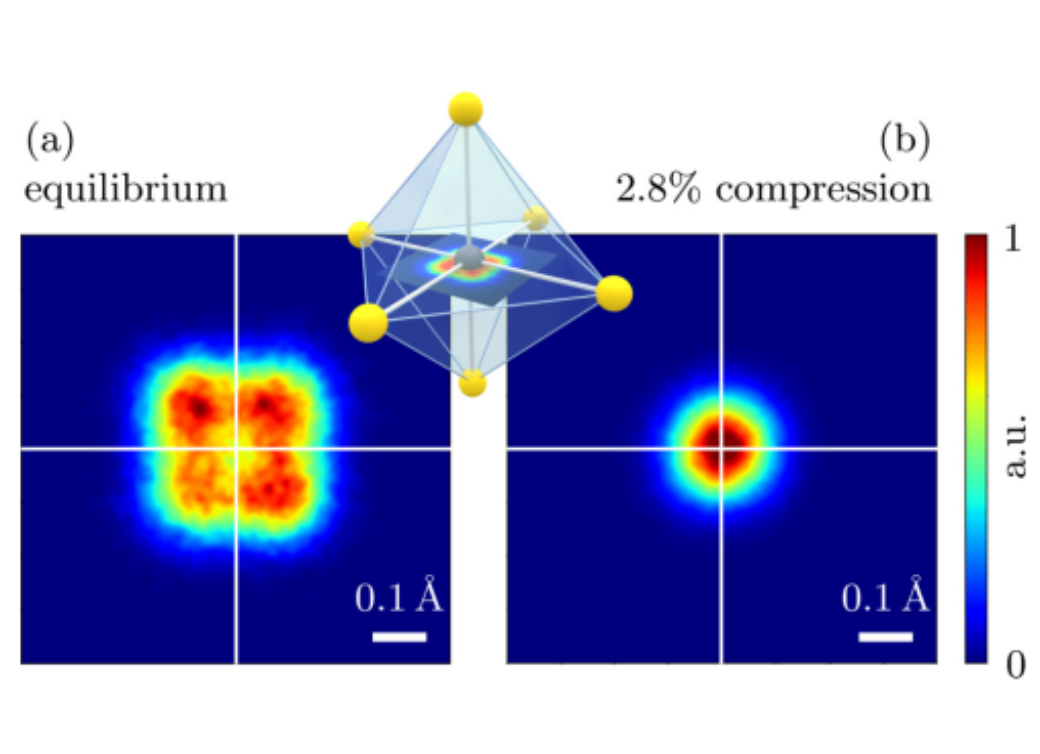
Michele Kotiuga, Samed Halilov, Boris Kozinsky, Marco Fornari, Nicola Marzari, and Giovanni Pizzi Phys. Rev. Research 4, L012042
© 2022, the Authors

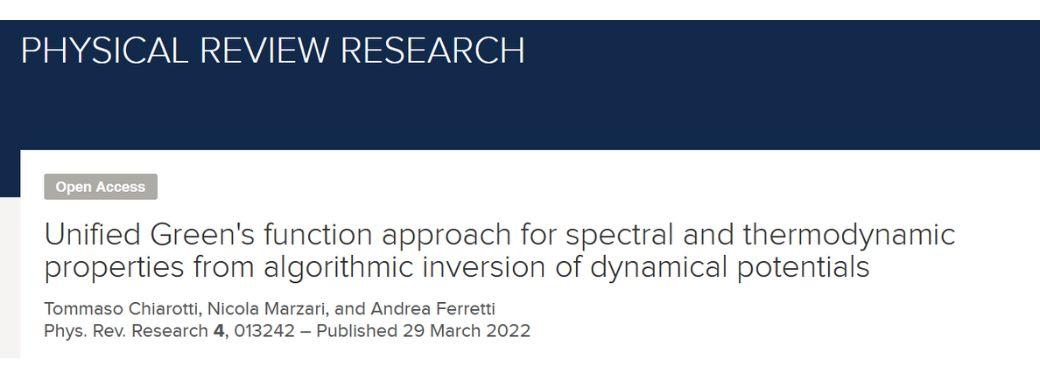
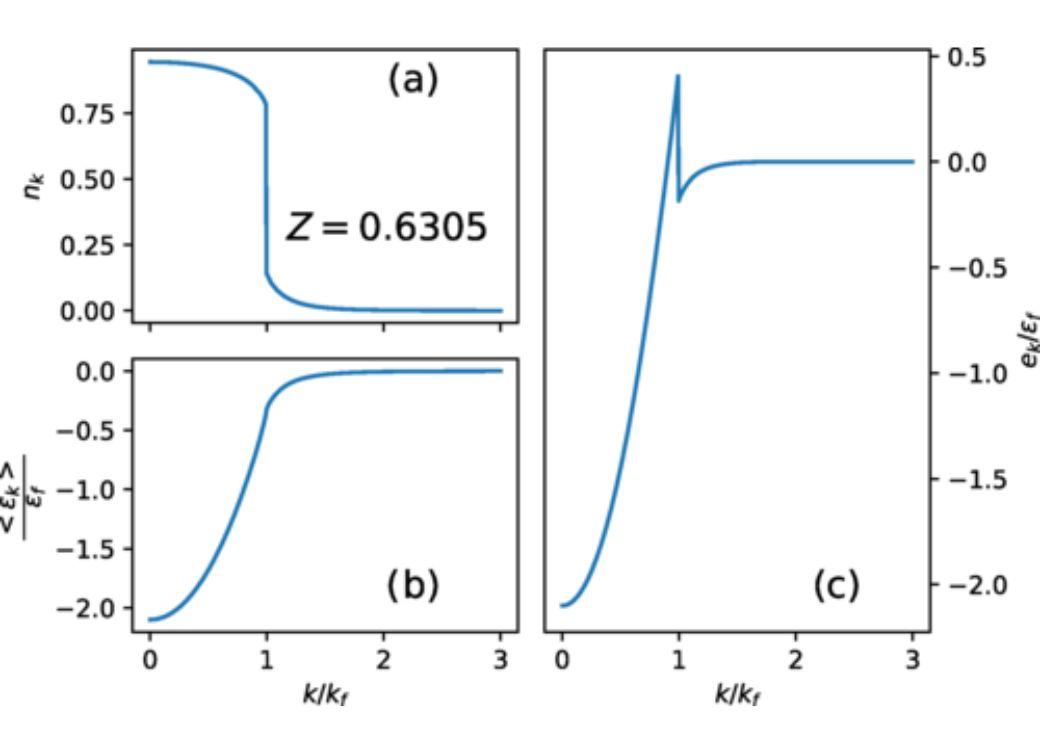
Tommaso Chiarotti, Nicola Marzari, and Andrea Ferretti Phys. Rev. Research 4, 013242
© 2022, The Author(s)
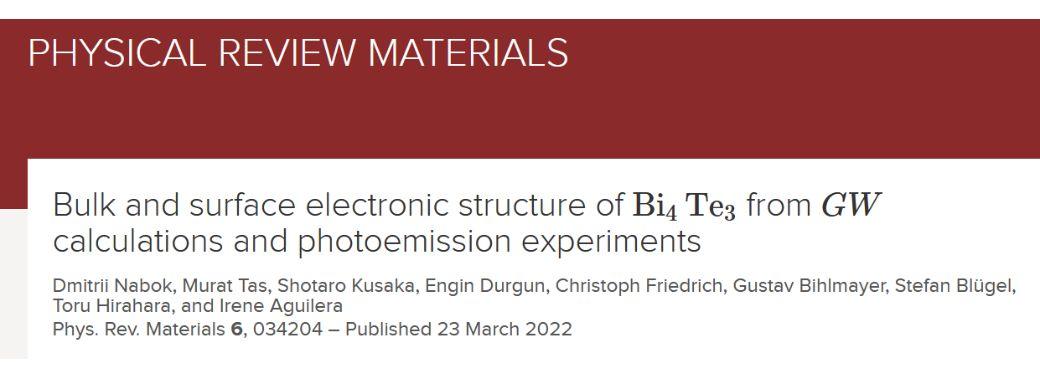
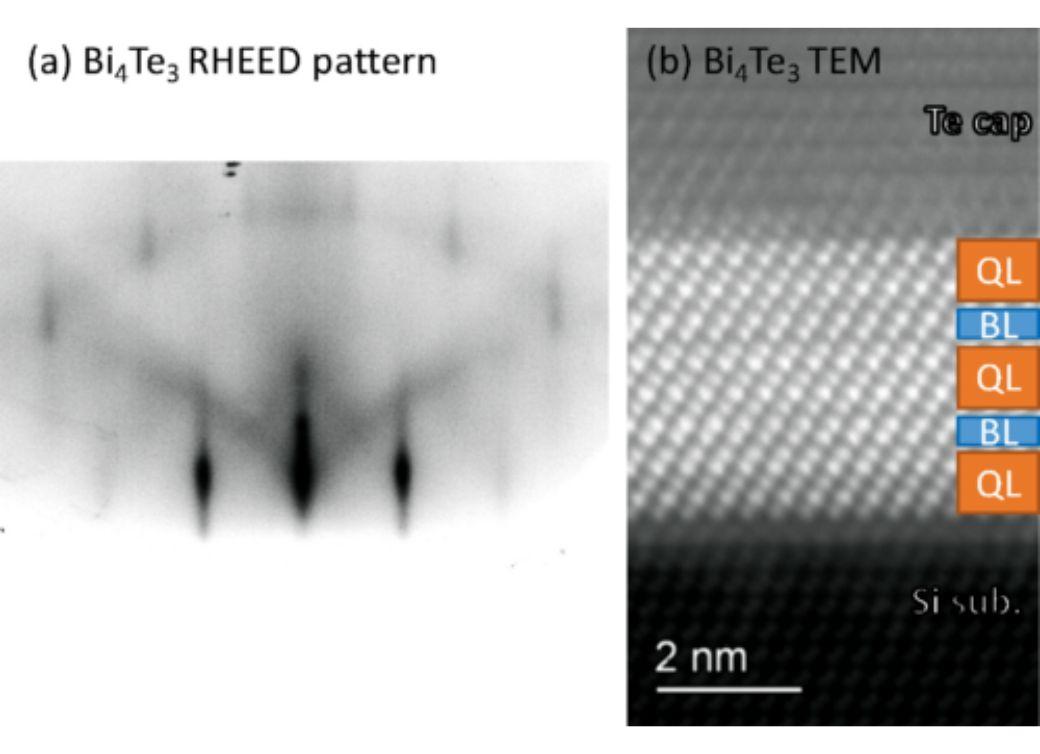
Dmitrii Nabok, Murat Tas, Shotaro Kusaka, Engin Durgun, Christoph Friedrich, Gustav Bihlmayer, Stefan Blügel, Toru Hirahara, and Irene Aguilera Phys. Rev. Materials 6, 034204
© 2022, The Author(s)
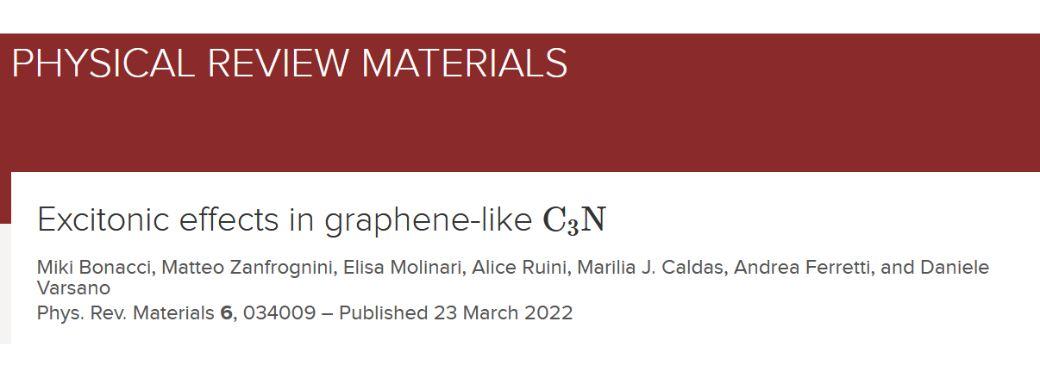
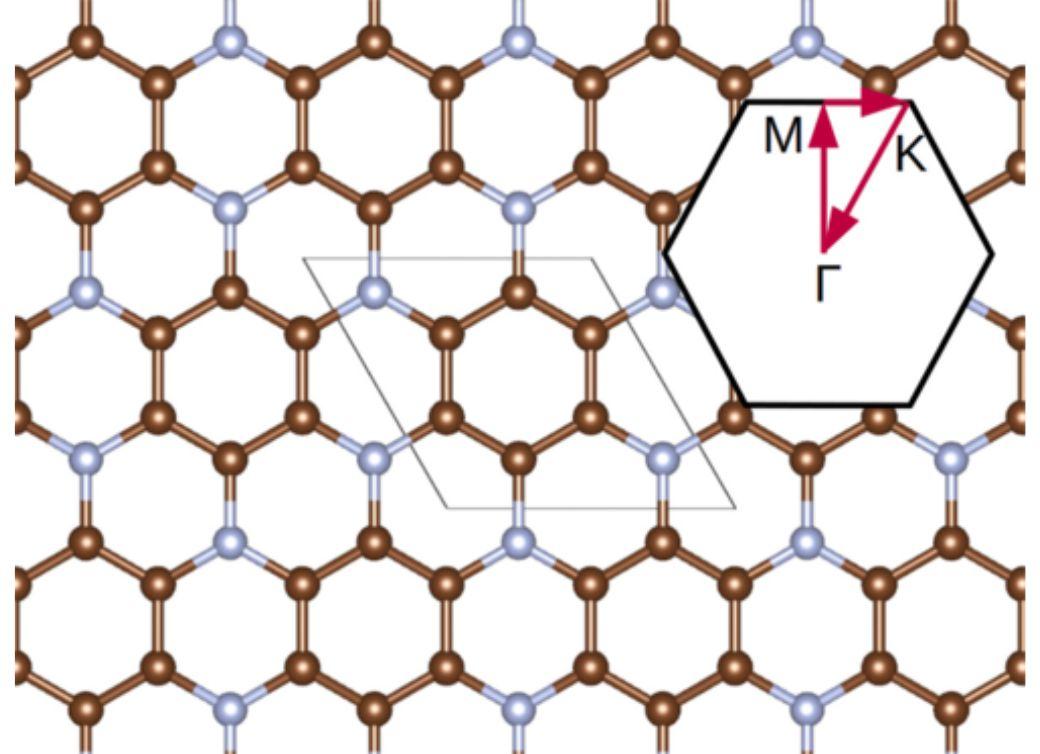
Miki Bonacci, Matteo Zanfrognini, Elisa Molinari, Alice Ruini, Marilia J. Caldas, Andrea Ferretti, and Daniele Varsano Phys. Rev. Materials 6, 034009
© 2022, The Author(s)
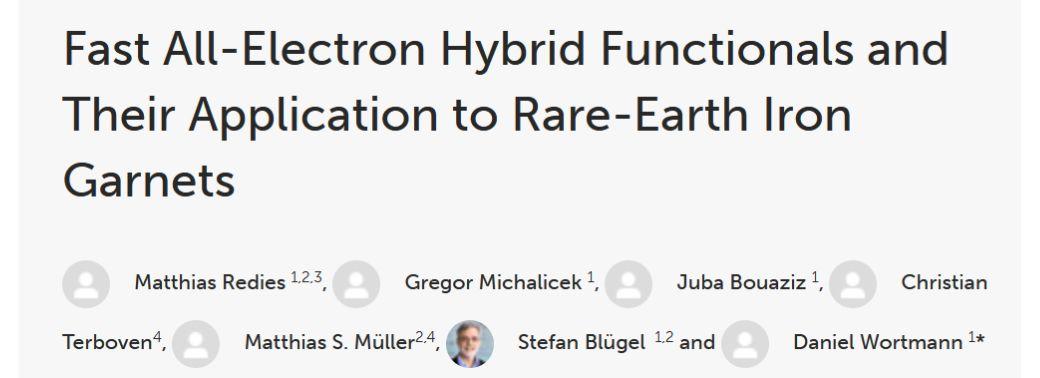
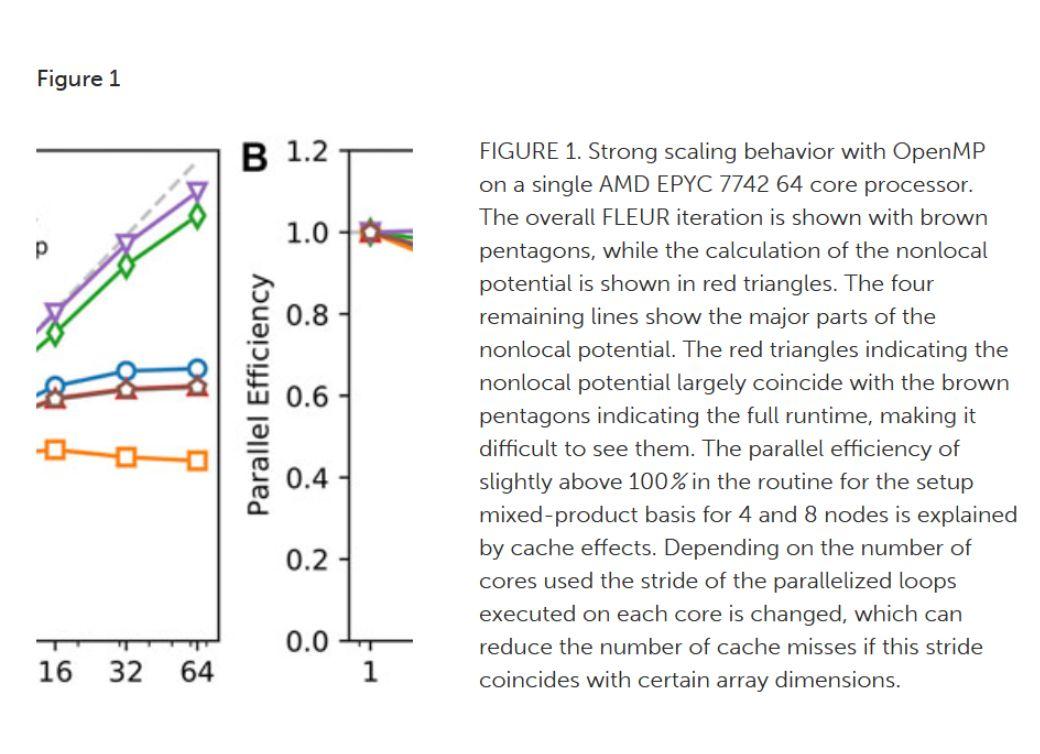
Matthias Redies, Gregor Michalicek, Juba Bouaziz, Christian Terboven, Matthias S. Müller, Stefan Blügel and Daniel Wortmann
© 2022, The Author(s)

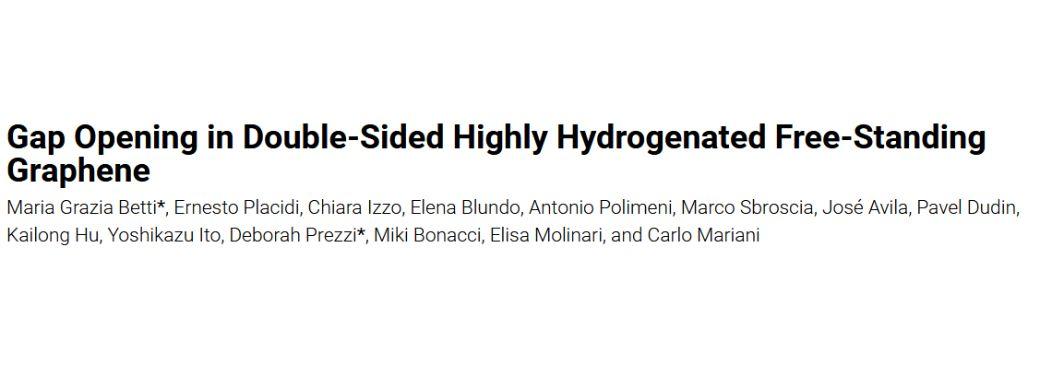
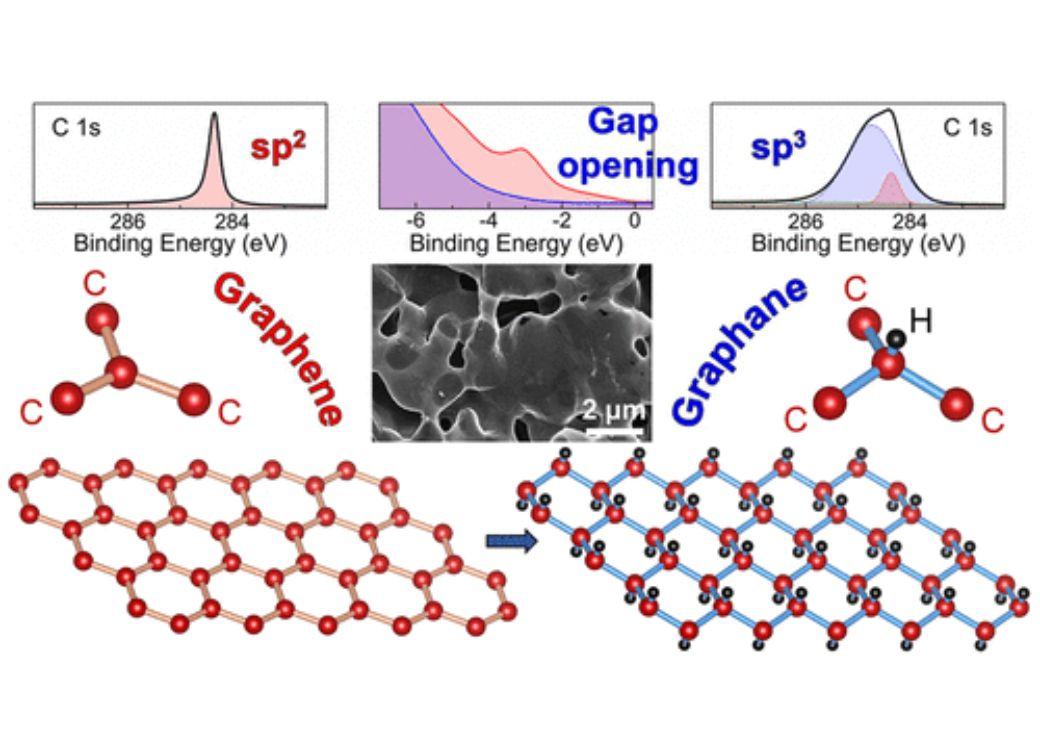
Maria Grazia Betti, Ernesto Placidi, Chiara Izzo, Elena Blundo, Antonio Polimeni, Marco Sbroscia, José Avila, Pavel Dudin, Kailong Hu, Yoshikazu Ito, Deborah Prezzi, Miki Bonacci, Elisa Molinari, and Carlo Mariani
© 2022, The Author(s)

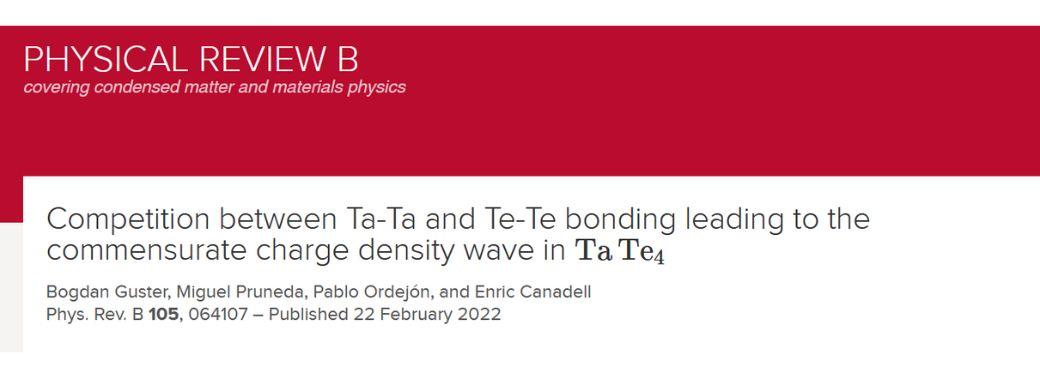
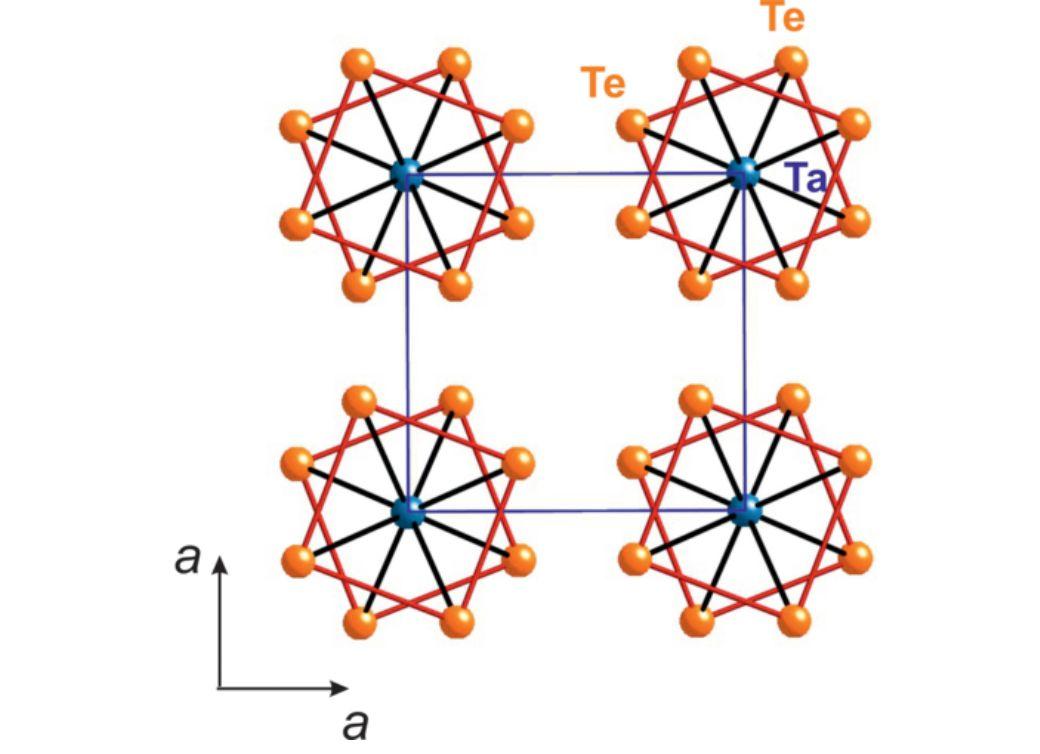
Bogdan Guster, Miguel Pruneda, Pablo Ordejón, and Enric Canadell Phys. Rev. B 105, 064107
© 2022, the Authors

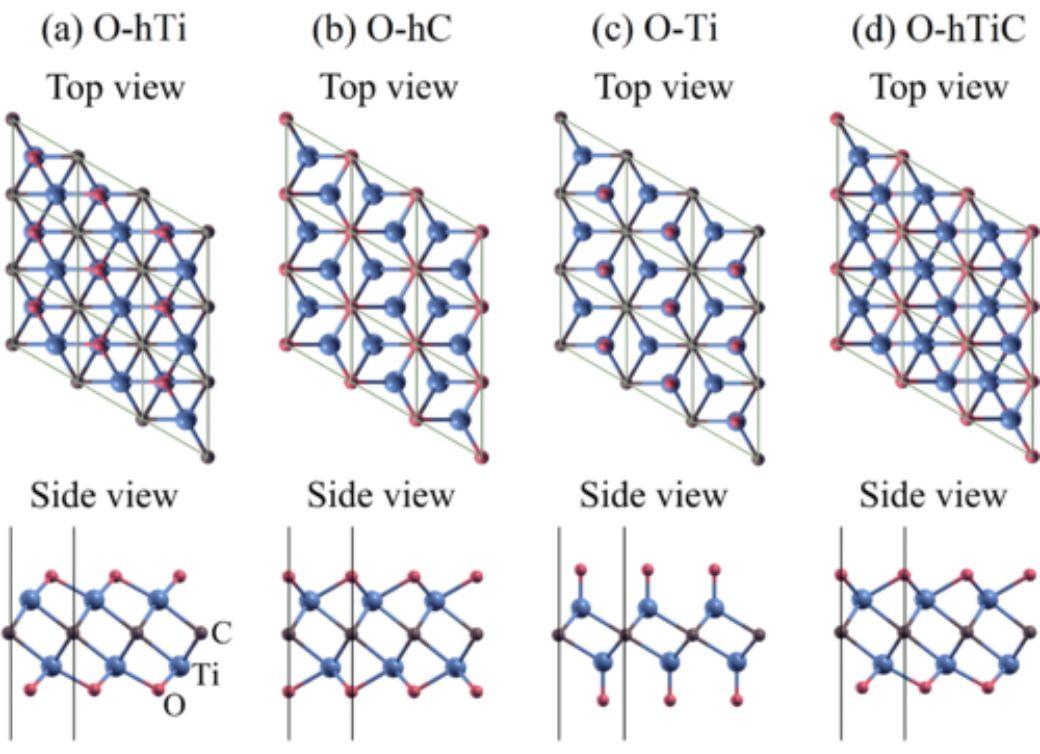
Zafer Kandemir, Engin Torun, Fulvio Paleari, Celal Yelgel, and Cem Sevik Phys. Rev. Materials 6, 026001
© 2022, The Author(s)
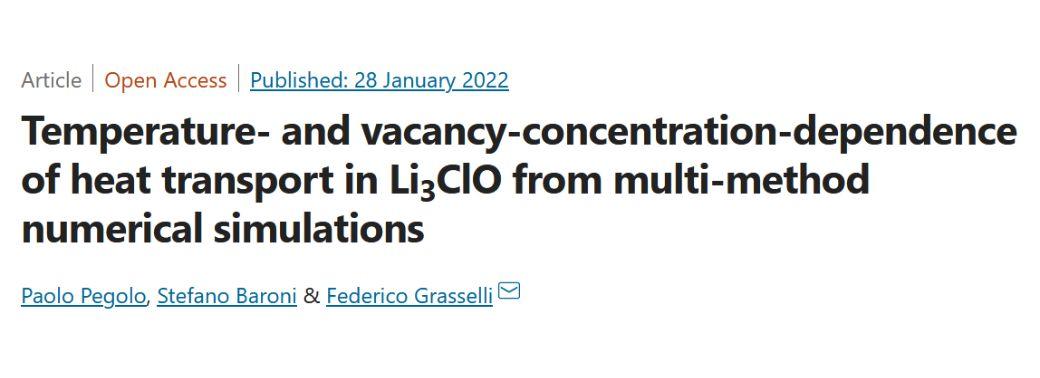
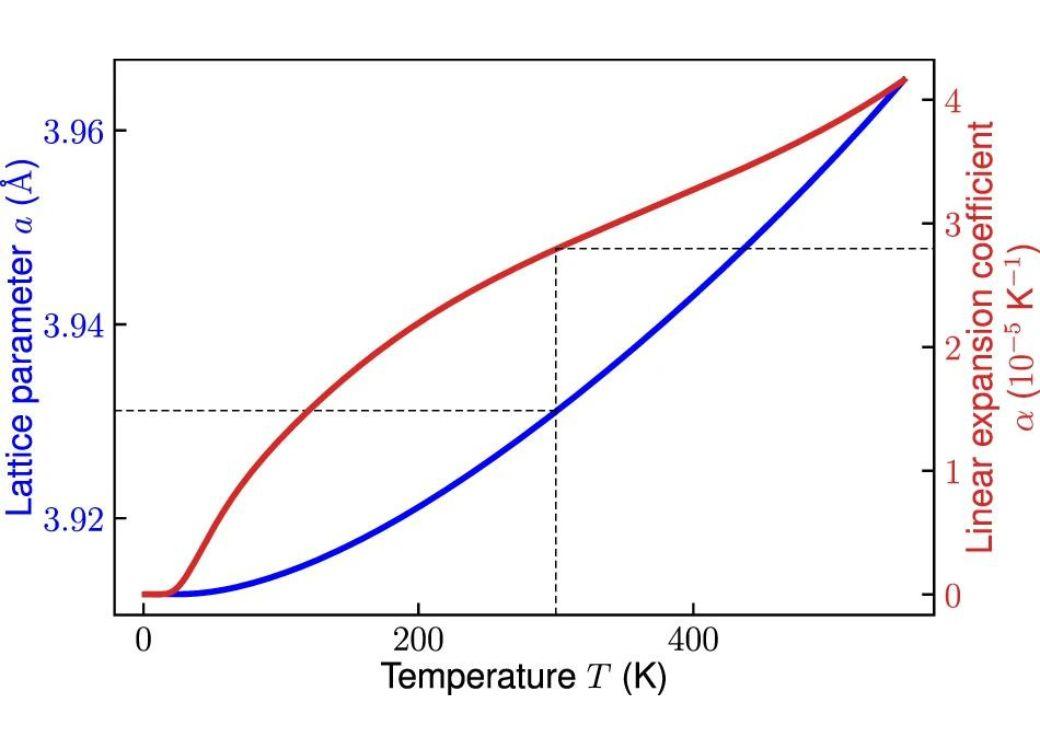
Paolo Pegolo, Stefano Baroni & Federico Grasselli npj Computational Materials
© 2022, The Author(s)

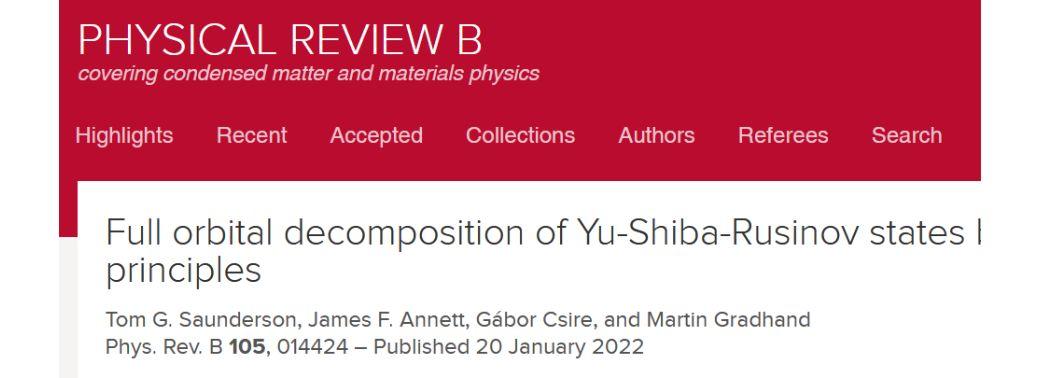
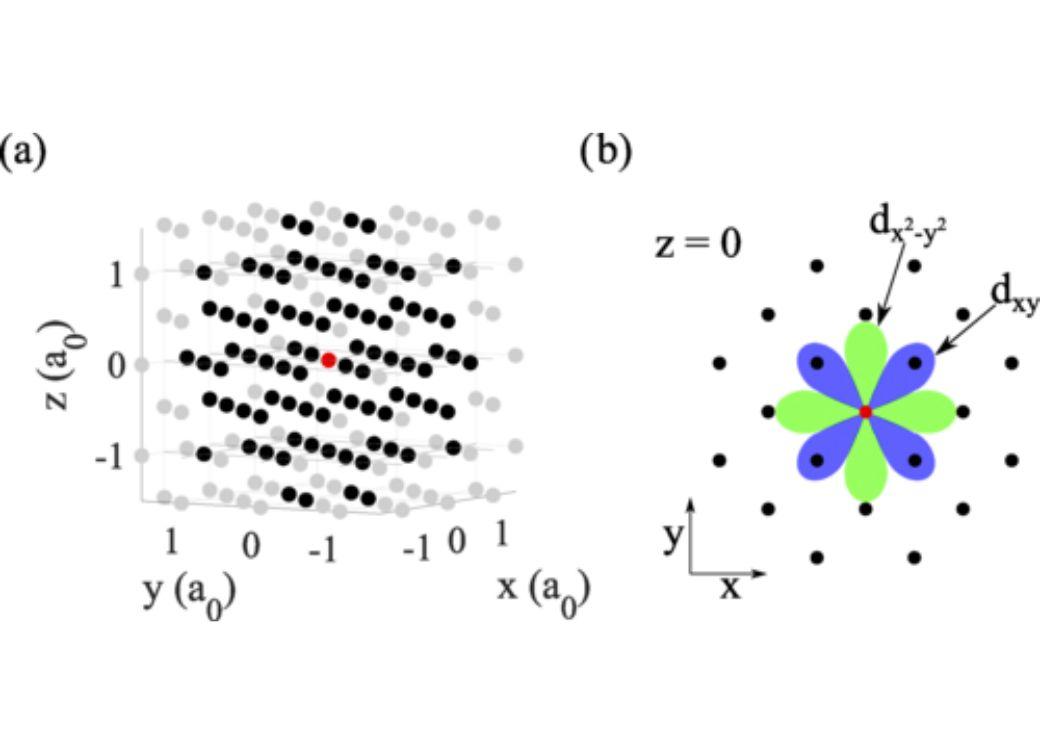
Tom G. Saunderson, James F. Annett, Gábor Csire, and Martin Gradhand Phys. Rev. B 105, 014424
© 2022, The Author(s)
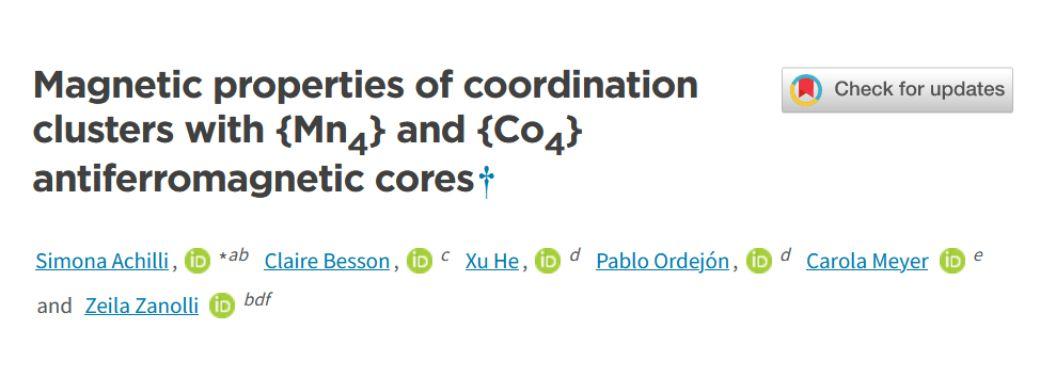
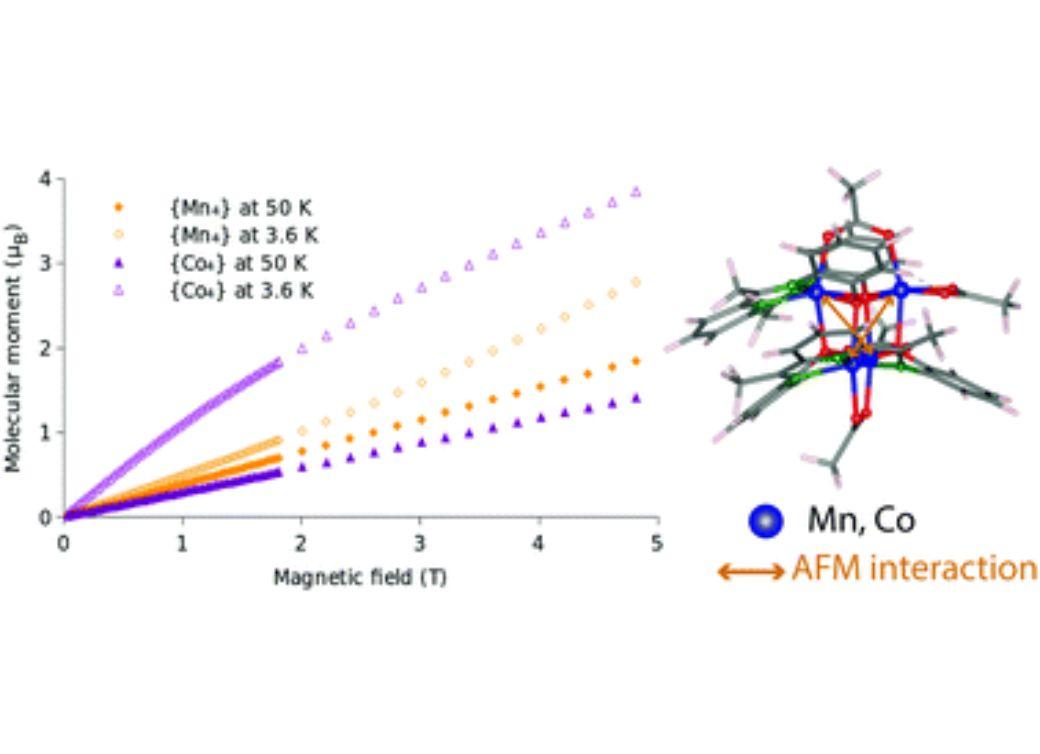
Simona Achilli, Claire Besson, Xu He, Pablo Ordejón, Carola Meyer and Zeila Zanolli
© 2022, The Author(s)
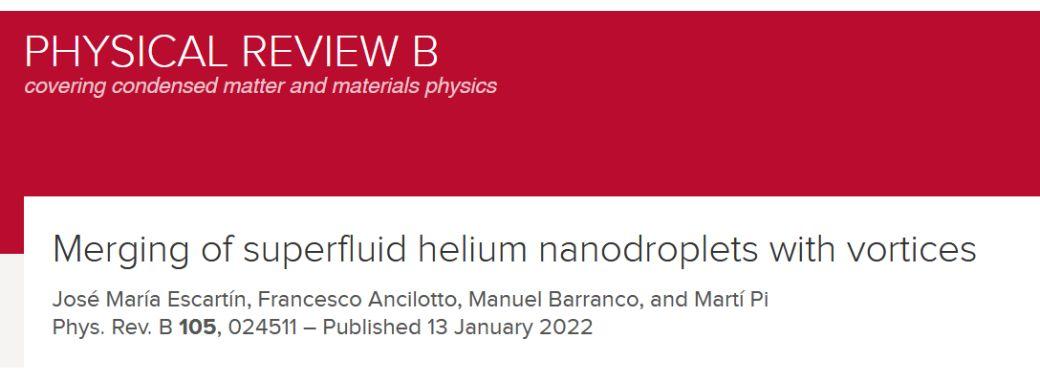
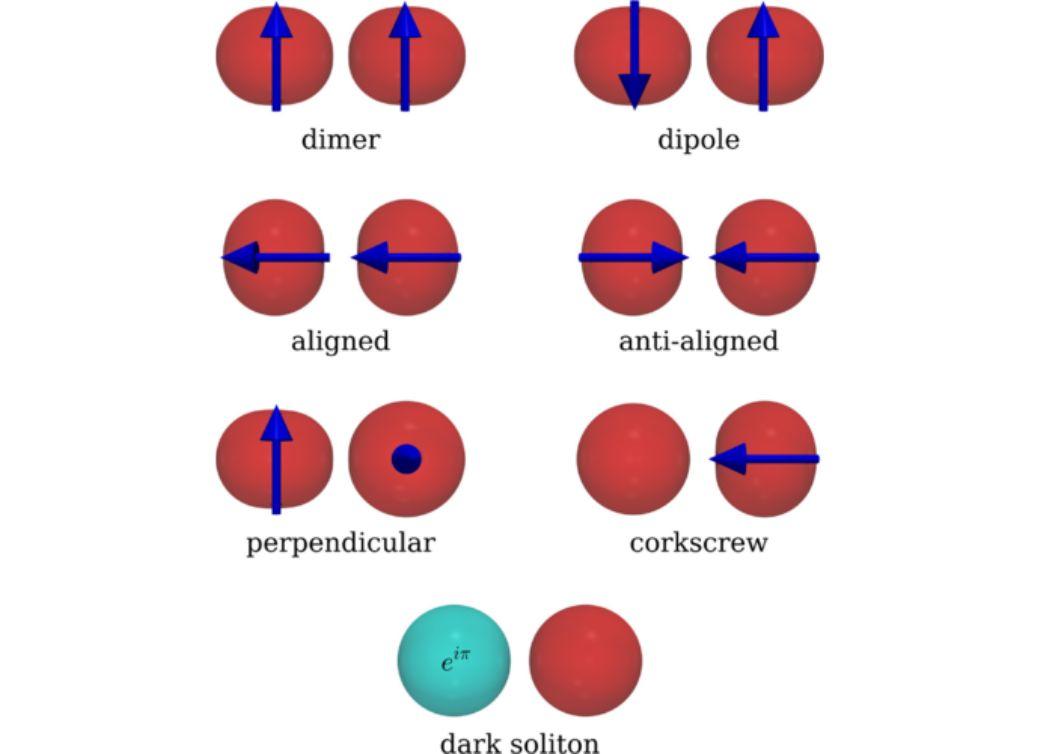
José María Escartín, Francesco Ancilotto, Manuel Barranco, and Martí Pi Phys. Rev. B 105, 024511
© 2022, The Author(s)
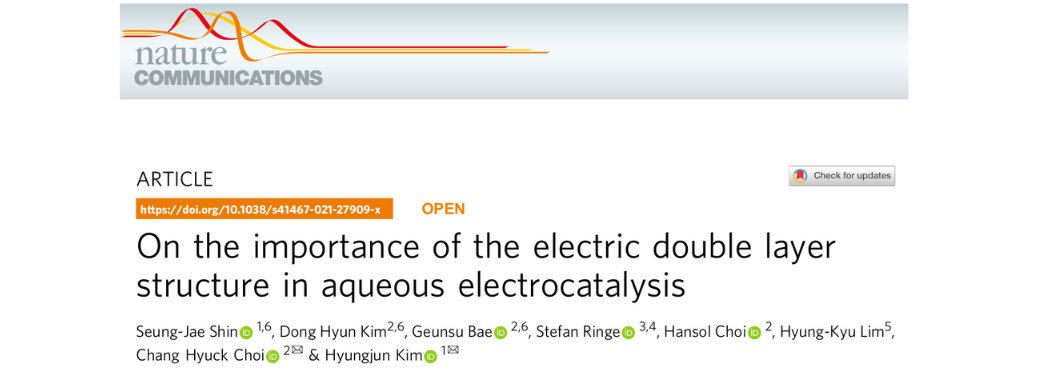
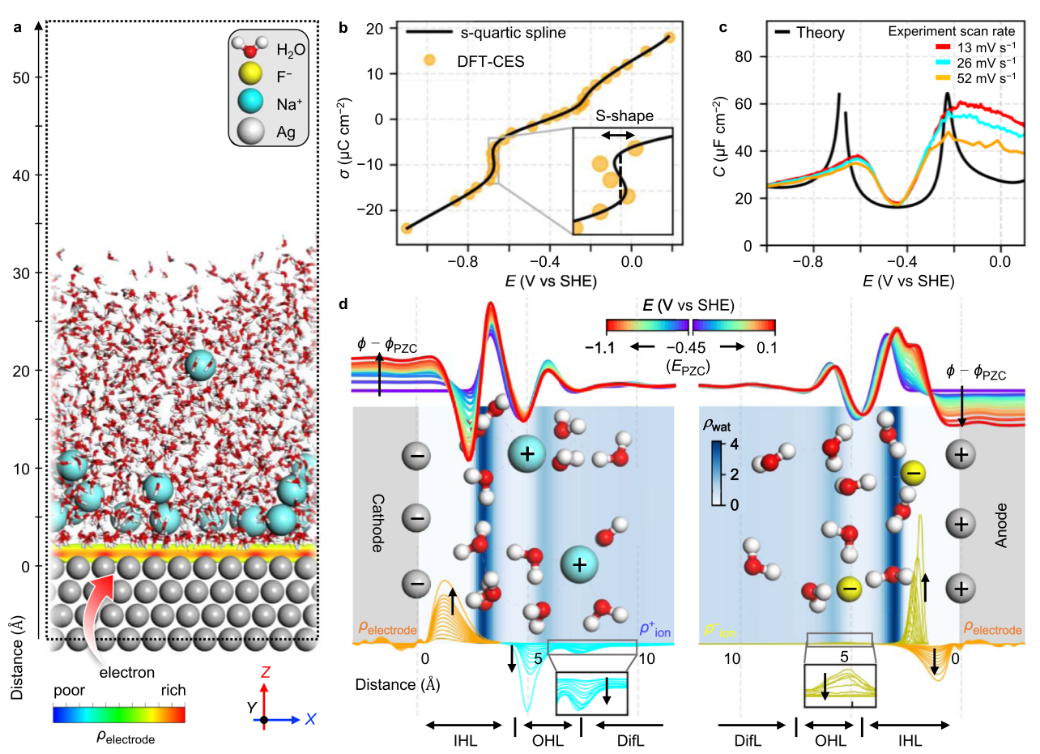
SJ. Shin, D.H. Kim, G. Bae, et al. On the importance of the electric double layer structure in aqueous electrocatalysis. Nat Commun 13, 174
© The Author(s) 2022

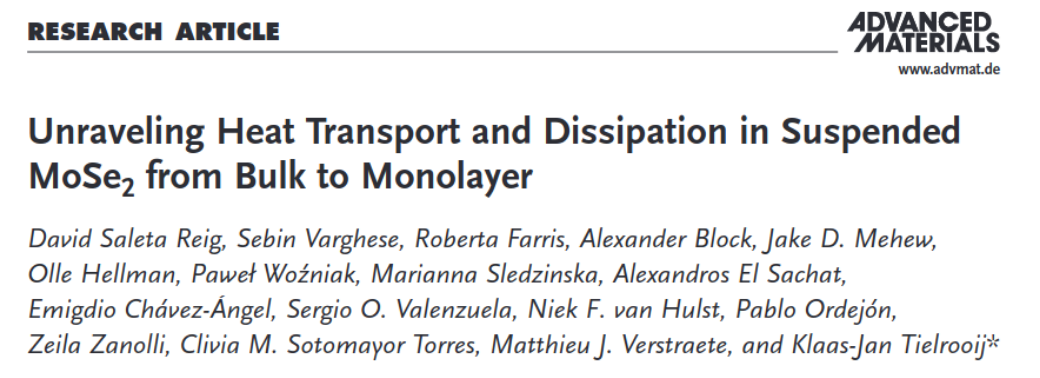
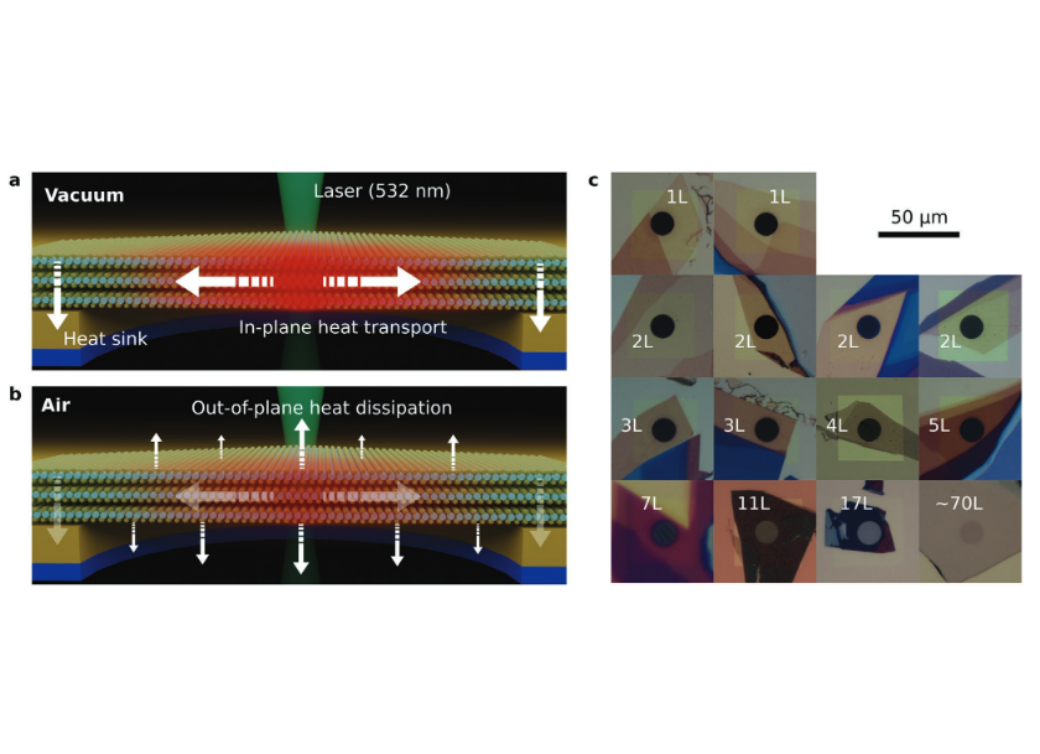
D. Saleta Reig, S. Varghese, R. Farris, A. Block, J. D. Mehew, O. Hellman, P. Woźniak, M. Sledzinska, A. El Sachat, E. Chávez-Ángel, S. O. Valenzuela, N. F. van Hulst, P. Ordejón, Z. Zanolli, C. M. Sotomayor Torres, M. J. Verstraete, and K.-J. Tielrooij. Unraveling Heat Transport and Dissipation in Suspended MoSe2 from Bulk to Monolayer. Adv. Mater. 2022, 2108352
© 2022, The Author(s)
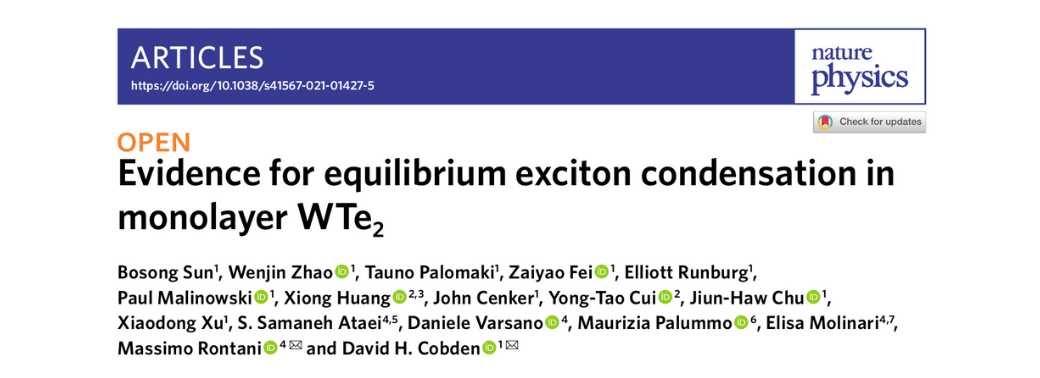
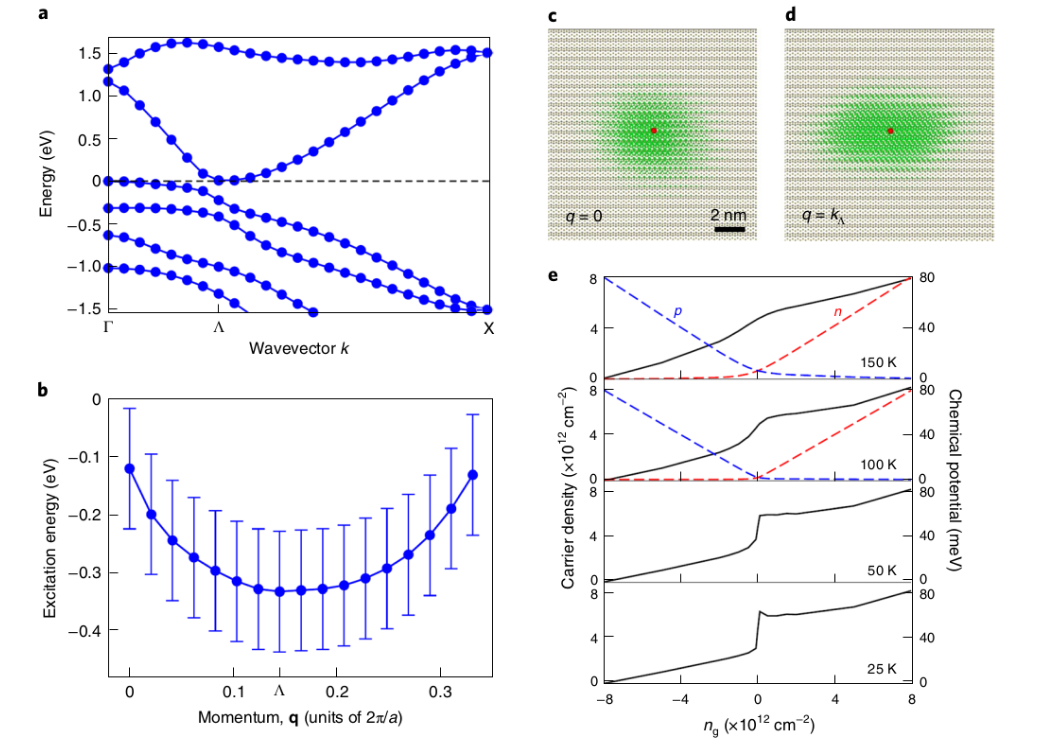
B. Sun, W. Zhao, T. Palomaki, Z. Fei, E. Runburg , P. Malinowski, X. Huang, J. Cenker, Y-T. Cui, J. Chu, X. Xu , S. Ataei, D. Varsano, M. Palummo, E. Molinari, M. Rontani and D. H. Cobden. Evidence for equilibrium exciton condensation in monolayer WTe2. Nat. Phys. 18, 94–99 (2022)
© 2022, The Author(s)

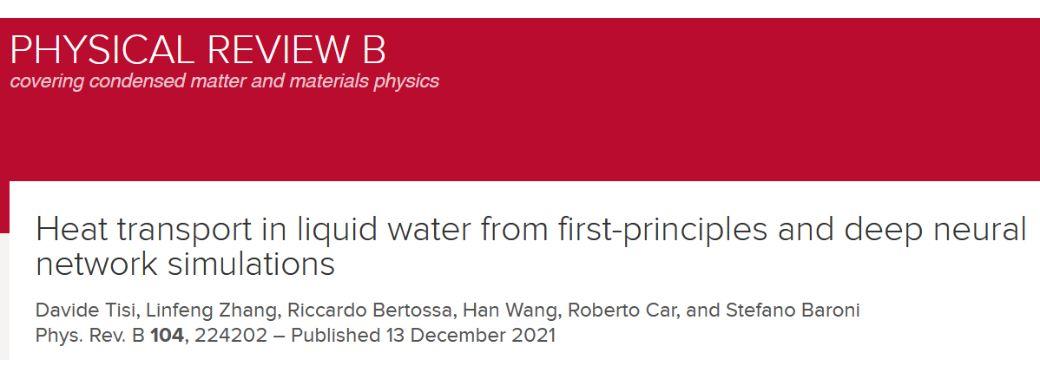
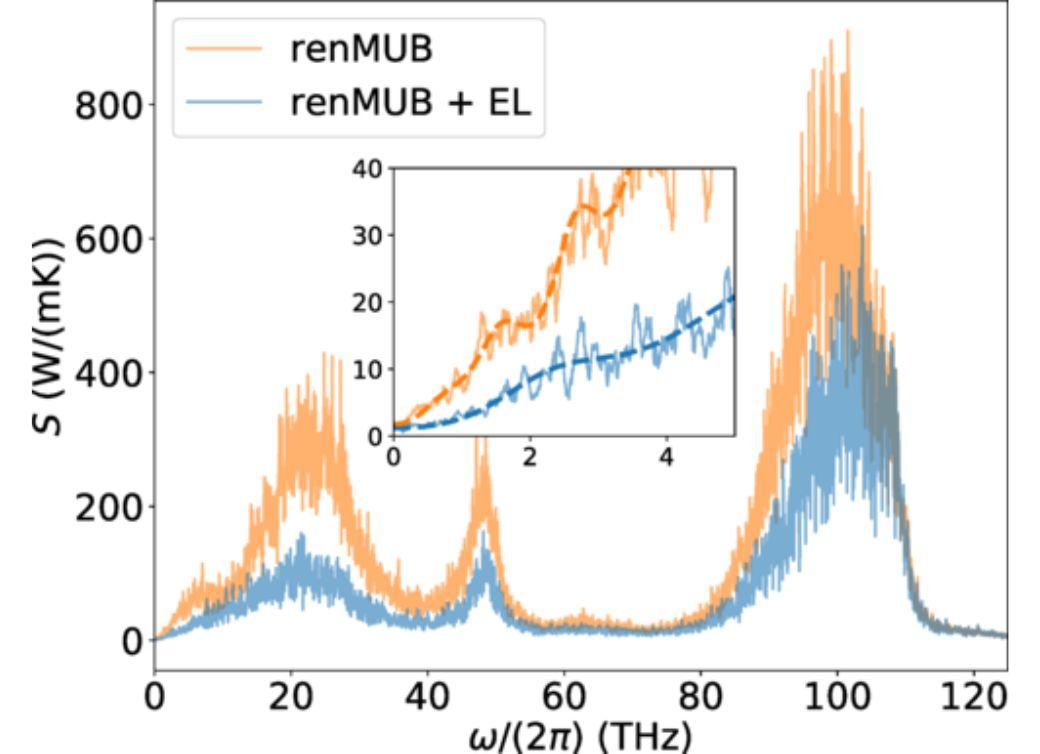
Davide Tisi, Linfeng Zhang, Riccardo Bertossa, Han Wang, Roberto Car, and Stefano Baroni Phys. Rev. B 104, 224202
© 2022, The Author(s)
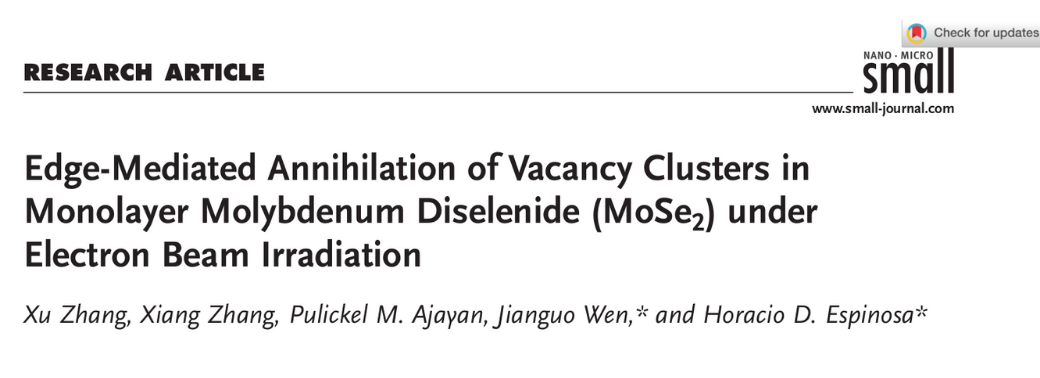
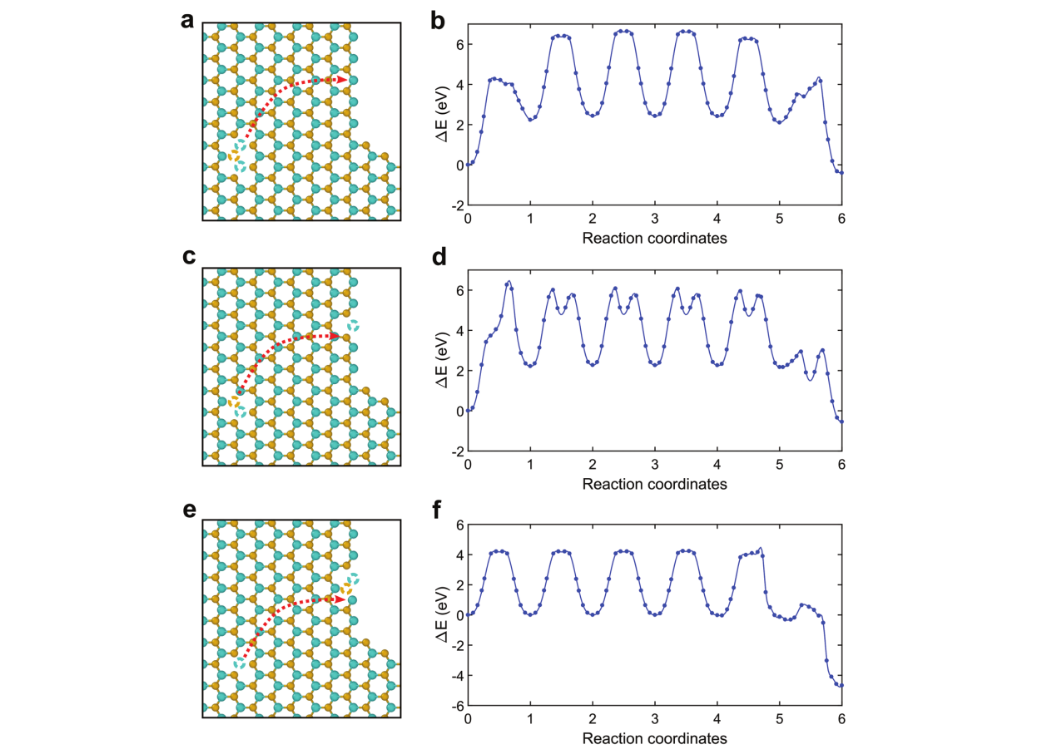
X. Zhang, X. Zhang, P. M. Ajayan, J. Wen, and H. D. Espinosa. Edge-Mediated Annihilation of Vacancy Clusters in Monolayer Molybdenum Diselenide (MoSe 2 ) under Electron Beam Irradiation. Small 2022, 18, 2105194
© 2021 Wiley-VCH GmbH

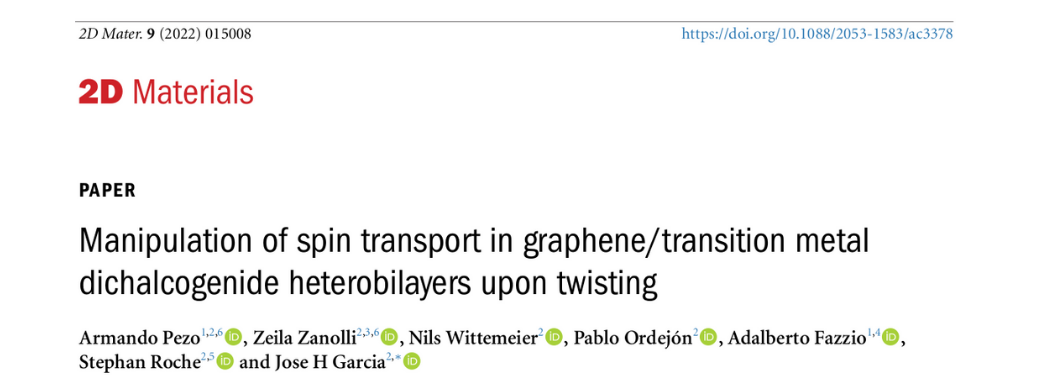
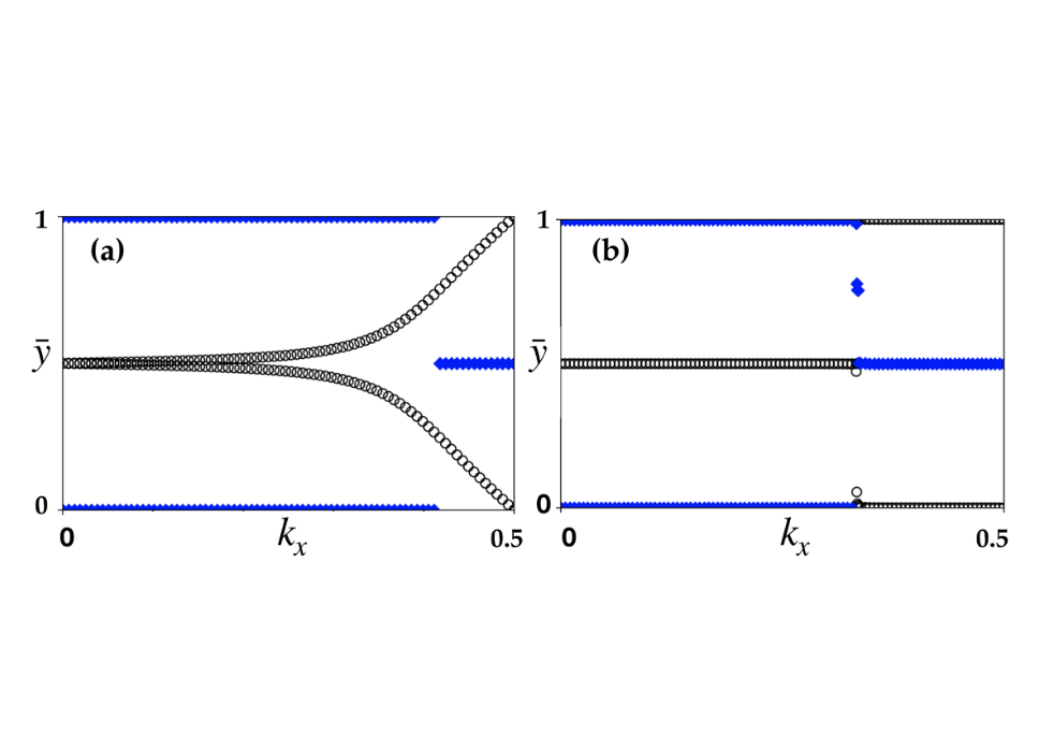
A. Pezo, Z. Zanolli, N. Wittemeier, P. Ordejon, A. Fazzio, S. Roche, and J. H. Garcia. Manipulation of spin transport in graphene/transition metal dichalcogenide heterobilayers upon twisting. 2D Mater. 9 015008
© 2021 IOP Publishing Ltd
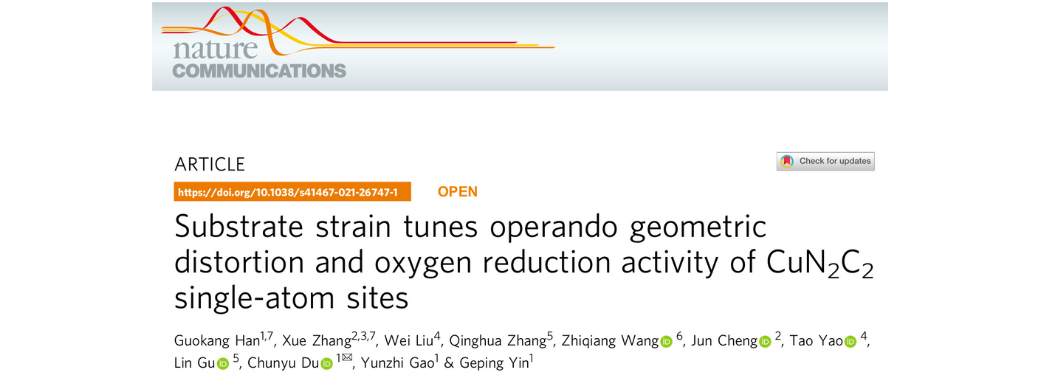
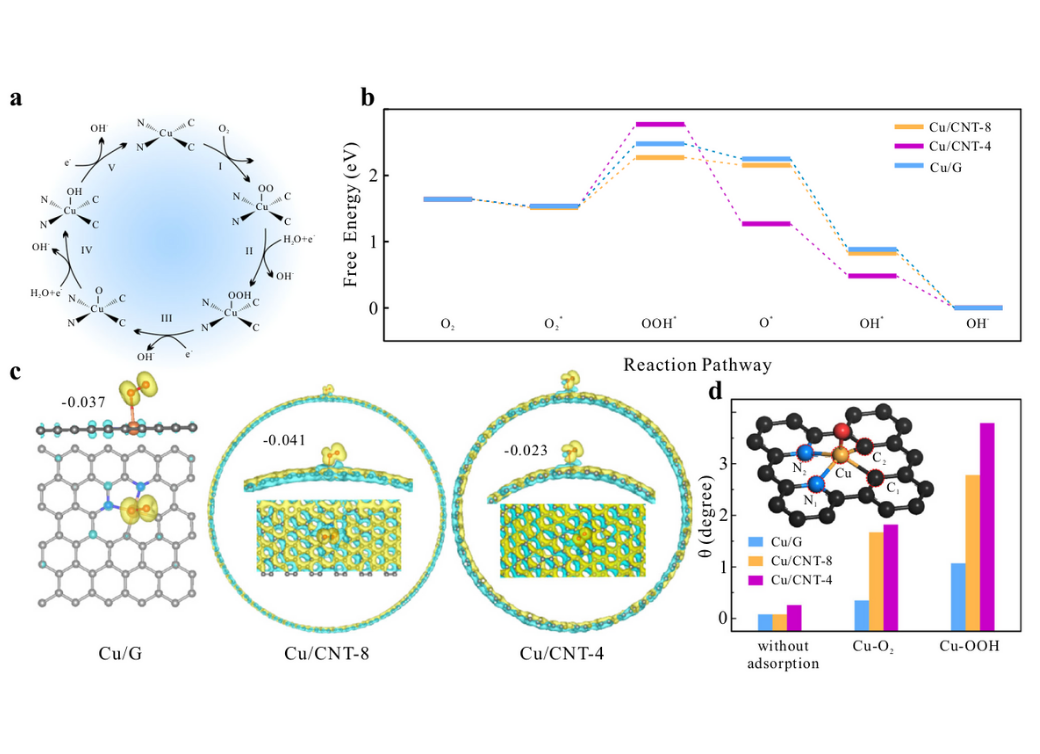
G. Han, X. Zhang, W. Liu, et al. Substrate strain tunes operando geometric distortion and oxygen reduction activity of CuN2C2 single-atom sites. Nat Commun 12, 6335
© The Author(s) 2021

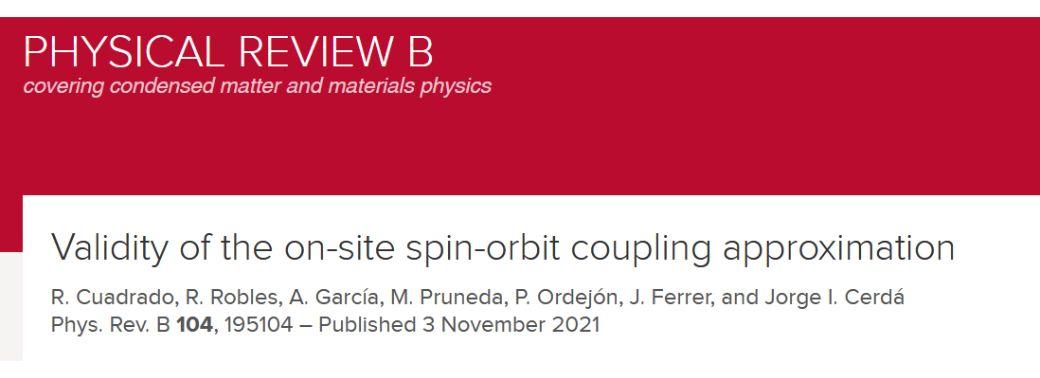
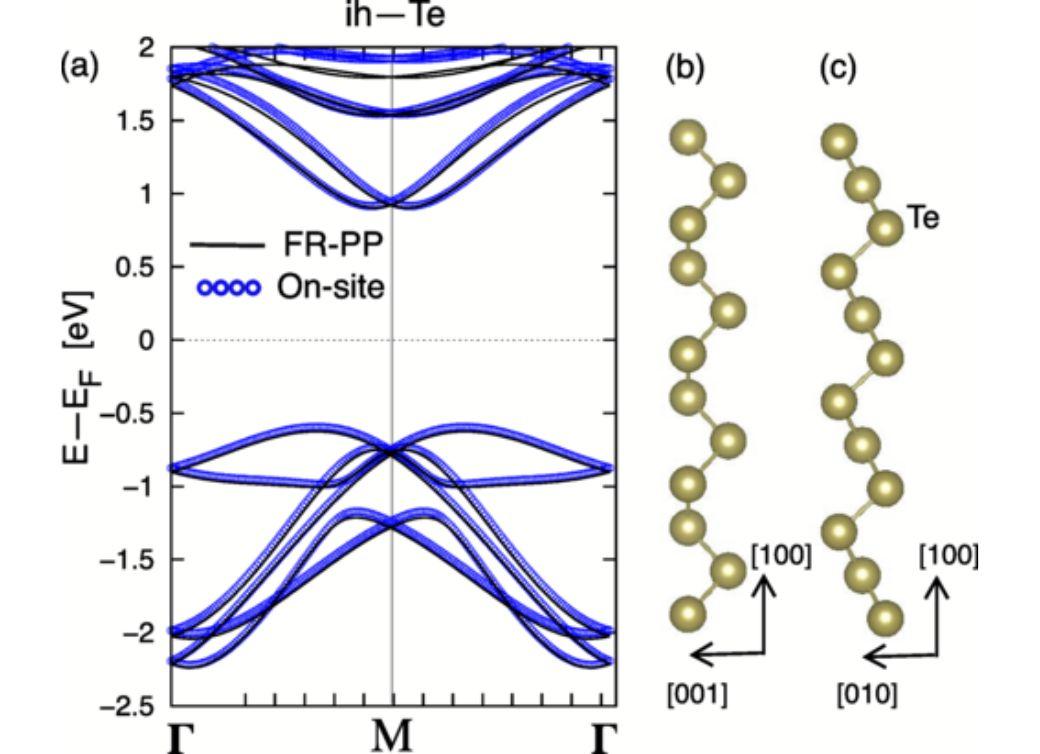
R. Cuadrado, R. Robles, A. García, M. Pruneda, P. Ordejón, J. Ferrer, and Jorge I. Cerdá Phys. Rev. B 104, 195104
© 2022, The Author(s)
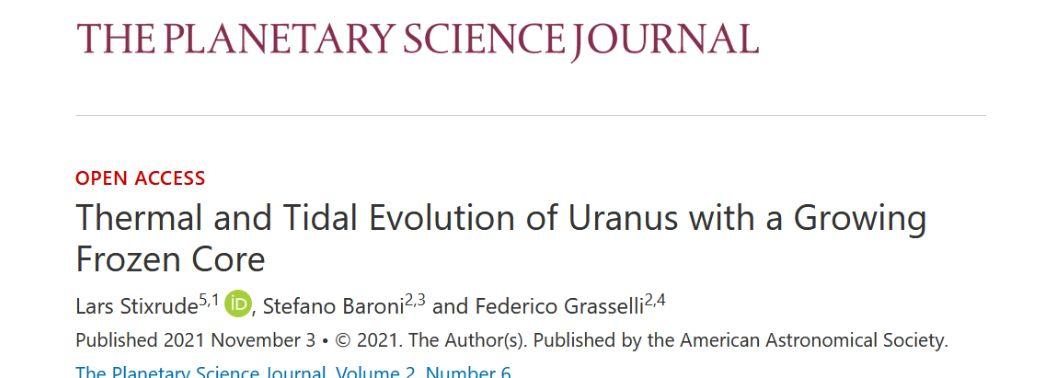
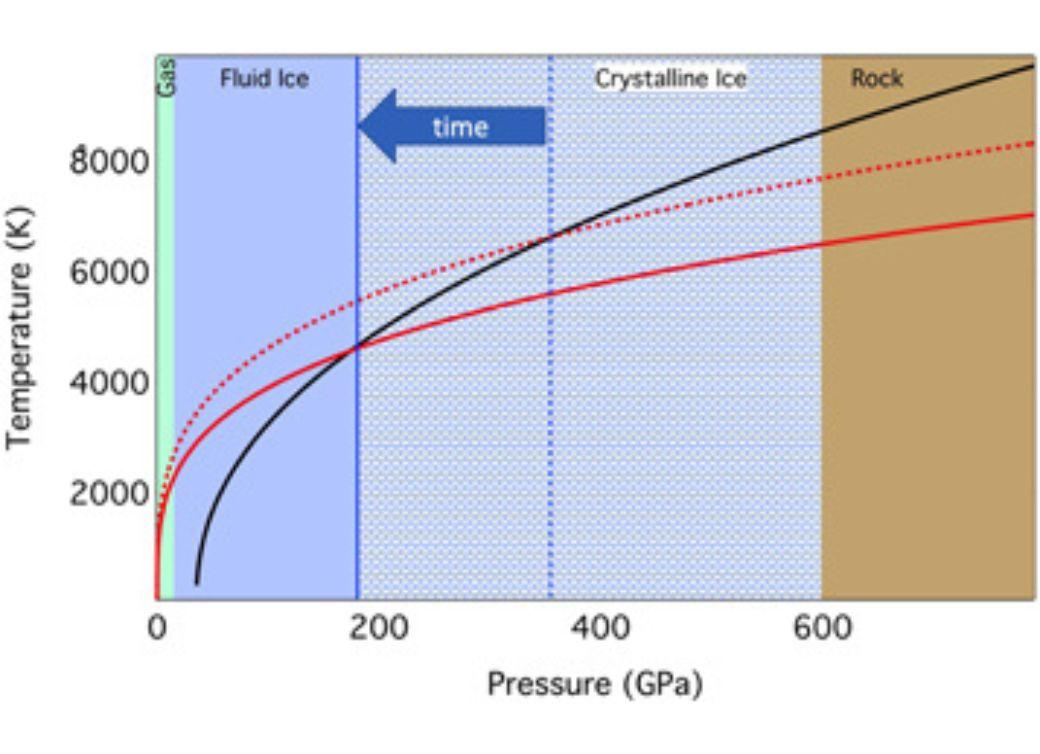
Lars Stixrude, Stefano Baroni and Federico Grasselli
© 2022, The Author(s)

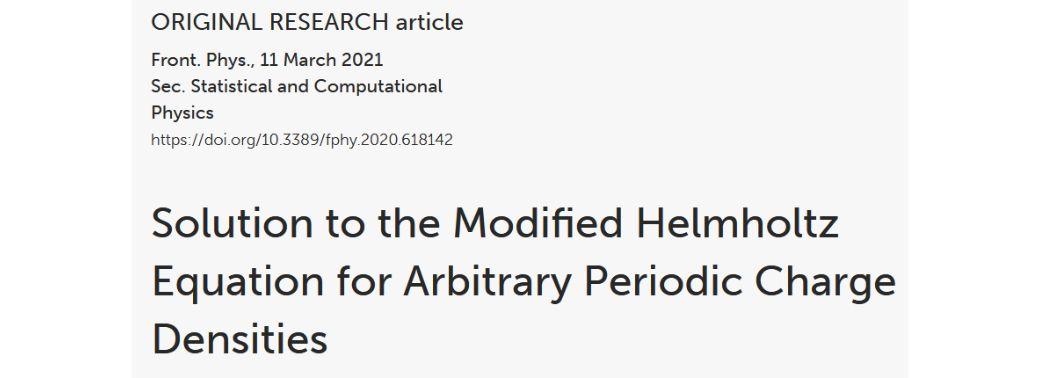
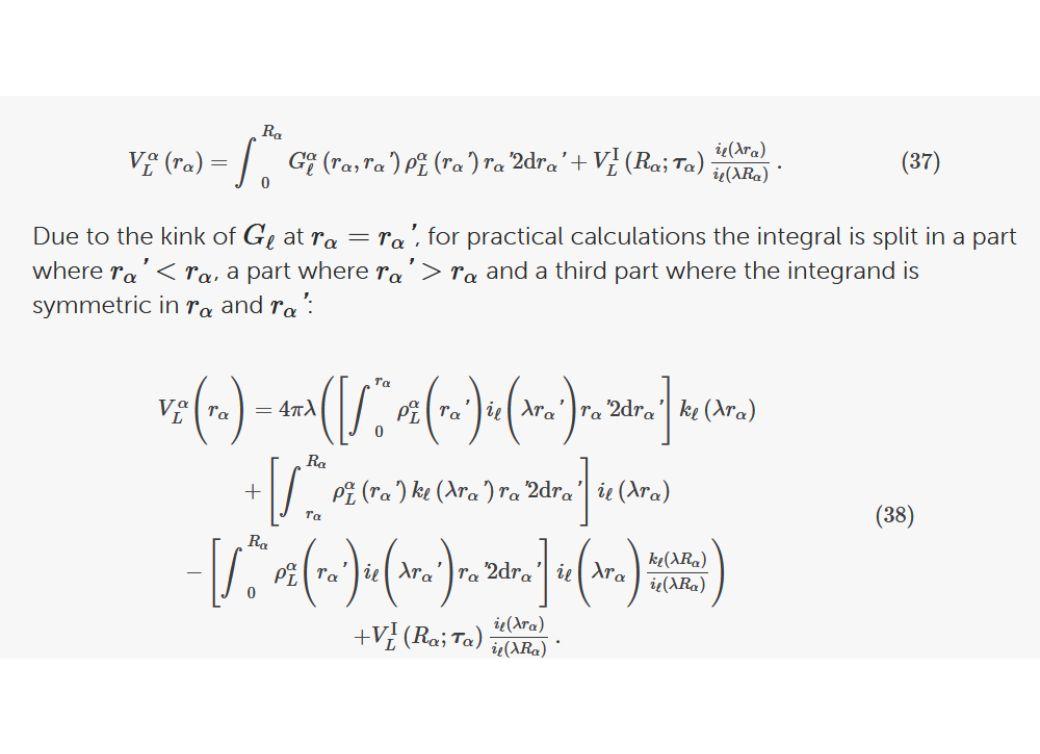
M. Winkelmann, E. Di Napoli, D. Wortmann, and S. Blügel
© 2022, The Author(s)

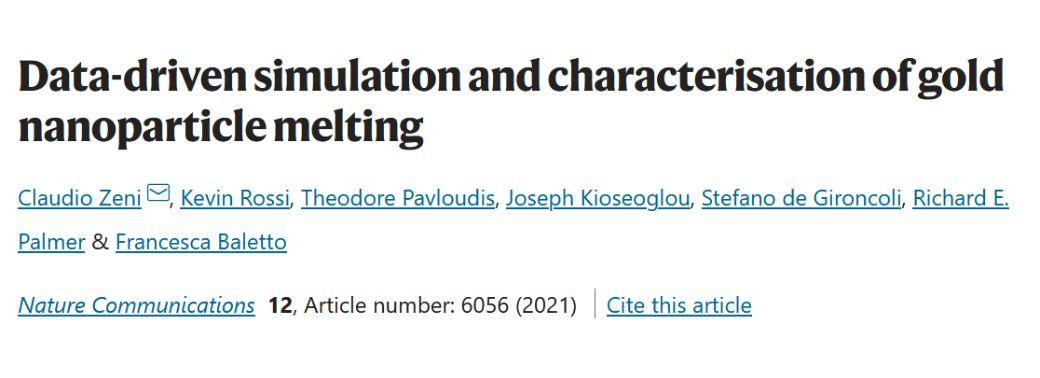
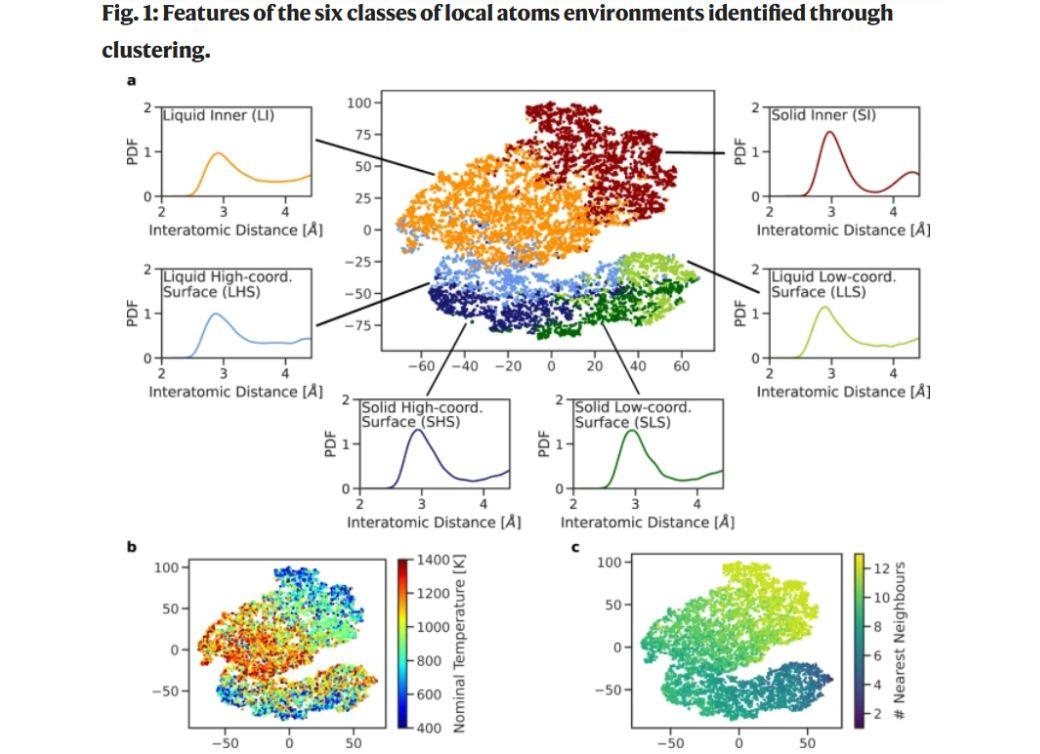
Claudio Zeni, Kevin Rossi, Theodore Pavloudis, Joseph Kioseoglou, Stefano de Gironcoli, Richard E. Palmer & Francesca Baletto Nature Communications volume 12, Article number: 6056 (2021)
© 2022, The Author(s)
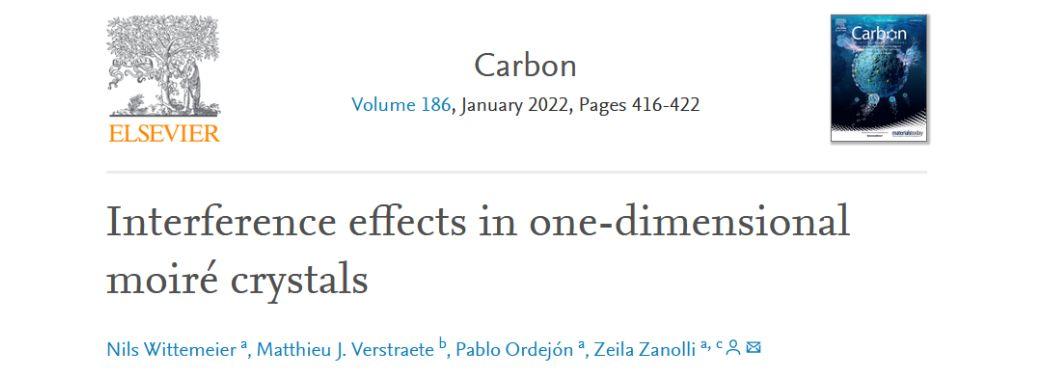
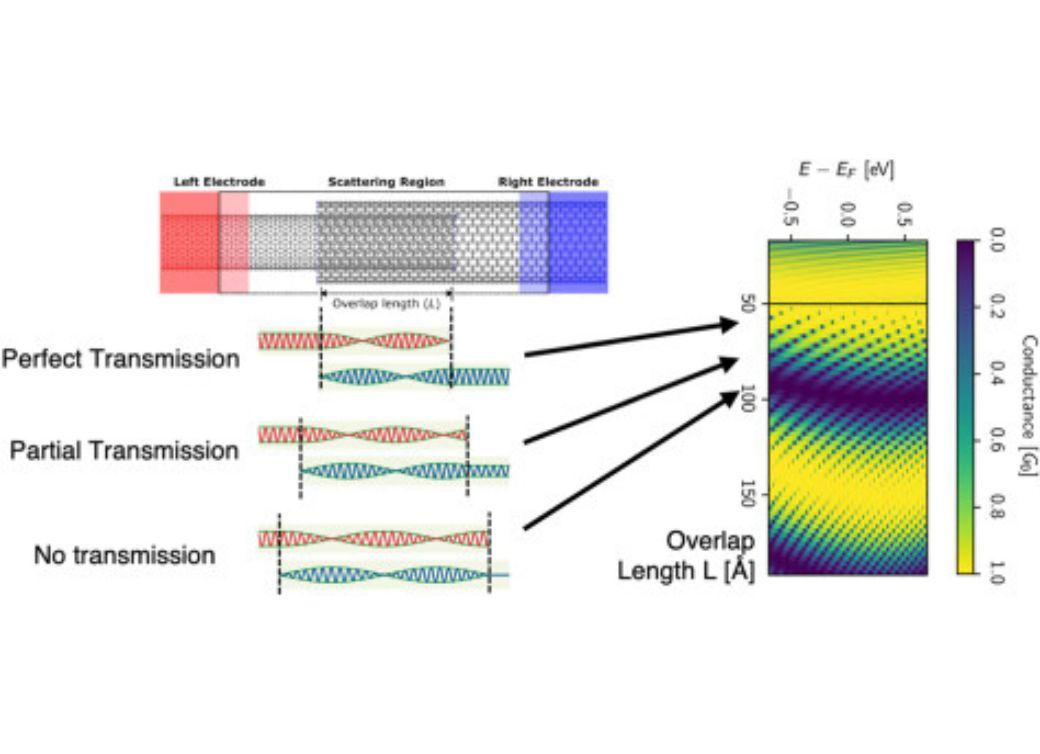
Nils Wittemeier, Matthieu J.Verstraete, Pablo Ordejón, Zeila Zanolli
© 2022, The Author(s)

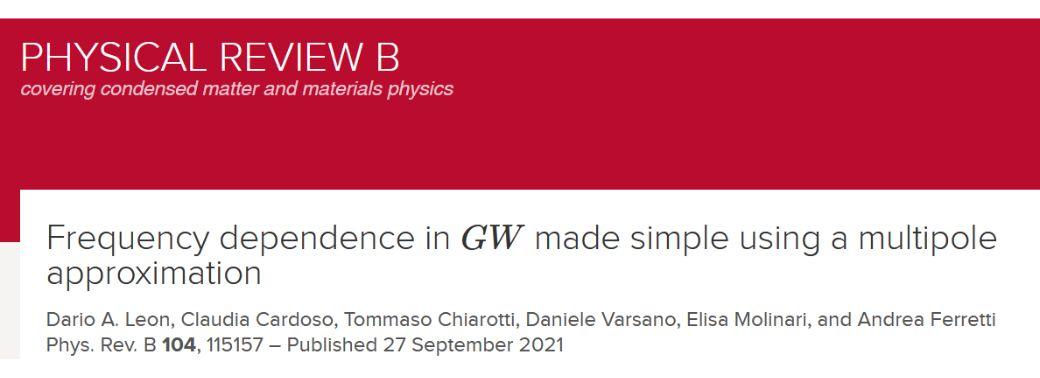
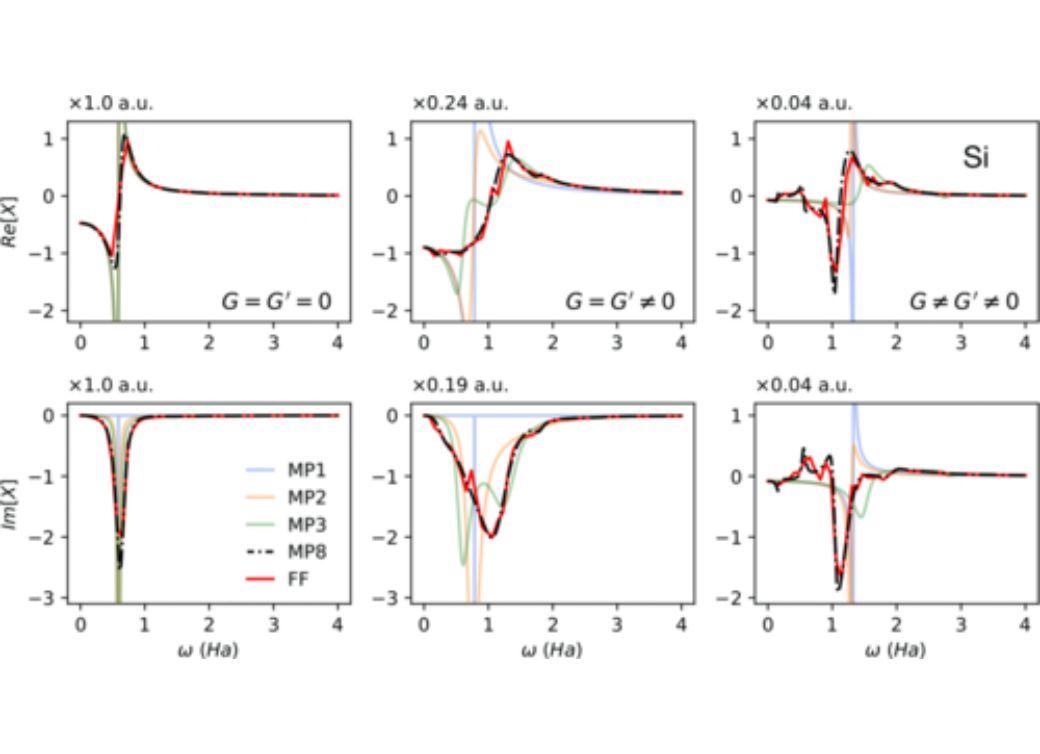
Dario A. Leon, Claudia Cardoso, Tommaso Chiarotti, Daniele Varsano, Elisa Molinari, and Andrea Ferretti Phys. Rev. B 104, 115157
© 2022, The Author(s)
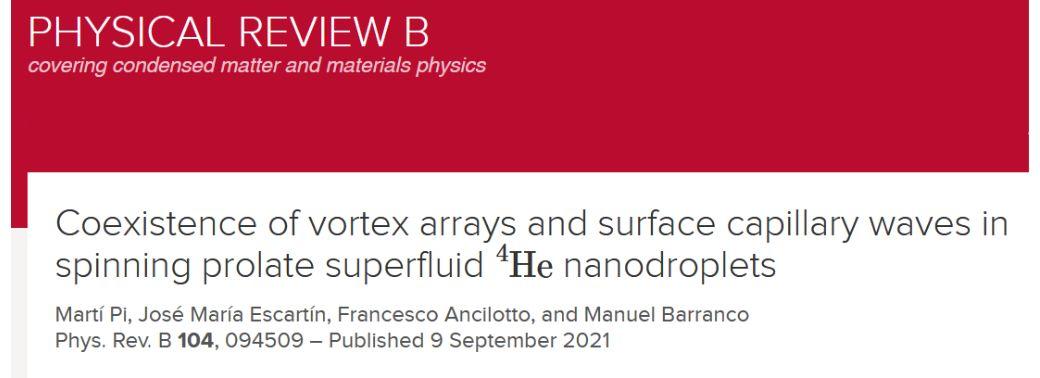
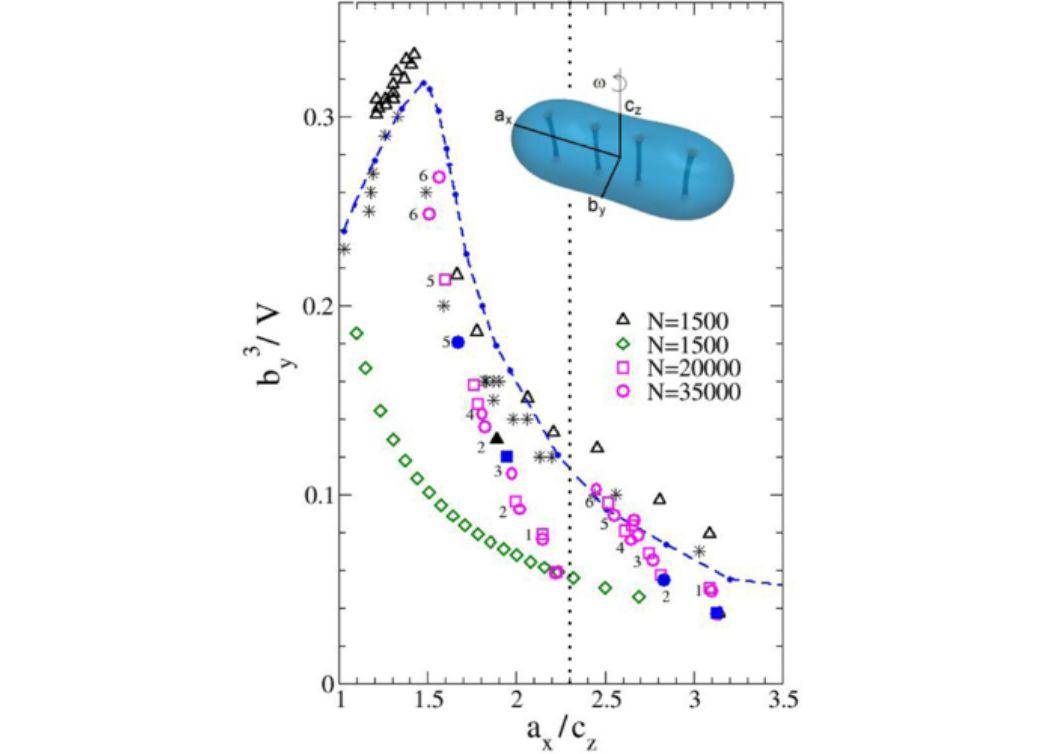
Martí Pi, José María Escartín, Francesco Ancilotto, and Manuel Barranco Phys. Rev. B 104, 094509
© 2022, The Author(s)
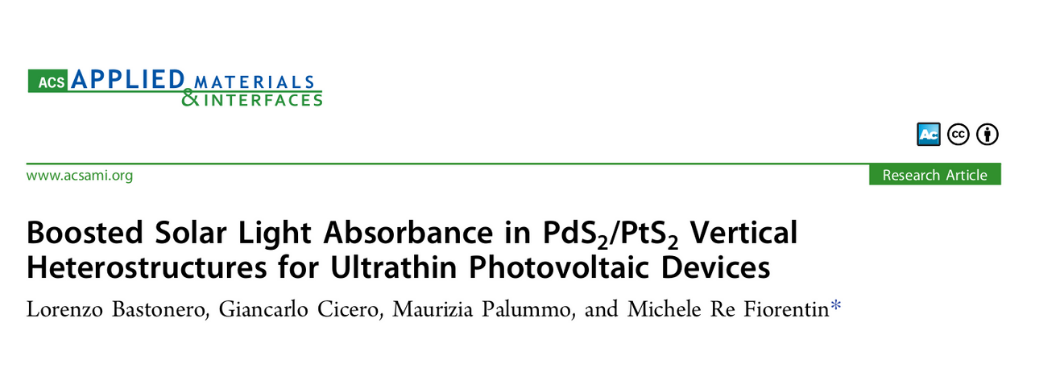
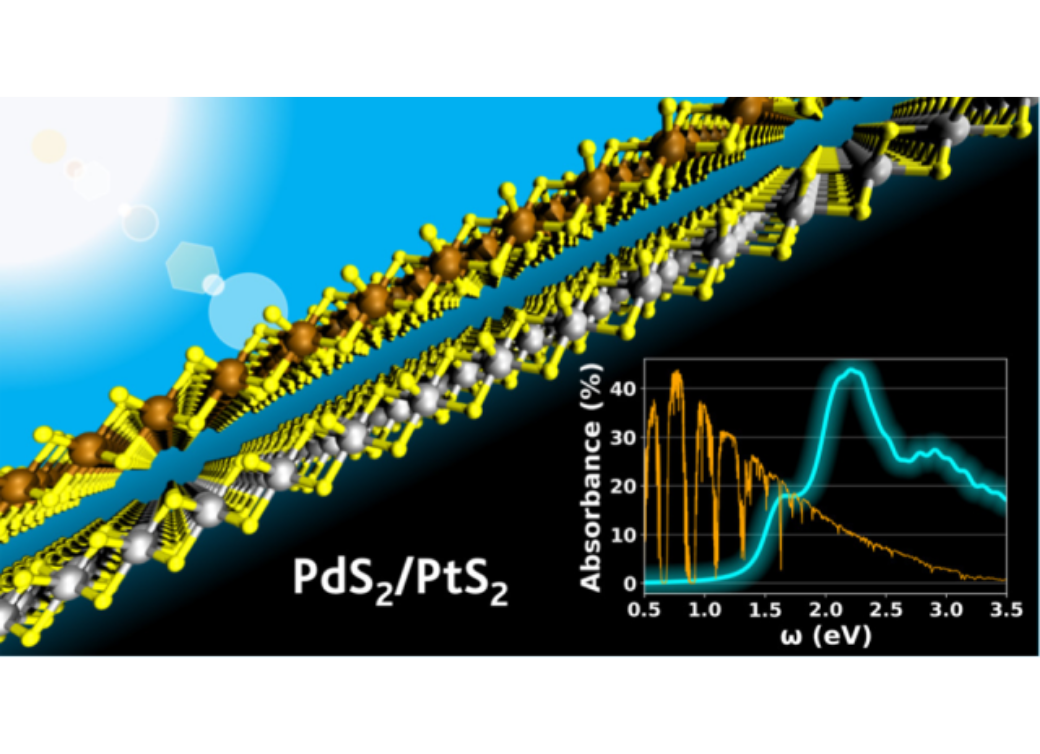
L. Bastonero, G. Cicero, M. Palummo, and M. Re Fiorentin. Boosted Solar Light Absorbance in PdS 2 /PtS 2 Vertical Heterostructures for Ultrathin Photovoltaic Devices. ACS Appl. Mater. Interfaces 2021, 13, 43615−43621
© 2021 The Authors

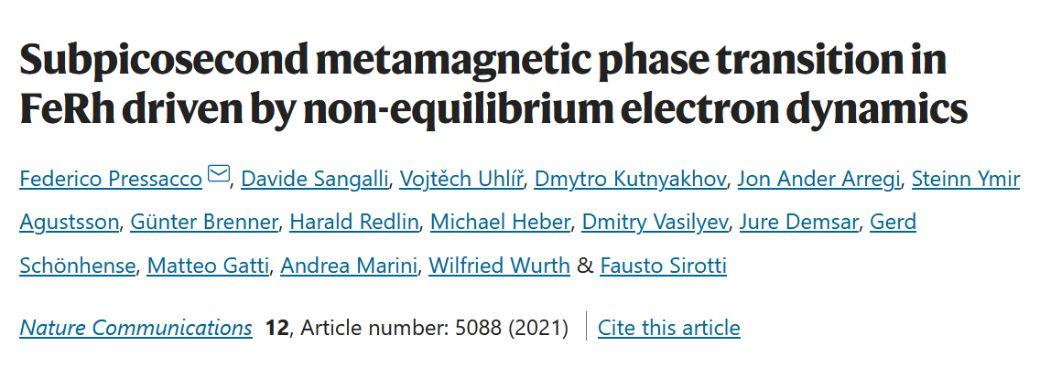
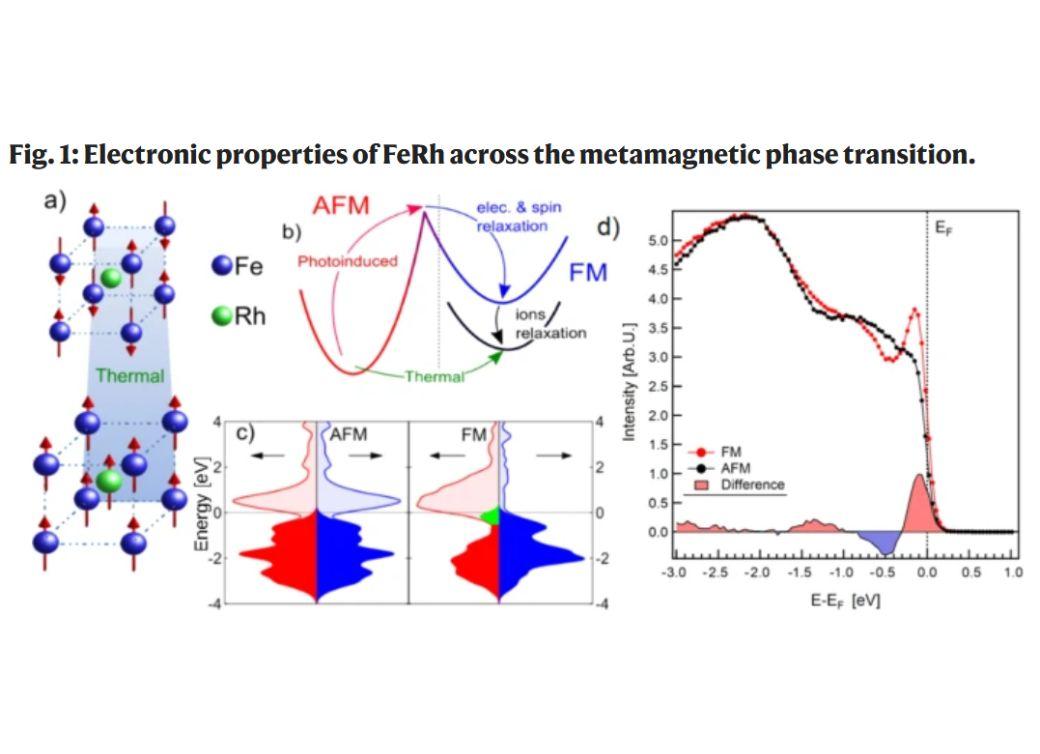
Federico Pressacco, Davide Sangalli, Vojtěch Uhlíř, Dmytro Kutnyakhov, Jon Ander Arregi, Steinn Ymir Agustsson, Günter Brenner, Harald Redlin, Michael Heber, Dmitry Vasilyev, Jure Demsar, Gerd Schönhense, Matteo Gatti, Andrea Marini, Wilfried Wurth & Fausto Sirotti Nature Communications volume 12, Article number: 5088 (2021)
© 2022, The Author(s)

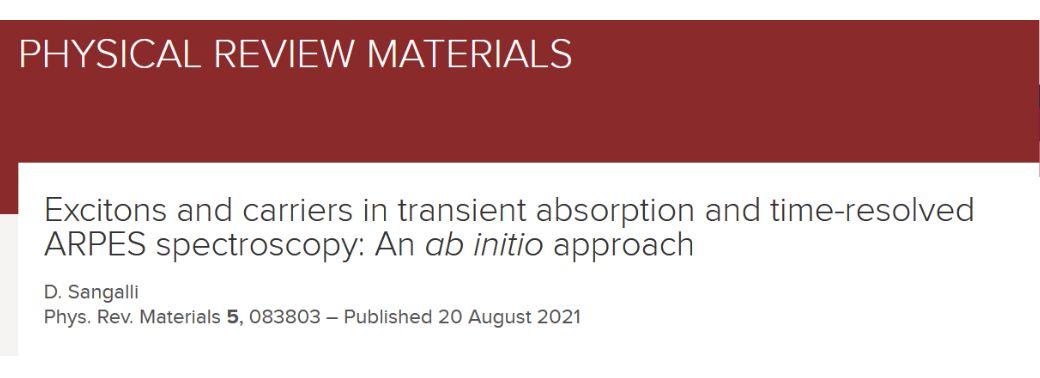
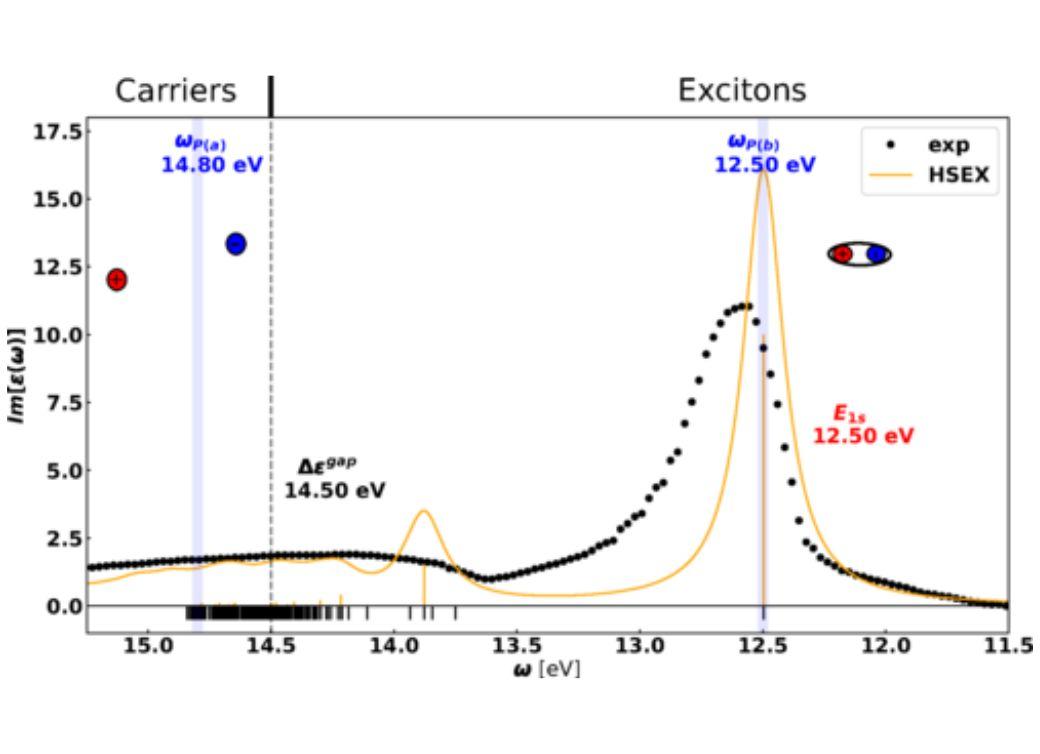
D. Sangalli Phys. Rev. Materials 5, 083803
© 2022, The Author(s)
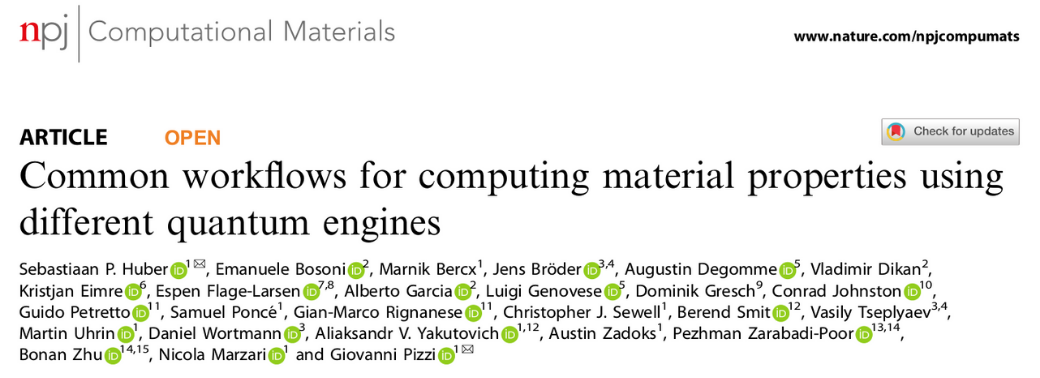

S.P. Huber, E. Bosoni, M. Bercx, et al. Common workflows for computing material properties using different quantum engines. npj Comput Mater 7, 136 (2021).
© 2021, The Author(s)
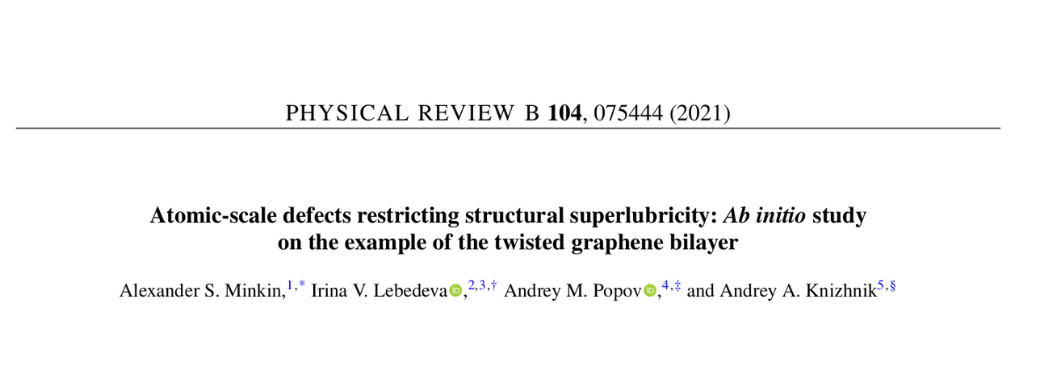
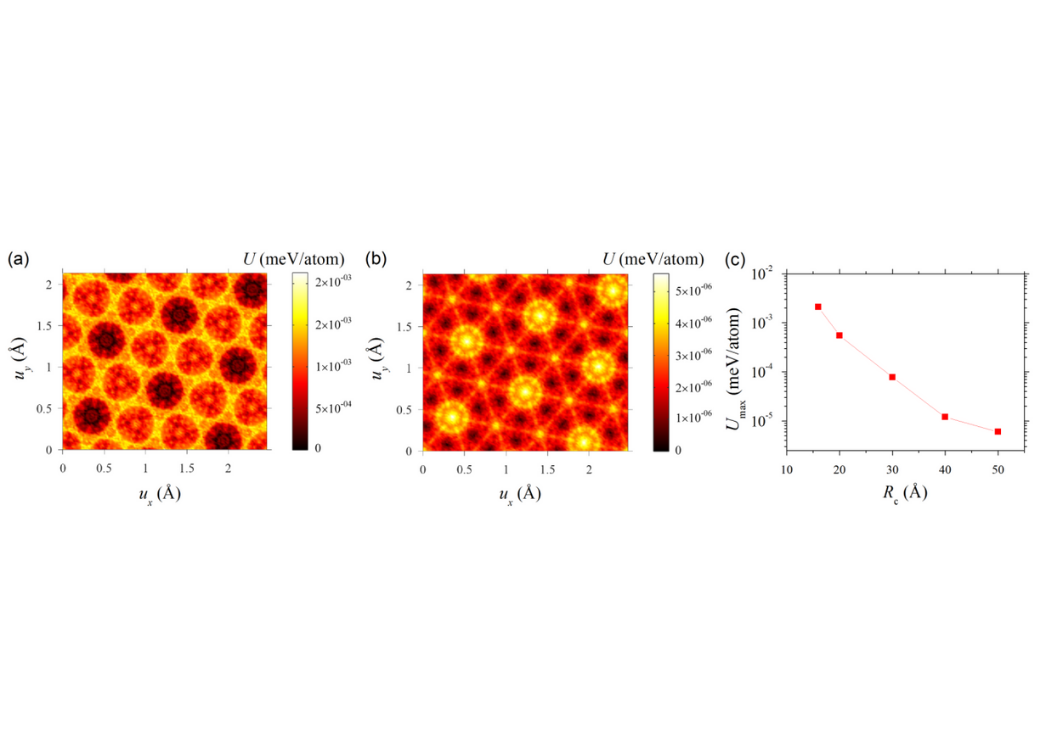
A. S. Minkin, I. V. Lebedeva, A. M. Popov, and A. A. Knizhnik. Atomic-scale defects restricting structural superlubricity: Ab initio study study on the example of the twisted graphene bilayer. Phys. Rev. B 104, 075444
©2021 American Physical Society
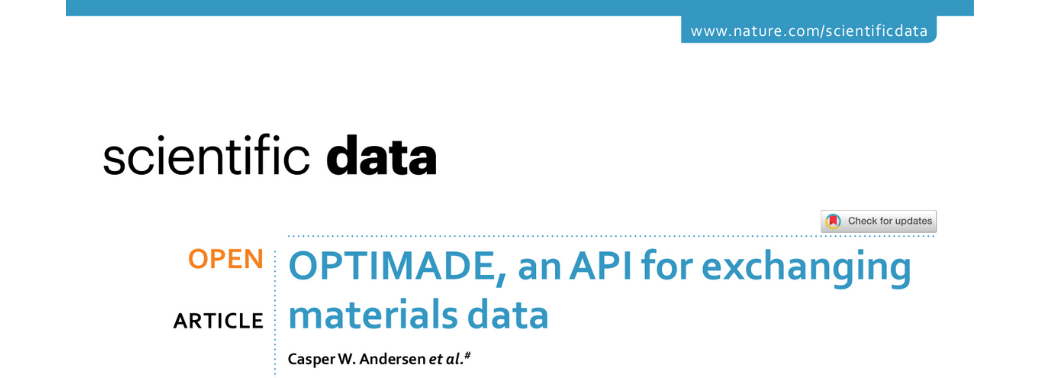
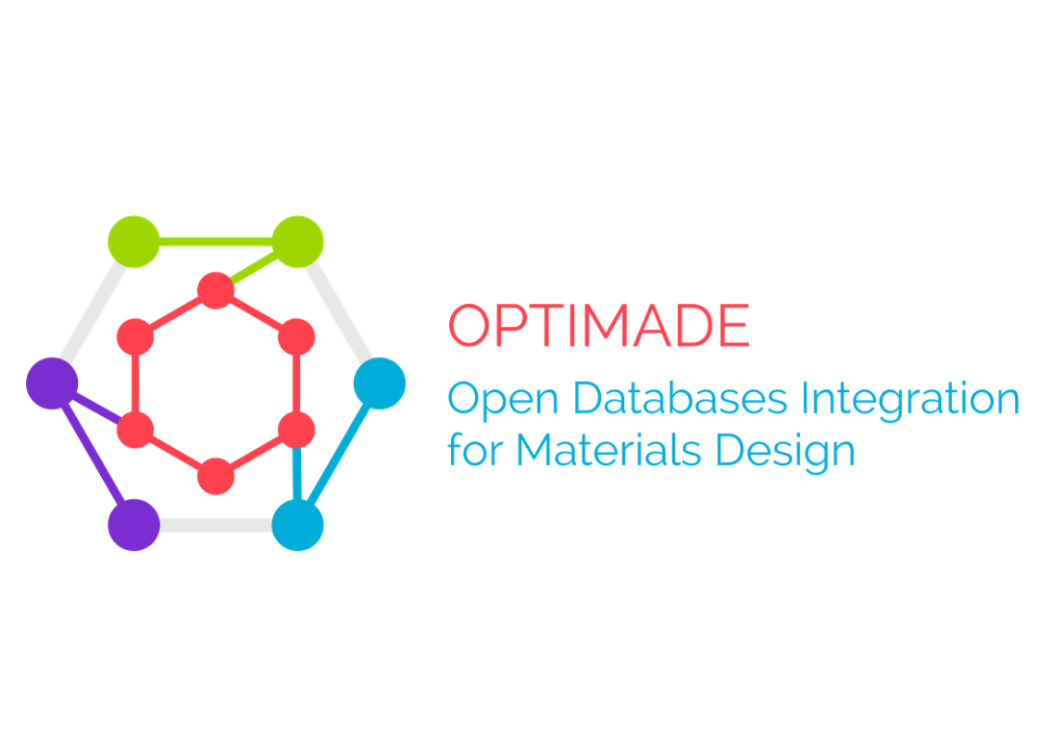
C.W.Andersen, R. Armiento, E. Blokhin et al. OPTIMADE, an API for exchanging materials data. Sci Data 8, 217 (2021).
© 2021, The Author(s)
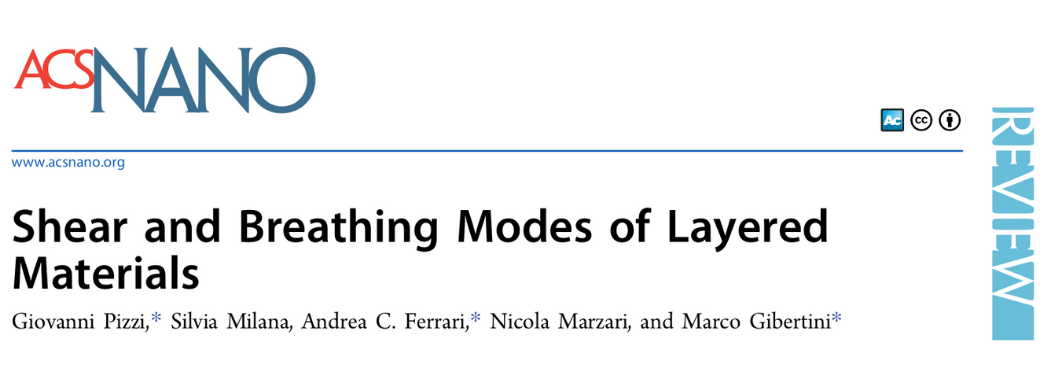
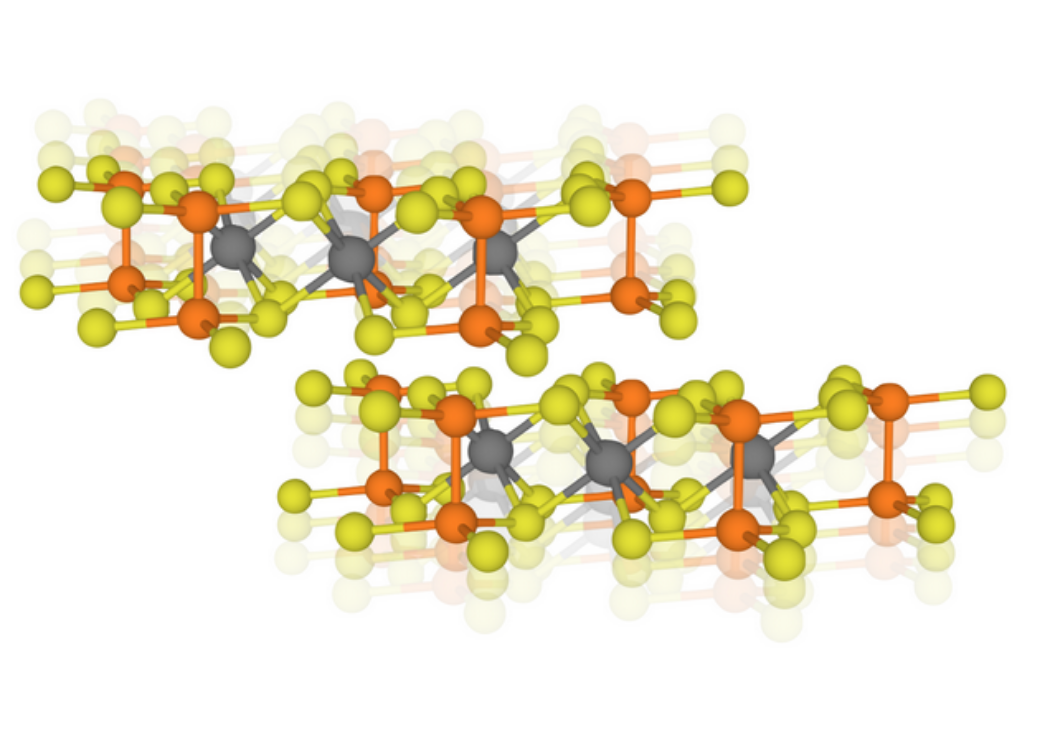
G. Pizzi, S. Milana, A. C. Ferrari, N. Marzari, and M. Gibertini. Shear and Breathing Modes of Layered Materials. ACS Nano 2021, 15, 8, 12509–12534
© 2021 The Authors
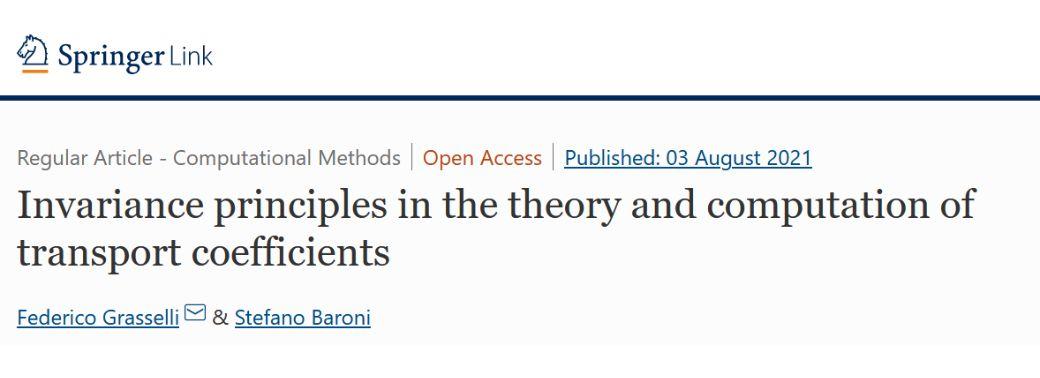
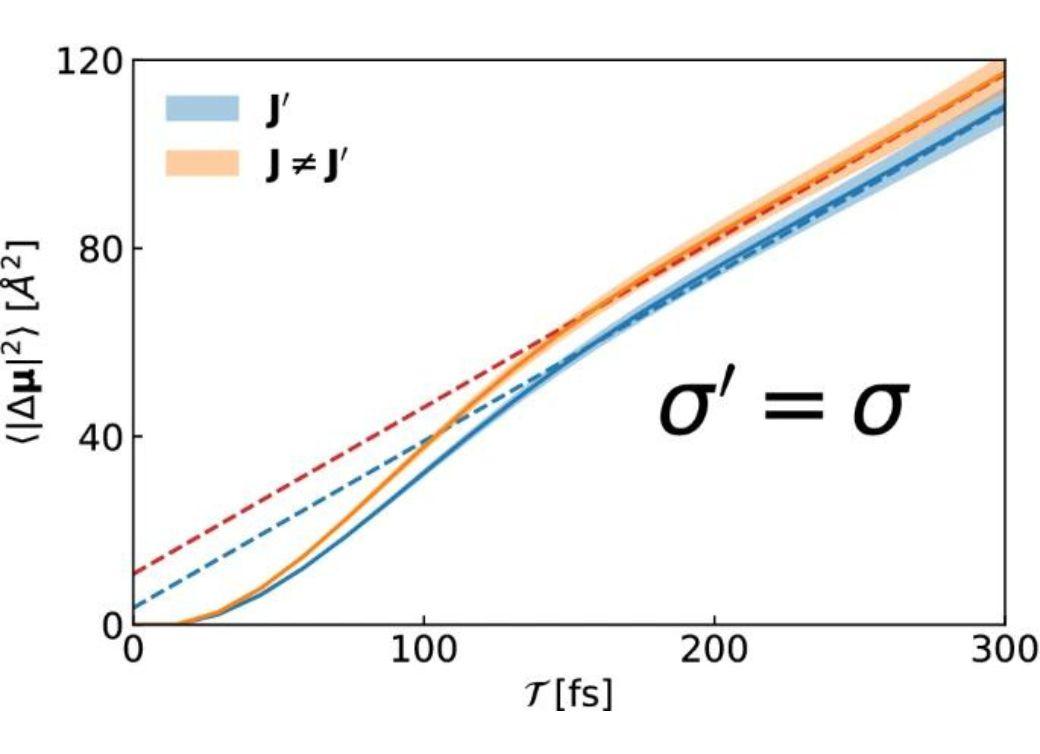
Federico Grasselli & Stefano Baroni The European Physical Journal B volume 94, Article number: 160 (2021)
© 2022, The Author(s)

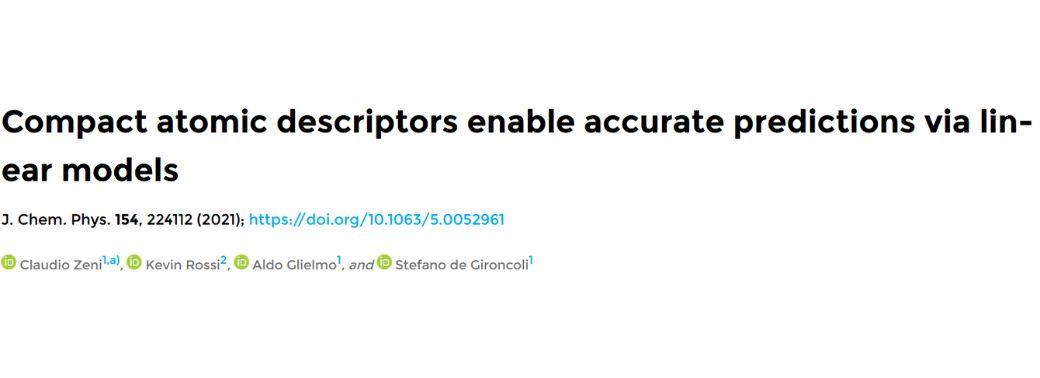
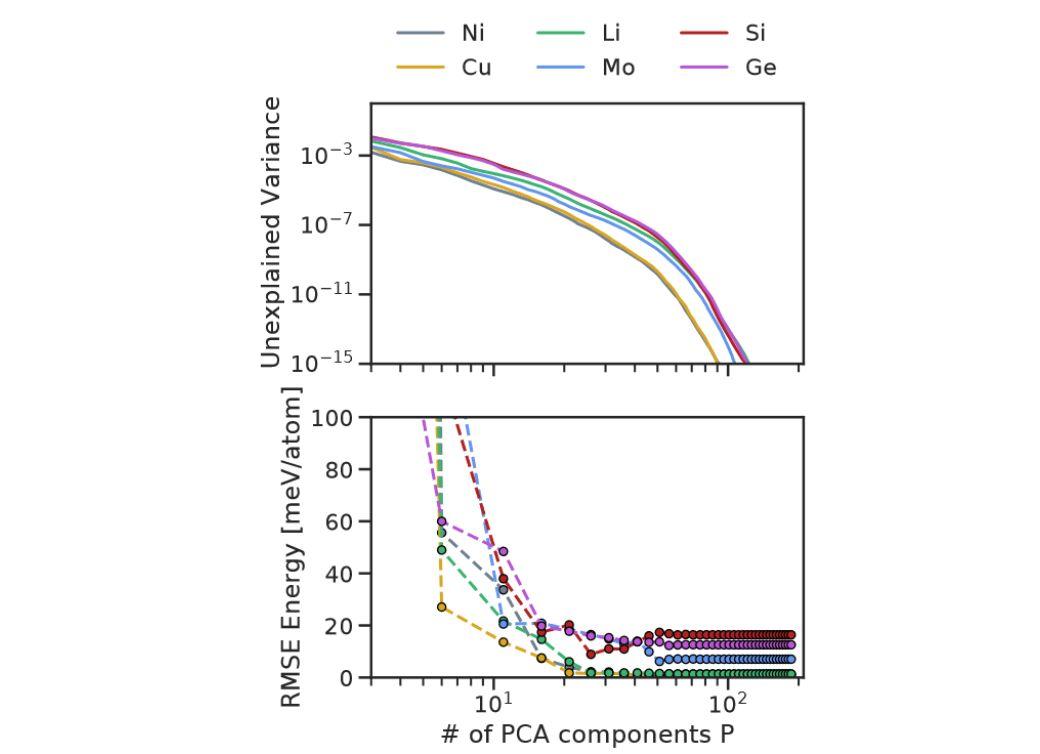
Claudio Zeni1, Kevin Rossi, Aldo Glielmo and Stefano de Gironcoli J. Chem. Phys. 154, 224112 (2021)
© 2022, The Author(s)
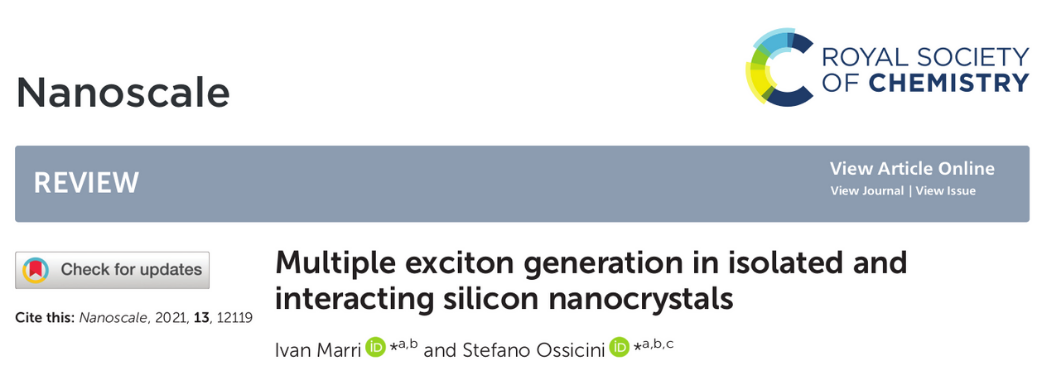
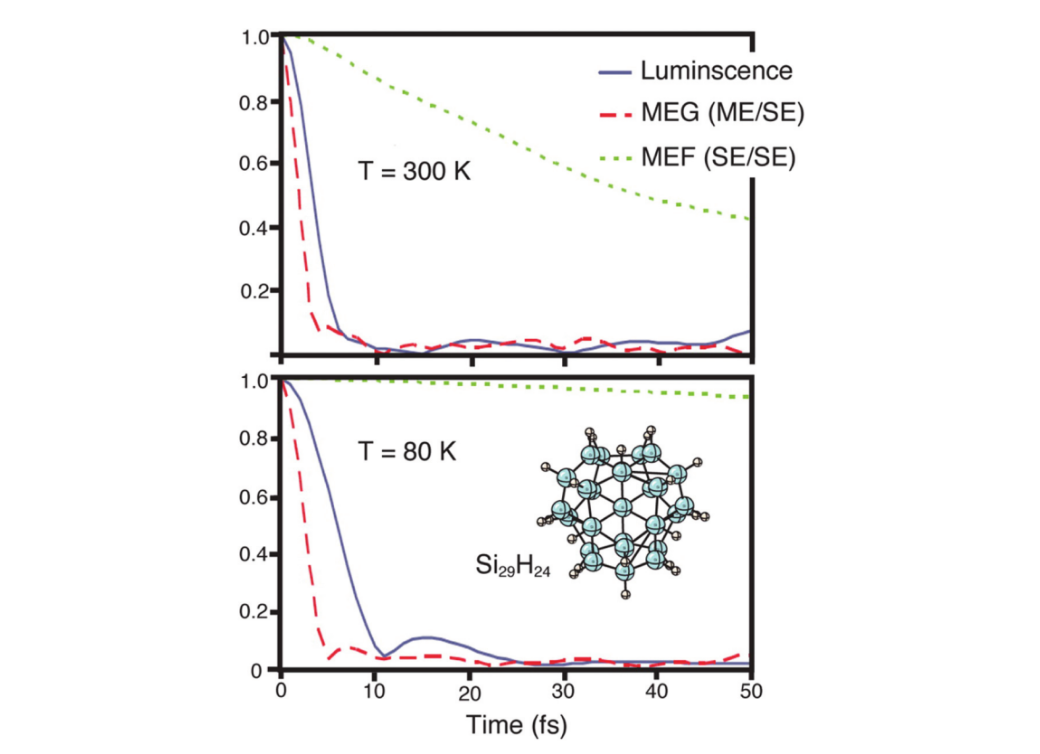
I. Marri and S. Ossicini. Multiple exciton generation in isolated and interacting silicon nanocrystals. Nanoscale 13, 12119-12142 (2021)
© The Royal Society of Chemistry 2021
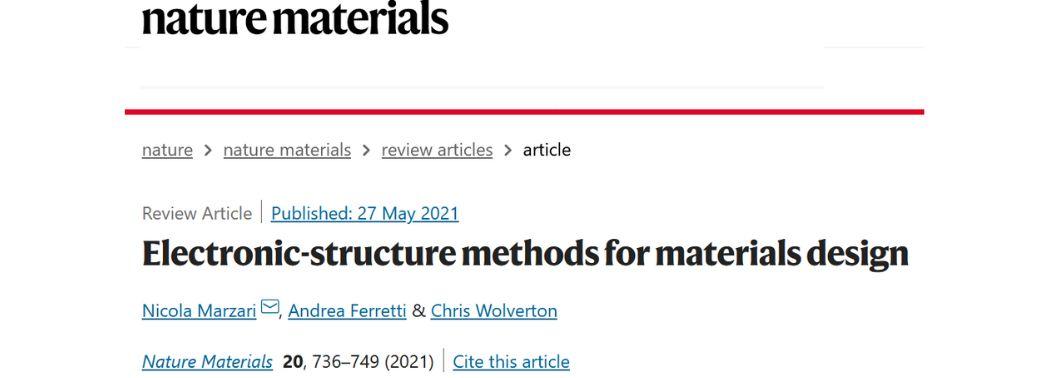
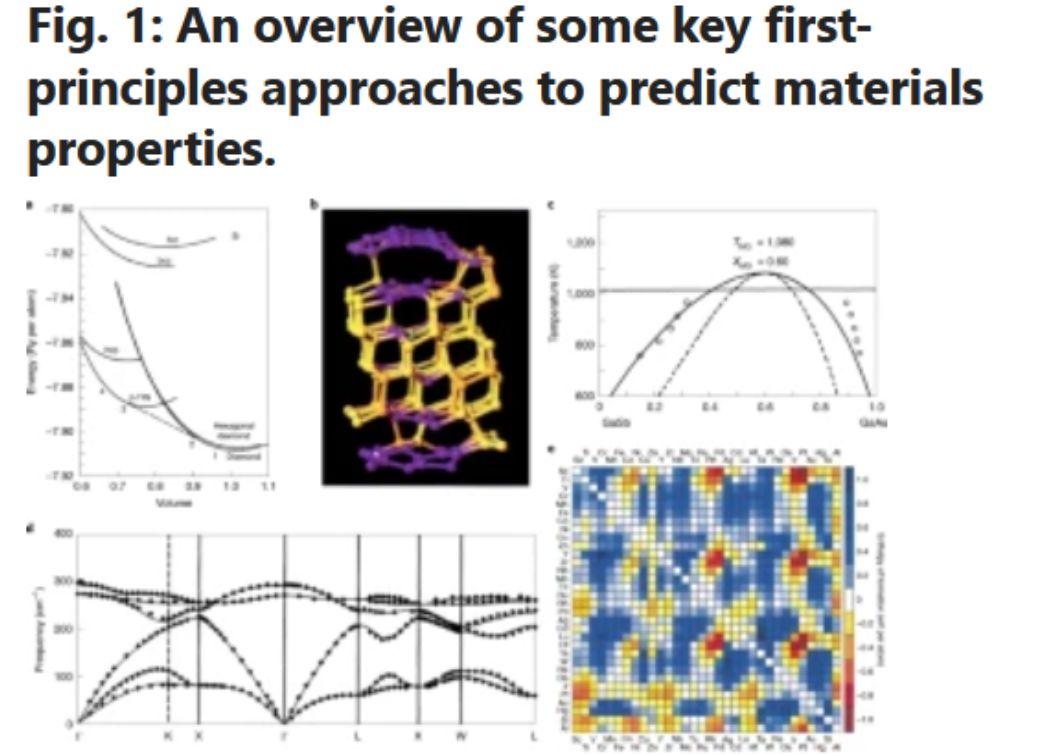
Nicola Marzari, Andrea Ferretti & Chris Wolverton Nature Materials volume 20, pages 736–749 (201)
© 2022, The Author(s)
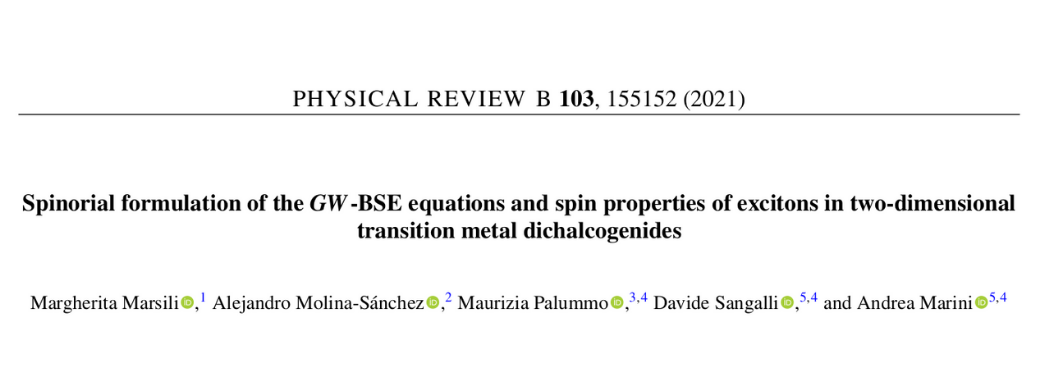
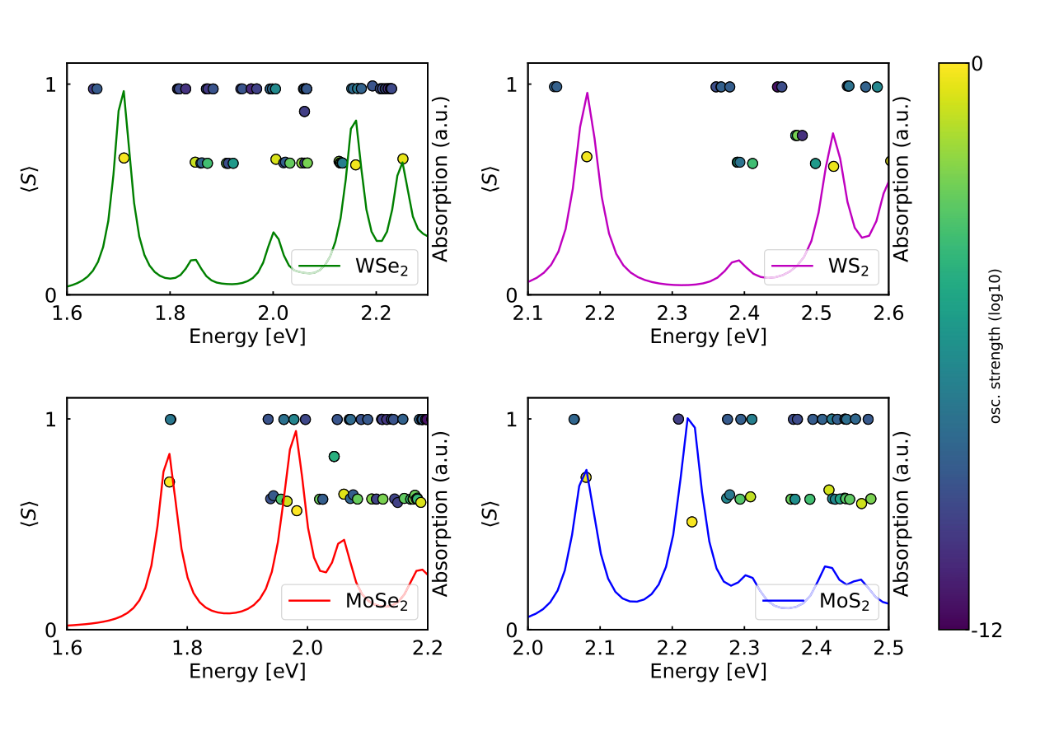
M. Marsili, A. Molina-Sánchez, M. Palummo, D. Sangalli, and A. Marini. Spinorial formulation of the GW -BSE equations and spin properties of excitons in two-dimensional transition metal dichalcogenides. Phys. Rev. B 103, 155152
©2021 American Physical Society

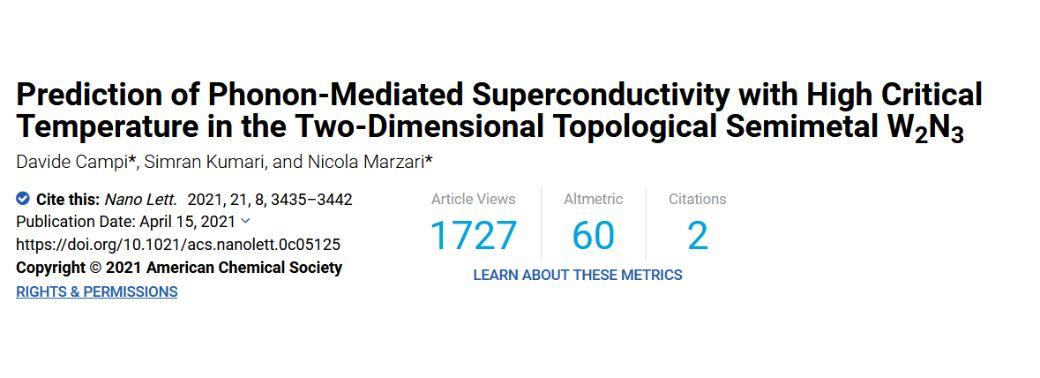
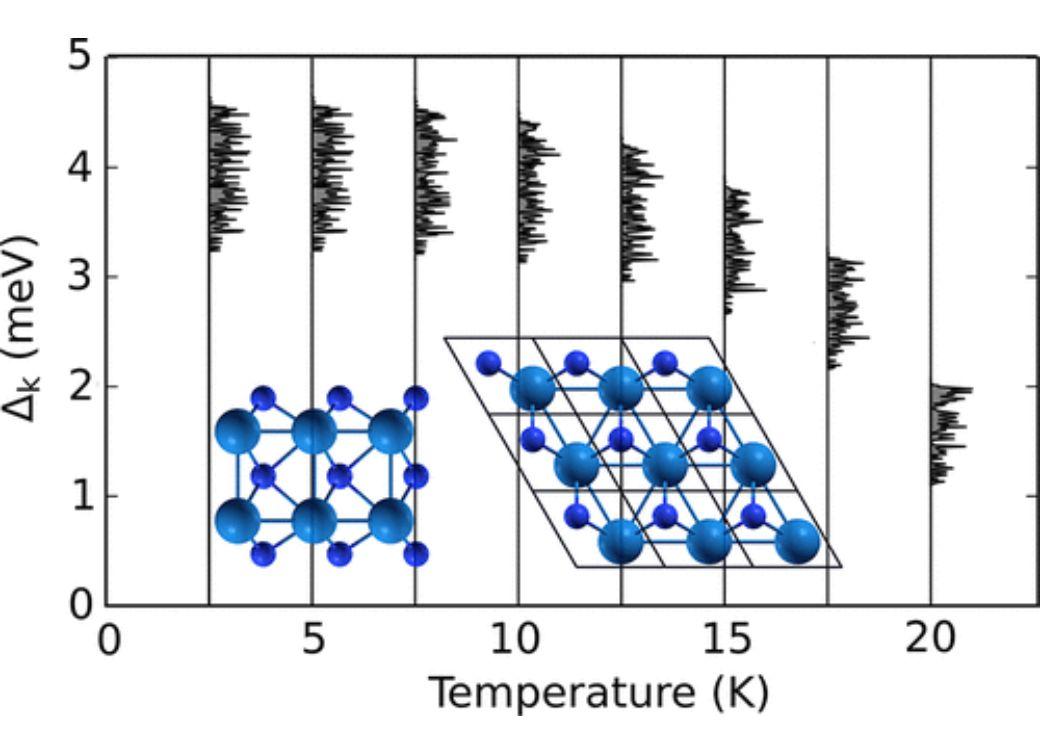
Davide Campi, Simran Kumari, and Nicola Marzari
© 2022, The Author(s)
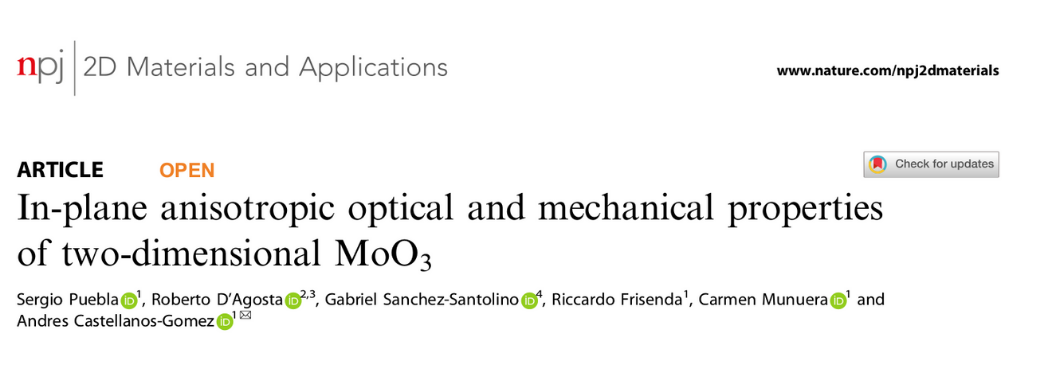
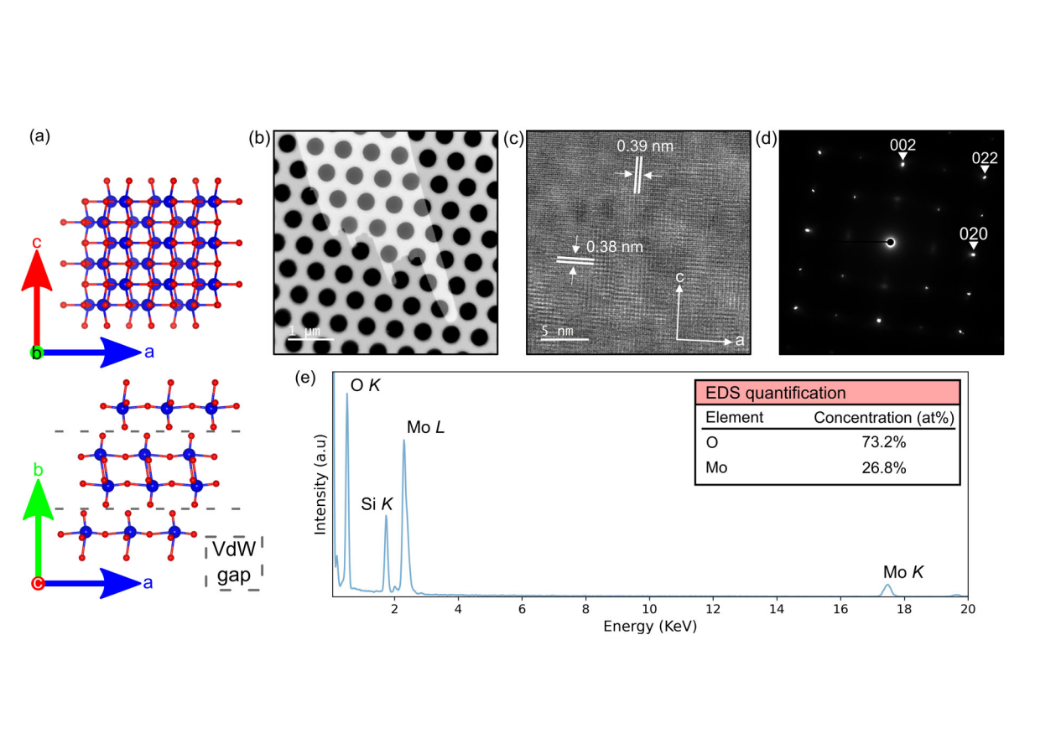
S. Puebla, R. D’Agosta, G. Sanchez-Santolino, et al. In-plane anisotropic optical and mechanical properties of two-dimensional MoO3. npj 2D Mater Appl 5, 37
© The Author(s) 2021

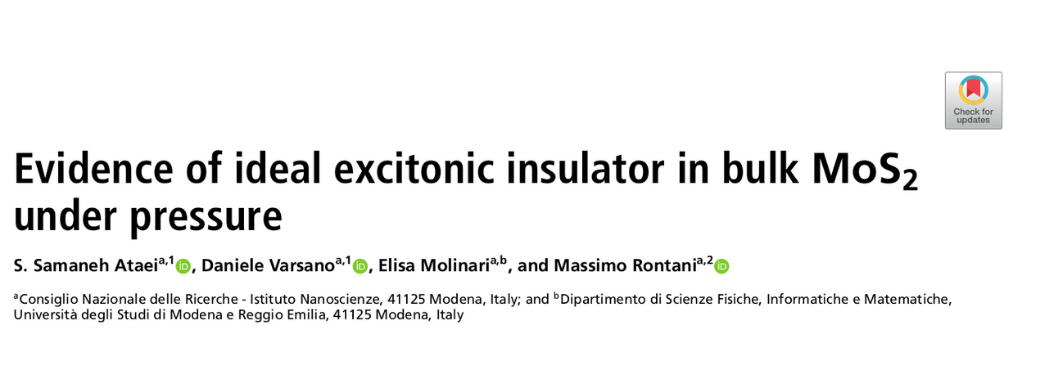
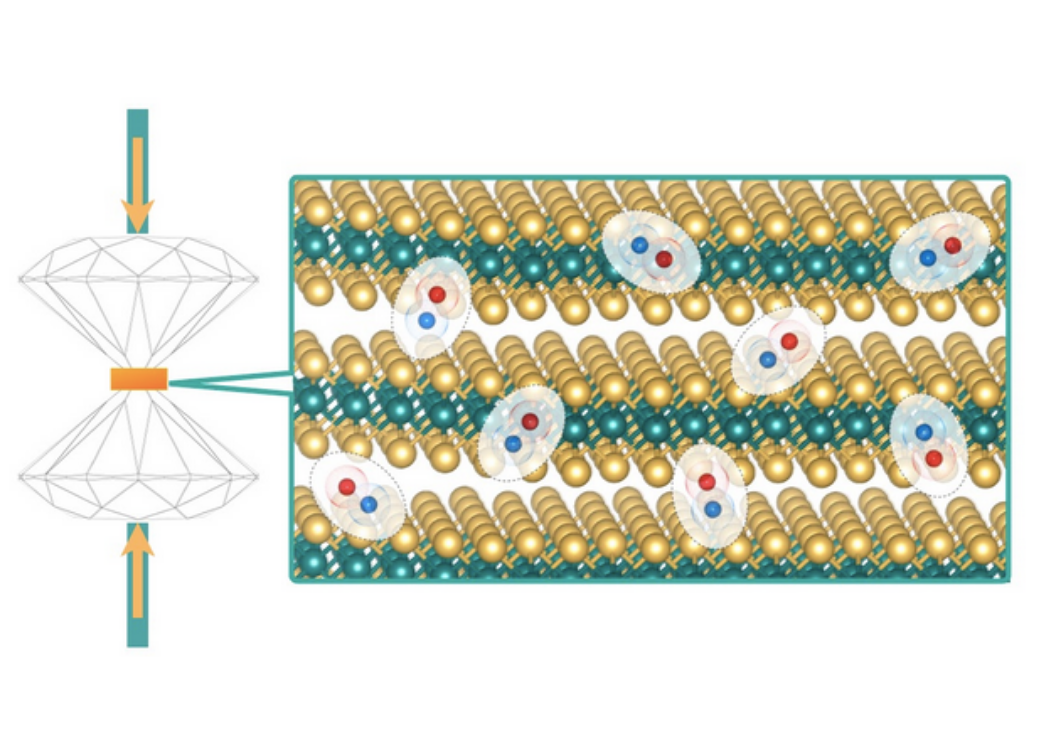
S. S. Ataei, D. Varsano, E. Molinari, and M. Rontani. Evidence of ideal excitonic insulator in bulk MoS2 under pressure. PNAS March 30, 2021 118 (13) e2010110118
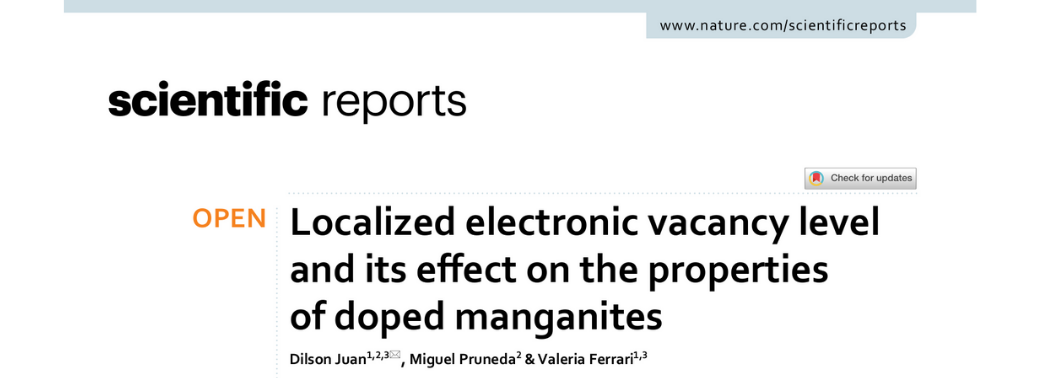
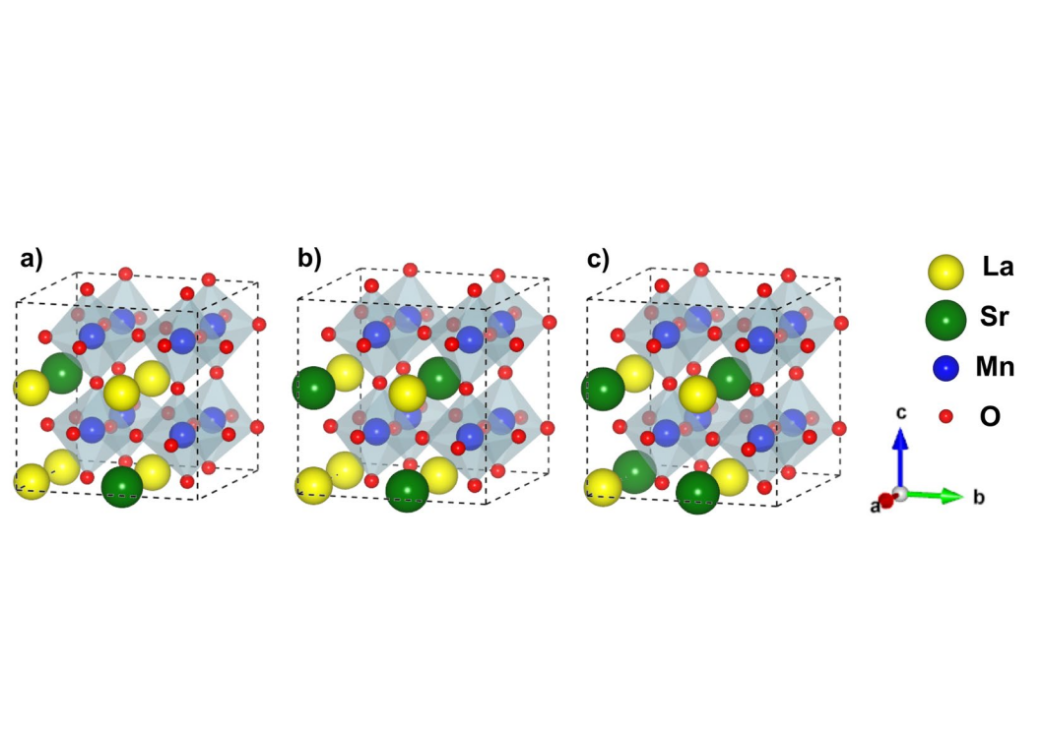
D. Juan, M. Pruneda, and V. Ferrari. Localized electronic vacancy level and its effect on the properties of doped manganites. Scientific Reports 11, 6706 (2021)
© 2021, The Author(s)

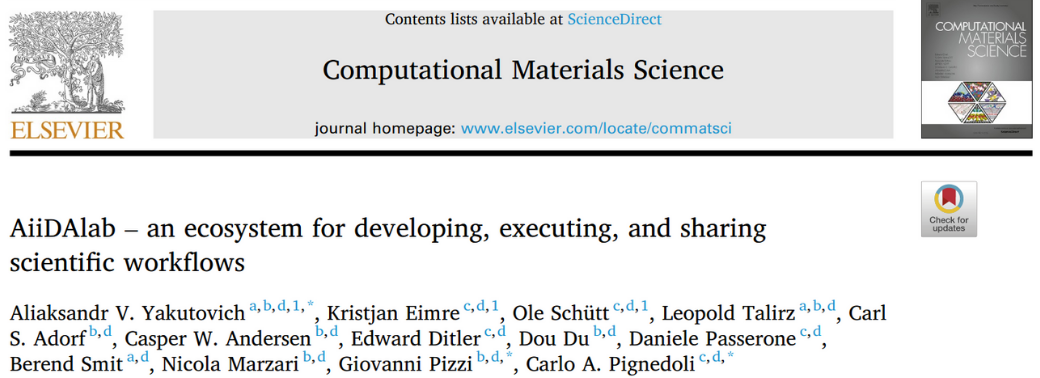
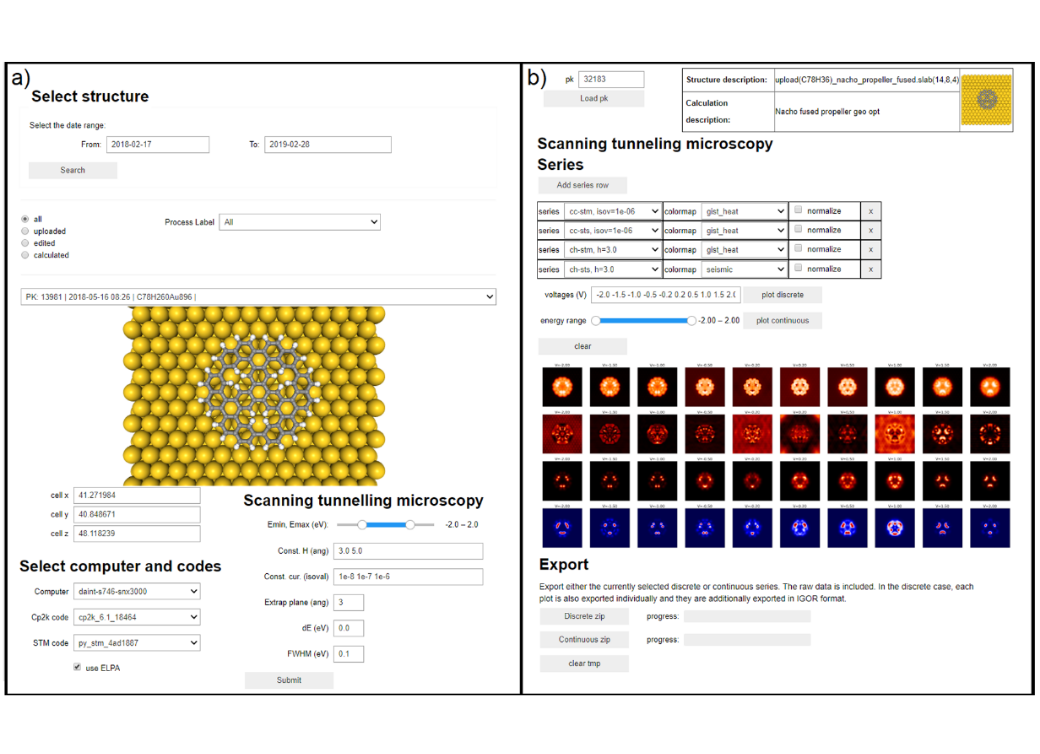
A.V. Yakutovic, K. Eimre, O. Schütt, L. Talirz, C.S. Adorf, C.W. Andersen, E. Ditler, D. Du, D. Passerone, B. Smit, N. Marzari, G. Pizzi and C.A. Pignedoli, AiiDAlab – an ecosystem for developing, executing, and sharing scientific workflows, Computational Materials Science 188, 110165 (2021)
© 2020 The Authors
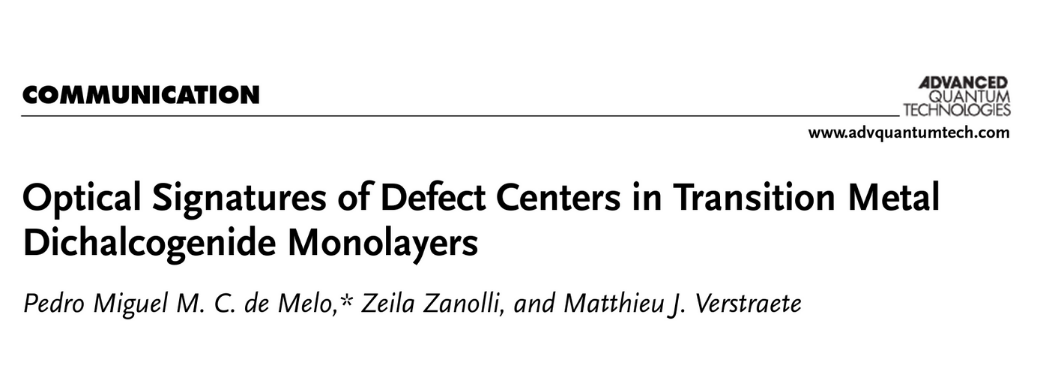
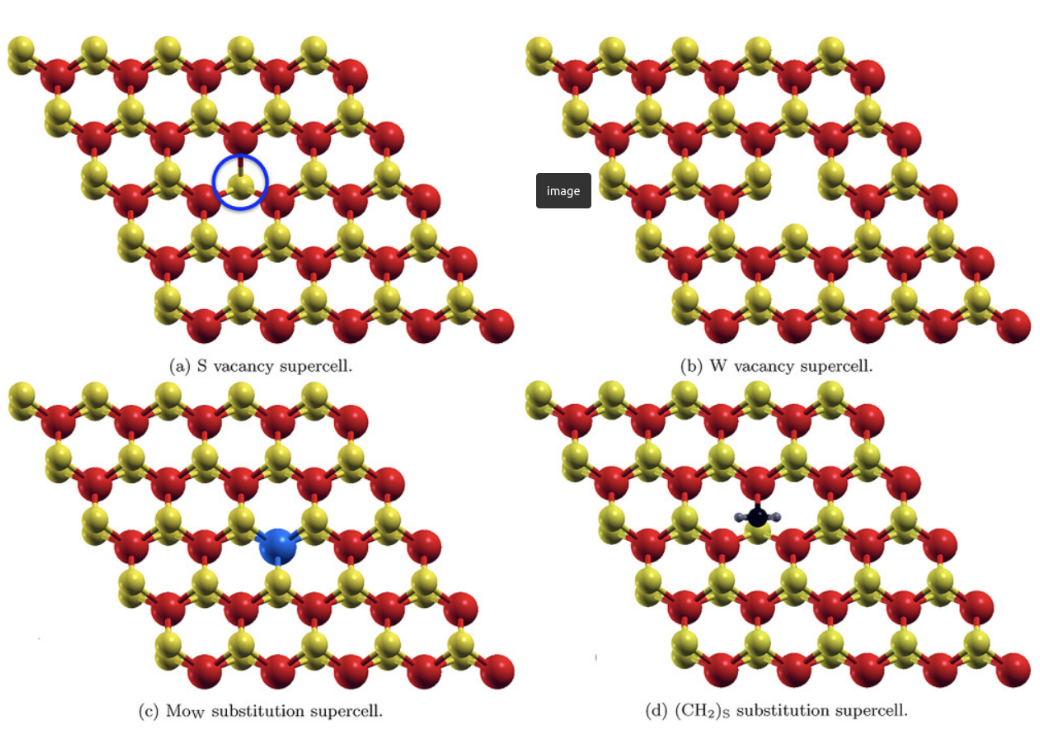
P. M. M. C. de Melo, Z. Zanolli and M.J. Verstraete, Optical Signatures of Defect Centers in Transition Metal Dichalcogenide Monolayers, Advanced Quantum Technologies, 202000118 (2020)
© The Authors
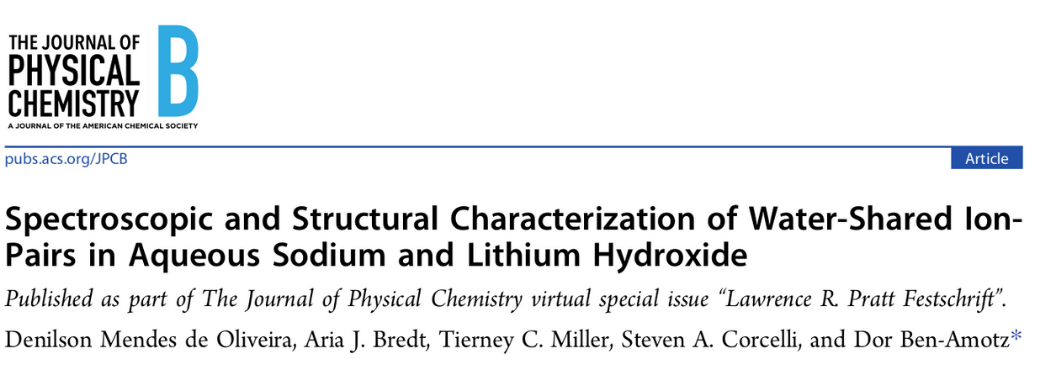
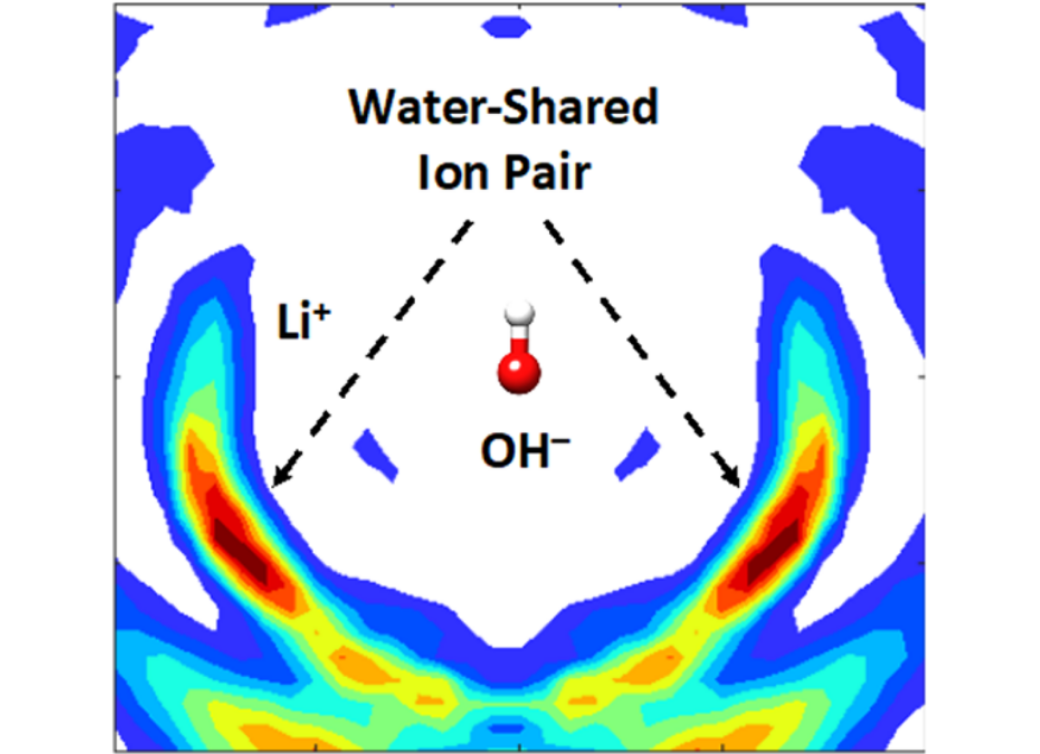
D. Mendes de Oliveira, A. J. Bredt, T. C. Miller, S. A. Corcelli, and D. Ben-Amotz. Spectroscopic and Structural Characterization of Water-Shared Ion-Pairs in Aqueous Sodium and Lithium Hydroxide. The Journal of Physical Chemistry B 2021 125 (5), 1439-1446
© 2021 American Chemical Society

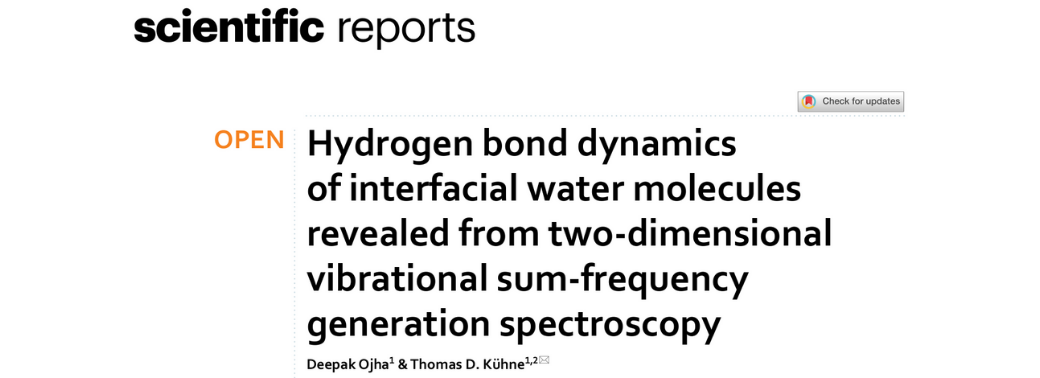
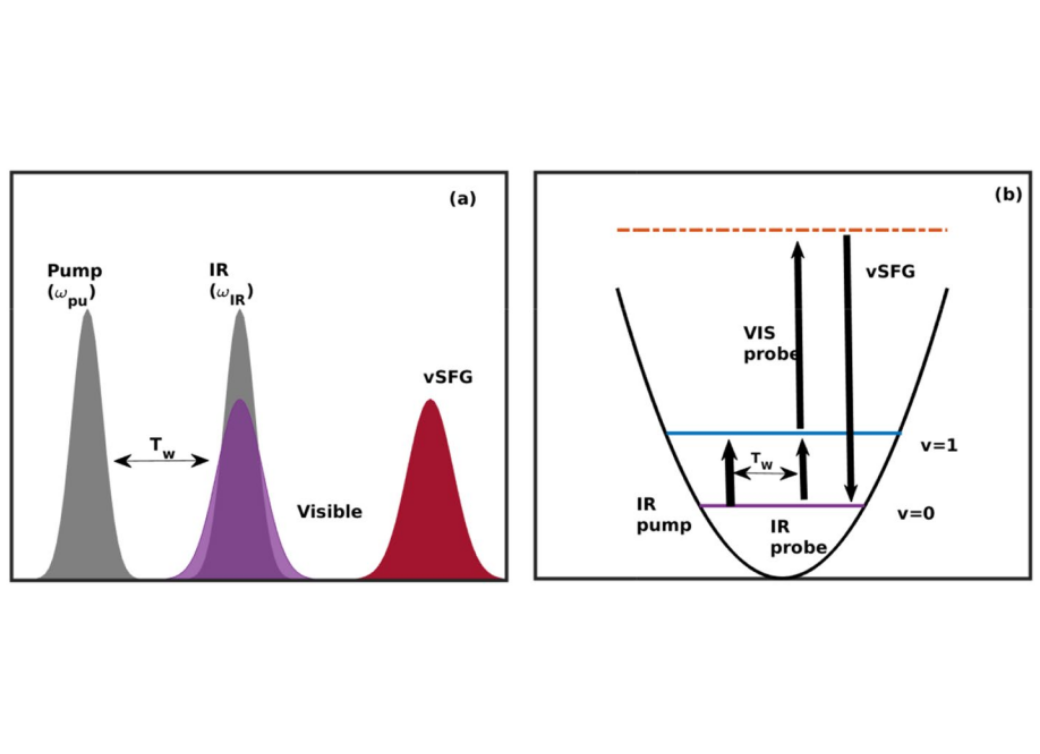
D. Ojha, T.D. Kühne. Hydrogen bond dynamics of interfacial water molecules revealed from two-dimensional vibrational sum-frequency generation spectroscopy. Sci Rep 11, 2456 (2021)
© The Authors

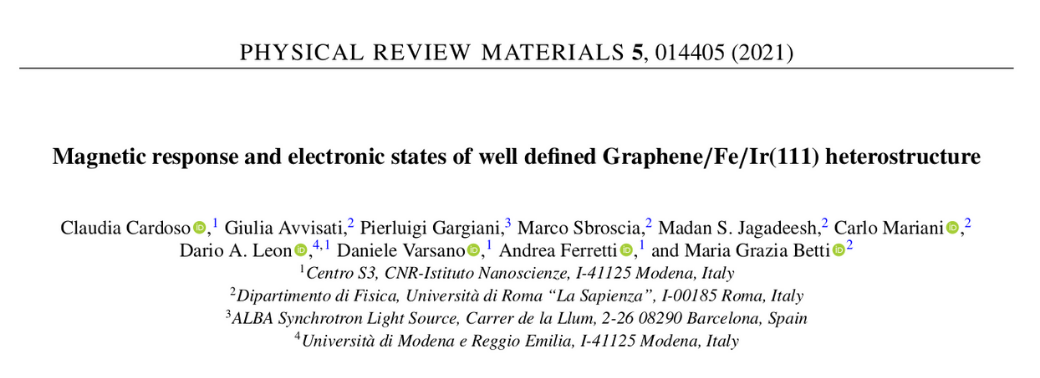
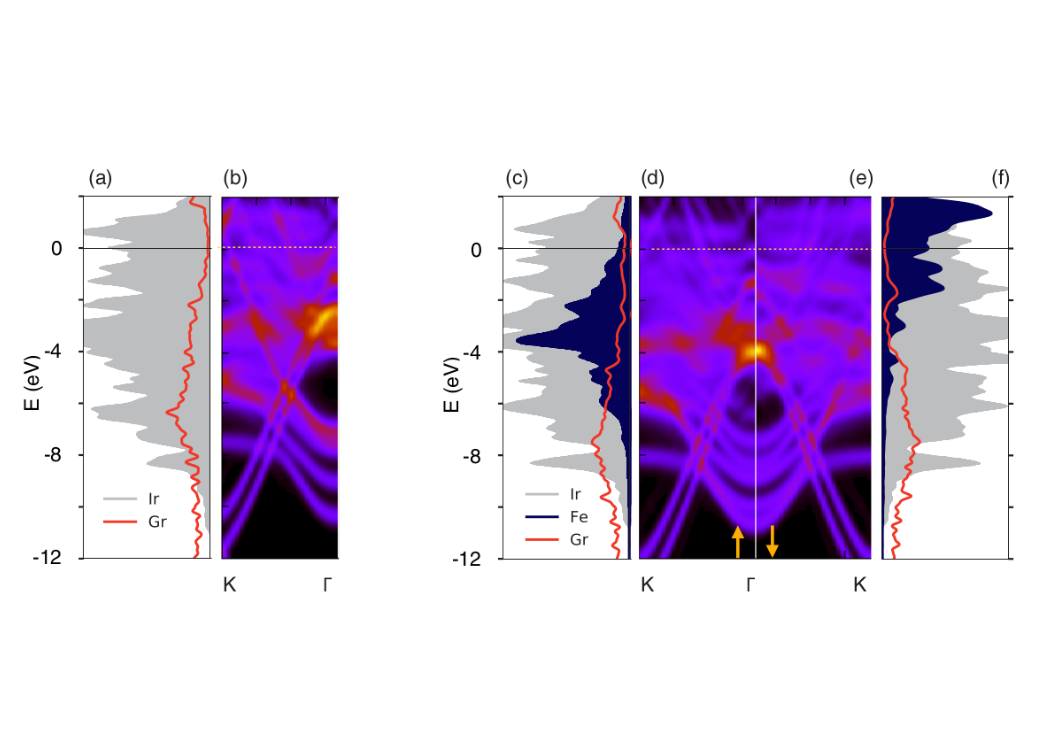
C. Cardoso, G. Avvisati, P. Gargiani, M. Sbroscia, M.S. Jagadeesh, C. Mariani, D.A. Leon Valido, D. Varsano, A. Ferretti, and M.G. Betti, Magnetic response and electronic states of well defined Graphene/Fe/Ir(111) heterostructure, Phys. Rev. Materials 5, 014405 (2020)
©2020 American Physical Society
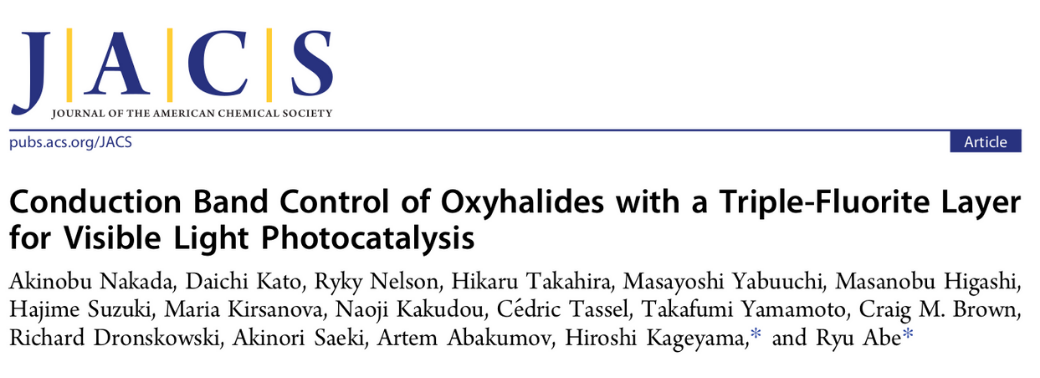
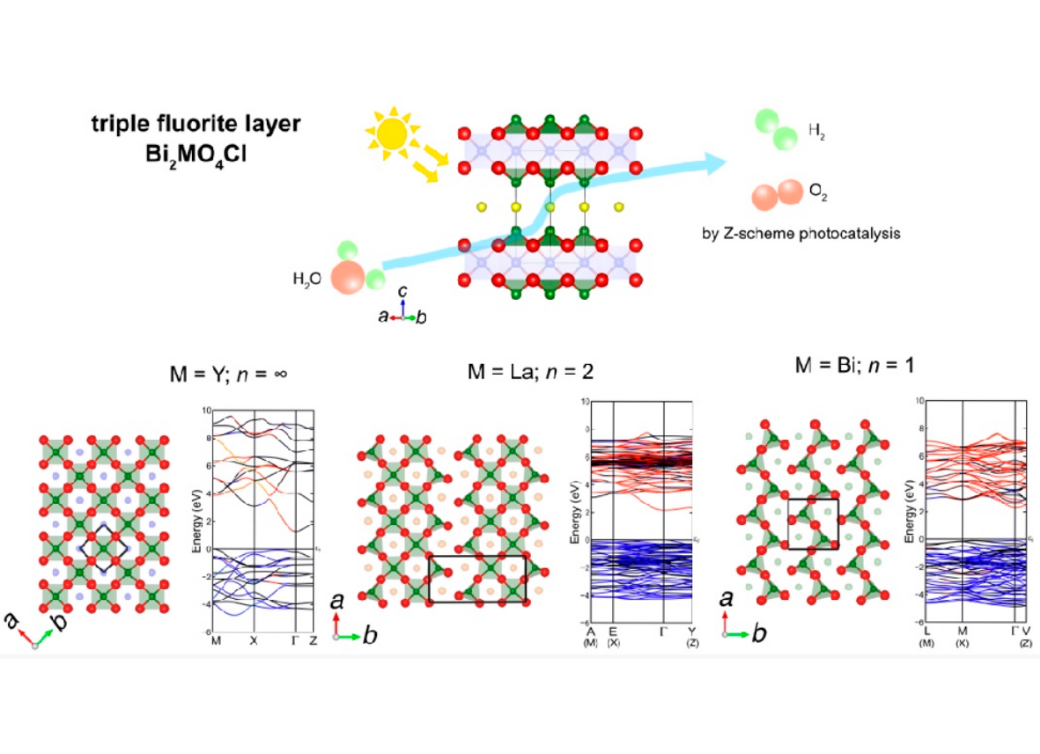
© 2021 American Chemical Society

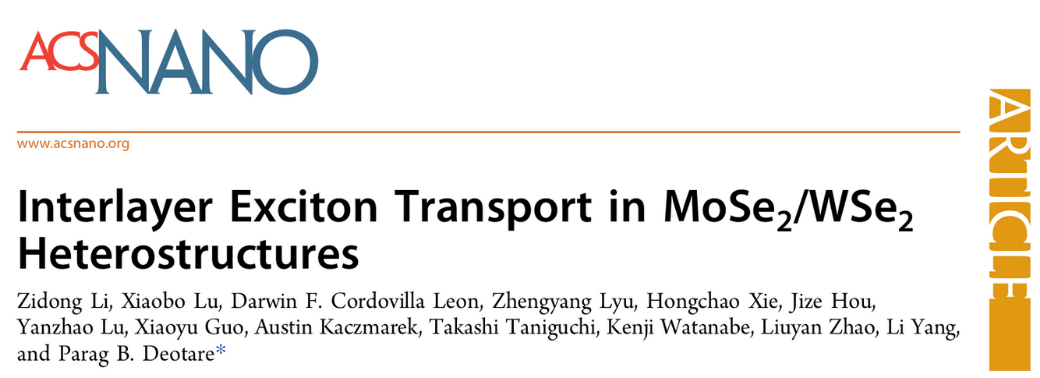
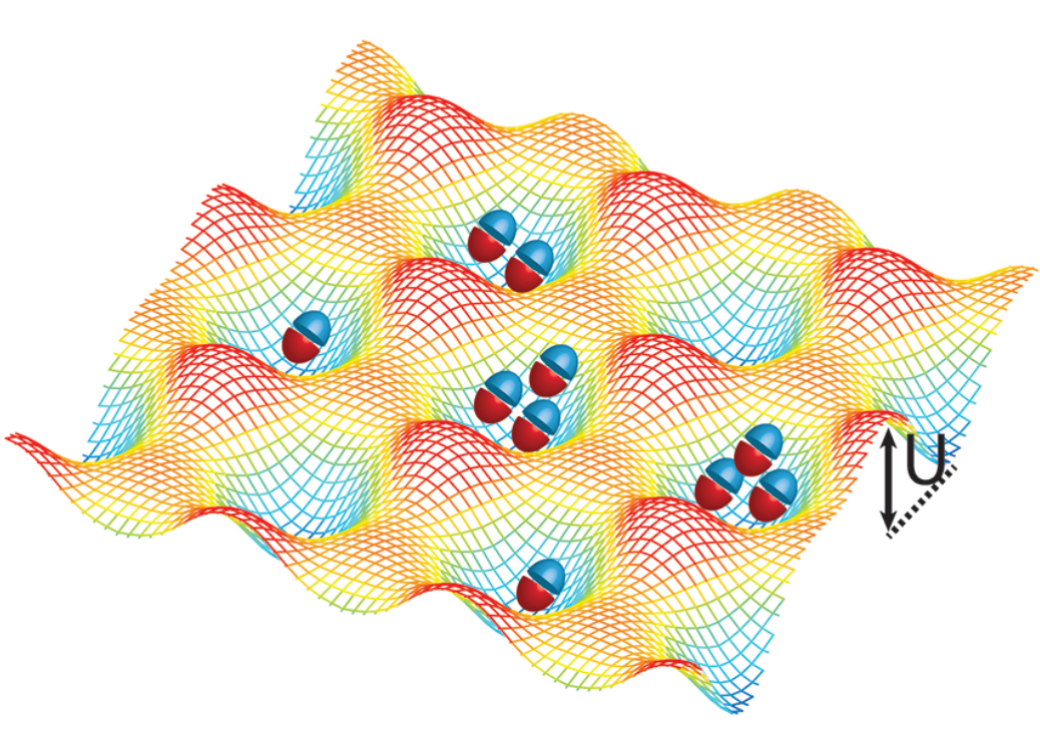
Z. Li, X. Lu, D. F. Cordovilla Leon, Z. Lyu, H. Xie, J. Hou, Y. Lu, X. Guo, A. Kaczmarek, T. Taniguchi, K. Watanabe, L. Zhao, L. Yang, and P. B. Deotare. Interlayer Exciton Transport in MoSe2/WSe2 Heterostructures. ACS Nano 2021 15 (1), 1539-1547
© 2021 American Chemical Society

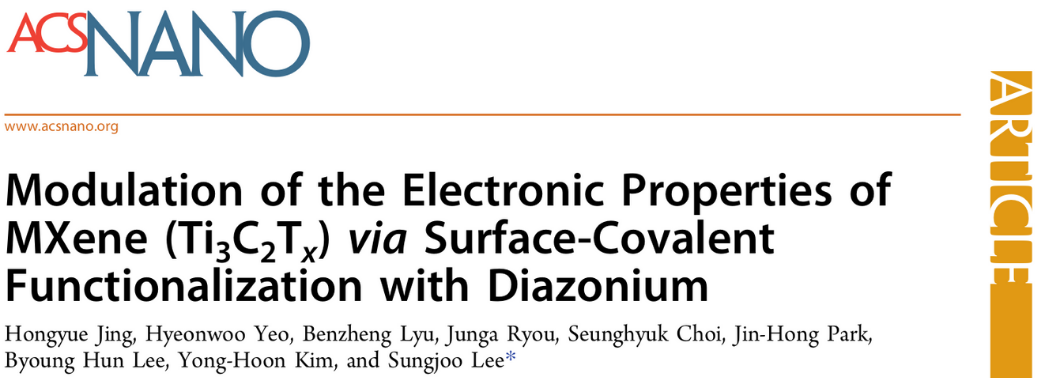
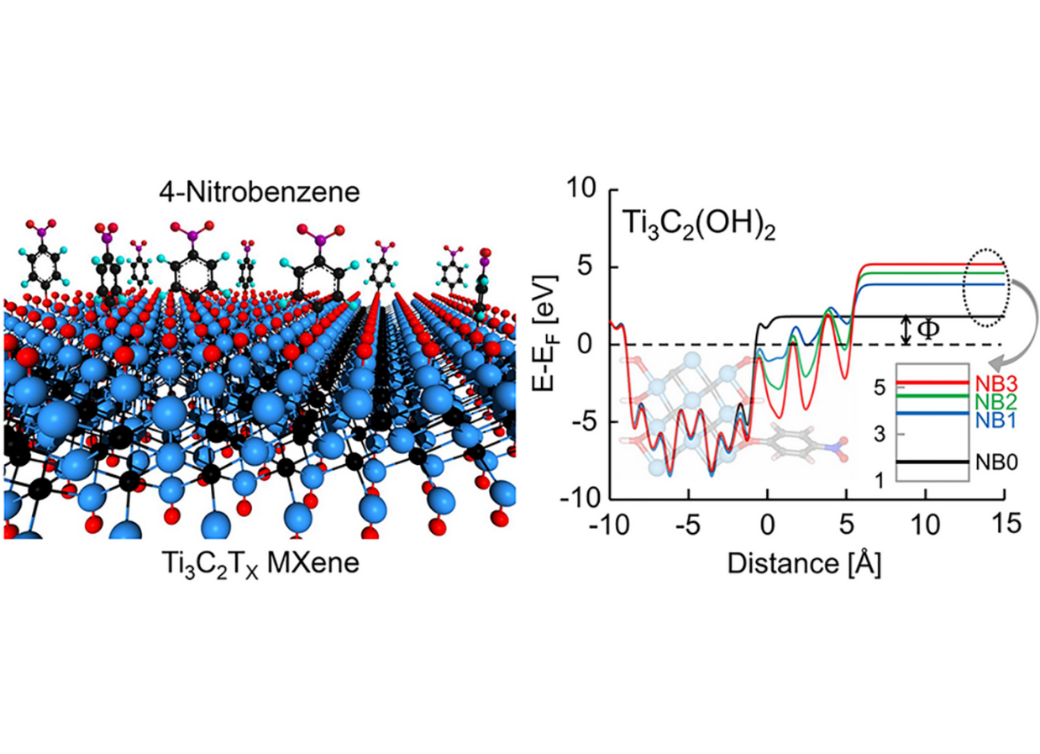
H. Jing, H. Yeo, B. Lyu, J. Ryou, S. Choi, J-H Park, B. Hun Lee, Y-H Kim, and S. Lee. Modulation of the Electronic Properties of MXene (Ti3C2Tx) via Surface-Covalent Functionalization with Diazonium. ACS Nano 2021 15 (1), 1388-1396
© 2021 American Chemical Society

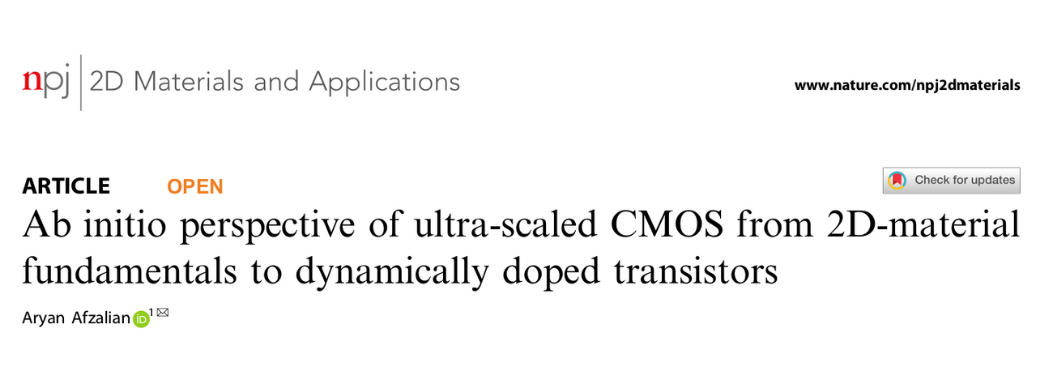
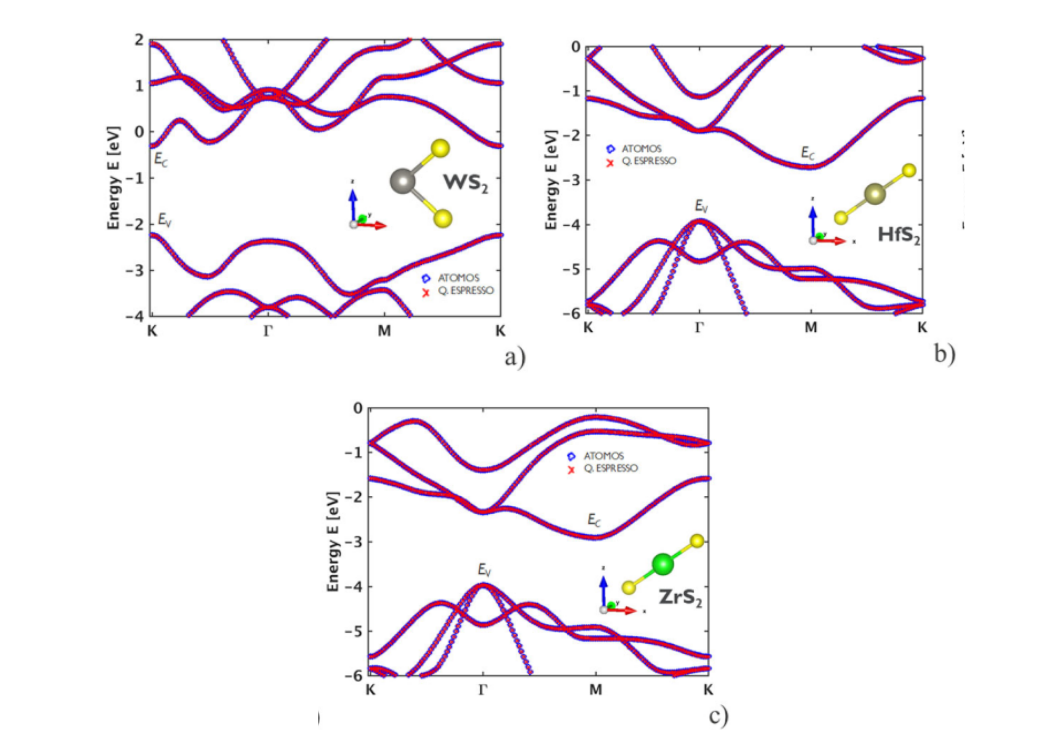
A. Afzalian. Ab initio perspective of ultra-scaled CMOS from 2D-material fundamentals to dynamically doped transistors. npj 2D Mater Appl 5, 5 (2021)
© The Authors

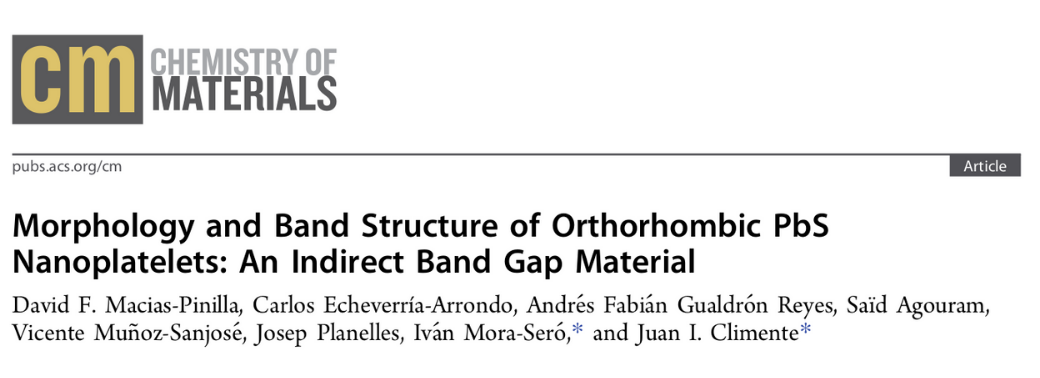
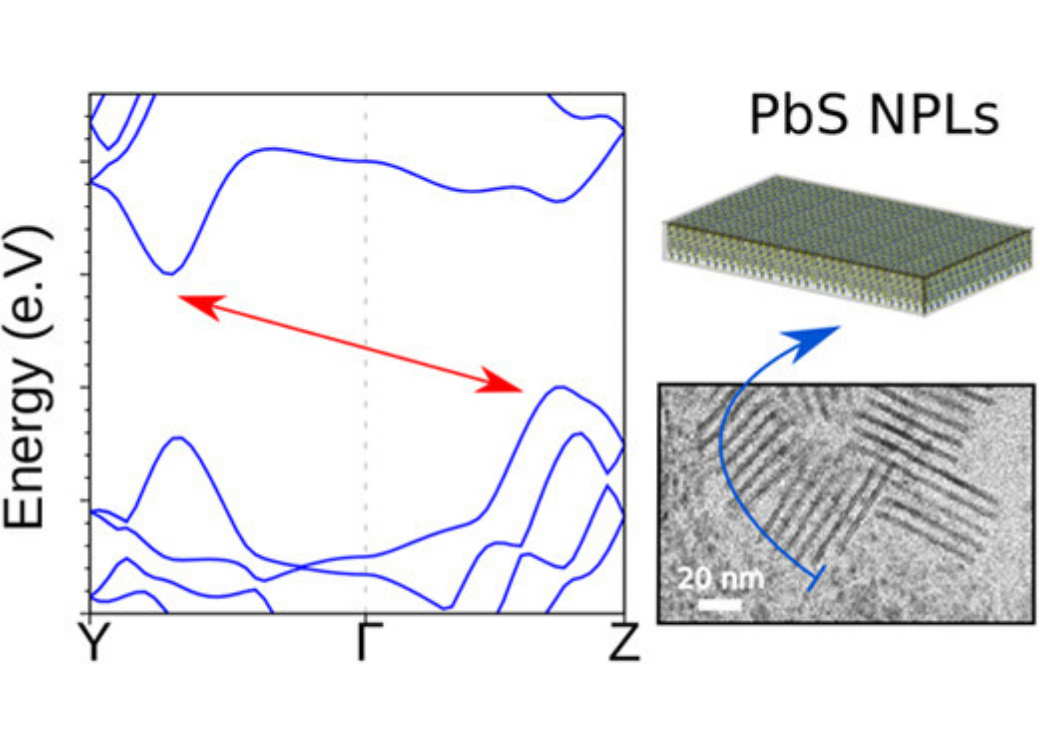
D. F. Macias-Pinilla, C. Echeverría-Arrondo, A. F. Gualdrón Reyes, S. Agouram, V. Muñoz-Sanjosé, J. Planelles, I. Mora-Seró, and J. I. Climente. Morphology and Band Structure of Orthorhombic PbS Nanoplatelets: An Indirect Band Gap Material. Chemistry of Materials 2021 33 (1), 420-429
© 2021 American Chemical Society

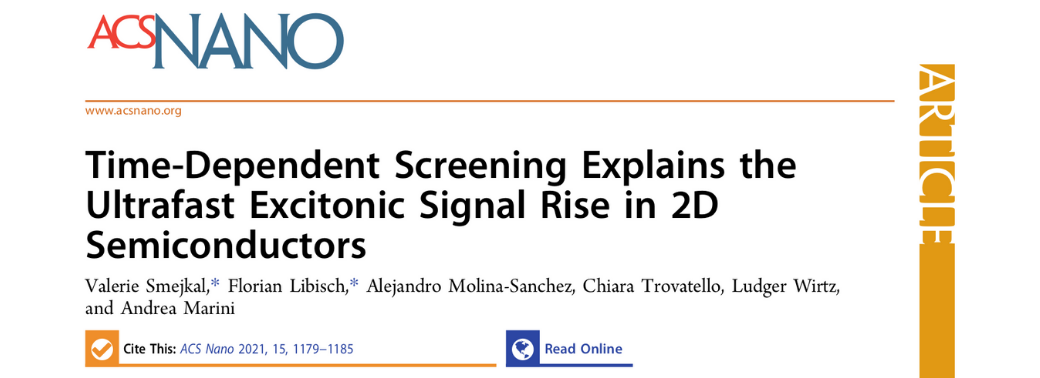
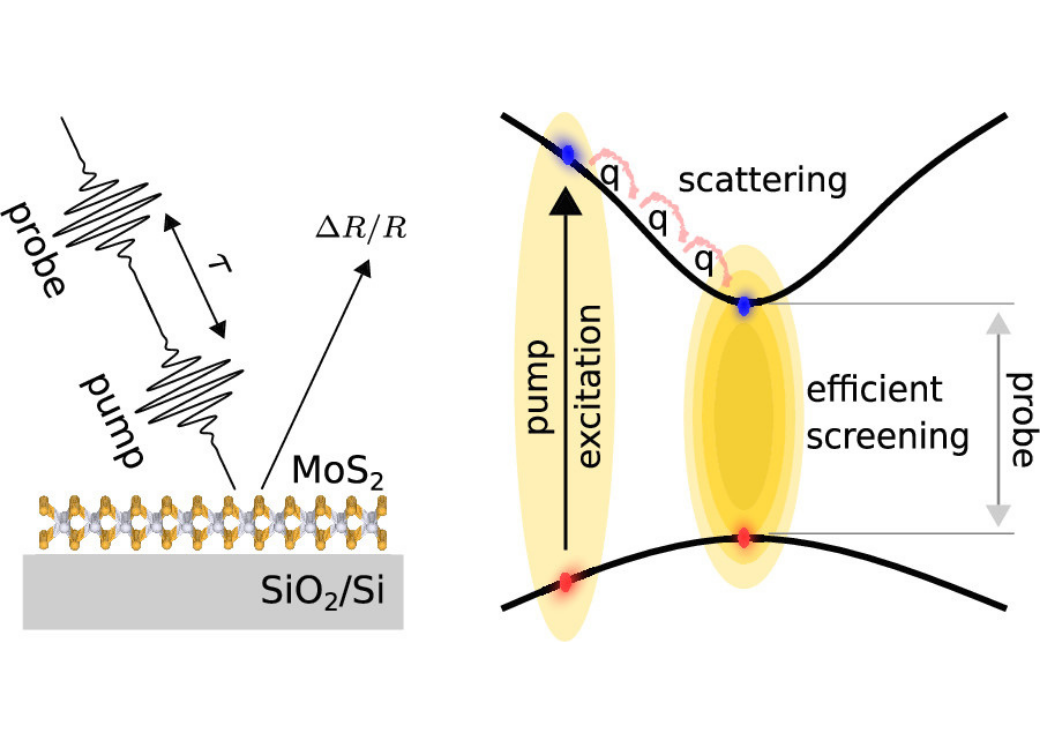
V. Smejkal, F. Libisch, A. Molina-Sanchez, L. Wirtz, and A. Marini. Time-dependent screening explains the ultrafast excitonic signal rise in 2D semiconductors. ACS Nano 15, 1, 1179–1185 (2021)
© 2020 American Chemical Society
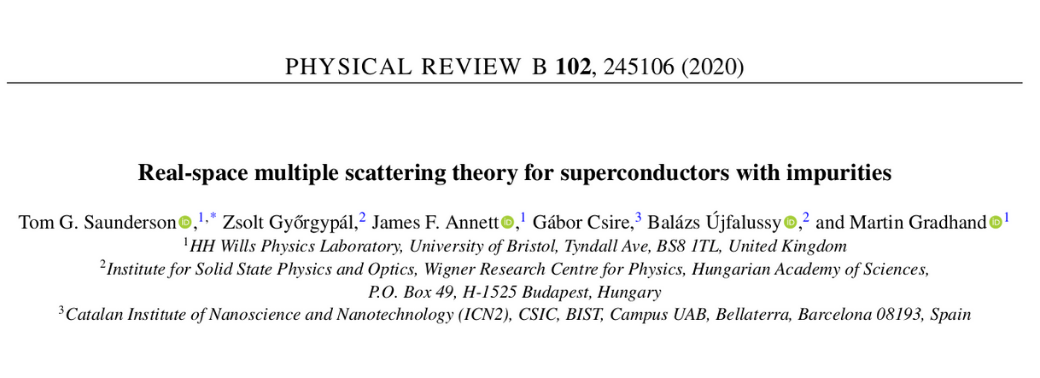
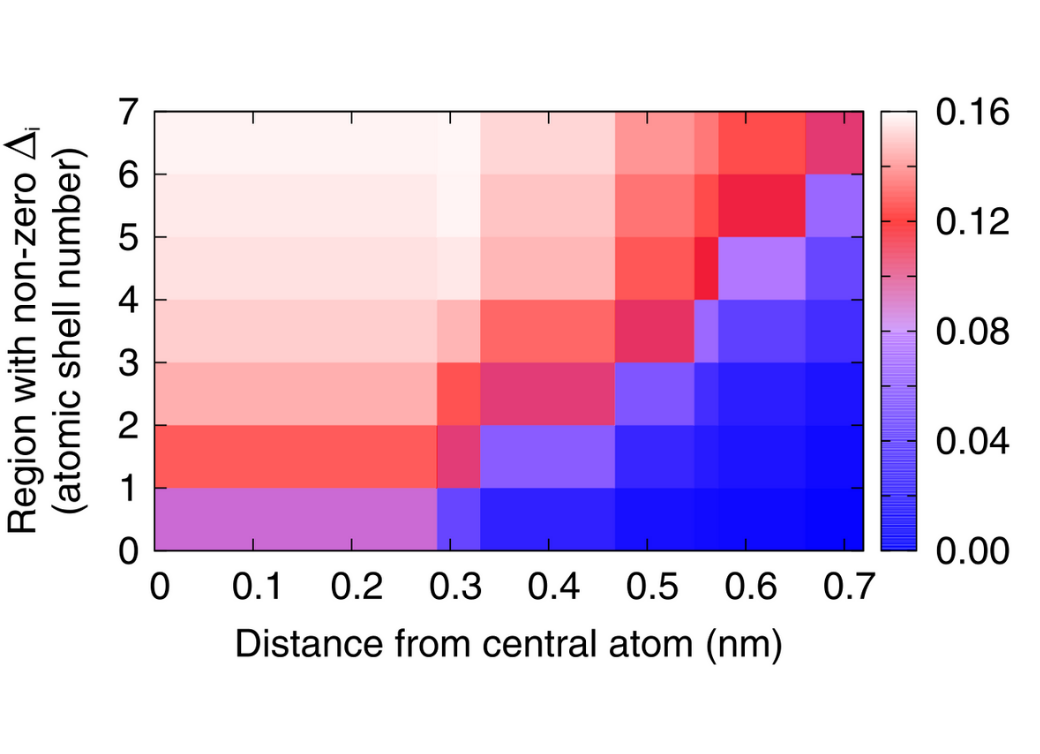
T.G. Saunderson, Z. Győrgypál, J.F. Annett, G. Csire, B. Újfalussy, and M. Gradhand. Real-space multiple scattering theory for superconductors with impurities. Phys. Rev. B 102, 245106 (2020)
©2020 American Physical Society
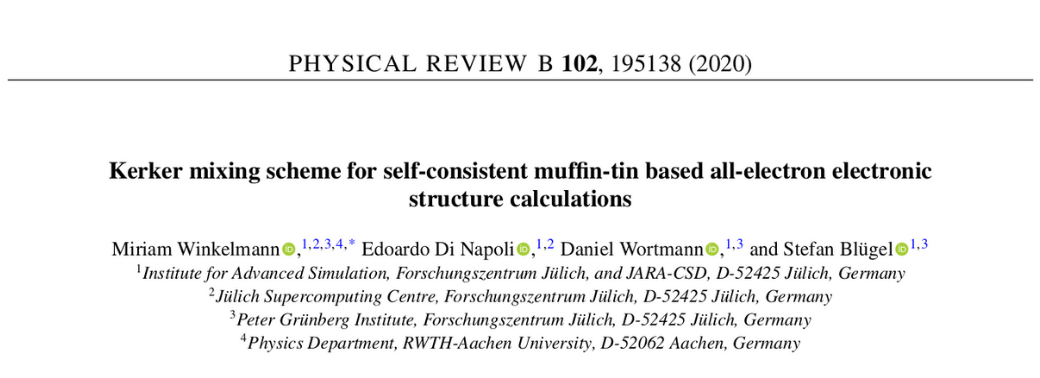
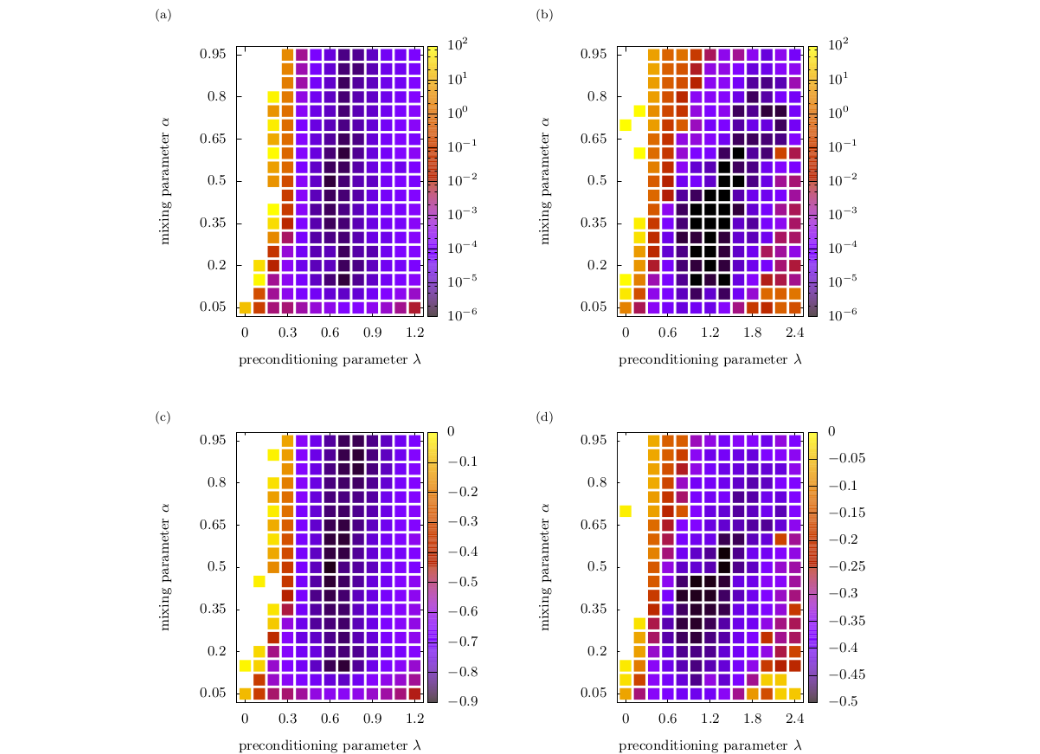
M. Winkelmann, E. Di Napoli, D. Wortmann, and S. Blügel. Kerker mixing scheme for self-consistent muffin-tin based all-electron electronic structure calculations. Phys. Rev. B 102, 195138 (2020)
©2020 American Physical Society

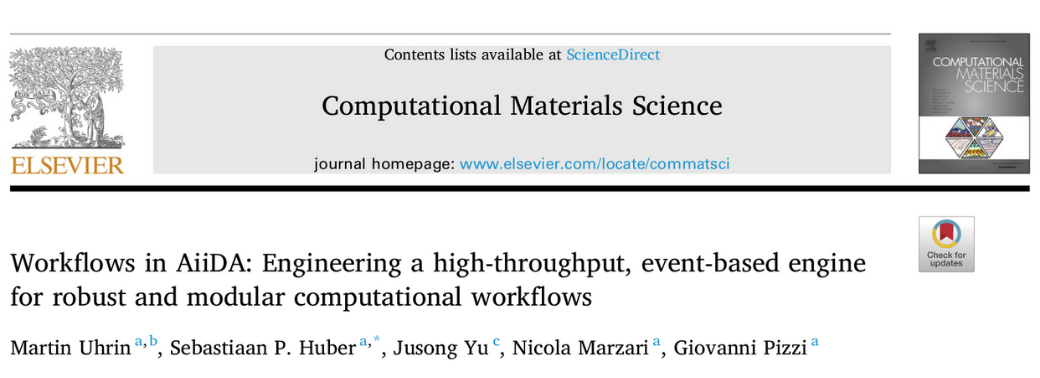
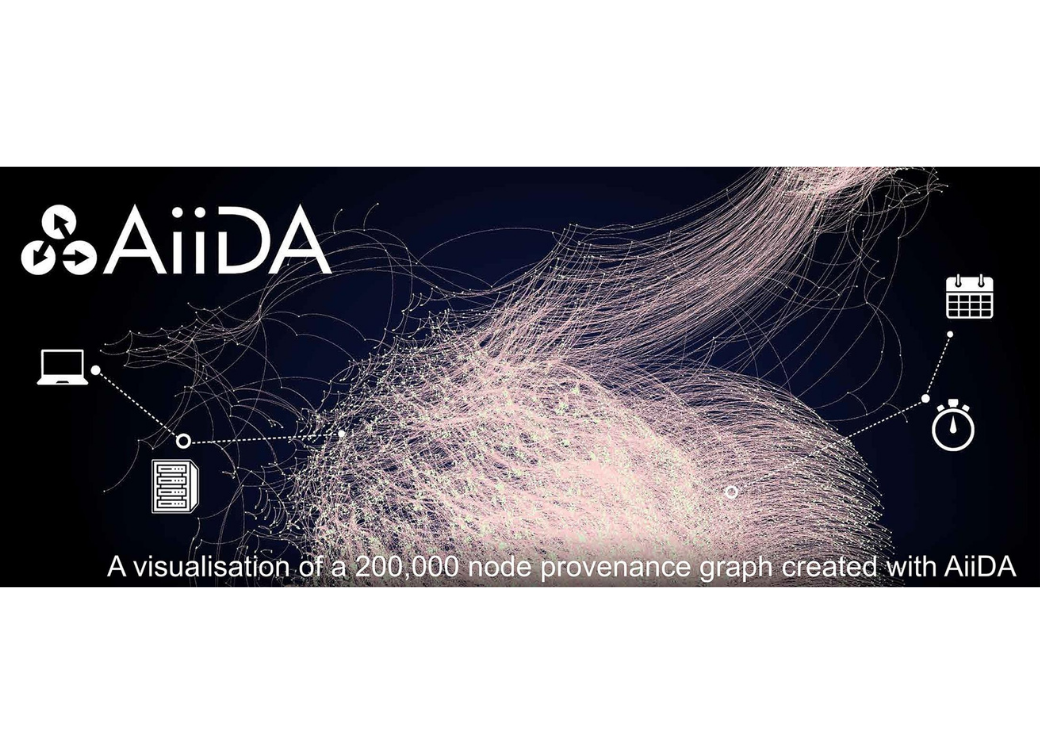
M. Uhrin, S. P. Huber, J. Yu, N. Marzari, G. Pizzi. Workflows in AiiDA: Engineering a high-throughput, event-based engine for robust and modular computational workflows. Computational Materials Science, 187 (2021)
© 1969, Elsevier

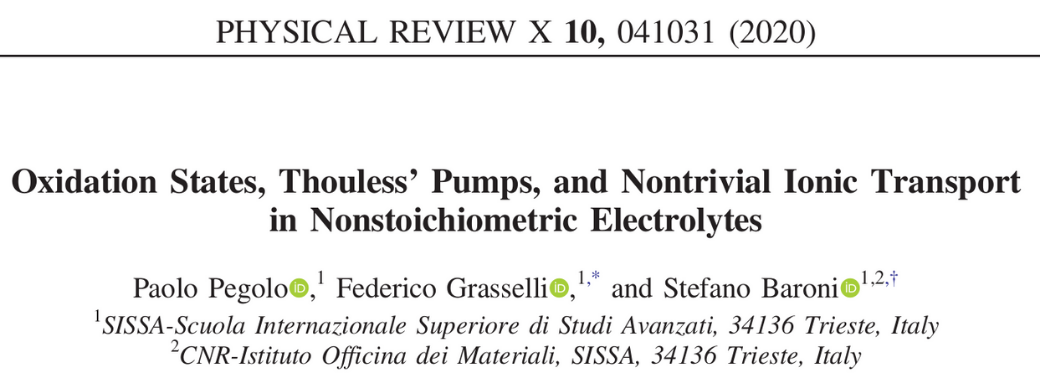
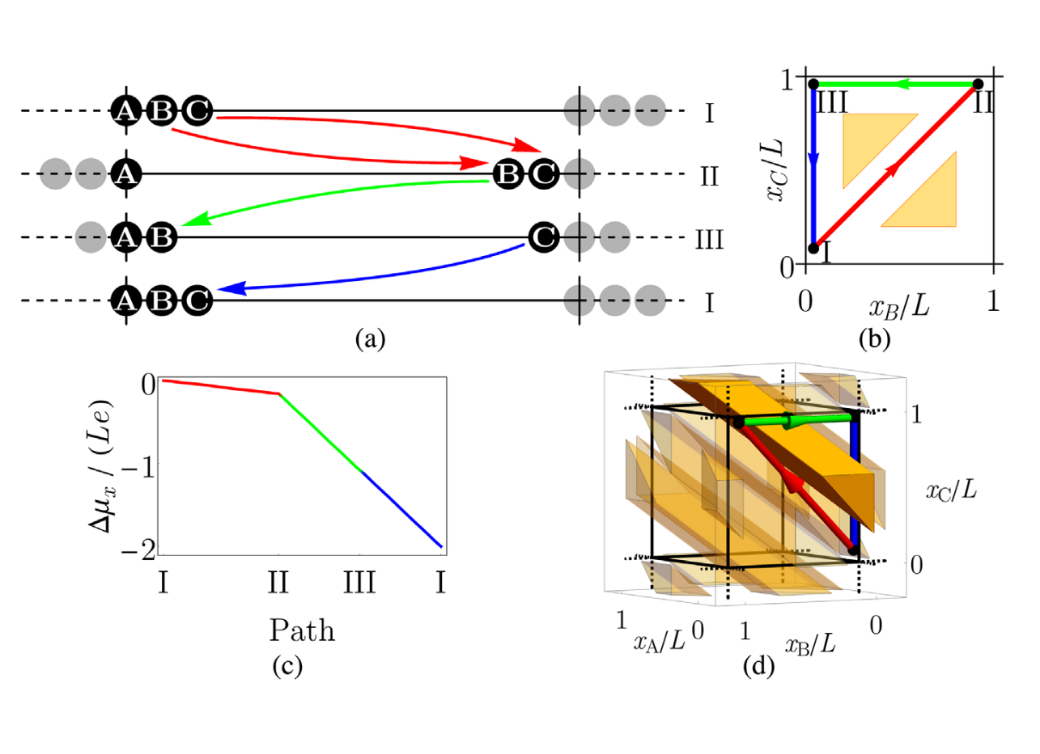
P. Pegolo, F. Grasselli and S. Baroni. Oxidation States, Thouless’ Pumps, and Nontrivial Ionic Transport in Nonstoichiometric Electrolytes. Phys. Rev. X 10, 041031 (2020)
©2020 American Physical Society

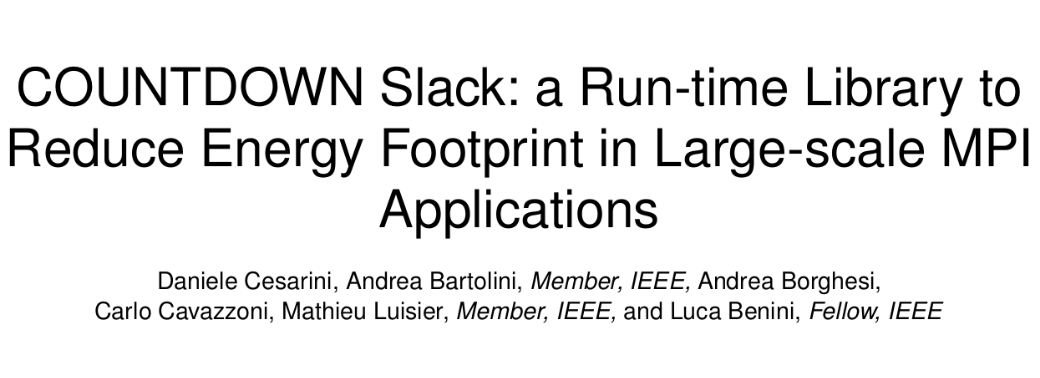
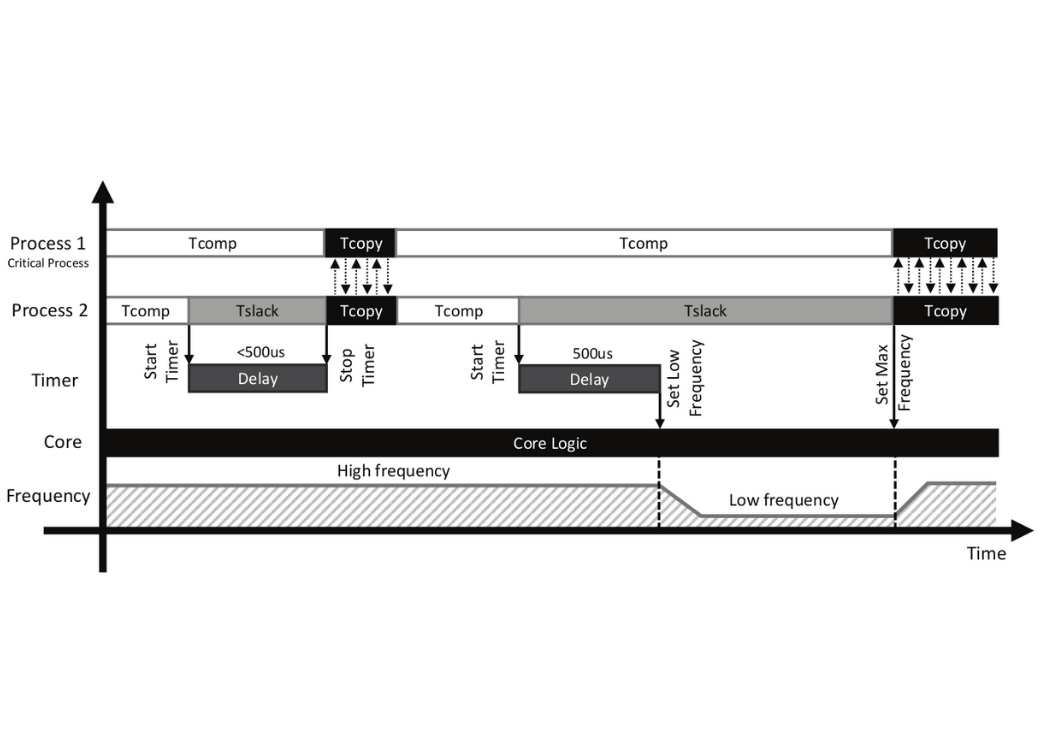
D. Cesarini, A. Bartolini, A. Borghesi, C. Cavazzoni, M. Luisier and L. Benini, Countdown Slack: A Run-Time Library to Reduce Energy Footprint in Large-Scale MPI Applications. IEEE Transactions on Parallel and Distributed Systems 31, 11 (2020)
© 2020 IEEE
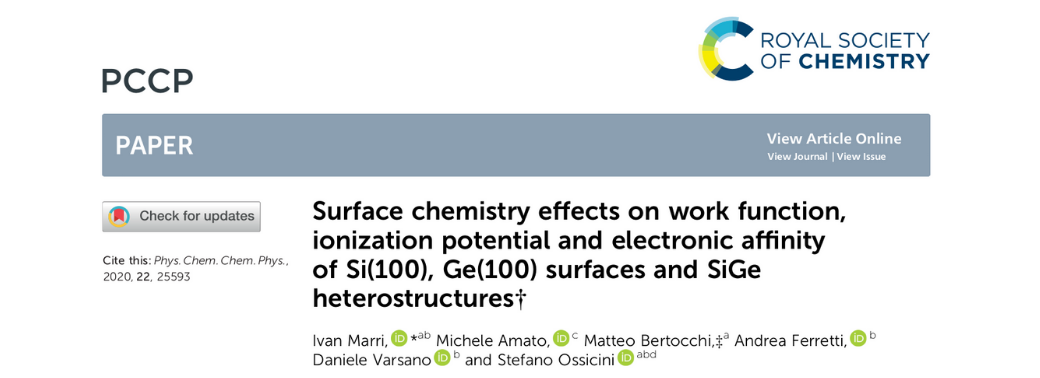
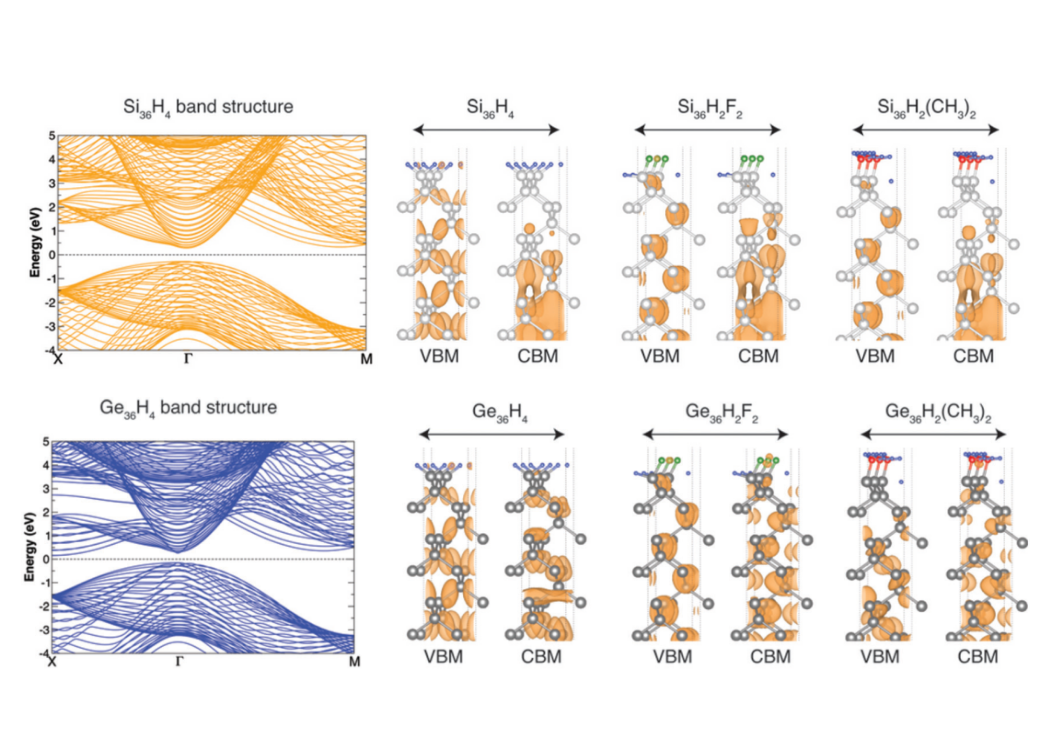
I. Marri, M. Amato, M. Bertocchi, A. Ferretti, D. Varsano and S. Ossicini. Surface chemistry effects on work function, ionization potential and electronic affinity of Si(100), Ge(100) surfaces and SiGe heterostructure. Phys. Chem. Chem. Phys. 22 (2020)
© the Owner Societies 2020

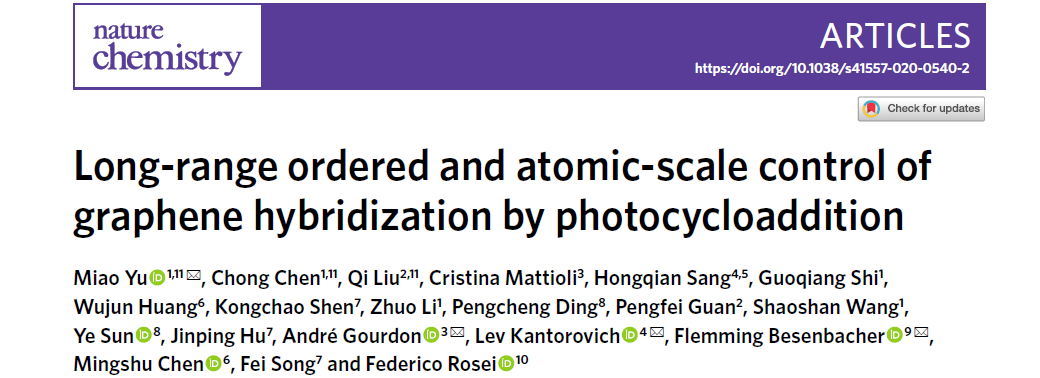
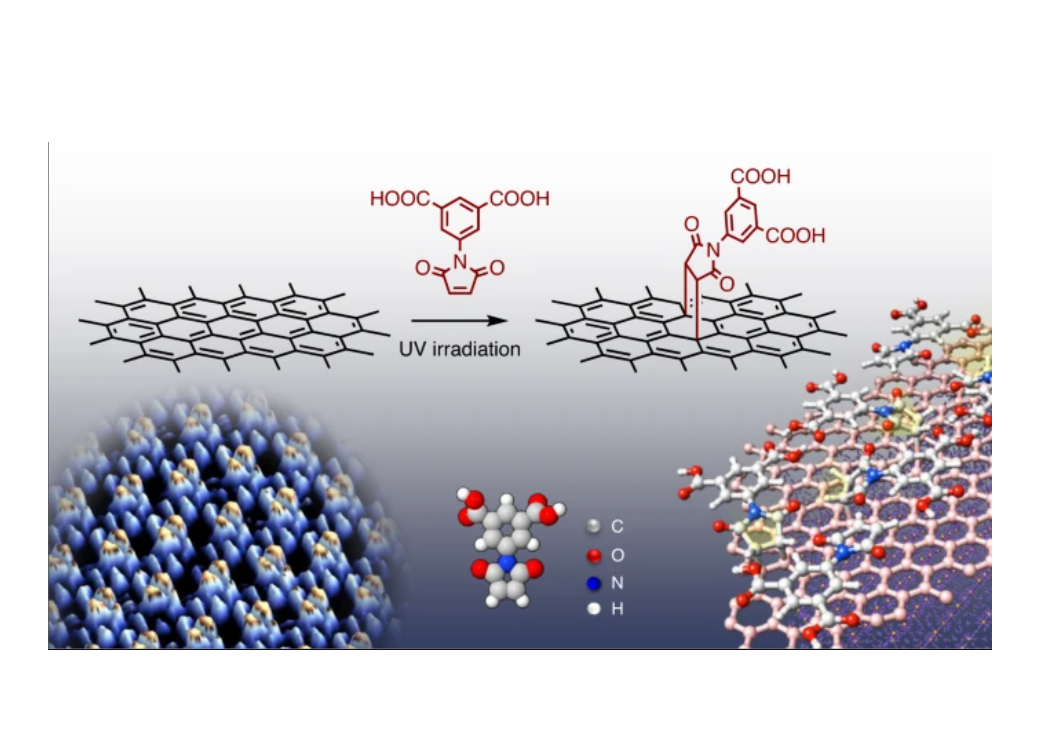
Yu, M., Chen, C., Liu, Q. et al. Long-range ordered and atomic-scale control of graphene hybridization by photocycloaddition. Nat. Chem. 12 (2020)
© 2020, The Author(s), under exclusive licence to Springer Nature Limit

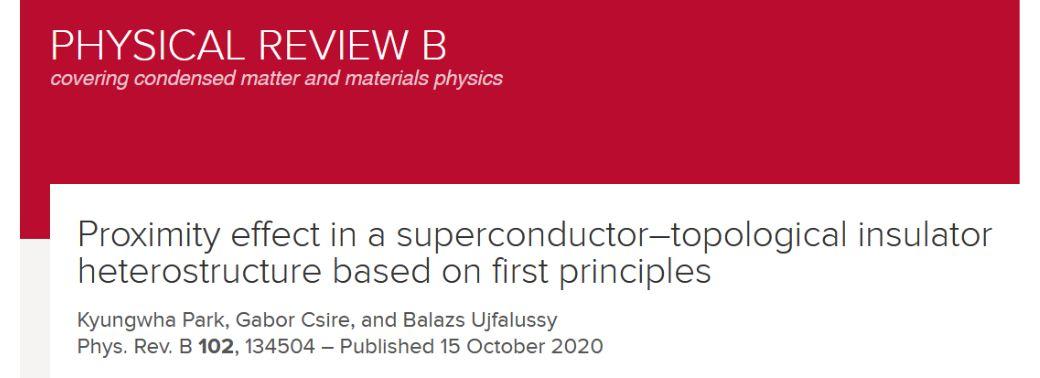
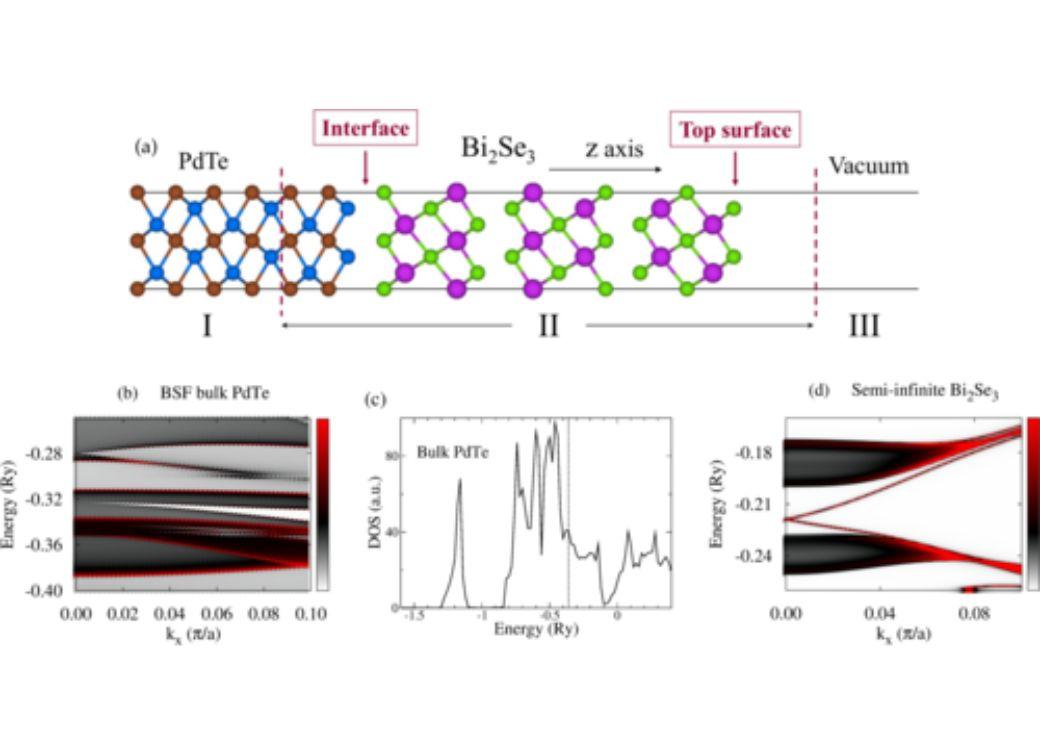
Kyungwha Park, Gabor Csire, and Balazs Ujfalussy Phys. Rev. B 102, 134504
© 2022, The Author(s)
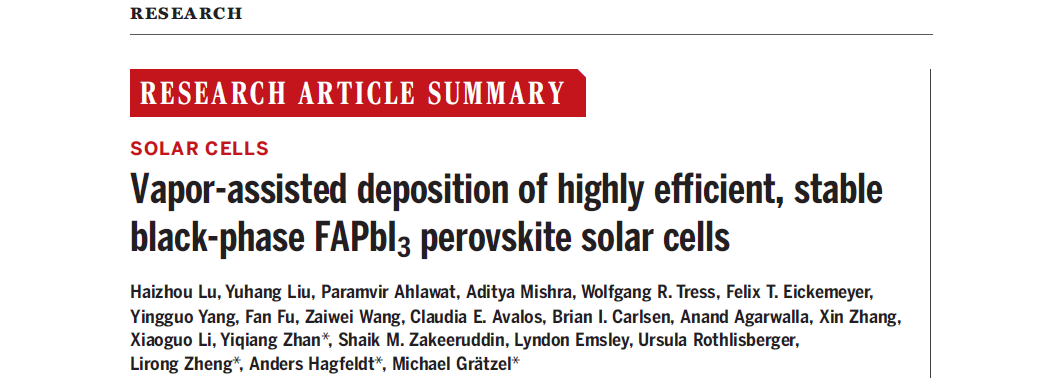
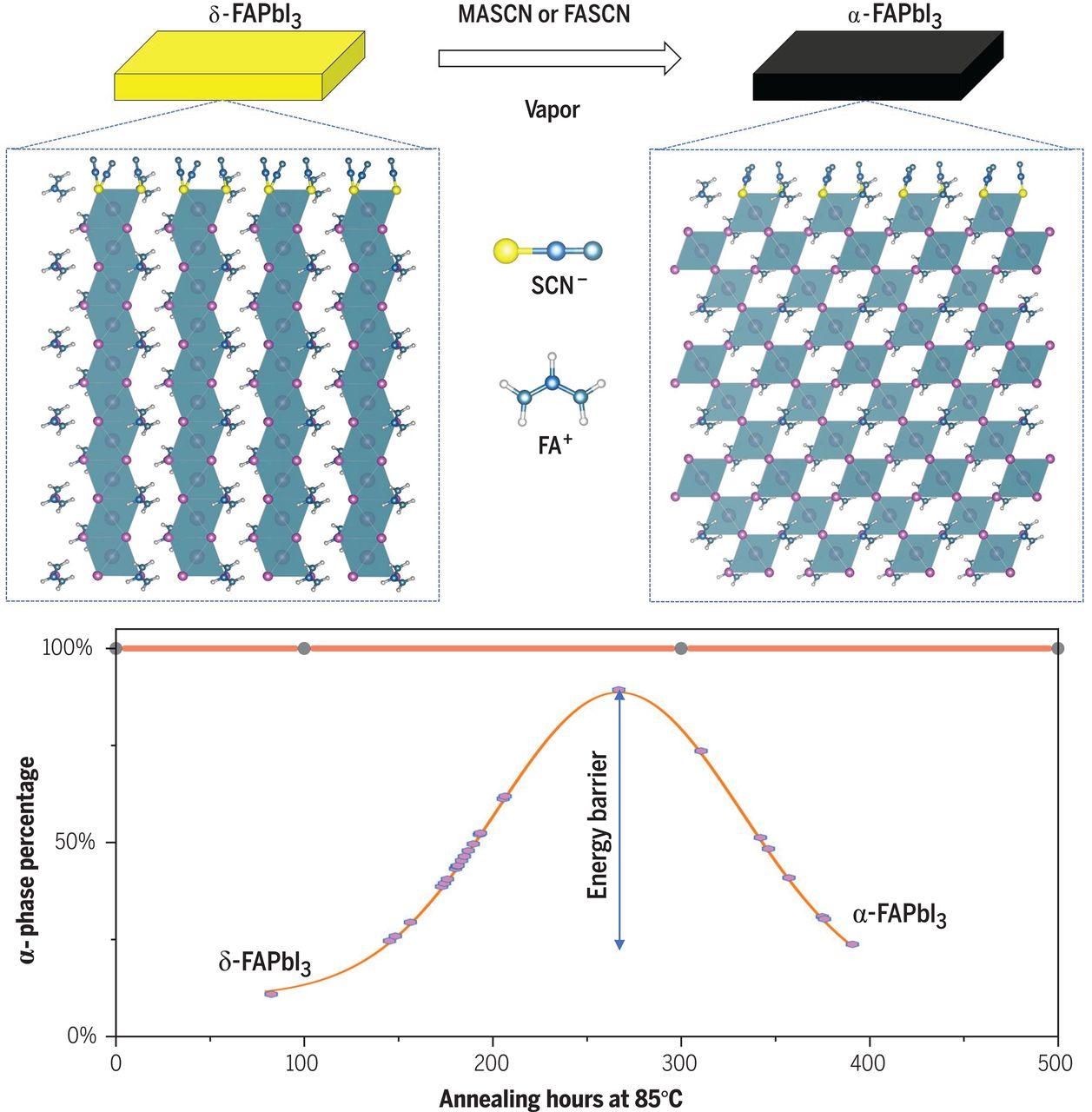
H. Lu, Y. Liu, P. Ahlawat, A. Mishra, W. R. Tress, F. T. Eickemeyer, Y. Yang, F. Fu, Z. Wang, C. E. Avalos, B. I. Carlsen, A. Agarwalla, X. Zhang, X. Li, Y. Zhan, S. M. Zakeeruddin, L. Emsley, U. Rothlisberger, L. Zheng, A. Hagfeldt, M. Grätzel. Vapor-assisted deposition of highly efficient, stable black-phase FAPbI3 perovskite solar cells. Science 370, 6512 (2020)
© 2020 The Authors

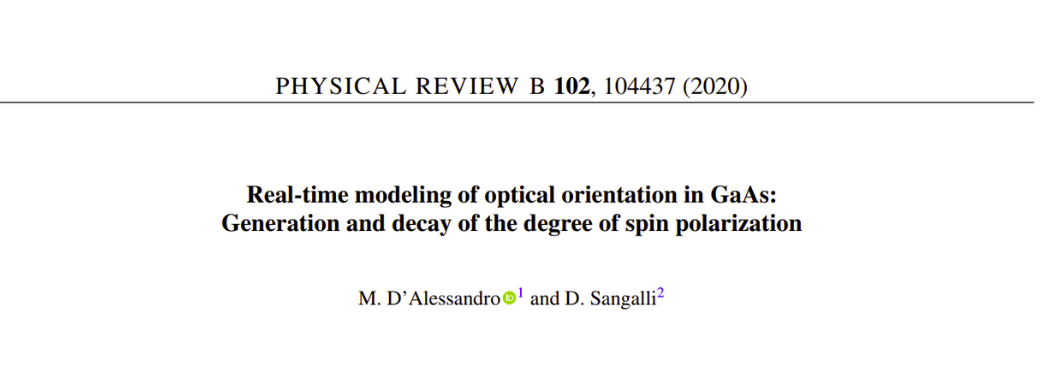
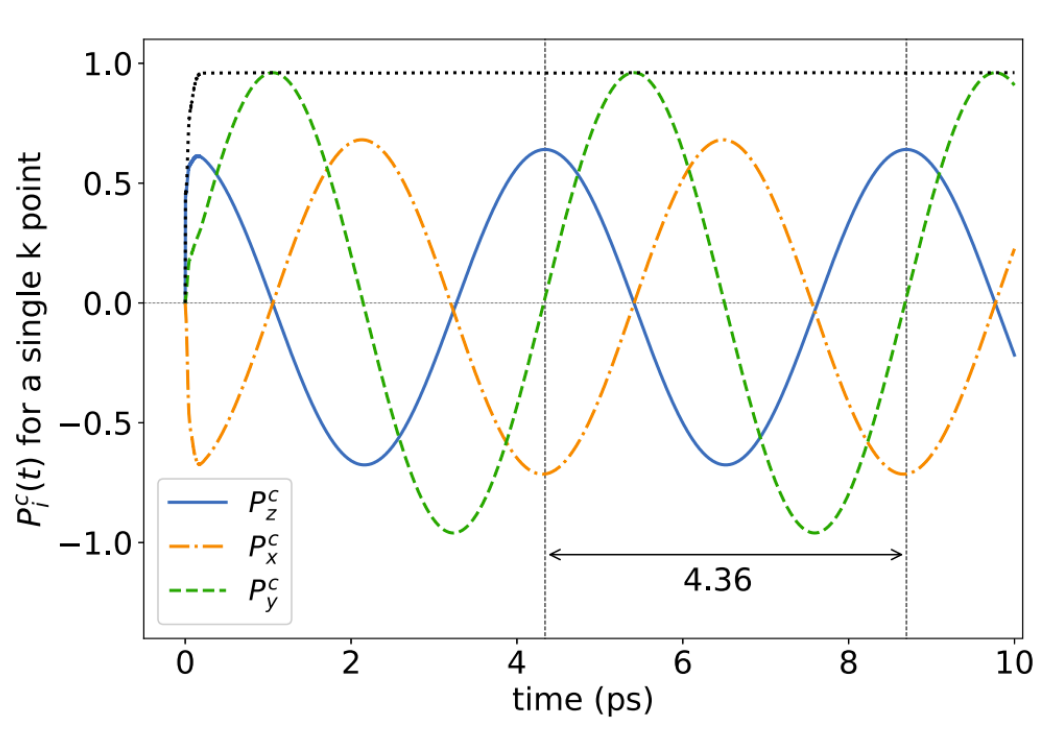
M. D'Alessandro and D. Sangalli. Real-time modeling of optical orientation in GaAs: Generation and decay of the degree of spin polarization. Phys. Rev. B 102, 10 (2020)
©2020 American Physical Society

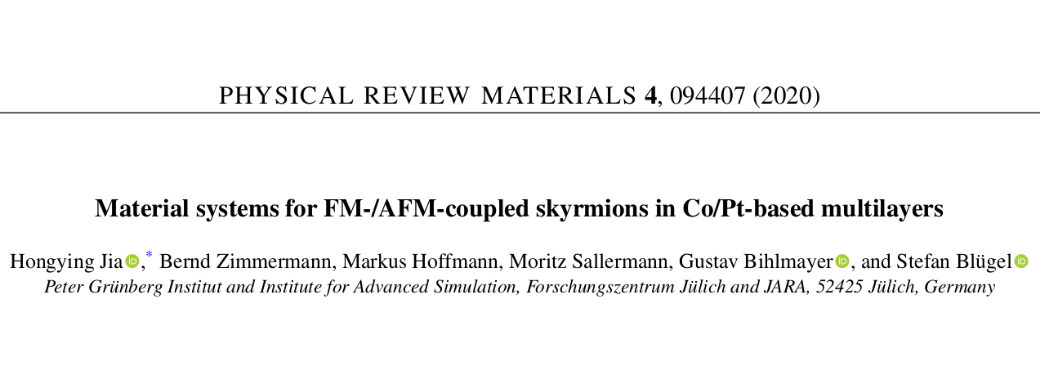
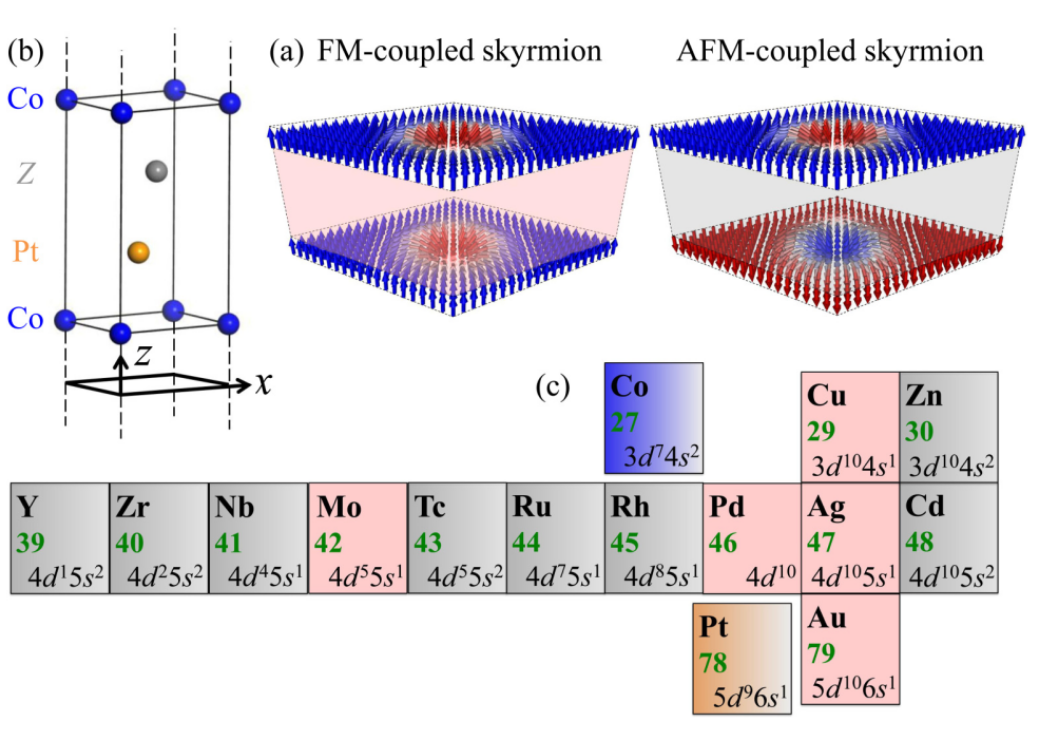
H. Jia, B. Zimmermann, M. Hoffmann, M. Sallermann, G. Bihlmayer, and S. Blügel. Material systems for FM-/AFM-coupled skyrmions in Co/Pt-based multilayers. Phys. Rev. Materials 4, 094407 (2020)
©2020 American Physical Society


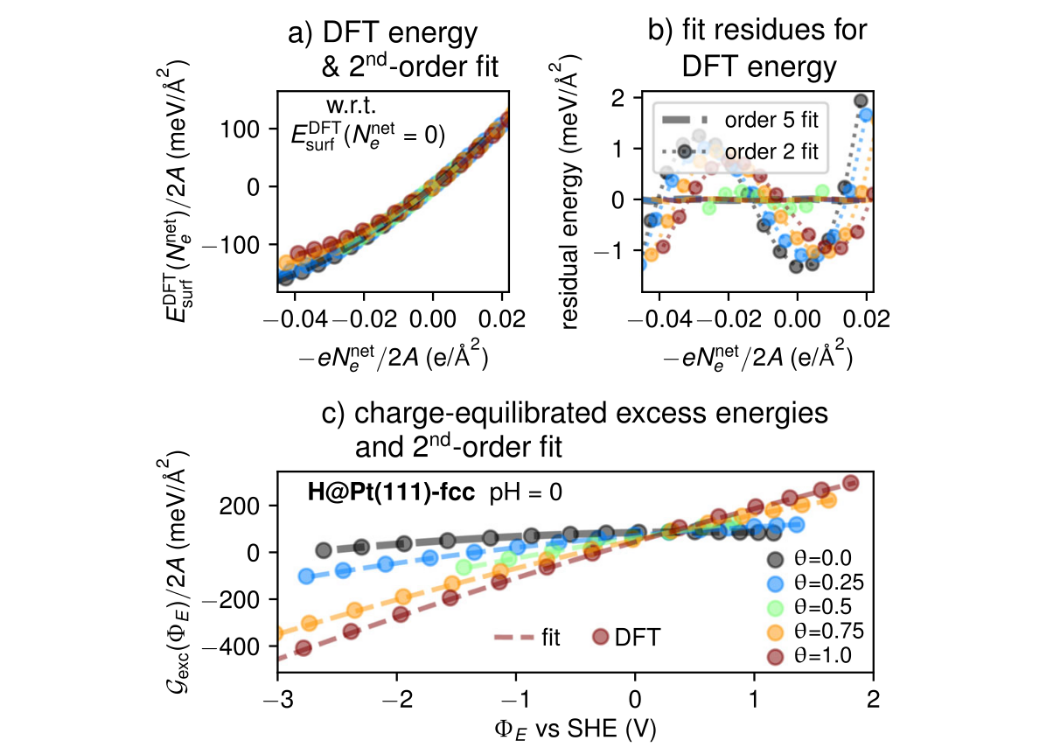
N.G. Hörmann, N. Marzari, N. and K. Reuter. Electrosorption at metal surfaces from first principles. npj Comput Mater 6, 136 (2020).
© 2020, The Author(s)

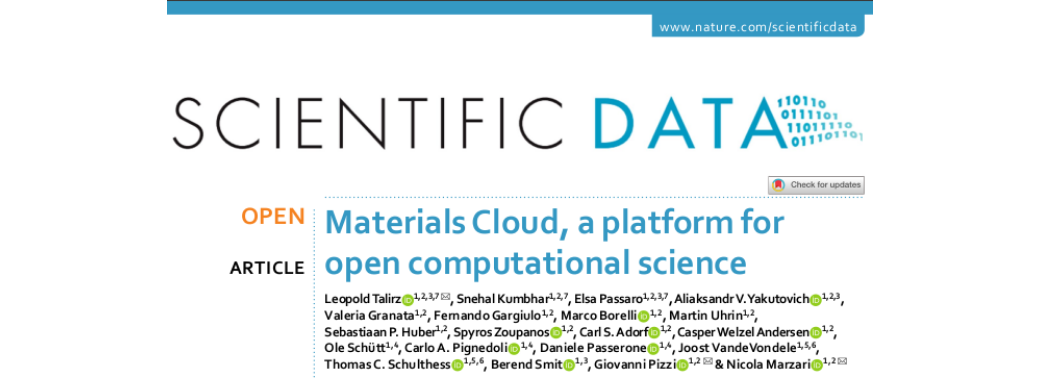
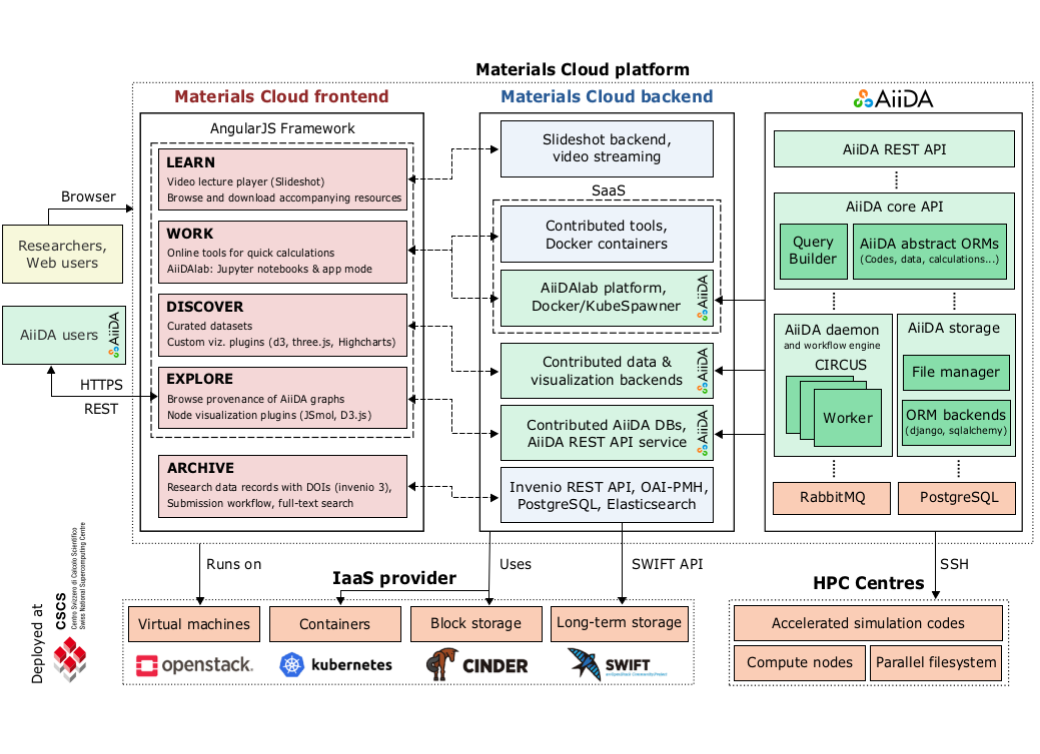
L. Talirz, .l Kumbhar, E. Passaro, A. V. Yakutovich, V. Granata, F. Gargiulo, M. Borelli, M. Uhrin, S. P. Huber, S. Zoupanos, C. S. Adorf, C. W. Andersen, O. Schütt, C. A. Pignedoli, D. Passerone, J. VandeVondele, T.C. Schulthess, B. Smit, G. Pizzi, and N. Marzari. Materials Cloud, a platform for open computational science. Sci Data 7, 299 (2020)
© 2020, The Author(s)
https://doi.org/10.1038/s41597-020-00637-5

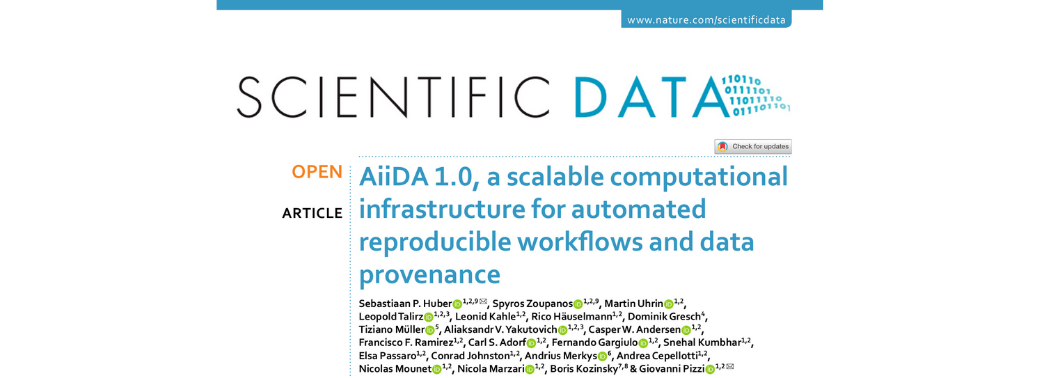
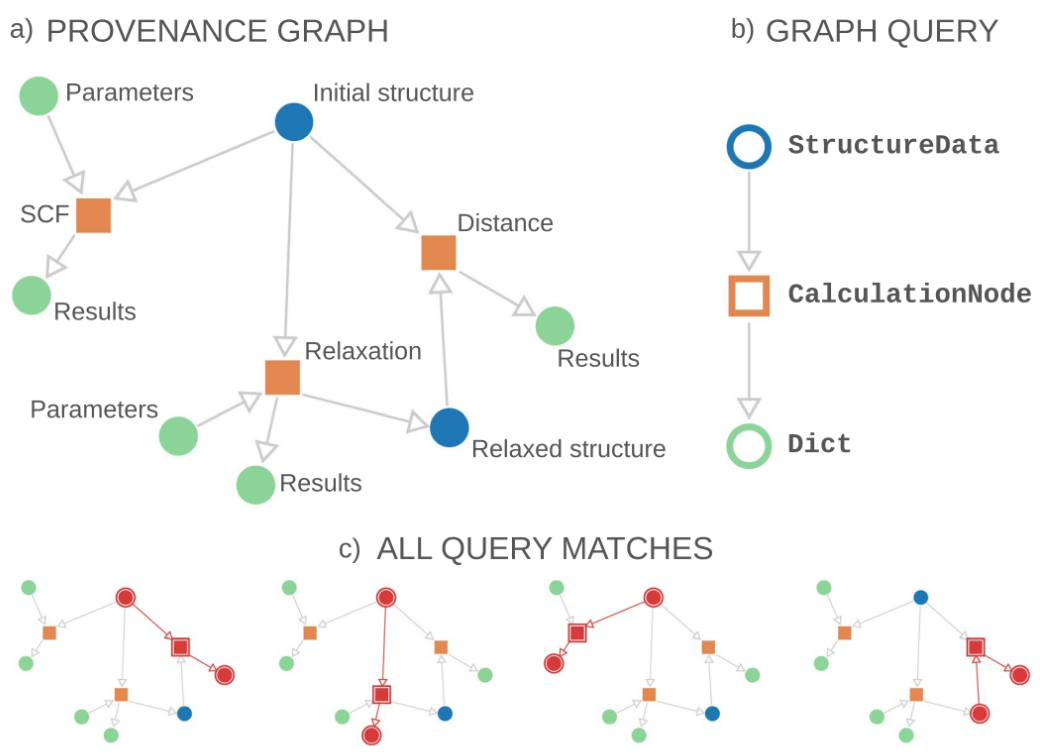
S. P. Huber, S. Zoupanos, M. Uhrin, L. Talirz, L. Kahle, R. Häuselmann, D. Gresch, T. Müller, A. V. Yakutovich, C. W. Andersen, F. F. Ramirez, C. S. Adorf, F. Gargiulo, S. Kumbhar, E. Passaro, C. Johnston, A. Merkys, A. Cepellotti, N. Mounet, N. Marzari, B. Kozinsky, and G. Pizzi. AiiDA 1.0, a scalable computational infrastructure for automated reproducible workflows and data provenance. Sci Data 7, 300 (2020)
© 2020, The Author(s)
https://doi.org/10.1038/s41597-020-00638-4

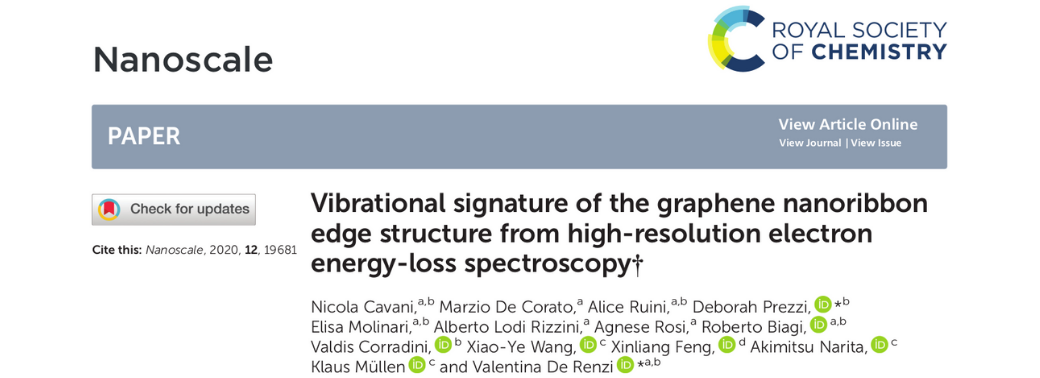
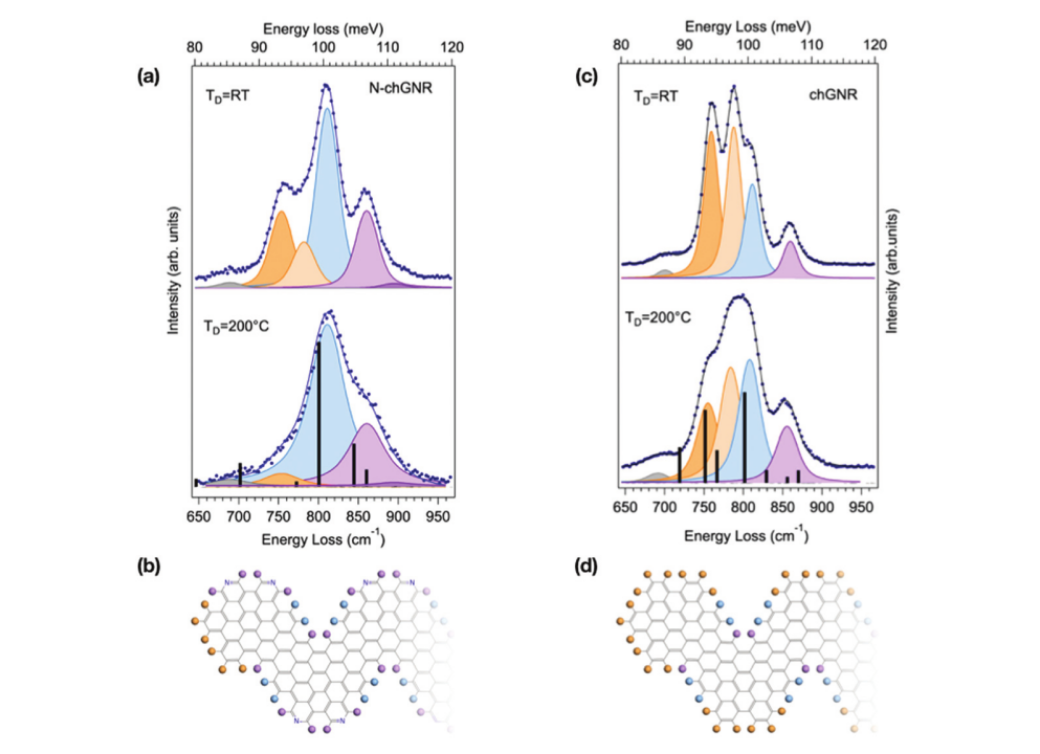
N. Cavani, M. De Corato, A. Ruini, D. Prezzi, E. Molinari, A. Lodi Rizzini, A. Rosi, R. Biagi, V. Corradini, X.-Y. Wang, X. Feng, A. Narita, K. Muellen, and V. De Renzi. Vibrational signature of the graphene nanoribbon edge structure from high-resolution electron energy-loss spectroscopy. Nanoscale 12 (2020)
© The Royal Society of Chemistry 2020
https://doi.org/10.1039/D0NR05763K

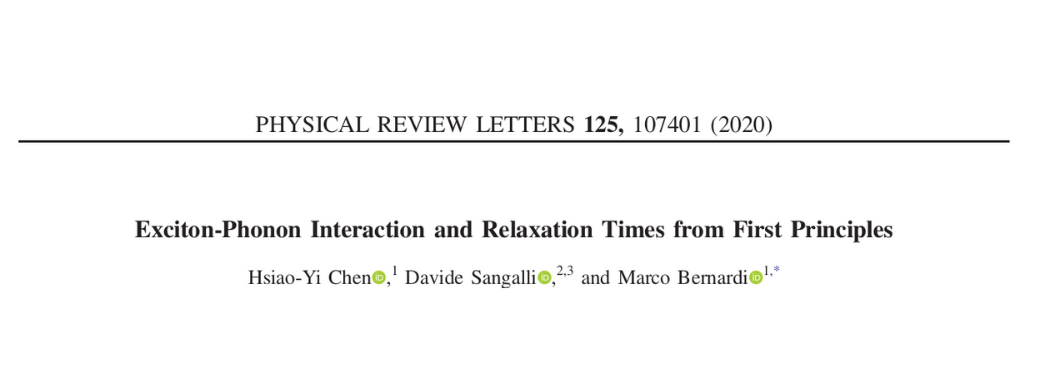
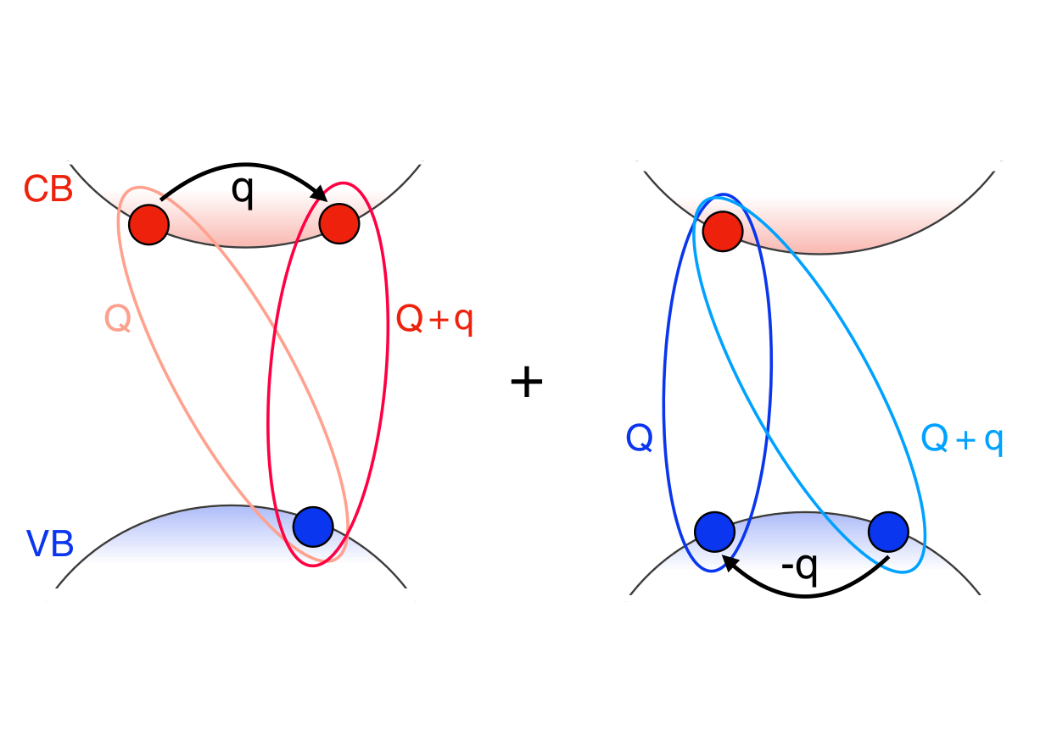
H. Chen, D. Sangalli, M. Bernardi. Exciton-Phonon Interaction and Relaxation Times from First Principles. Phys. Rev. Lett. 125, 107401 (2020)
© 2020 American Physical Society
https://doi.org/10.1103/PhysRevLett.125.107401

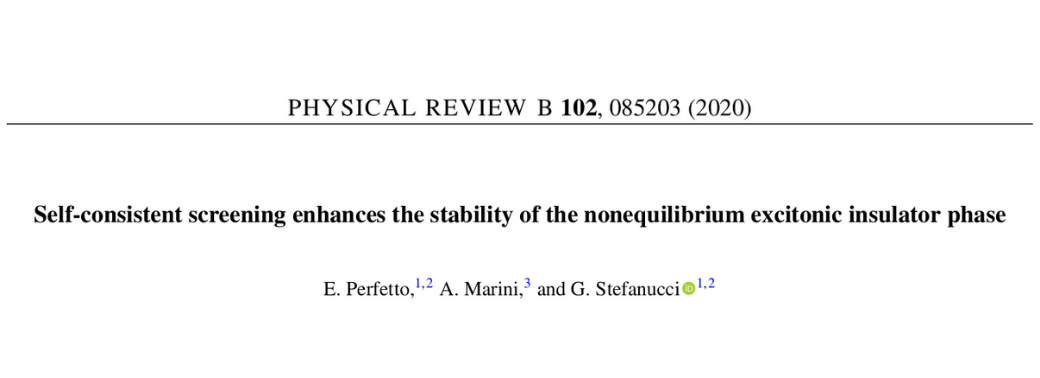
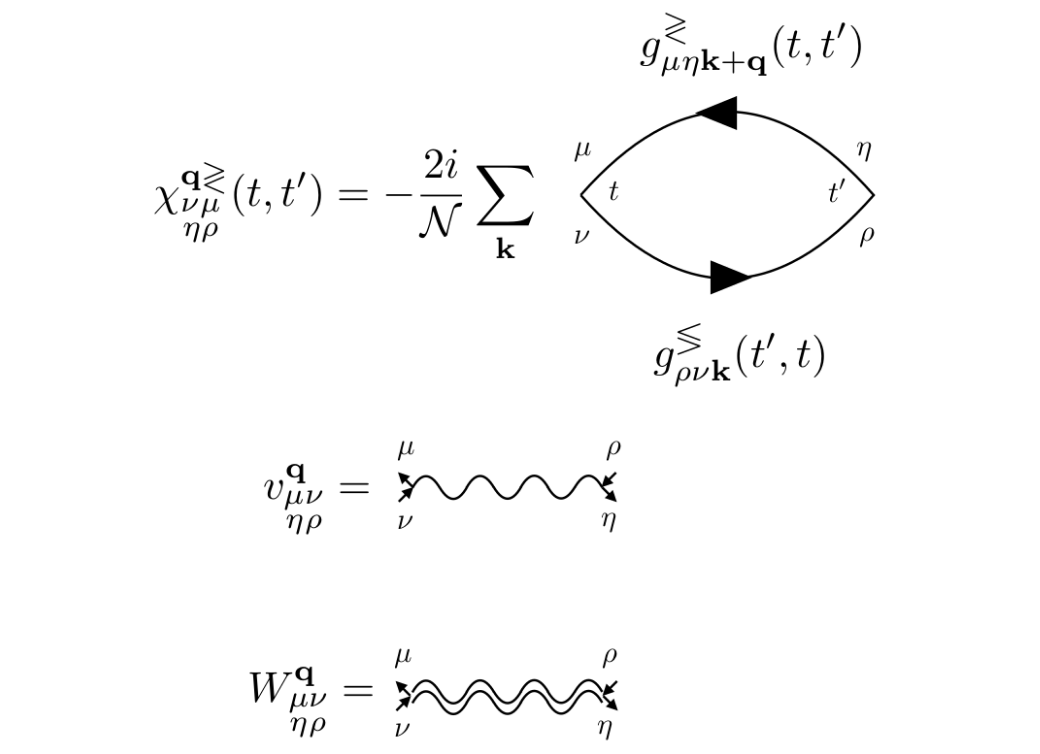
E. Perfetto, A. Marini, G. Stefanucci. Self-consistent screening enhances stability of the nonequilibrium excitonic insulator phase. Phys. Rev. B 102, 085203 (2020)
©2020 American Physical Society
https://doi.org/10.1103/PhysRevB.102.085203
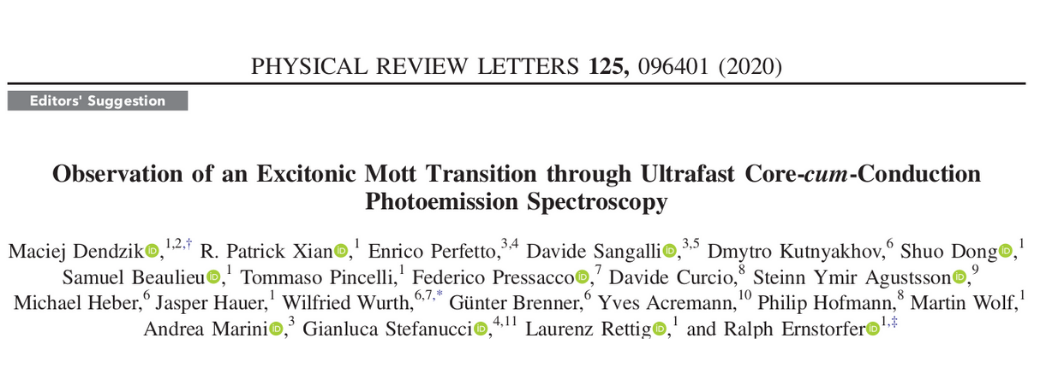
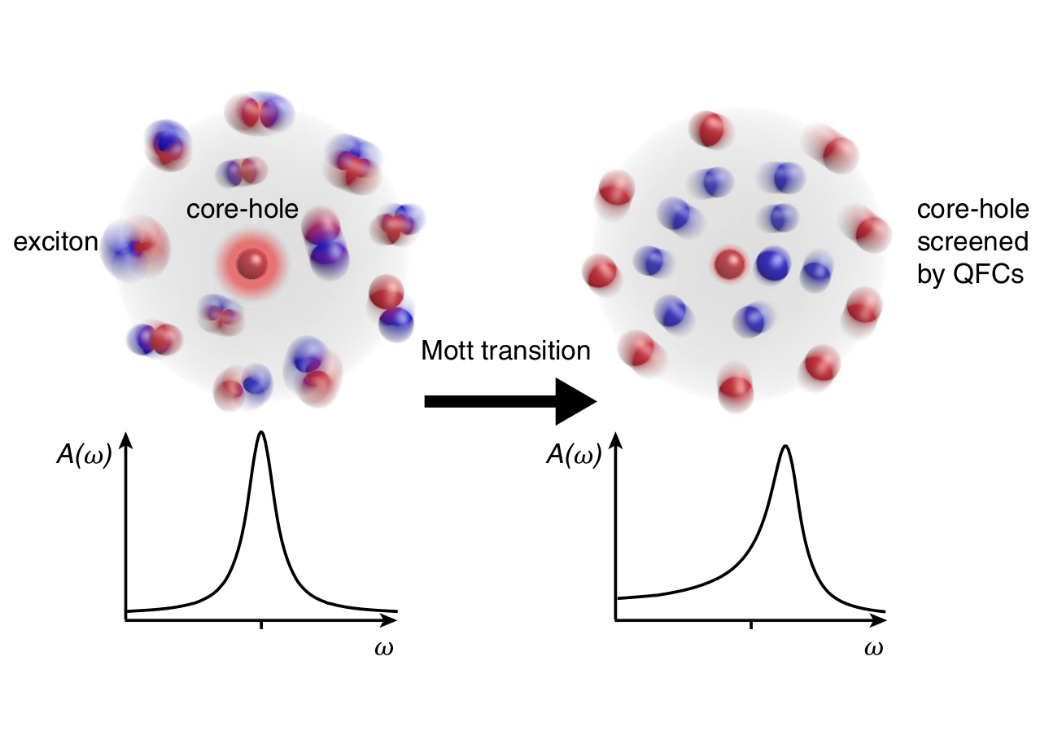
M. Dendzik, R. P. Xian, E. Perfetto, D. Sangalli, D. Kutnyakhov, S. Dong, S. Beaulieu, T. Pincelli, F. Pressacco, D. Curcio, S. Y. Agustsson, M. Heber, J. Hauer, W. Wurth, G. Brenner, Y. Acremann, P. Hofmann, M. Wolf, A. Marini, G. Stefanucci, L. Rettig, and R. Ernstorfer. Observation of an Excitonic Mott Transition through Ultrafast Core-cum-Conduction Photoemission Spectroscopy. Phys. Rev. B 102, 085203 (2020)
© 2020 The Authors
https://doi.org/10.1103/PhysRevB.102.085203
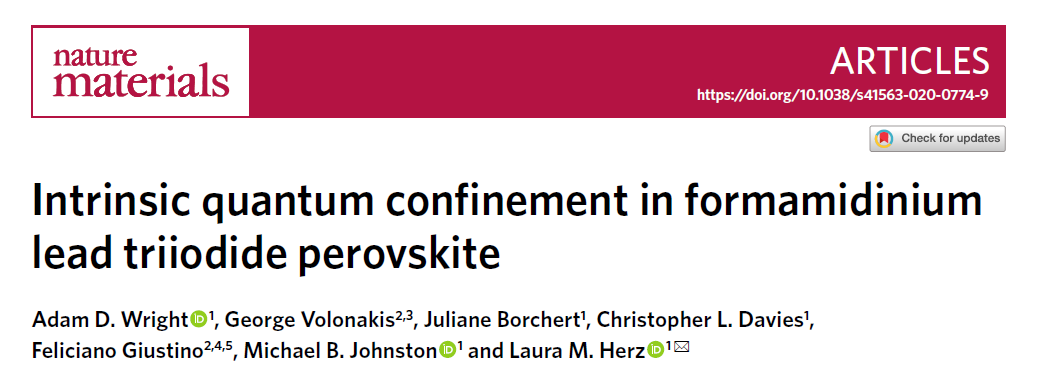
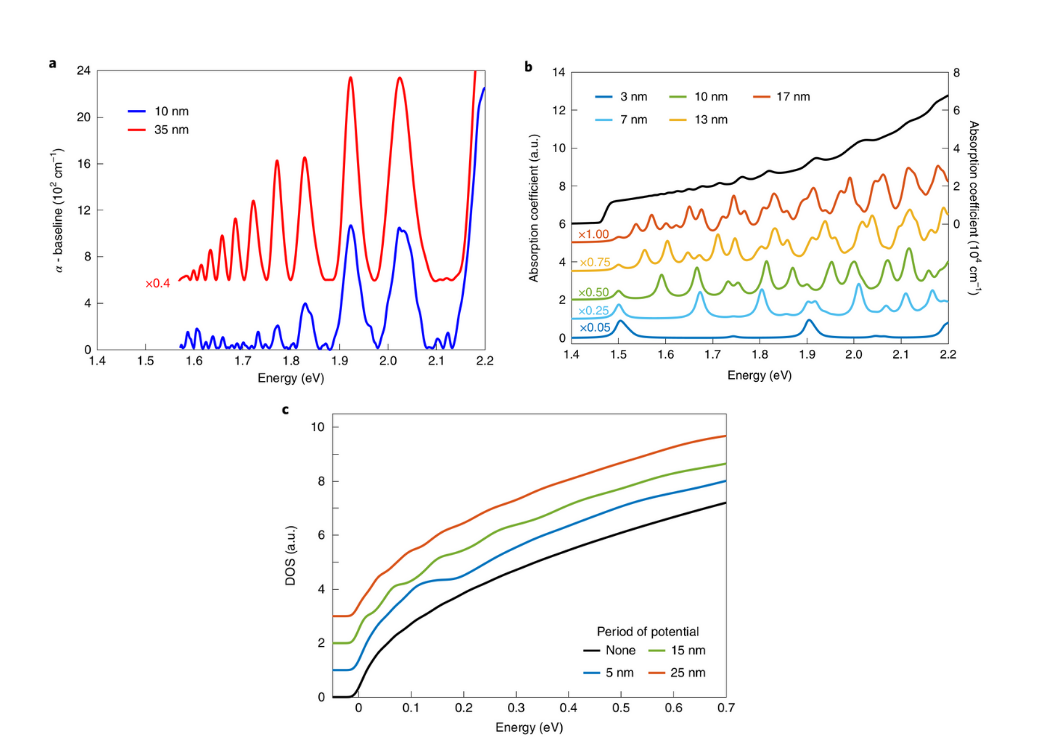
A.D. Wright, G. Volonakis, J. Borchert, et al. Intrinsic quantum confinement in formamidinium lead triiodide perovskite. Nat. Mater. 19, 1201–1206 (2020).
© 2020, The Author(s)
https://doi.org/10.1038/s41563-020-0774-9

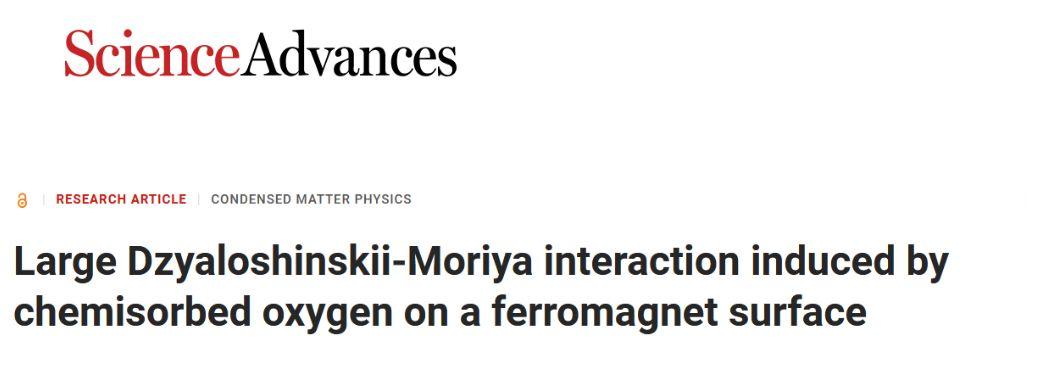
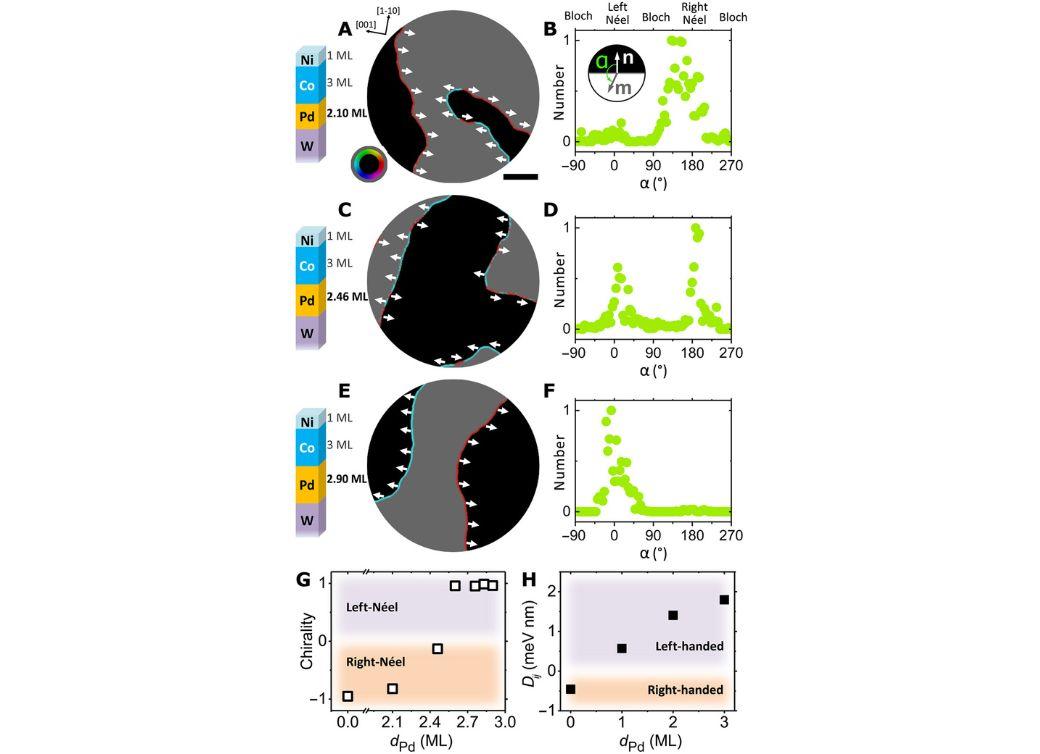
G. Chen, A. Mascaraque, H. Jia, B. Zimmermann, M.C. Robertson, R. Lo Conte, M. Hoffmann, M. A. González Barrio, H. Ding, R. Wiesendanger, E. G. Michel, S. Blügel, A.s K. Schmid, and K. Liu
© 2022, The Author(s)
DOI: 10.1126/sciadv.aba4924

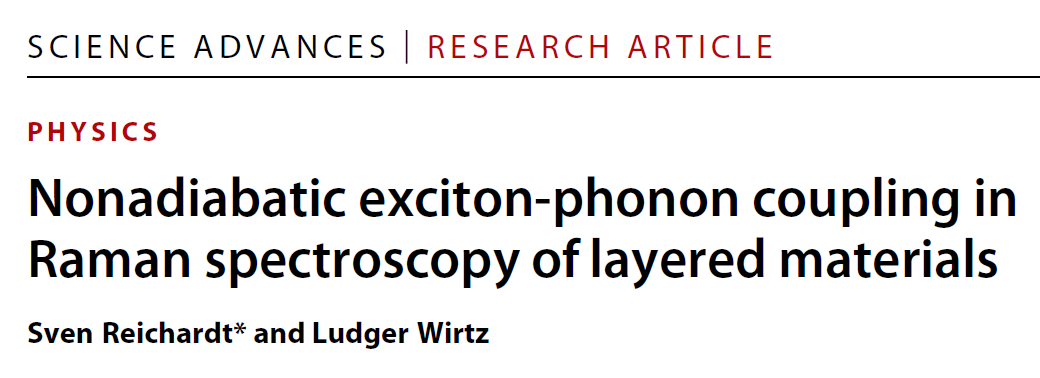
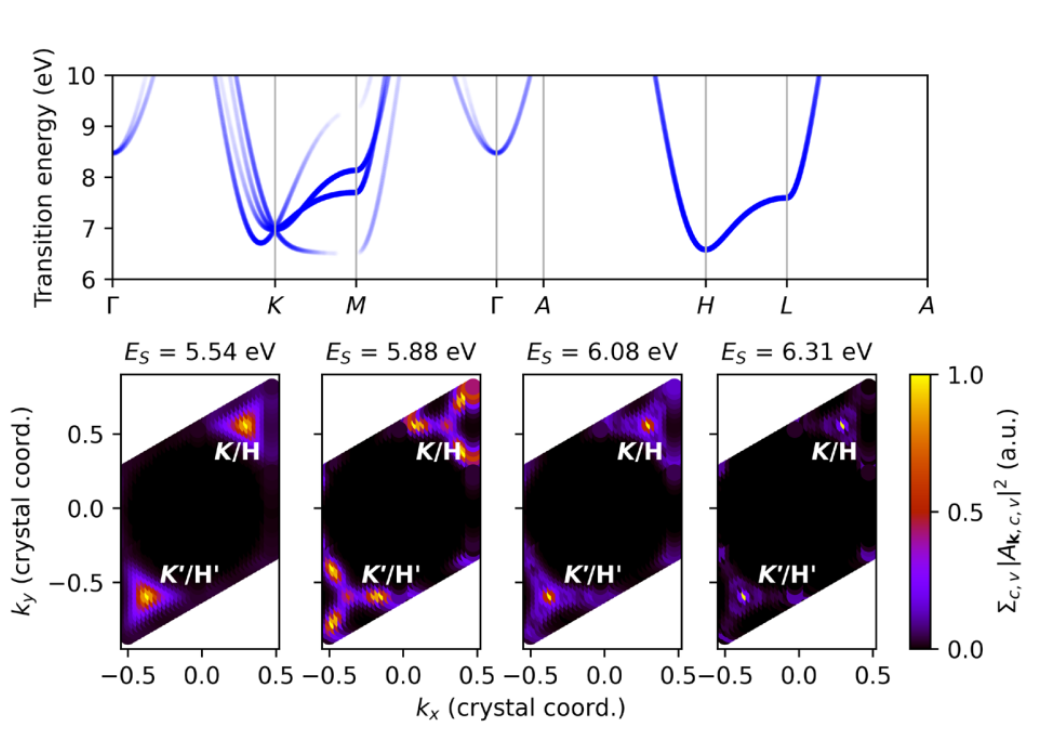
S. Reichardt and L. Wirtz. Nonadiabatic exciton-phonon coupling in Raman spectroscopy of layered materials. Science Advances 6 eabb5915 (2020)
© 2020 The Authors
https://doi.org/10.1126/sciadv.abb5915

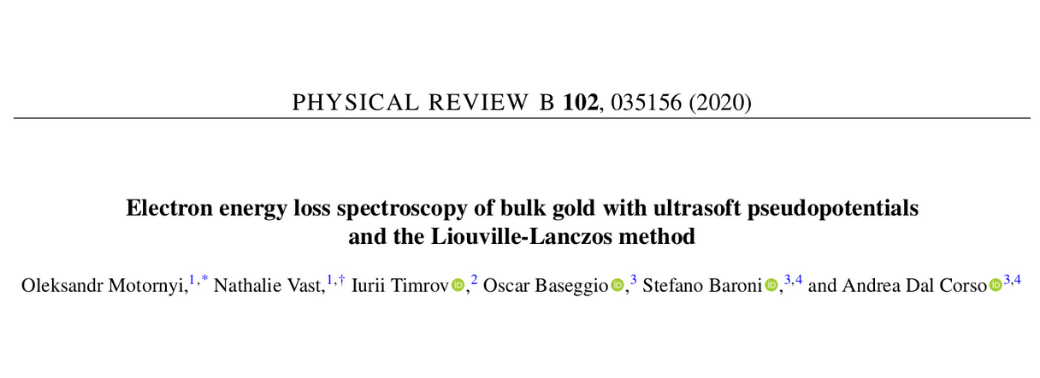
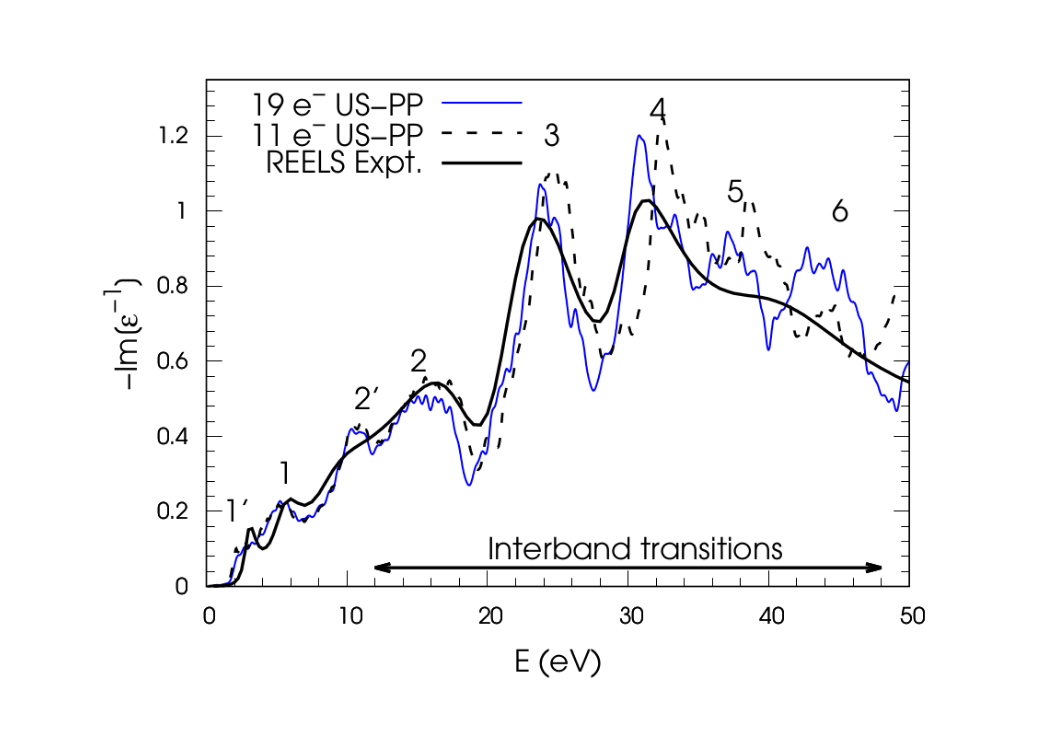
O. Motornyi, N. Vast, I. Timrov, O. Baseggio, S. Baroni, and A. Dal Corso. Electron energy loss spectroscopy of bulk gold with ultrasoft pseudopotentials and the Liouville-Lanczos method. Phys. Rev. B 102, 3 (2020)
©2020 American Physical Society

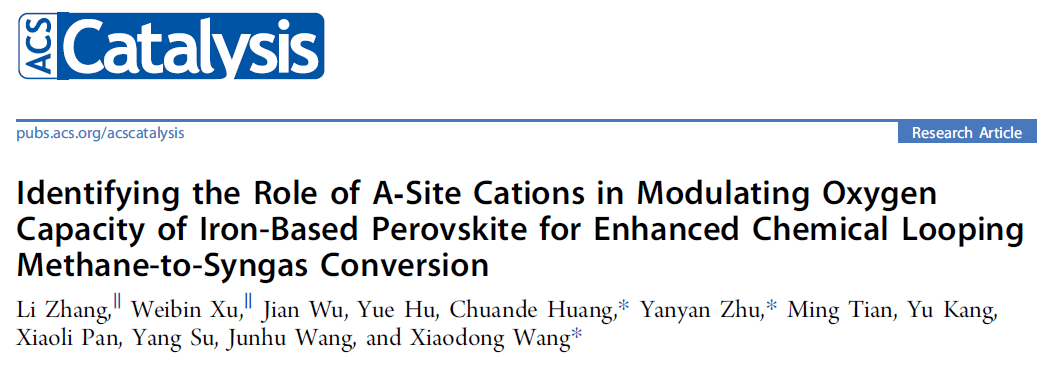
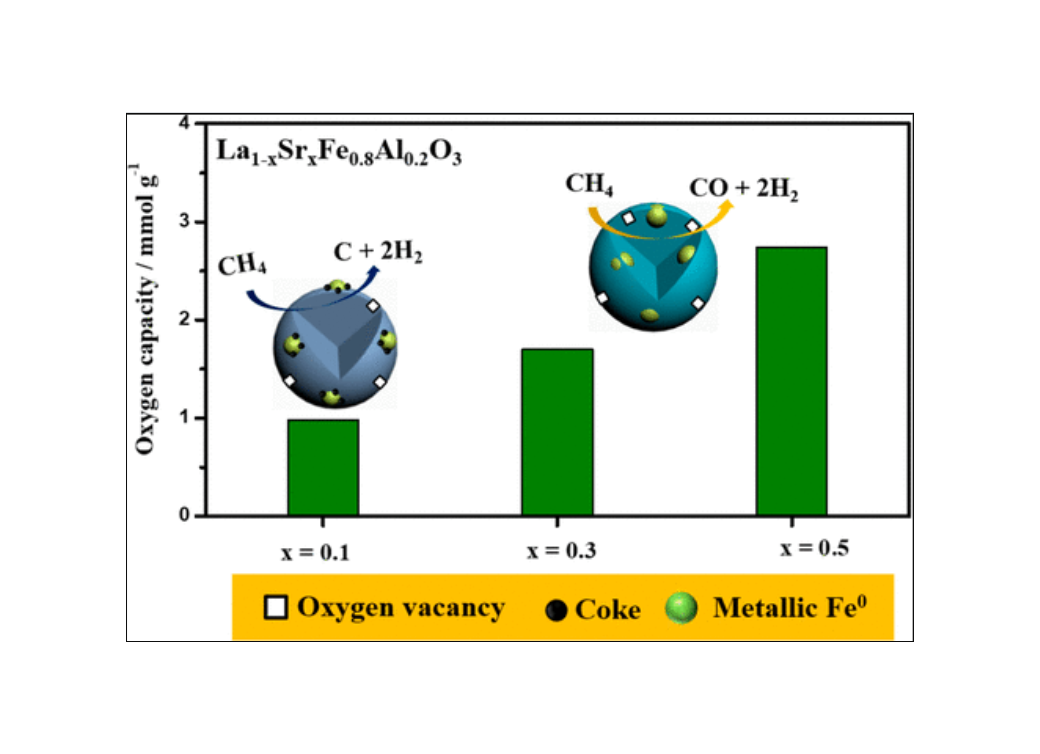
L. Zhang, W. Xu, J. Wu, Y. Hu, C. Huang, Y. Zhu, M. Tian, Y. Kang, X. Pan, Y. Su, J. Wang, X. Wang. Identifying the Role of A-Site Cations in Modulating Oxygen Capacity of Iron-Based Perovskite for Enhanced Chemical Looping Methane-to-Syngas Conversion. ACS Catal. 10, 16 (2020)
© 2020 American Chemical Society
https://doi.org/10.1021/acscatal.0c01811

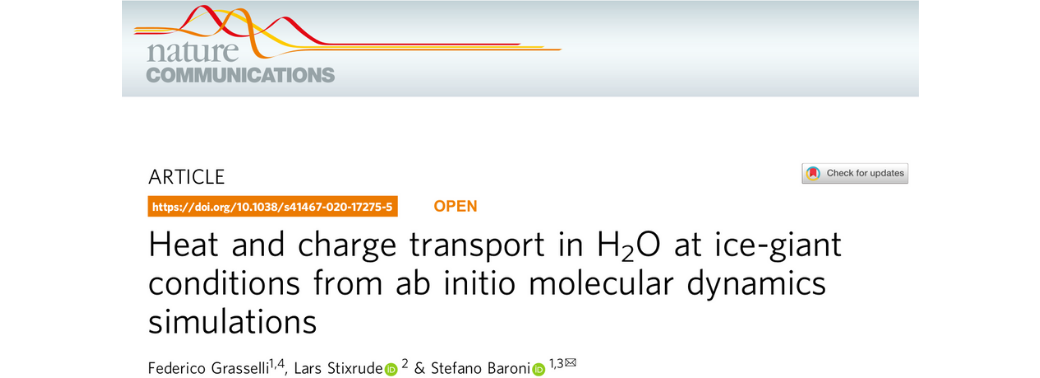
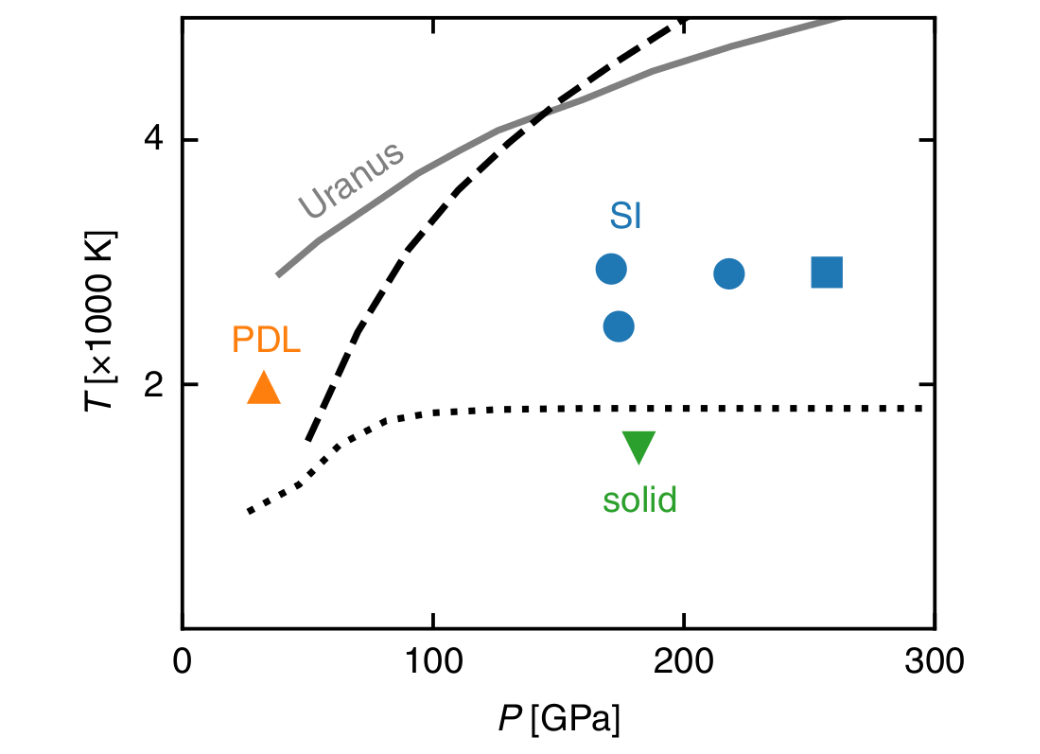
F. Grasselli, L. Stixrude, and S. Baroni. Heat and charge transport in H2O at ice-giant conditions from ab initio MD simulations. Nat Commun 11, 3605 (2020)
© 2020, The Author(s)
https://doi.org/10.1038/s41467-020-17275-5

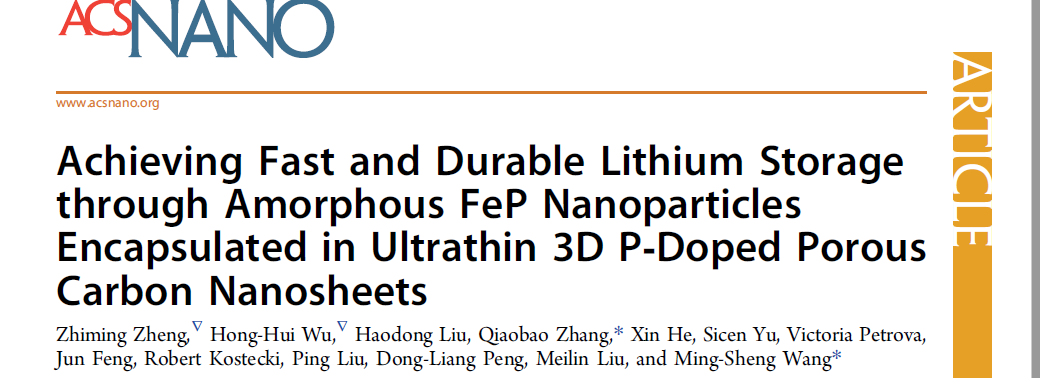
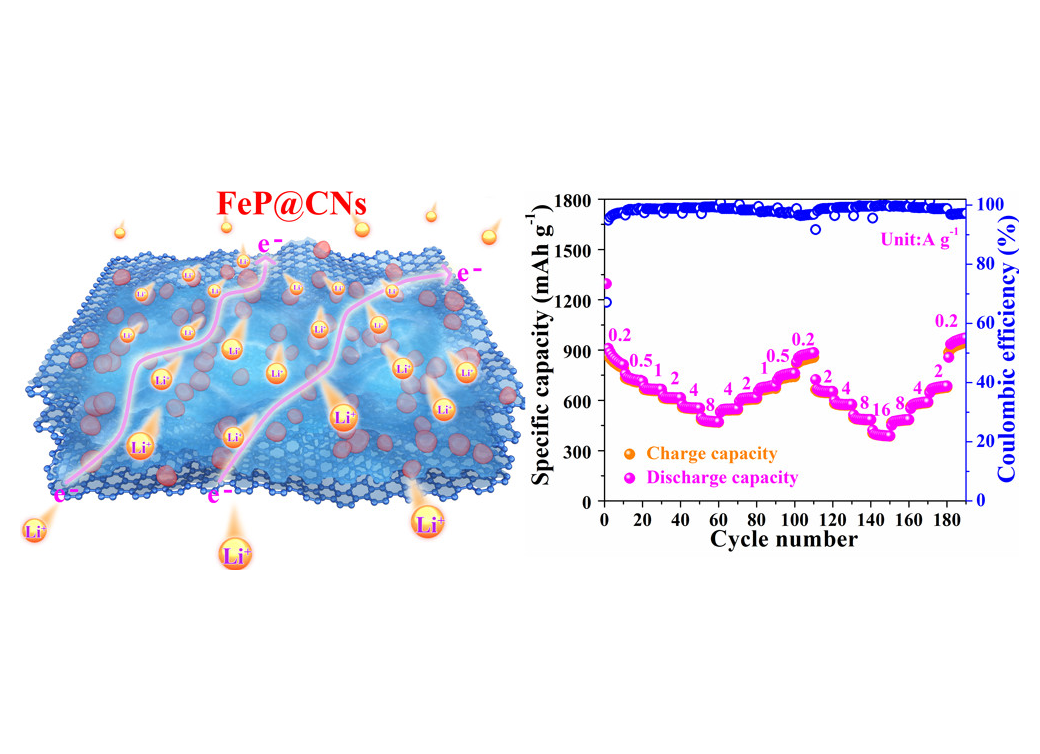
Z.M. Zheng, H.H. Wu, H.D. Liu, Q.B. Zhang, X. He, S.C. Yu, V. Petrova, J. Feng, R. Kostecki, P. Liu, D.L. Peng, M.L. Liu, M.S. Wang. Achieving Fast and Durable Lithium Storage through Amorphous FeP Nanoparticles Encapsulated in Ultrathin 3D P-Doped Porous Carbon Nanosheets. ACS Nano, 14, 8, 9545–9561 (2020)
© 2020 American Chemical Society
https://doi.org/10.1021/acsnano.9b08575

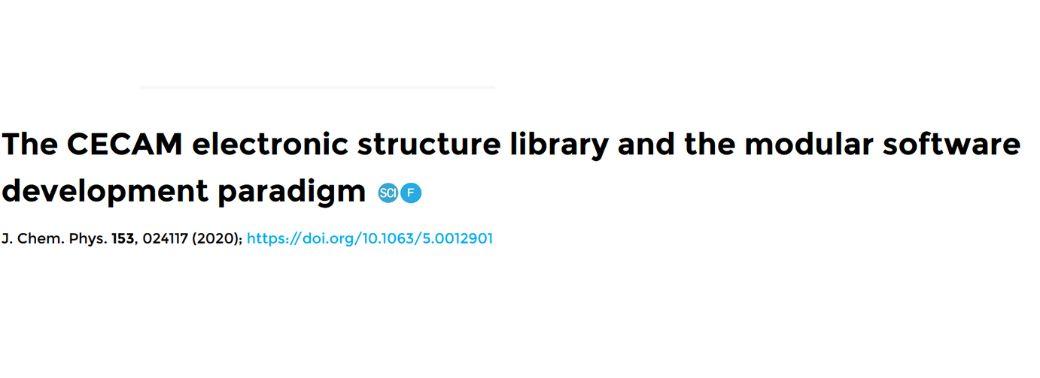
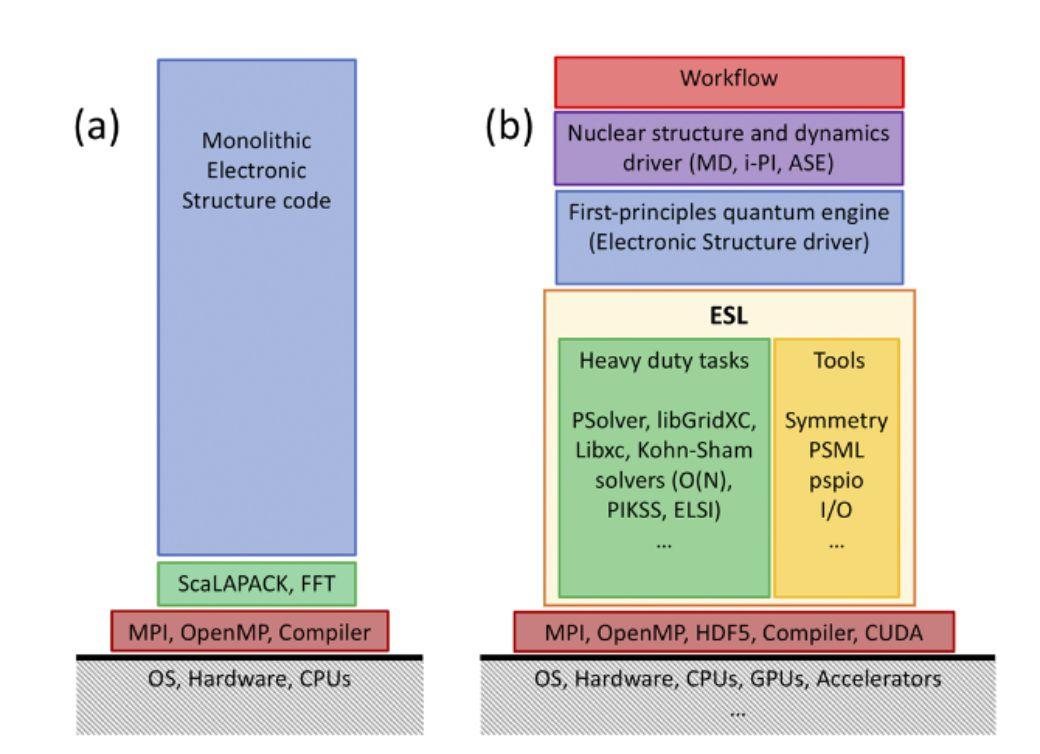
M. J. T. Oliveira, N. Papior, Y. Pouillon, V. Blum, E. Artacho, D. Caliste, F. Corsetti, S. de Gironcoli, A. M. Elena, A. Garcia, V. M. Garcia-Suarez, L. Genovese, W. P. Huhn, G. Huhs, S. Kokott, E. Kucukbenli, A. H. Larsen, A. Lazzaro, I. V. Lebedeva, Y. Li, D. Lopez-Duran, P. Lopez-Tarifa, M. Luders, M. A. L. Marques, J. Minar, S. Mohr, A. A. Mostofi, A. O'Cais, M. C. Payne, T. Ruh, D. G. A. Smith, J. M. Soler, D. A. Strubbe, N. Tancogne-Dejean, D. Tildesley, M. Torrent, and V. Wen-zhe Yu
© 2022, The Author(s)
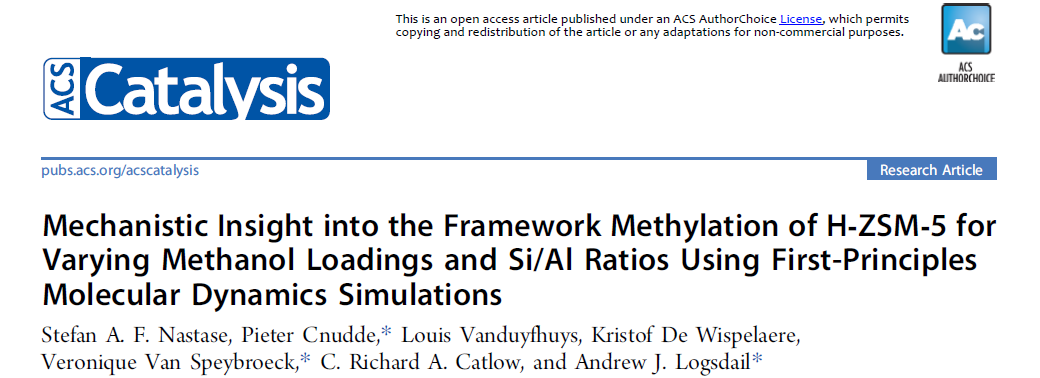
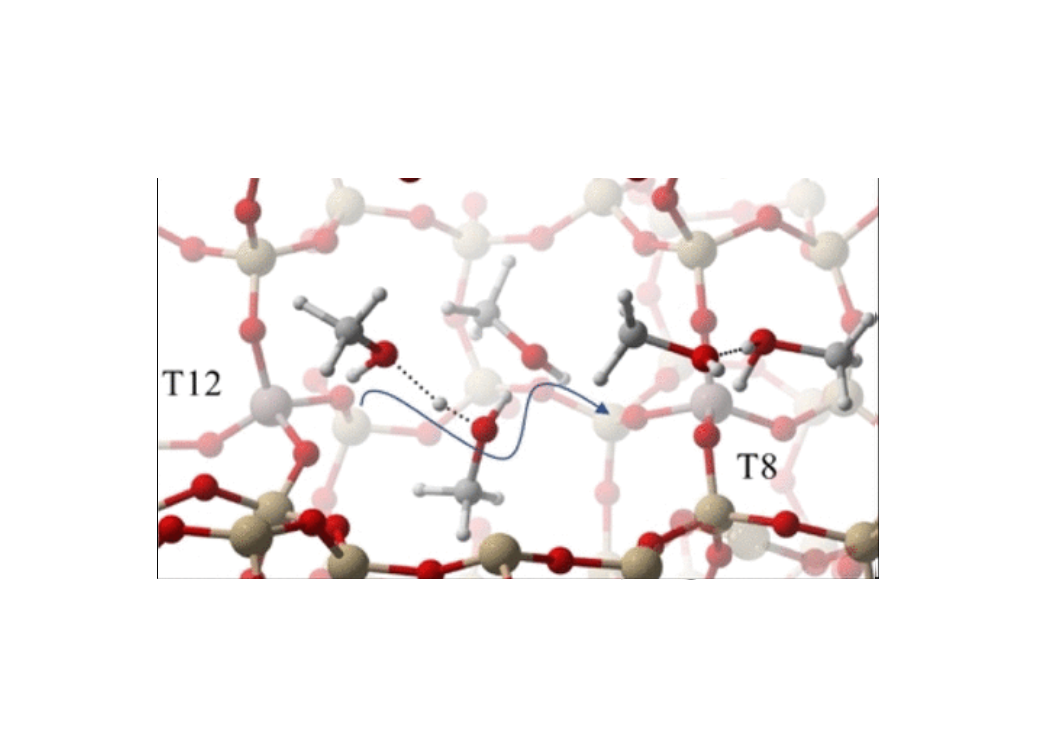
S. A. F. Nastase, P. Cnudde, L. Vanduyfhuys, K. De Wispelaere, V. Van Speybroeck, C. R. A. Catlow, and A. J. Logsdail. Mechanistic Insight into the Framework Methylation of H-ZSM-5 for Varying Methanol Loadings and Si/Al Ratios Using First-Principles Molecular Dynamics Simulations. ACS Catalysis 10, 15 (2020)
© 2020 American Chemical Society
https://doi.org/10.1021/acscatal.0c01454

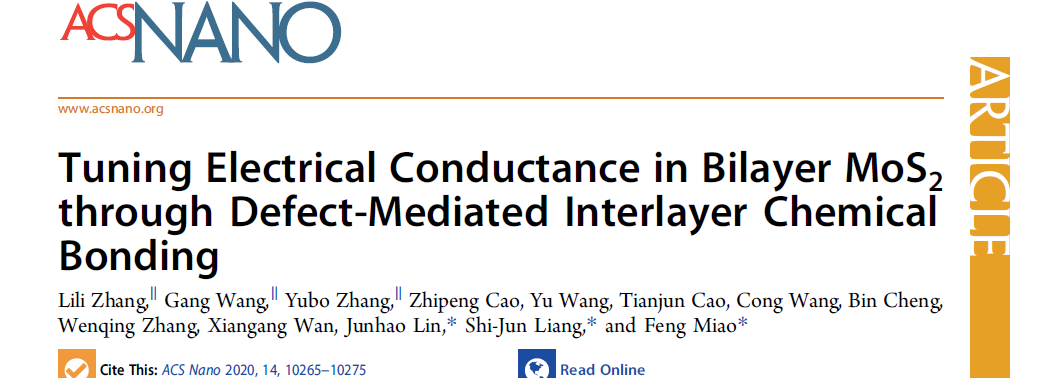
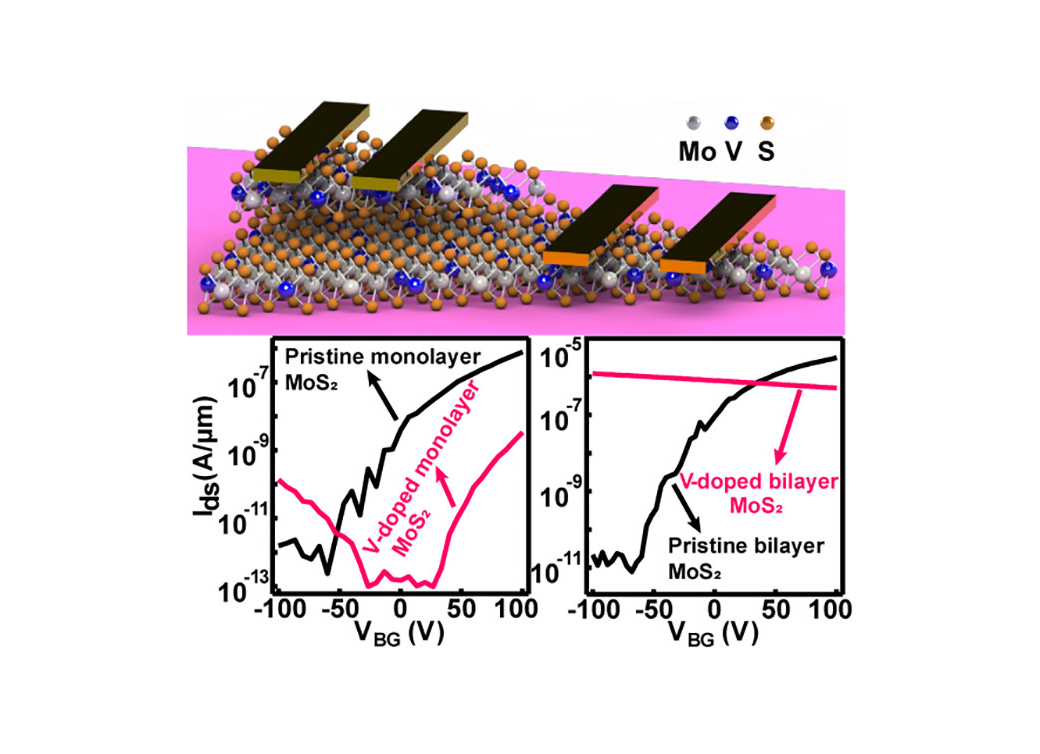
L. Zhang, G. Wang, Y. Zhang, Z. Cao, Y. Wang, T. Cao, C. Wang, B. Cheng, W. Zhang, X. Wan, J. Lin, S.-J. Liang, and F. Miao. Tuning Electrical Conductance in Bilayer MoS2 through Defect-Mediated Interlayer Chemical Bonding. ACS Nano 14, 8 (2020)
© 2020 American Chemical Society
https://doi.org/10.1021/acsnano.0c03665

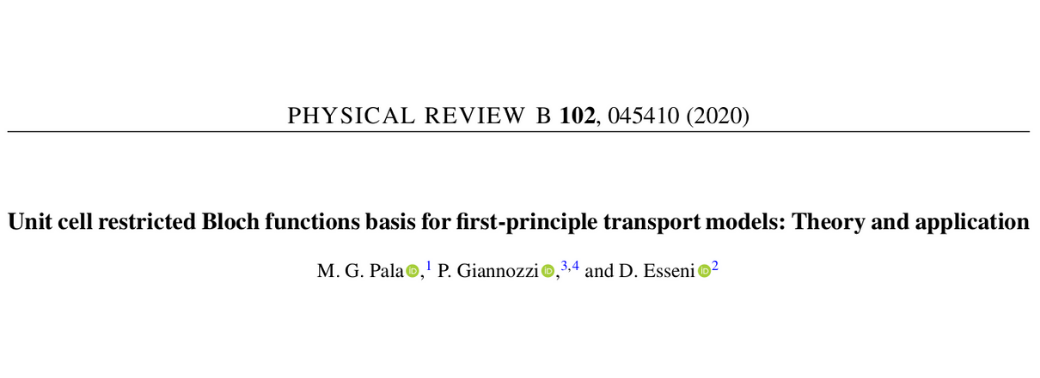
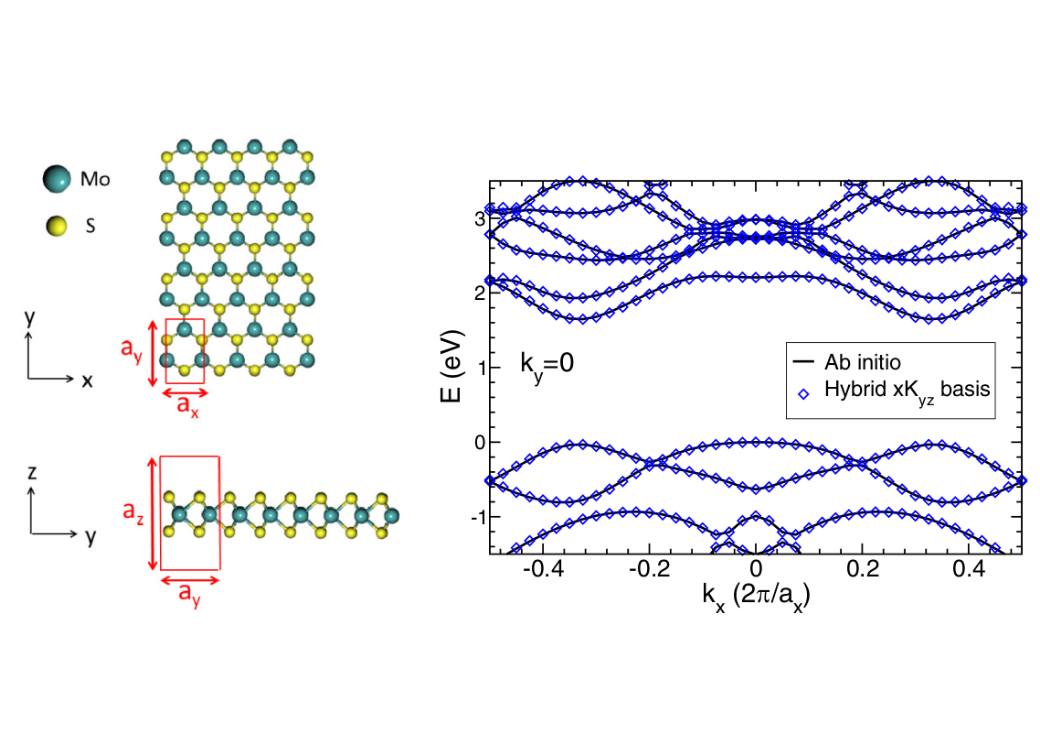
M. G. Pala, P. Giannozzi, and D. Esseni. Unit cell restricted Bloch functions basis for first-principle transport models: Theory and application. Phys. Rev. B 102, 045410 (2020)
©2020 American Physical Society
https://doi.org/10.1103/PhysRevB.102.045410

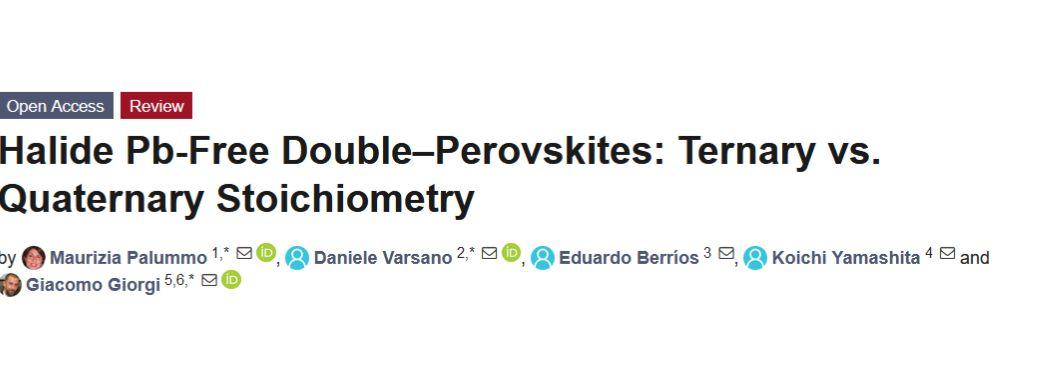
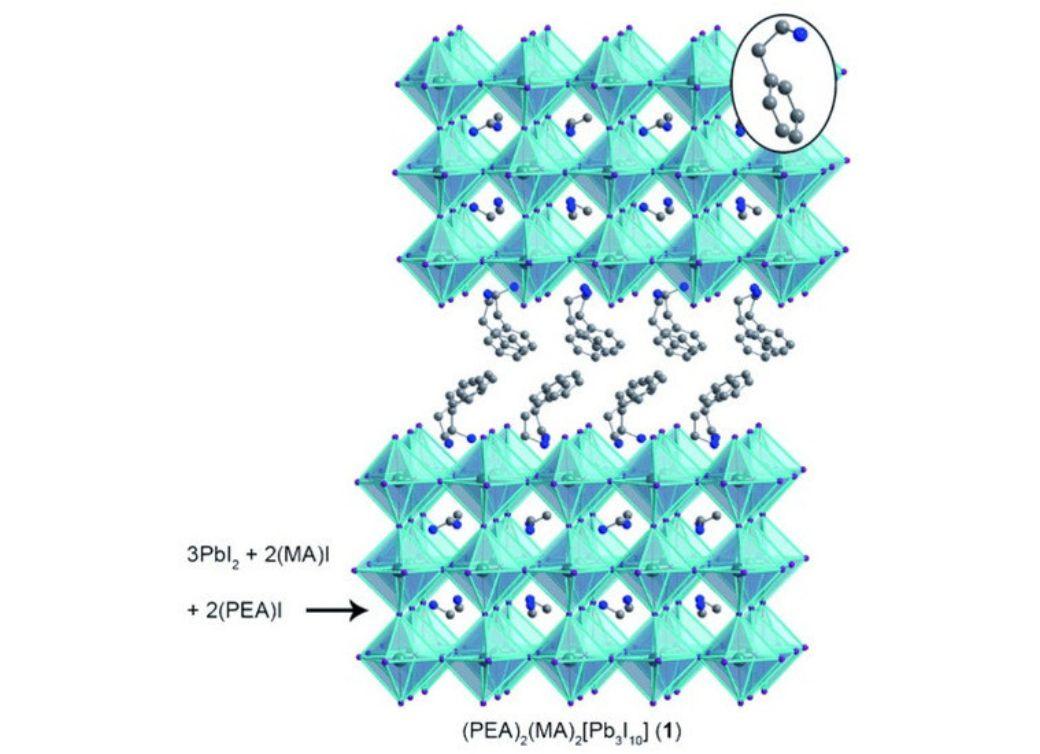
M. Palummo, D. Varsano, E. Berríos, K. Yamashita and G. Giorgi
© 2022, The Author(s)
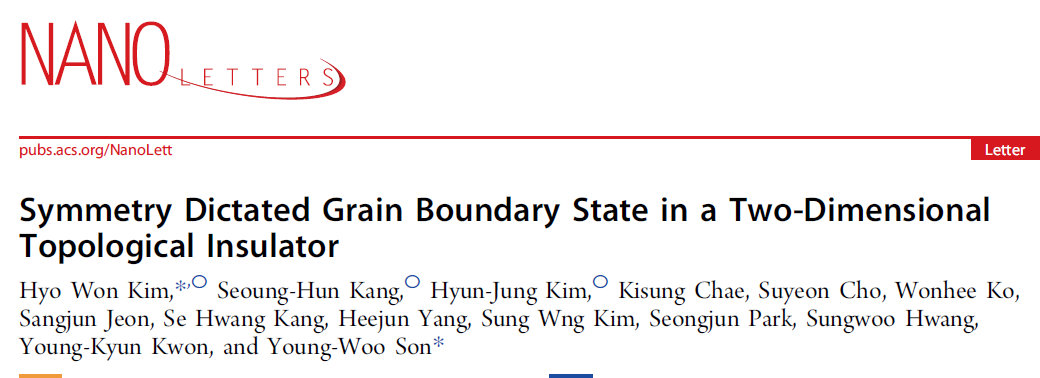
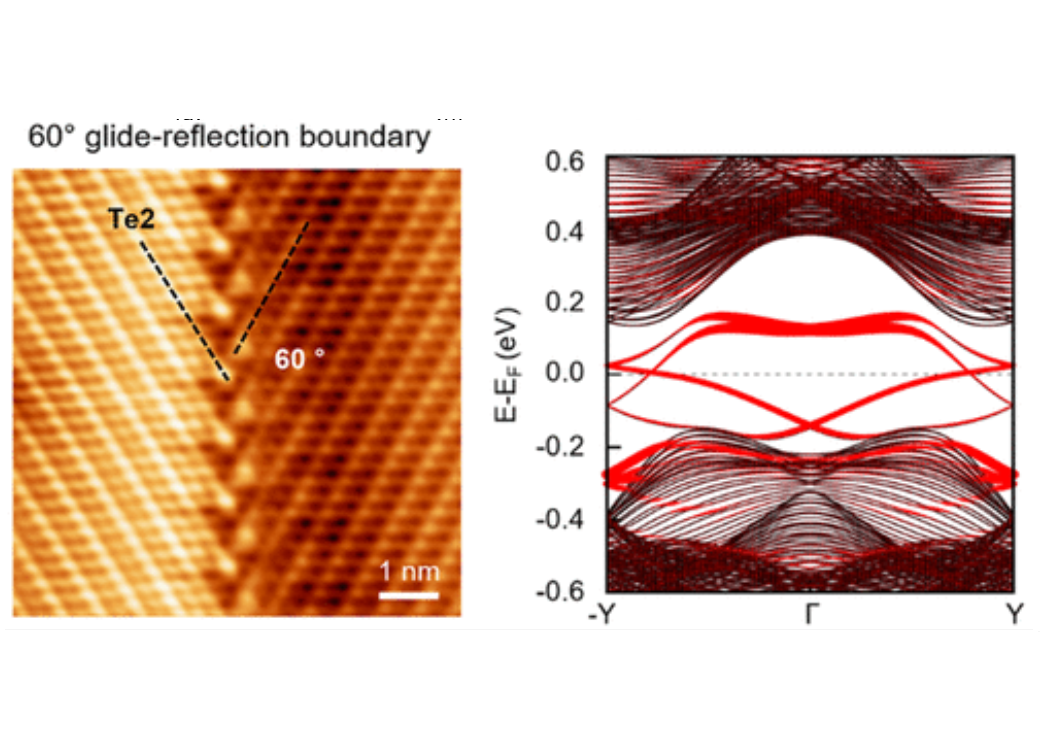
H. W. Kim, S.-H. Kang, H.-J. Kim, K. Chae, S. Cho, W. Ko, S. Jeon, S. Hwang Kang, H. Yang, S. Wng Kim, S. Park, S. Hwang, Y.-K. Kwon, and Y.-W. Son. Symmetry Dictated Grain Boundary State in a Two-Dimensional Topological Insulator. Nano Letters 20, 8 (2020)
© 2020 American Chemical Society

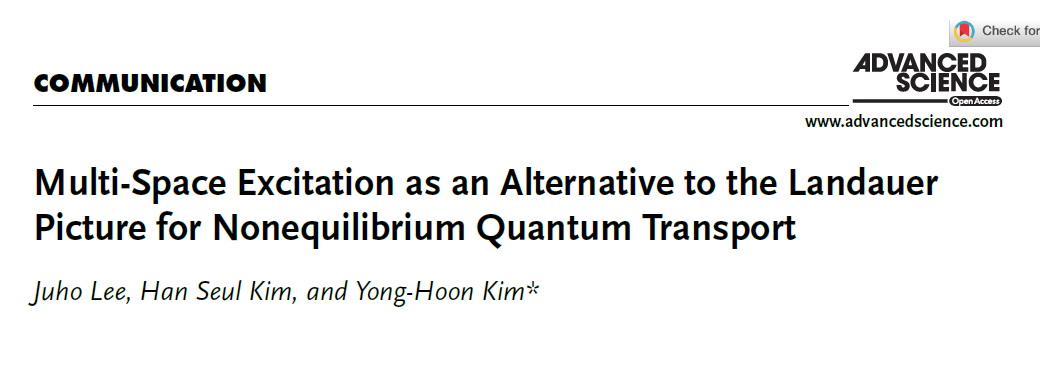
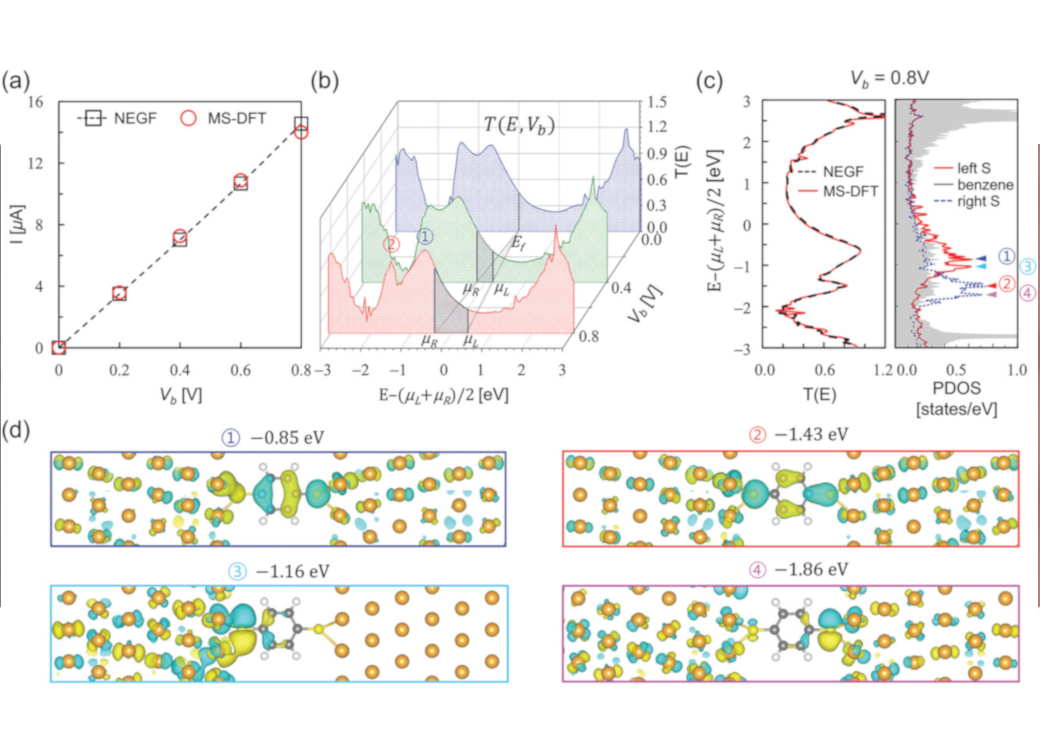
J. Lee, H. Seul Kim, Y.‐H. Kim Multi‐Space Excitation as an Alternative to the Landauer Picture for Nonequilibrium Quantum Transport. Advanced Science 7, 16 (2020)
© 2020 The Authors
https://doi.org/10.1002/advs.202001038

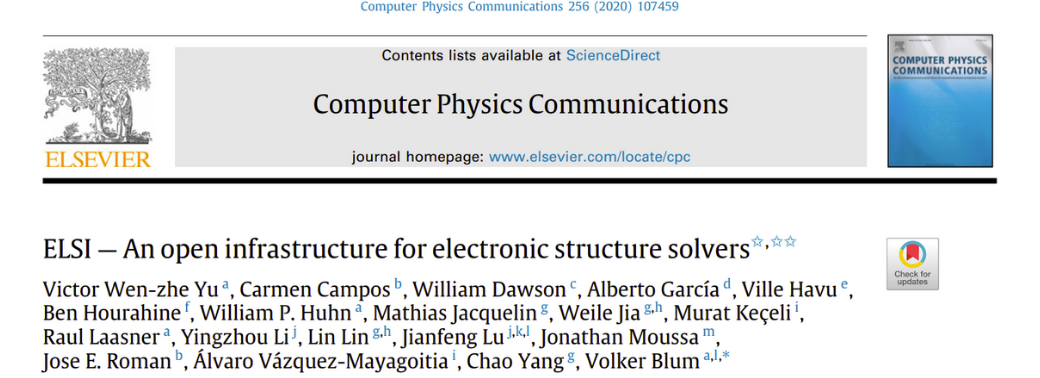
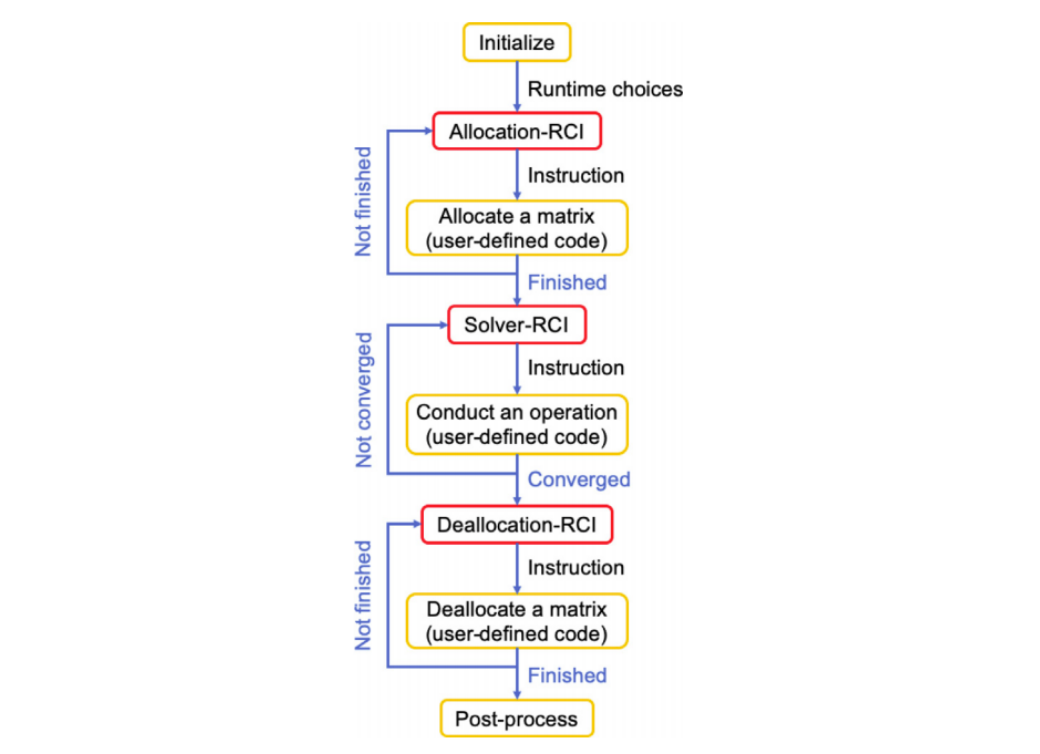
V. Wen-zhe Yu, C. Campos, W. Dawson, A. García, V. Havu, B. Hourahine, W. P Huhn, M. Jacquelin, W. Jia, M. Keçeli, R. Laasner, Y. Li, Lin Lin, J. Lu, J. Moussa, J. E Roman, Á. Vázquez-Mayagoitia, C. Yang, V. Blum. ELSI -- An Open Infrastructure for Electronic Structure Solvers. Comp. Phys. Comm. 256 (2020)
© 2020 Elsevier B.V. All rights reserved.
https://doi.org/10.1016/j.cpc.2020.107459
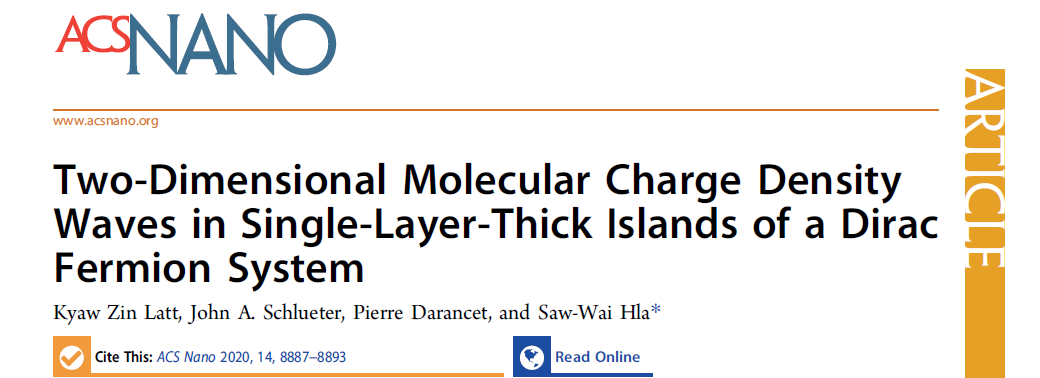
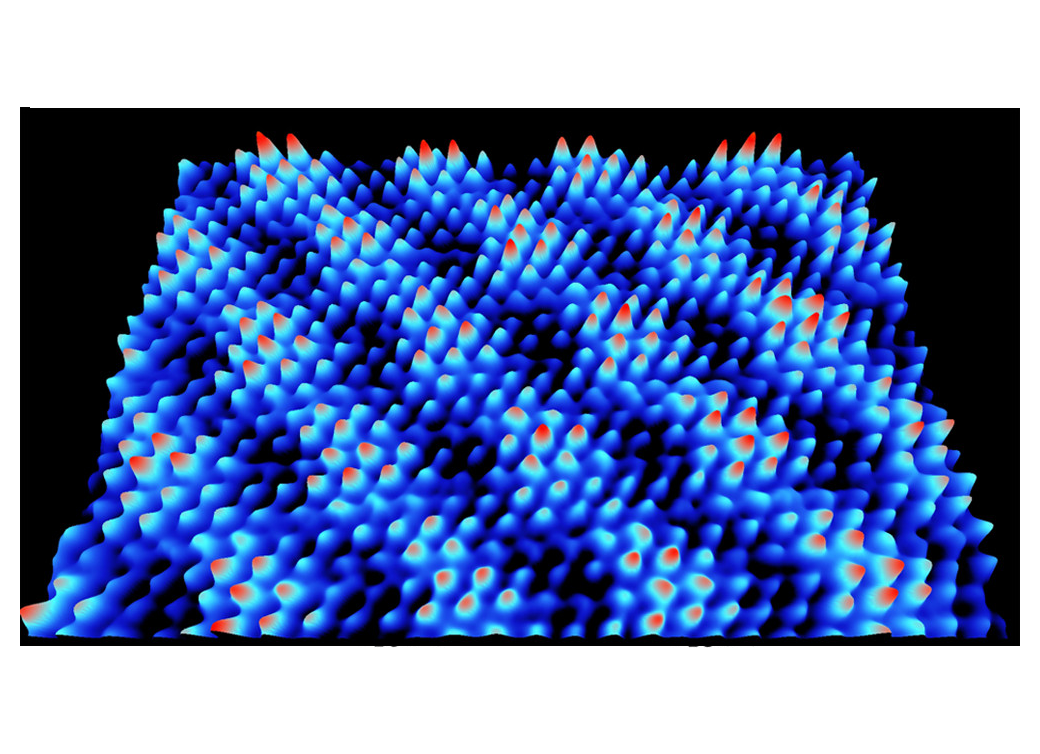
K. Zin Latt, J. A. Schlueter, P. Darancet, and S.-W. Hla. Two-Dimensional Molecular Charge Density Waves in Single-Layer-Thick Islands of a Dirac Fermion System. ACS Nano 14, 7 (2020)
© 2020 American Chemical Society

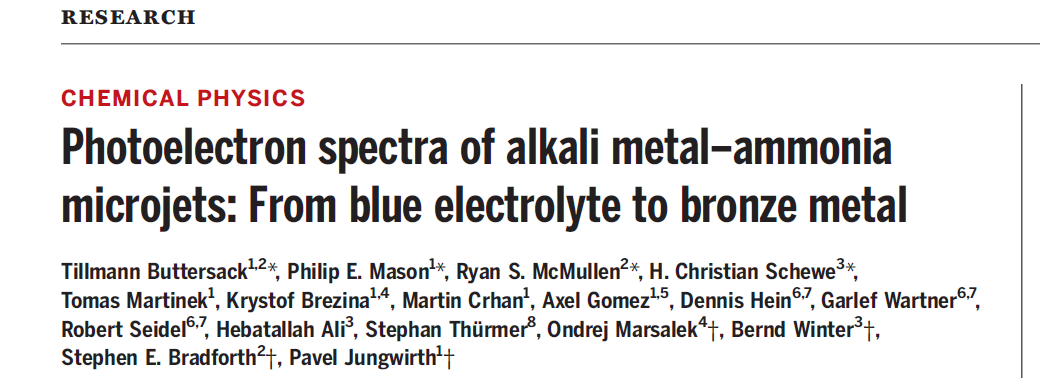
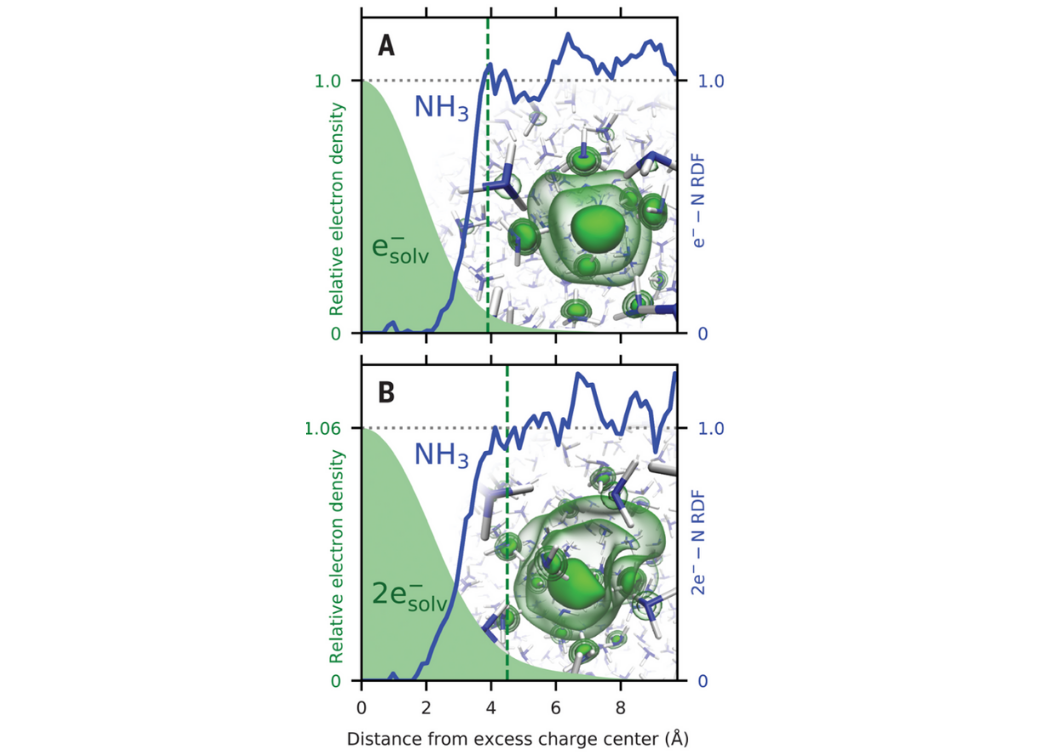
T. Buttersack, P.E. Mason, R.S. McMullen, H.C. Schewe, T. Martinek, K. Brezina, M. Crhan, A. Gomez, D. Hein, G. Wartner, R. Seidel, H. Ali, S. Thürmer, O. Marsalek, B. Winter, S.E. Bradforth, P. Jungwirth. Photoelectron spectra of alkali metal–ammonia microjets: From blue electrolyte to bronze metal Science 368 (2020)
© 2020 The Authors

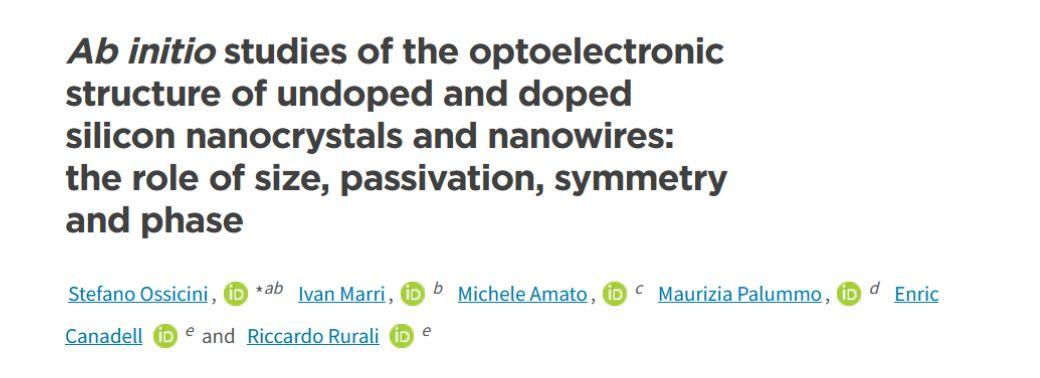
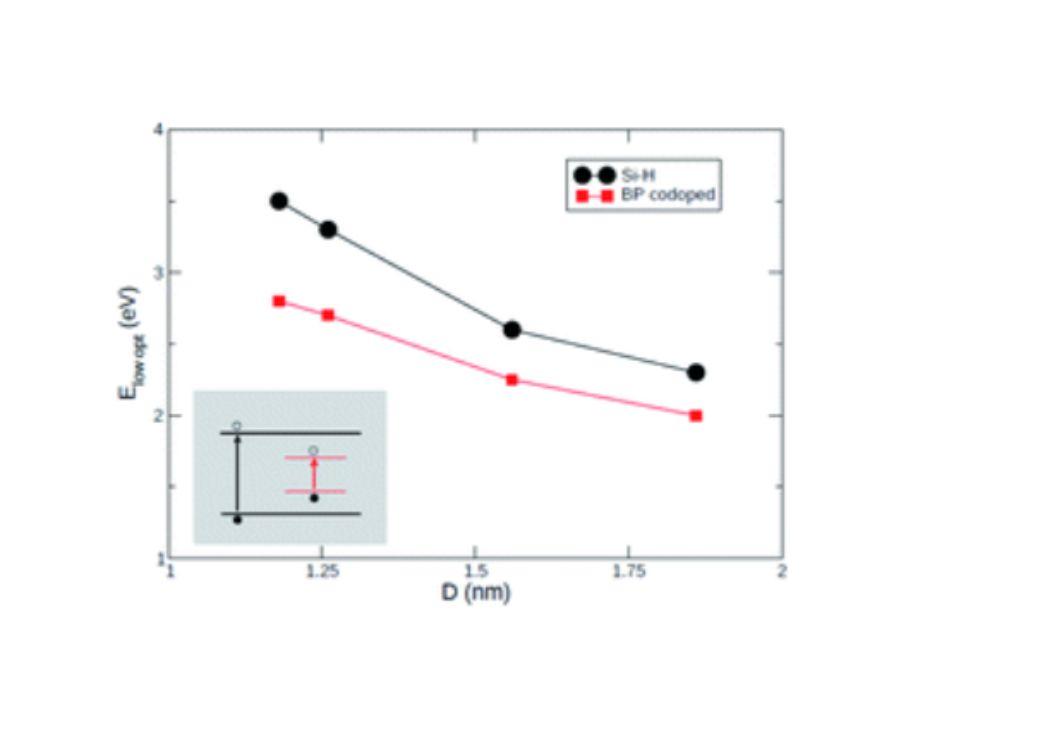
S. Ossicini, I.Marri, M. Amato, M. Palummo, E. Canadell, and R. Rurali
© 2022, The Author(s)
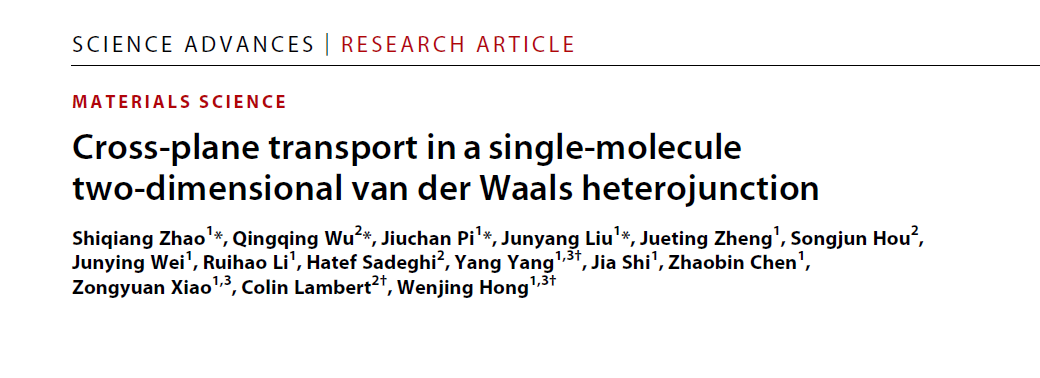
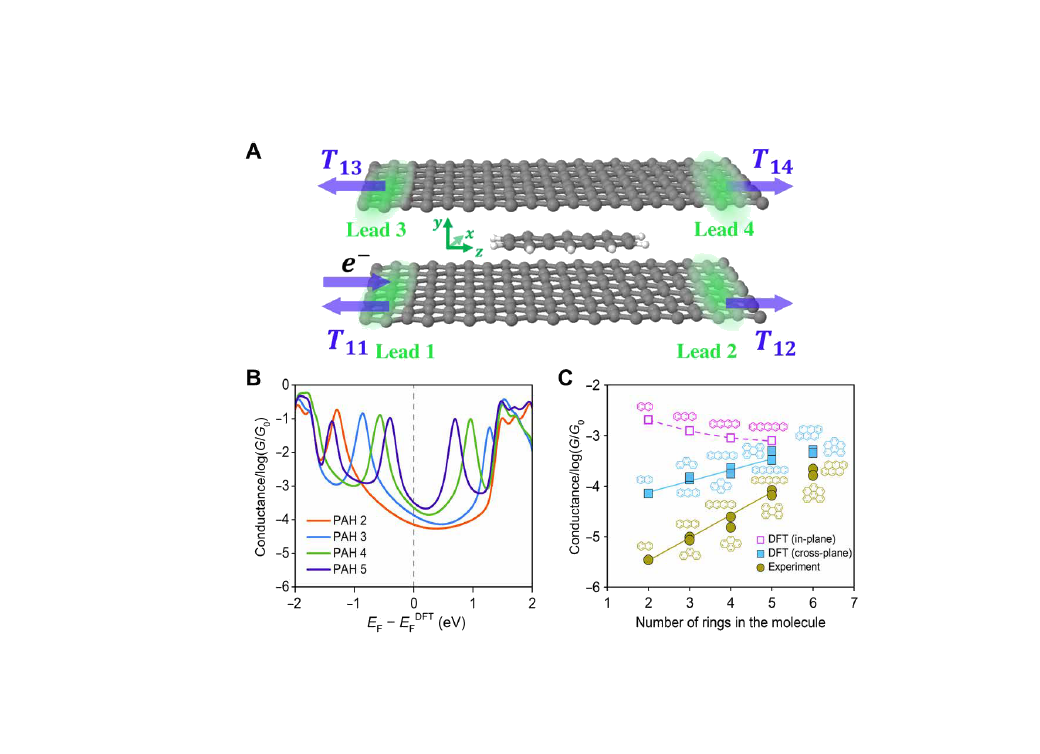
S. Zhao, Q. Wu, J. Pi, J. Liu, J. Zheng, S. Hou, J. Wei, R. Li, H. Sadeghi, Y. Yang, J. Shi, Z. Chen, Z. Xiao, C. Lambert, W. Hong. Cross-plane transport in a single-molecule two-dimensional van der Waals heterojunction. Science Advances 6, 22 (2020)
© 2020 The Authors
https://doi.org/10.1126/sciadv.aba6714

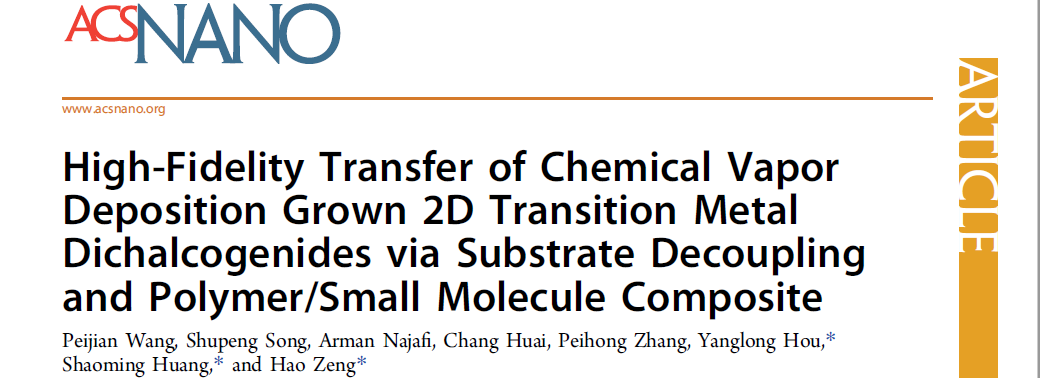
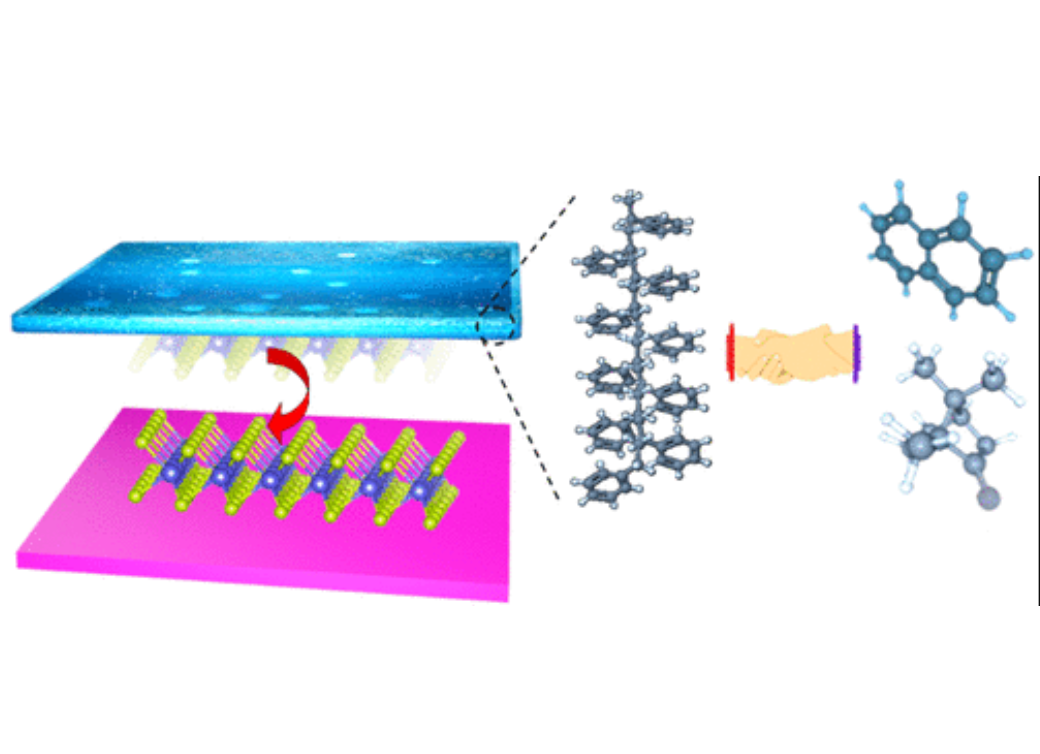
P. Wang, S. Song, A. Najafi, C. Huai, P. Zhang, Y. Hou, S. Huang, and H. Zeng. High-Fidelity Transfer of Chemical Vapor Deposition Grown 2D Transition Metal Dichalcogenides via Substrate Decoupling and Polymer/Small Molecule Composite. ACS Nano 14, 6 (2020)

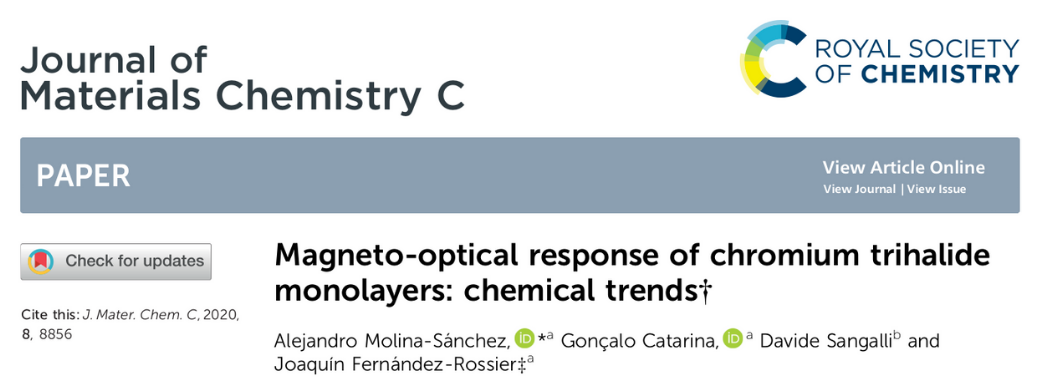
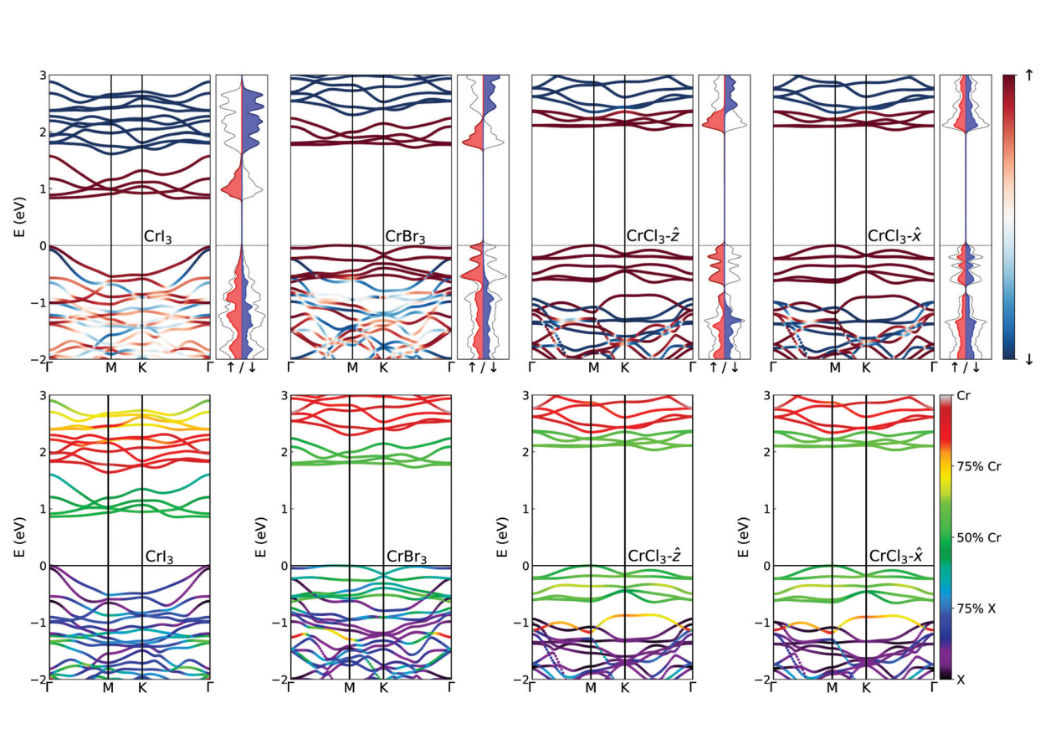
A. Molina-Sánchez, G. Catarina, J. Fernández-Rossier. Magneto-optical response of chromium trihalide monolayers: chemical trends. J. Mater. Chem. C, 8 (2020)
© The Royal Society of Chemistry 2020
https://doi.org/10.1039/D0TC01322F

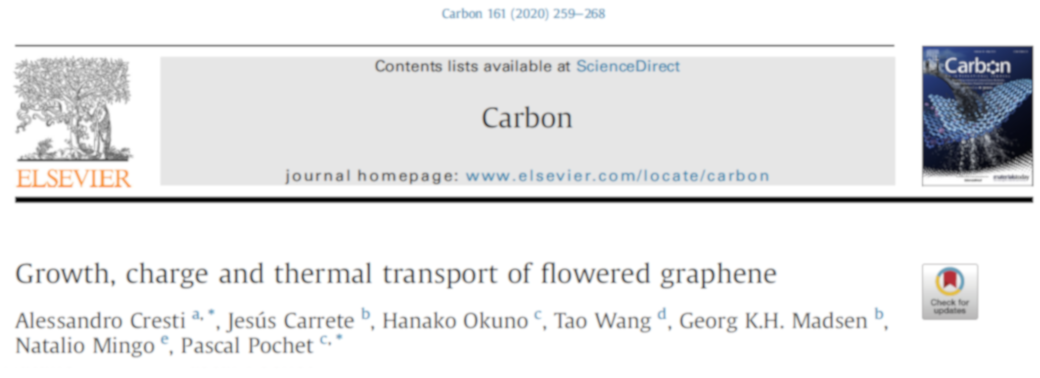
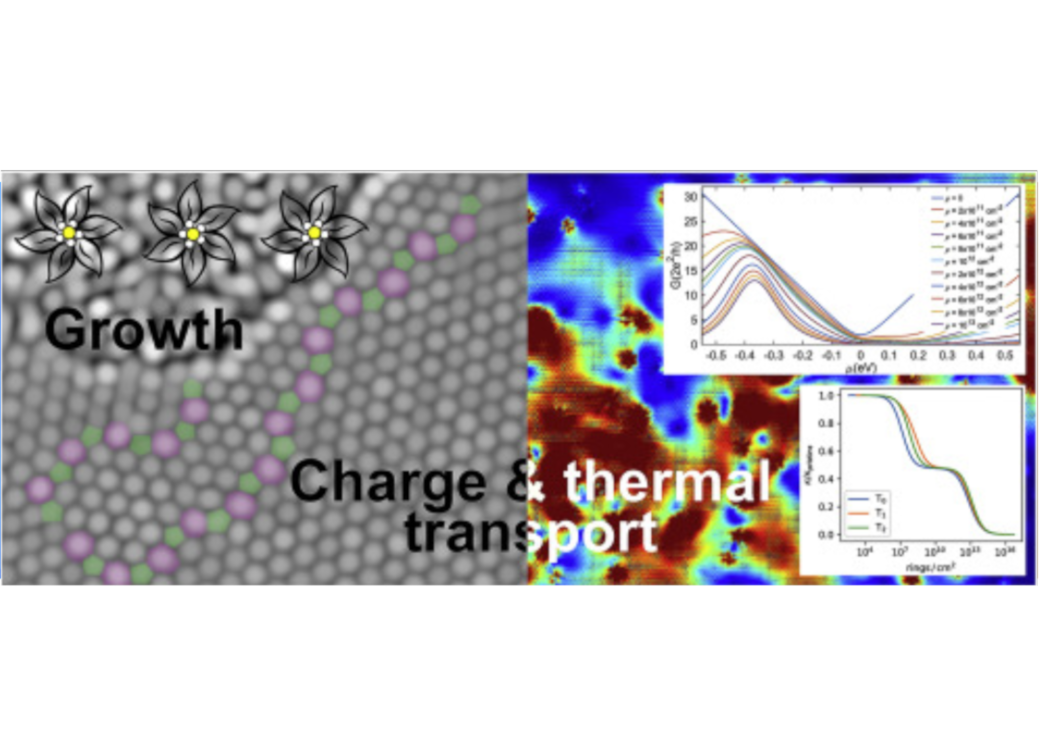

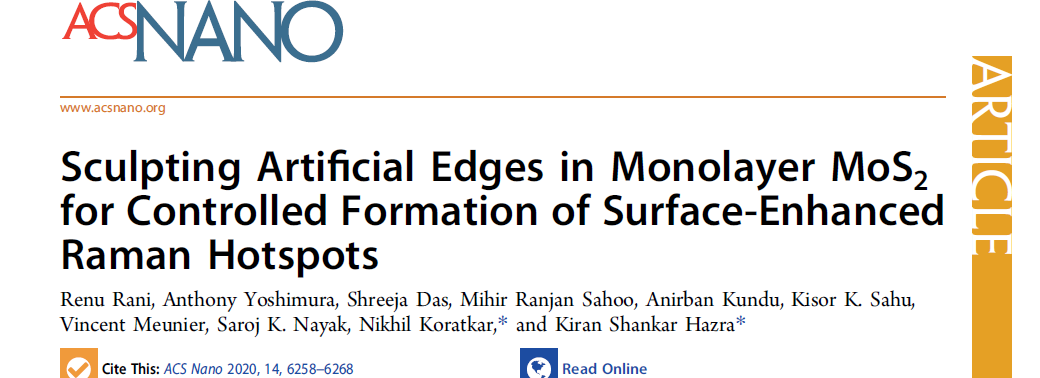
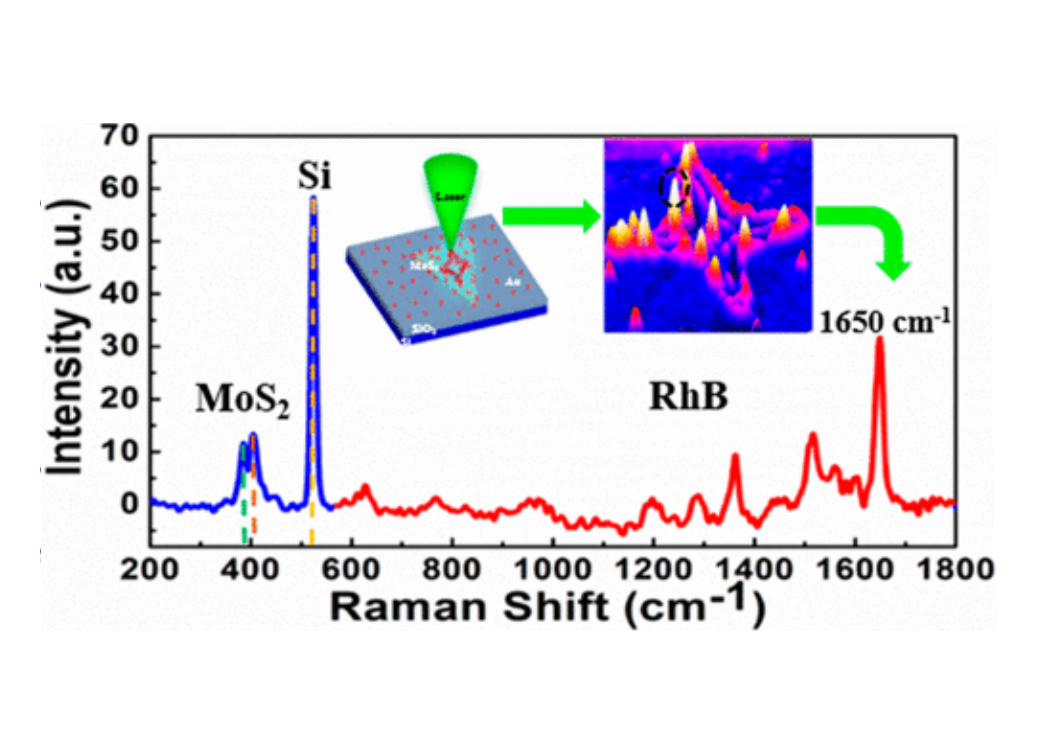
R. Rani, A. Yoshimura, S. Das, M. R. Sahoo, A. Kundu, K. K. Sahu, V. Meunier, S. K. Nayak, N. Koratkar, and K. S. Hazra. Sculpting Artificial Edges in Monolayer MoS2 for Controlled Formation of Surface-Enhanced Raman Hotspots. ACS Nano 14, 5 (2020)
© 2020 American Chemical Society

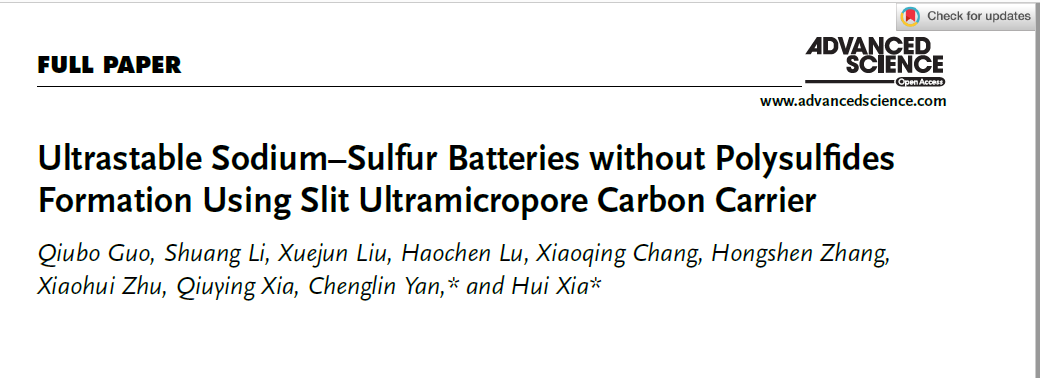
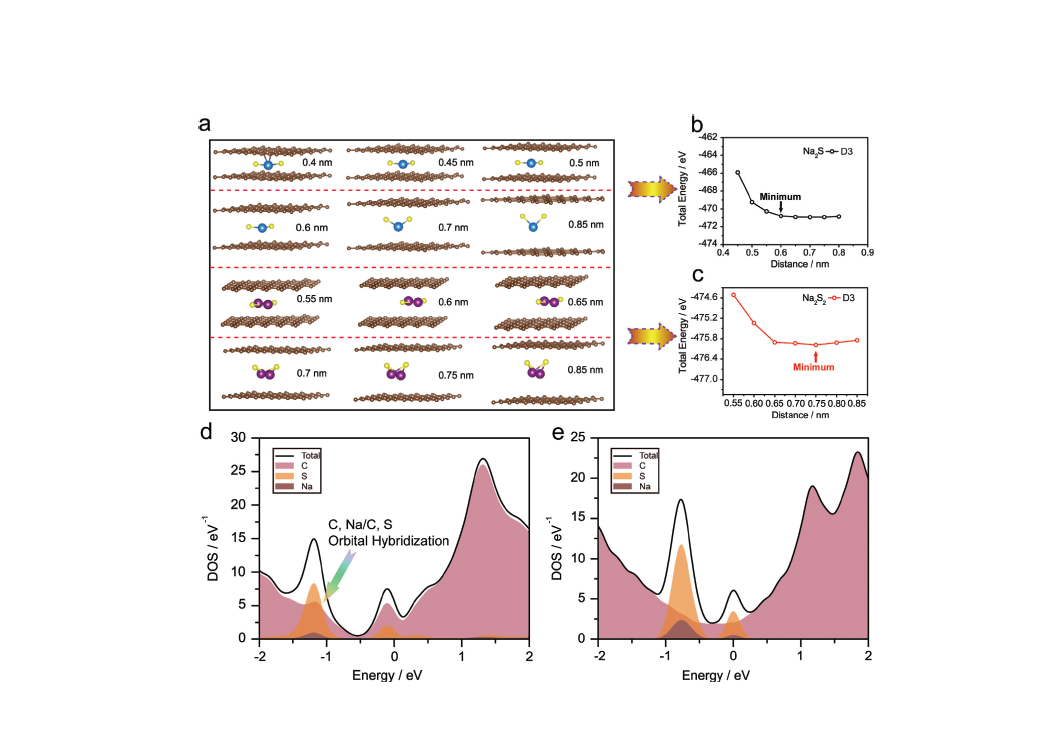
Q. Guo, S. Li, X. Liu, H. Lu, X. Chang, H. Zhang, X. Zhu, Q. Xia, C. Yan, H. Xia. Ultrastable Sodium–Sulfur Batteries without Polysulfides Formation Using Slit Ultramicropore Carbon Carrier. Adv. Sci. 7, 1903246 (2020)
© 2020 The Authors

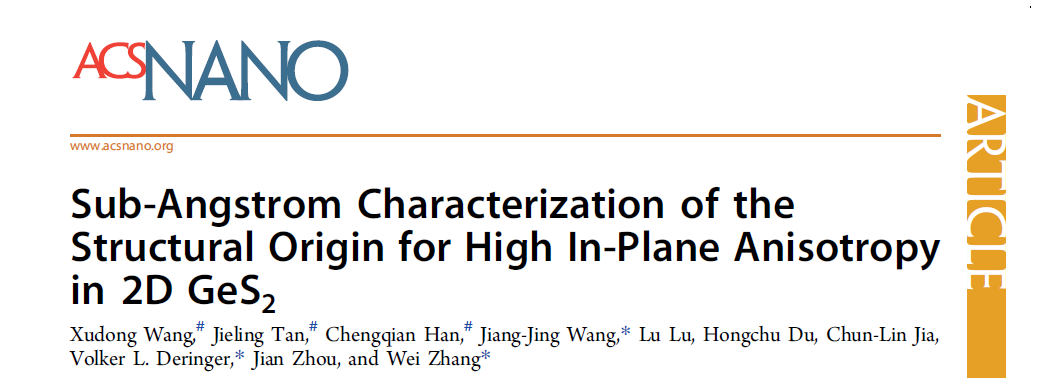
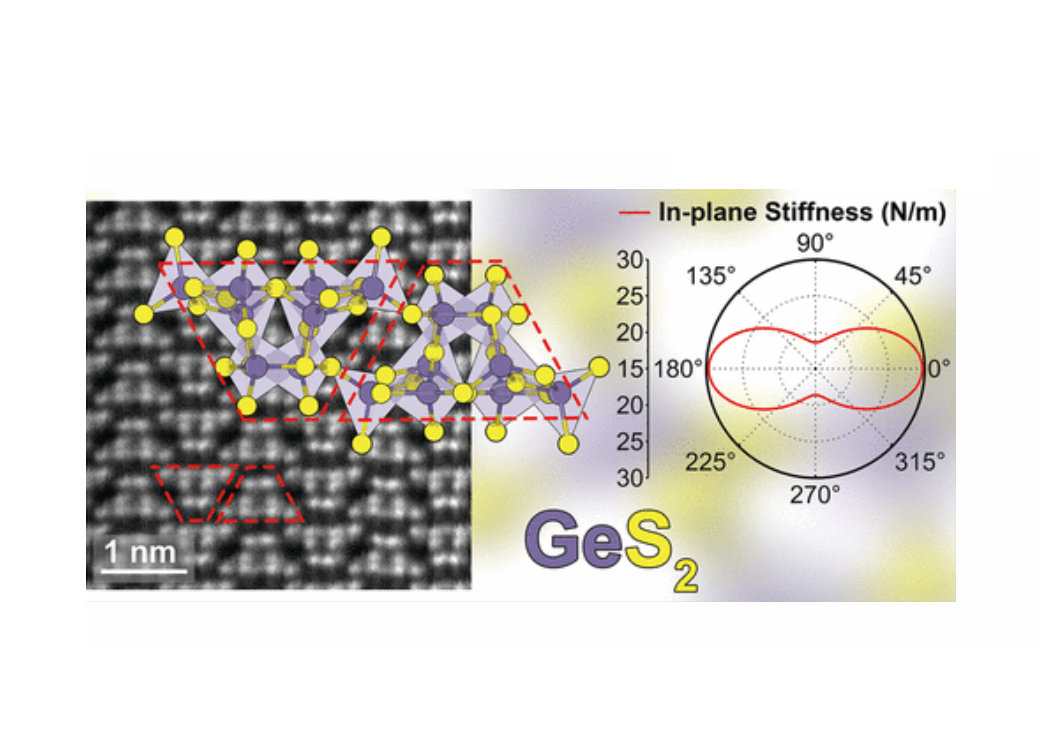

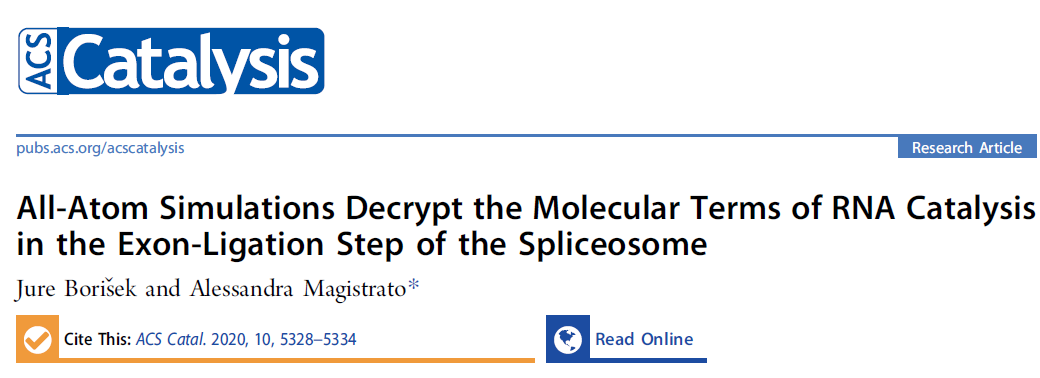
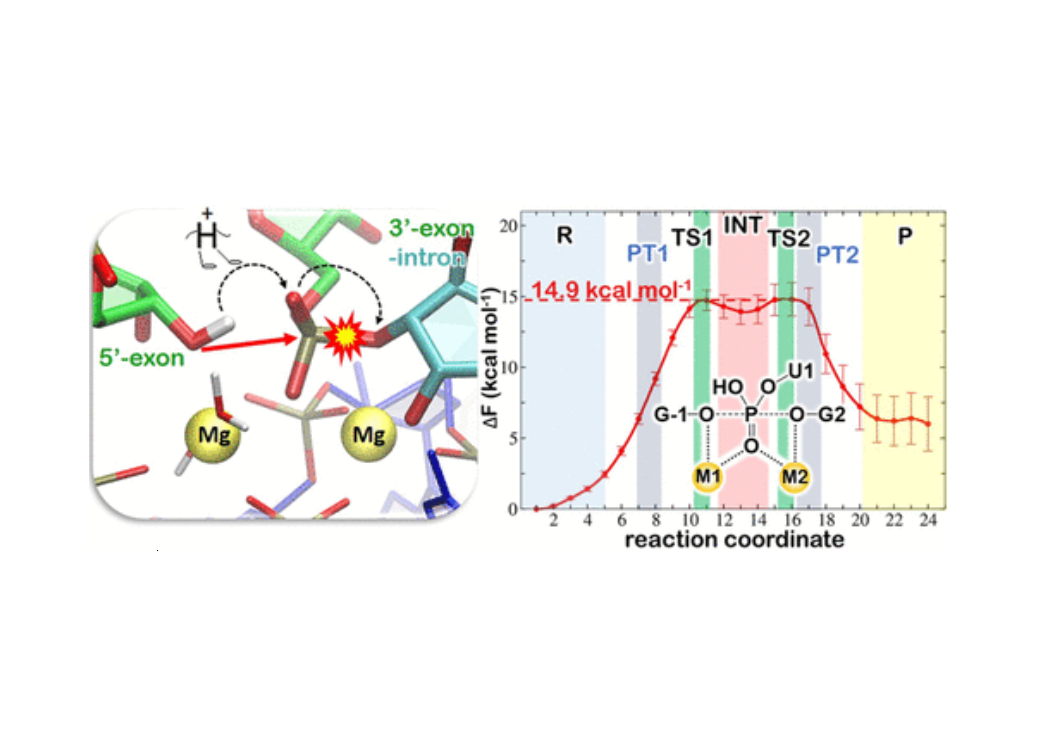
J. Borišek and A. Magistrato. All-Atom Simulations Decrypt the Molecular Terms of RNA Catalysis in the Exon-Ligation Step of the Spliceosome. ACS Catal. 10, 9 (2020)
© 2020 American Chemical Society
https://doi.org/10.1021/acscatal.0c00390

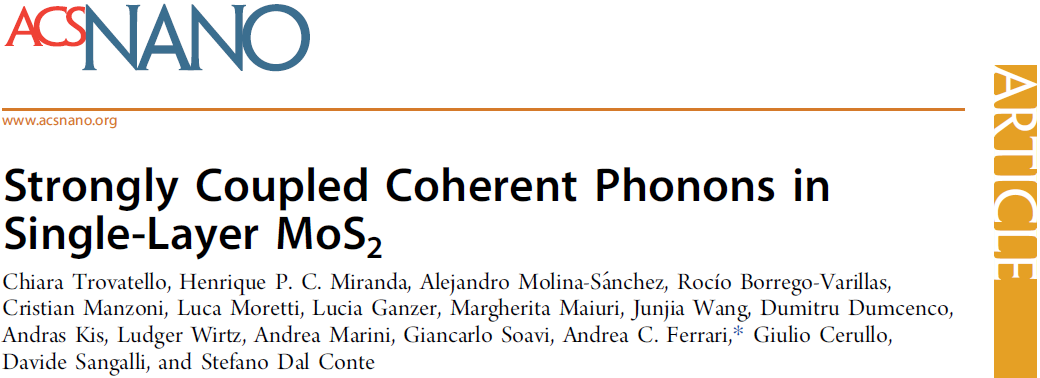
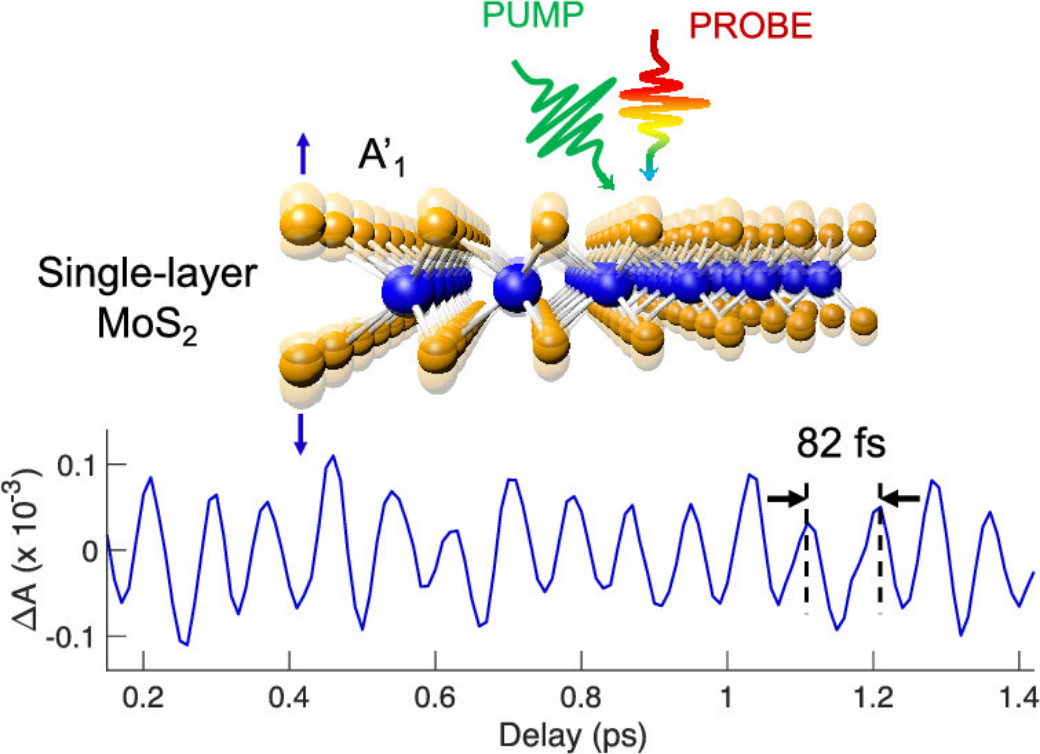
C.Trovatello, H.P.C. Miranda, A. Molina-Sánchez, R. Borrego-Varillas, C. Manzoni, L. Moretti, L. Ganzer, M. Maiuri, J. Wang, D. Dumcenco, A. Kis, L. Wirtz, A. Marini, G. Soavi, A.C. Ferrari, G. Cerullo, D. Sangalli, and S. Dal Conte. Strongly Coupled Coherent Phonons in Single-Layer MoS2. ACS Nano 14, 5 (2020)

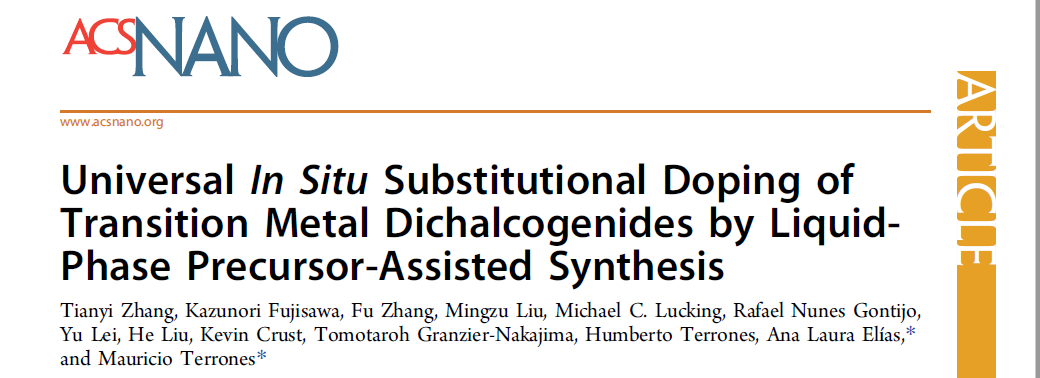
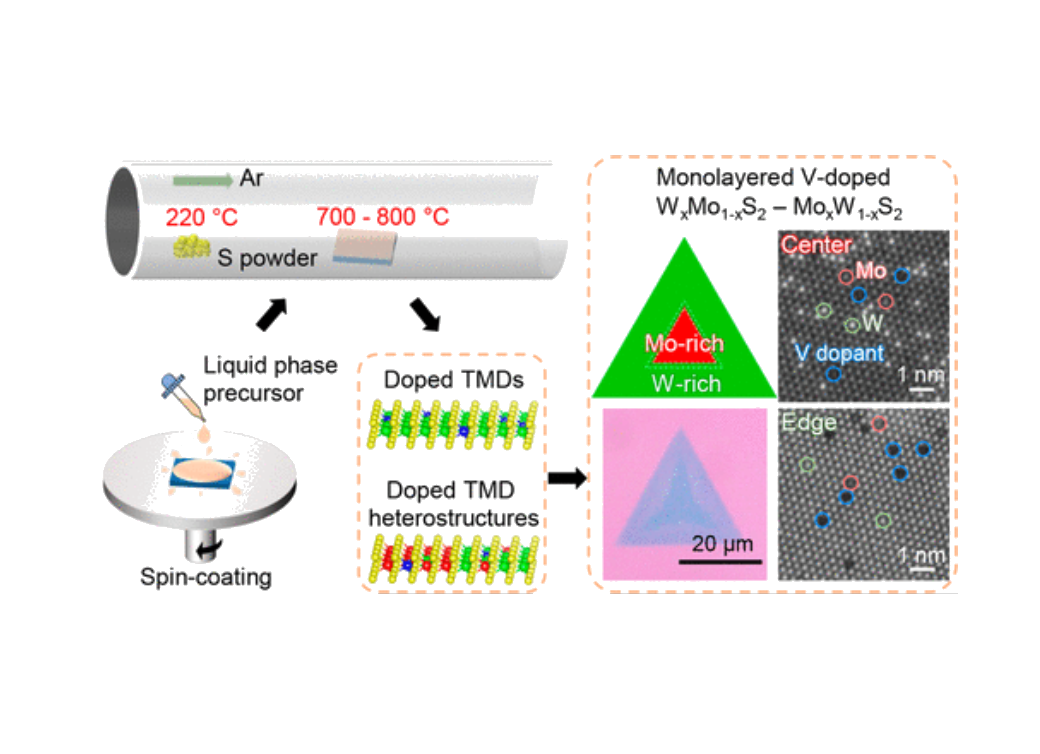
T.Y. Zhang, K. Fujisawa, F. Zhang, M.Z. Liu, M.C. Lucking, R.N. Gontijo, Y. Lei, H. Liu, K. Crust, T. Granzier-Nakajima, H. Terrones, A.L. Elias, M. Terrones. Universal In Situ Substitutional Doping of Transition Metal Dichalcogenides by Liquid-Phase Precursor-Assisted Synthesis. ACS Nano 2020, 14, 4, 4326–4335
© 2020 American Chemical Society

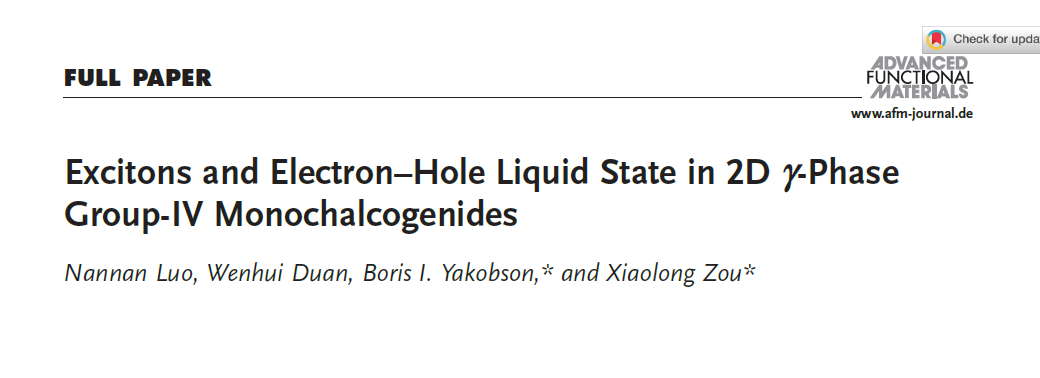
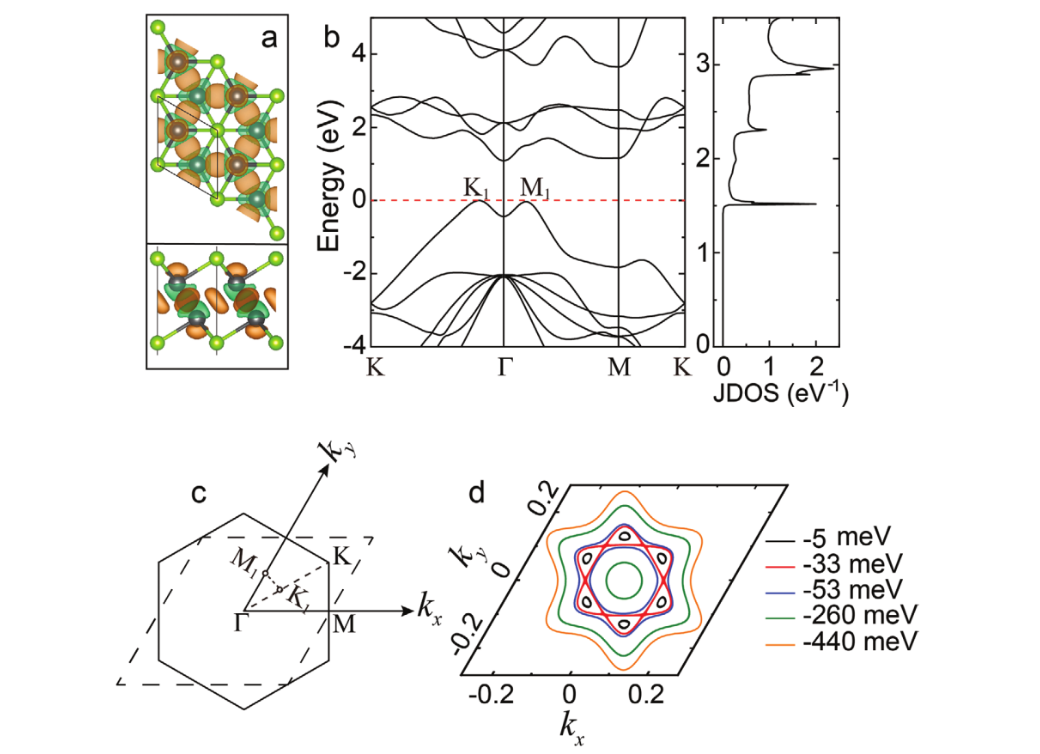
N. Luo, W. Duan, B.I. Yakobson, X. Zou. Excitons and Electron–Hole Liquid State in 2D γ‐Phase Group‐IV Monochalcogenides. Adv. Funct. Mater. 30, 2000533 (2020)
© 2020 WILEY-VCH
https://doi.org/10.1002/adfm.202000533

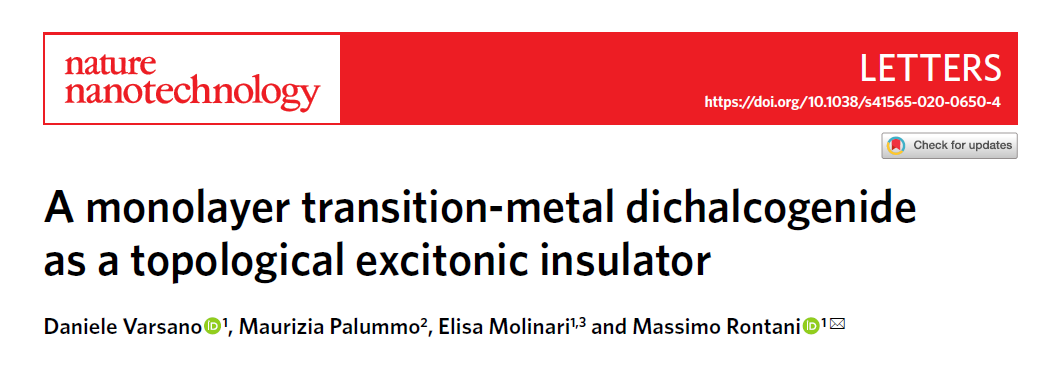
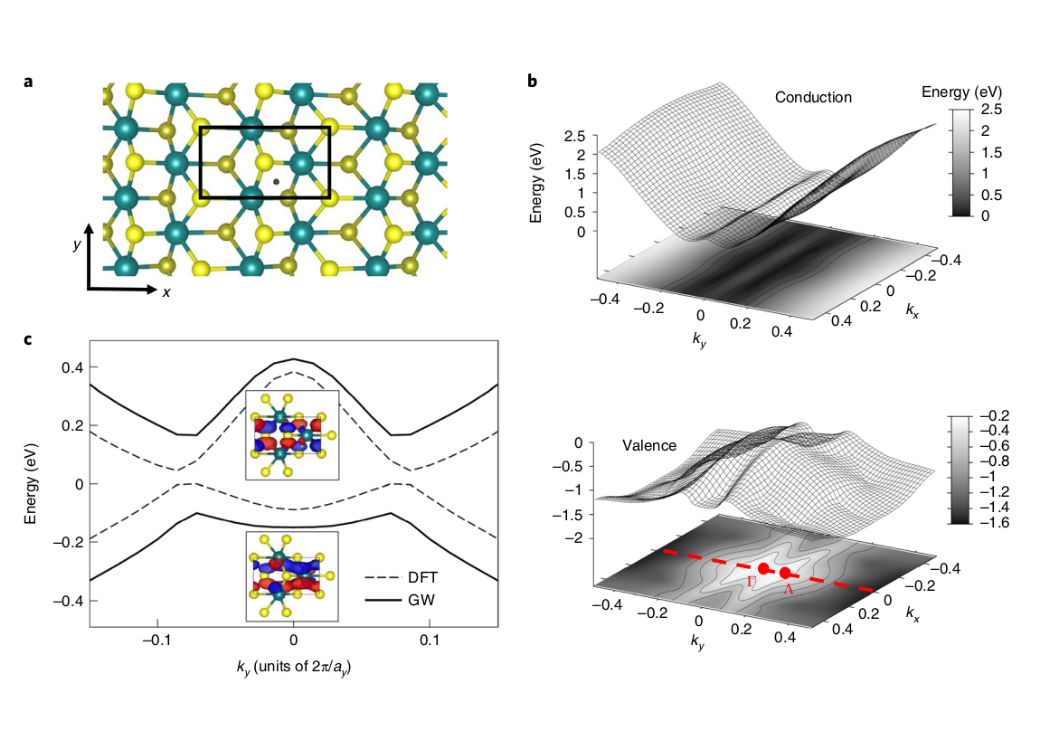
D. Varsano, M. Palummo, E. Molinari, and M. Rontani. A monolayer transition-metal dichalcogenide as a topological excitonic insulator. Nature Nanotechnology, 15 (2020)
© The Author(s)
https://doi.org/10.1038/s41565-020-0650-4

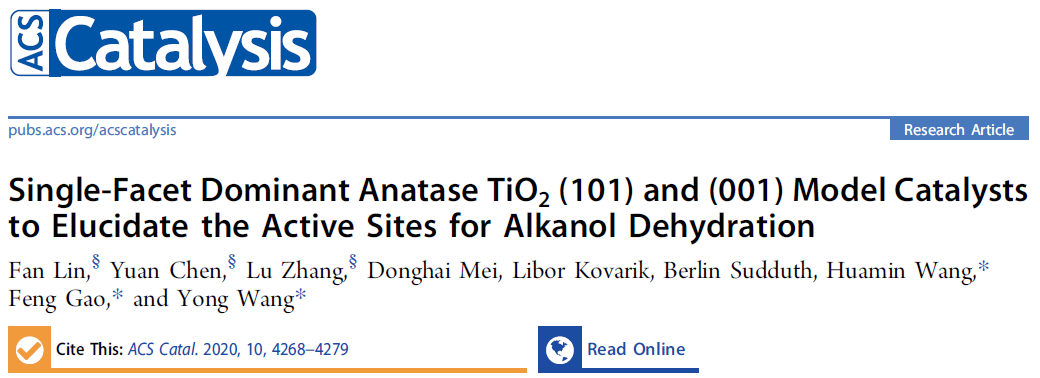
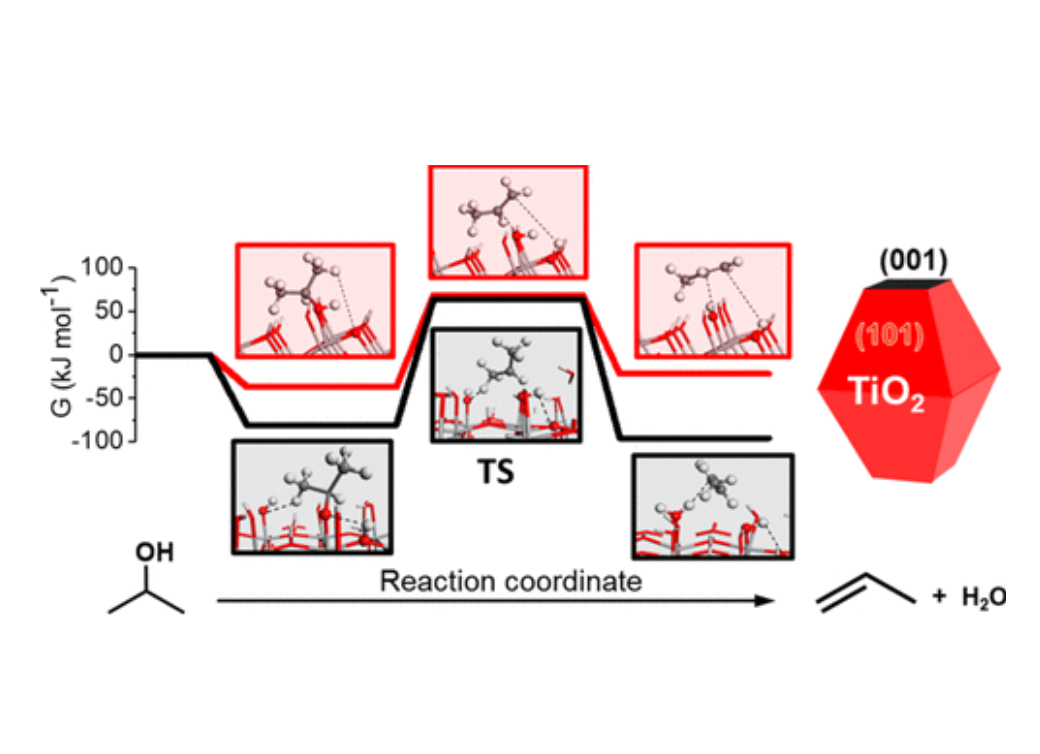
F. Lin, Y. Chen, L. Zhang, D. Mei, L. Kovarik, B. Sudduth, H. Wang, F. Gao, and Y. Wang. Single-Facet Dominant Anatase TiO2 (101) and (001) Model Catalysts to Elucidate the Active Sites for Alkanol Dehydration. ACS Catalysis 10, 7 (2020)
© 2020 American Chemical Society
https://doi.org/10.1021/acscatal.9b04654

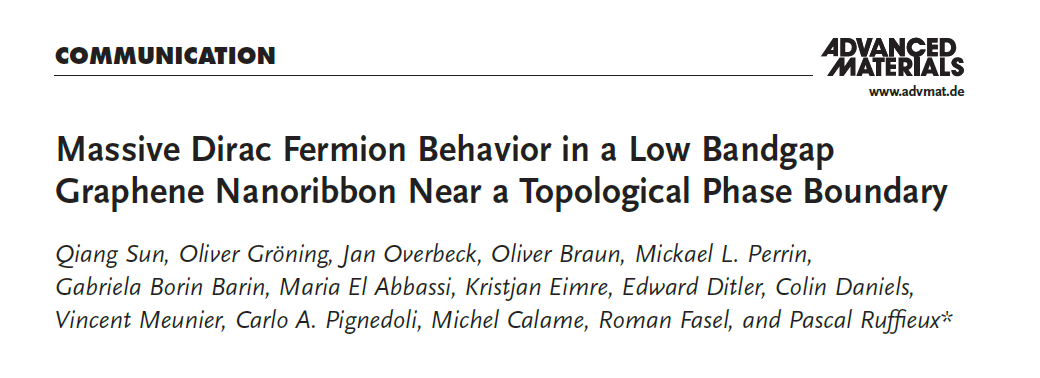
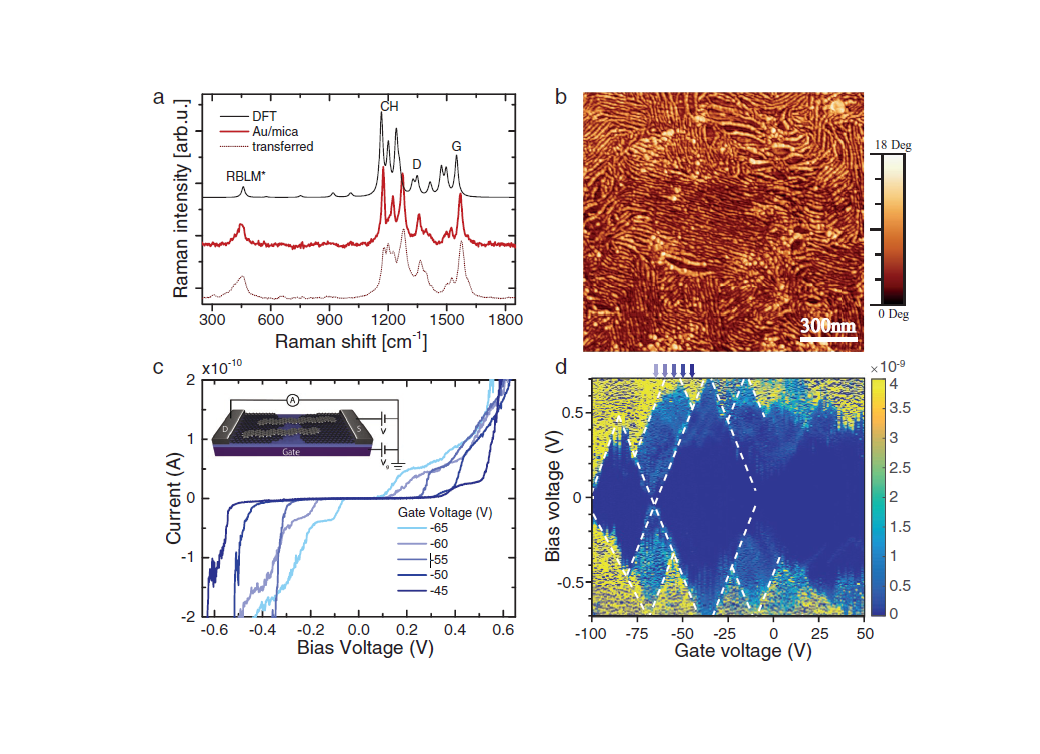
Q. Sun, O. Gröning. J. Overbeck, O. Braun, M.L. Perrin, G. Borin Barin, M. El Abbassi, K. Eimre, E. Ditler, C. Daniels, V. Meunier, C.A. Pignedoli, M. Calame, R. Fasel, and P. Ruffieux. Massive Dirac Fermion Behavior in a Low Bandgap Graphene Nanoribbon Near a Topological Phase Boundary. Adv. Mater. 32, 1906054 (2020)
© 2020 WILEY‐VCH
https://doi.org/10.1002/adma.201906054

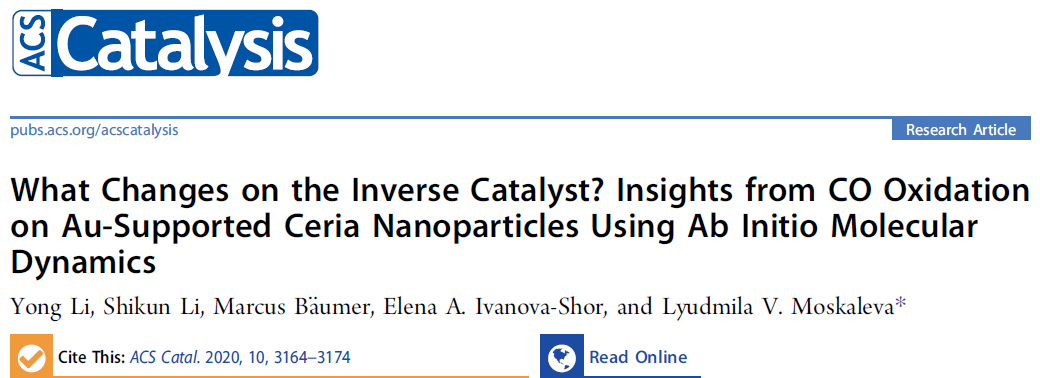
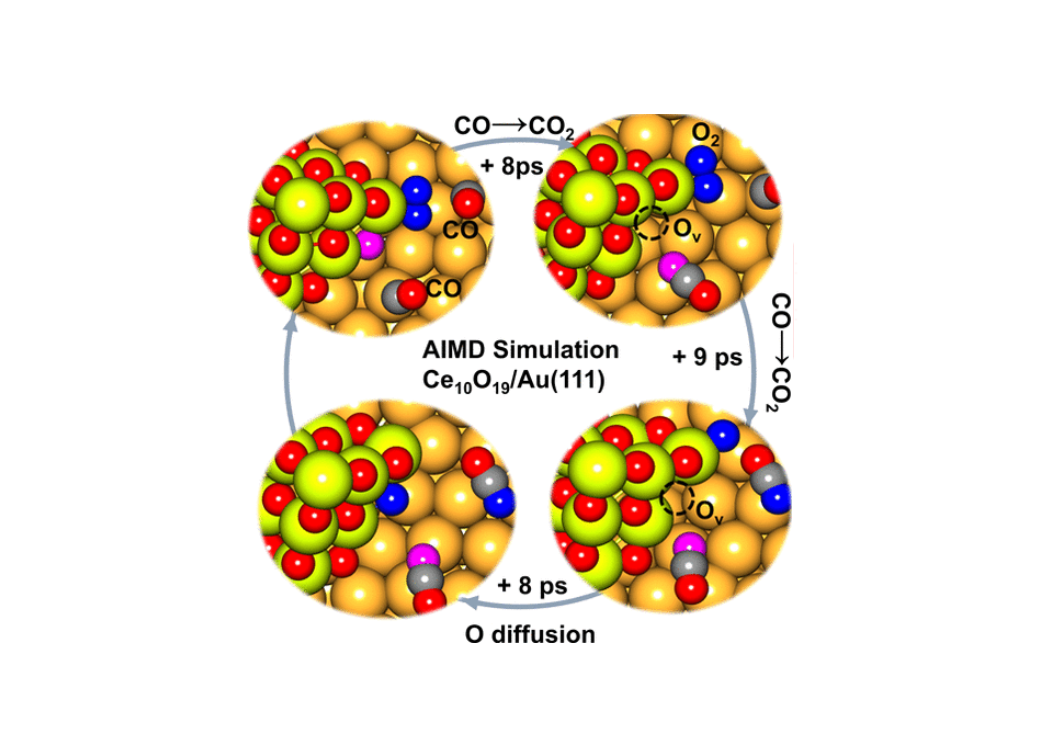
Y. Li, S. Li, M. Bäumer, E. A. Ivanova-Shor, and L. V. Moskaleva. What Changes on the Inverse Catalyst? Insights from CO Oxidation on Au-Supported Ceria Nanoparticles Using Ab Initio Molecular Dynamics. ACS Catalysis 10, 5 (2020)
© 2020 American Chemical Society
https://doi.org/10.1021/acscatal.9b05175

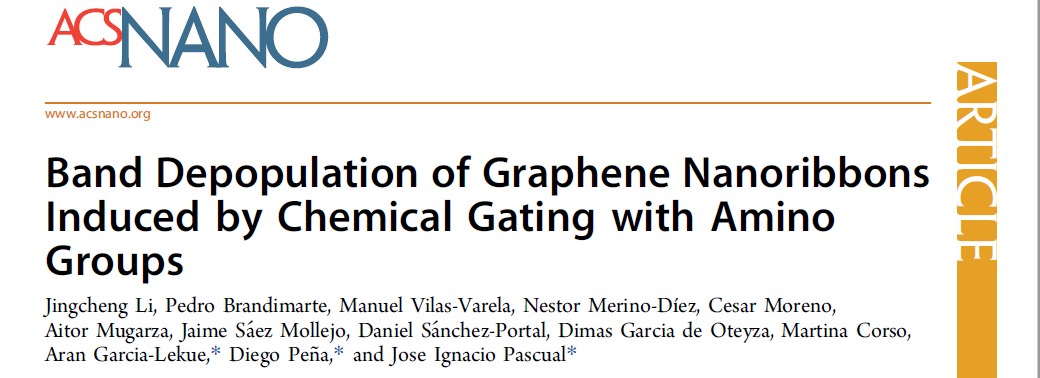
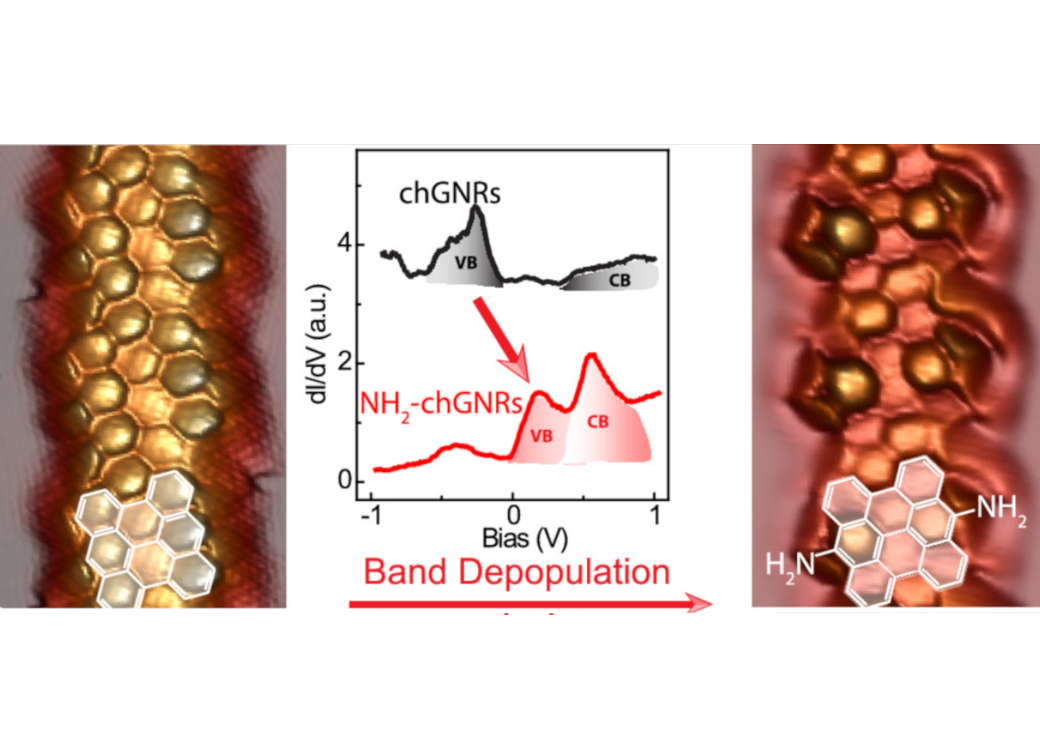
J. Li, P. Brandimarte, M. Vilas-Varela, N. Merino-Díez, C. Moreno, A. Mugarza, J. Sáez Mollejo, D. Sánchez-Portal, D. Garcia de Oteyza, M. Corso, A. Garcia-Lekue, D. Peña, and J. I. Pascual. Band Depopulation of Graphene Nanoribbons Induced by Chemical Gating with Amino Groups. ACS Nano 14, 2 (2020)
© 2020 American Chemical Society

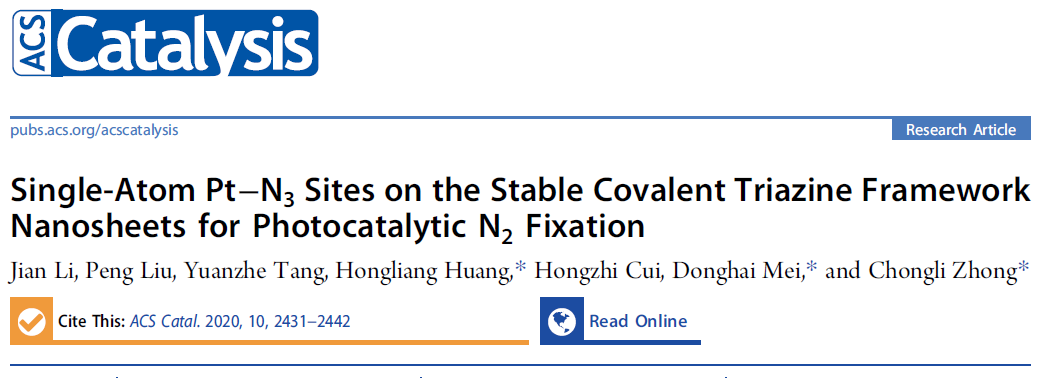
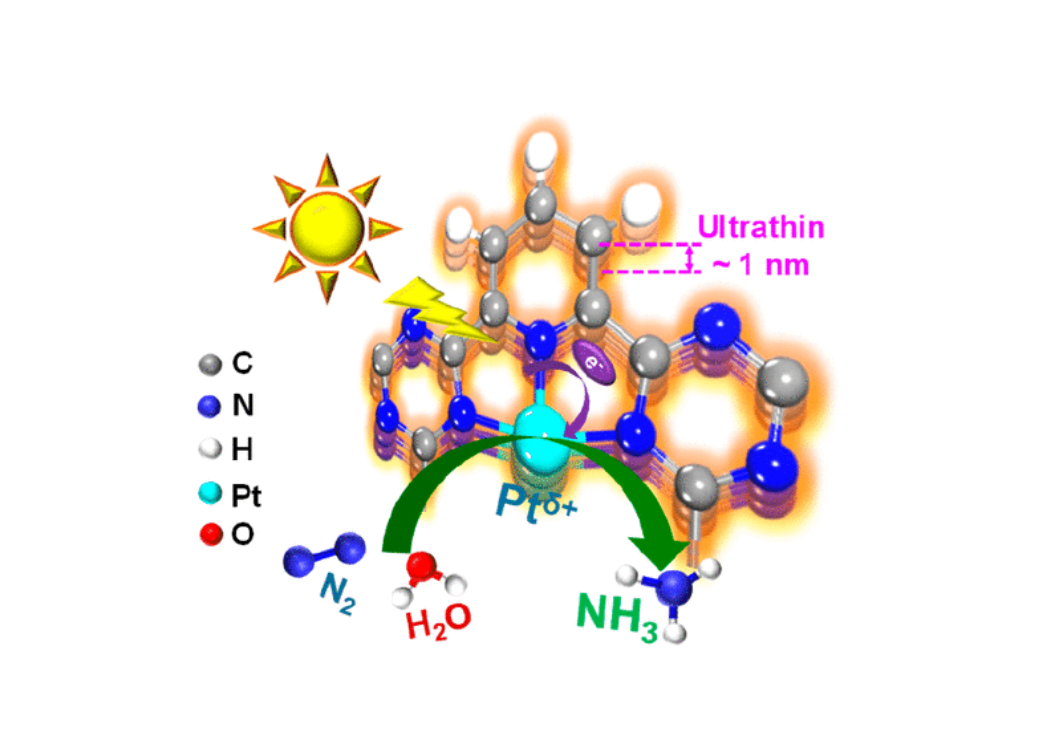
J. Li, P. Liu, Y. Tang, H. Huang, H. Cui, D. Mei, and C. Zhong. Single-Atom Pt–N3 Sites on the Stable Covalent Triazine Framework Nanosheets for Photocatalytic N2 Fixation. ACS Catalysis 10, 4 (2020)
© 2020 American Chemical Society

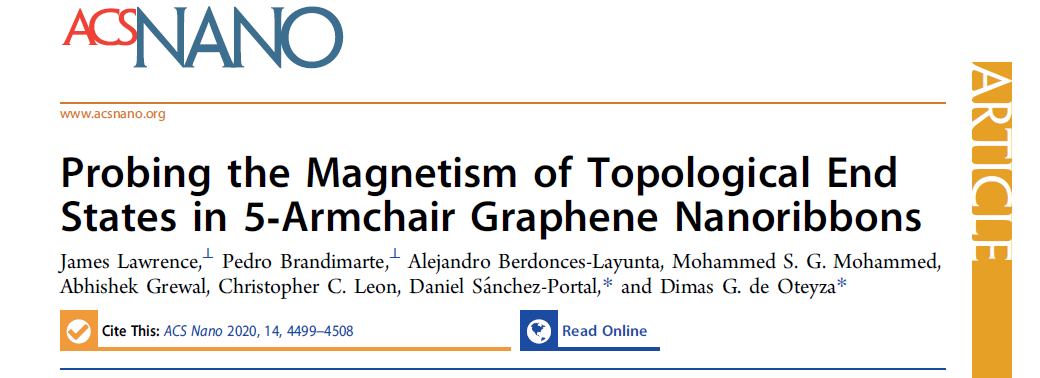
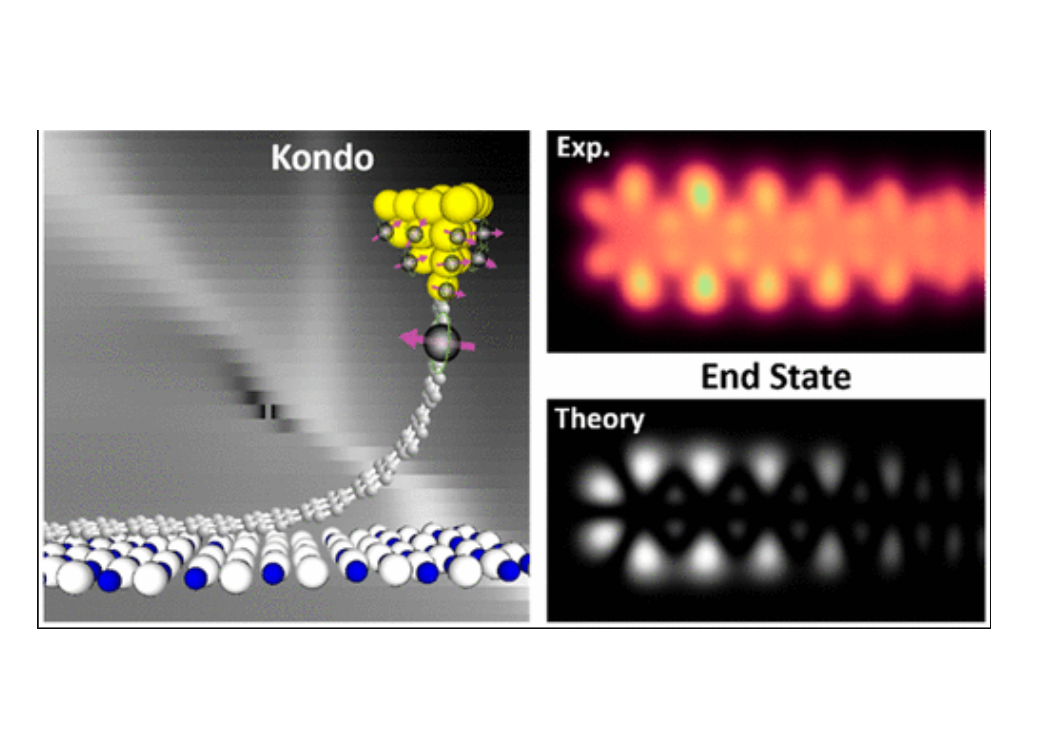
J. Lawrence, P. Brandimarte, A. Berdonces-Layunta, M. S. G. Mohammed, A. Grewal, C. C. Leon, D. Sánchez-Portal, and D. G. de Oteyza. Probing the Magnetism of Topological End States in 5-Armchair Graphene Nanoribbons. ACS Nano 14, 4 (2020)
© 2020 American Chemical Society

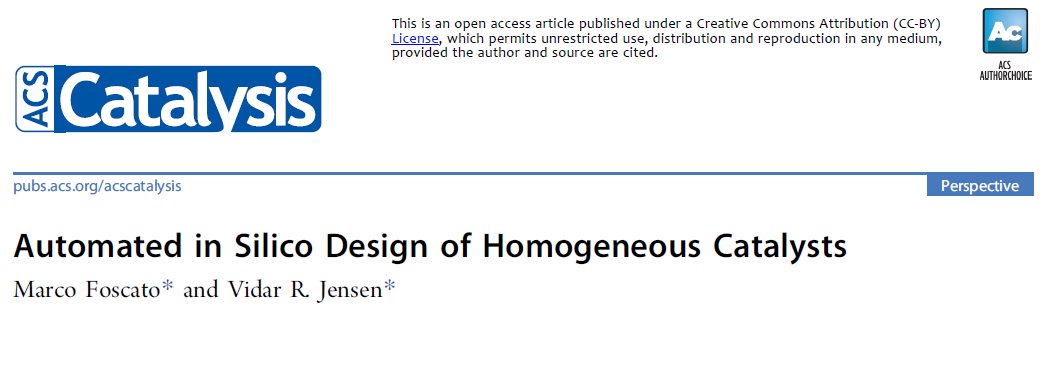
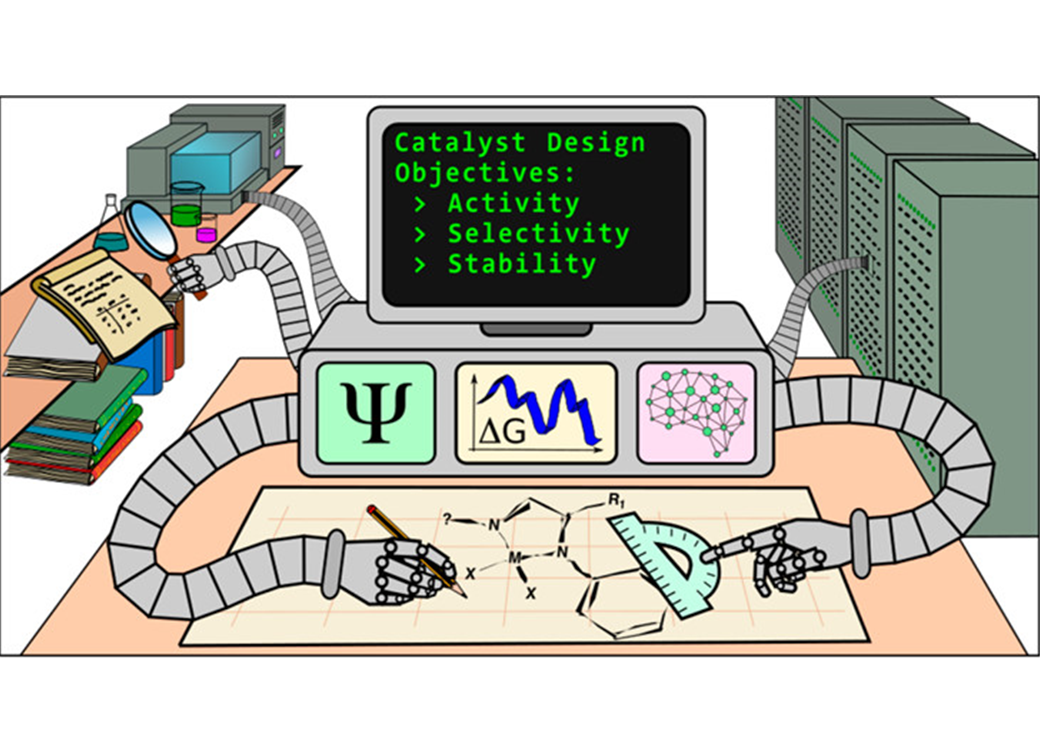
M. Foscato and V. R. Jensen. Automated in Silico Design of Homogeneous Catalysts. ACS Catal. 10, 3 (2020)
© 2020 American Chemical Society
https://doi.org/10.1021/acscatal.9b04952

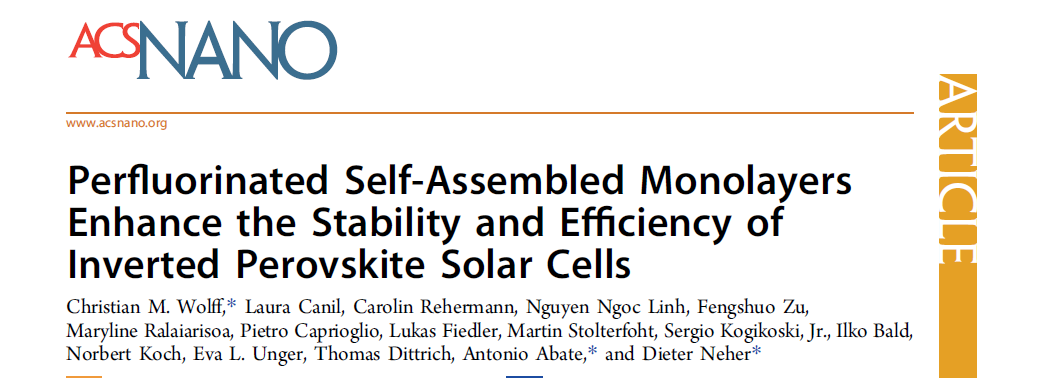
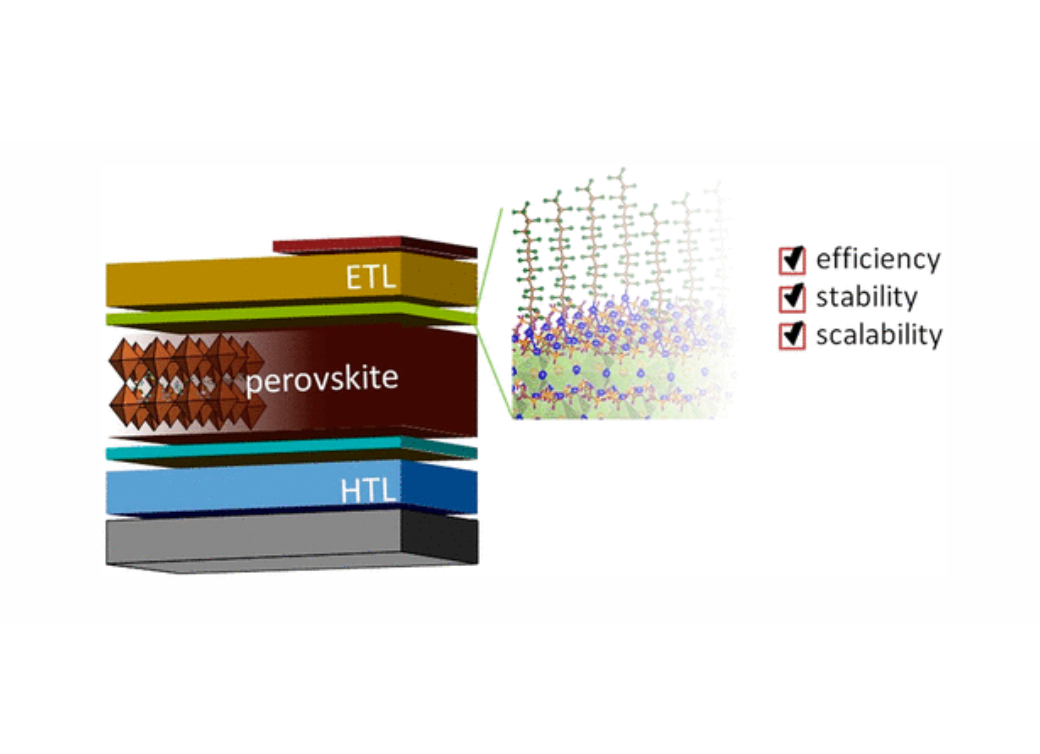
- C. M. Wolff, L. Canil, C. Rehermann, N. N. Linh, F. Zu, M. Ralaiarisoa, P. Caprioglio, L. Fiedler, M. Stolterfoht, S..Kogikoski Jr., I. Bald, N. Koch, E. L. Unger, T. Dittrich, A. Abate, and D. Neher. Perfluorinated Self-Assembled Monolayers Enhance the Stability and Efficiency of Inverted Perovskite Solar Cells. ACS Nano, 14, 2, 1445–1456 (2020)

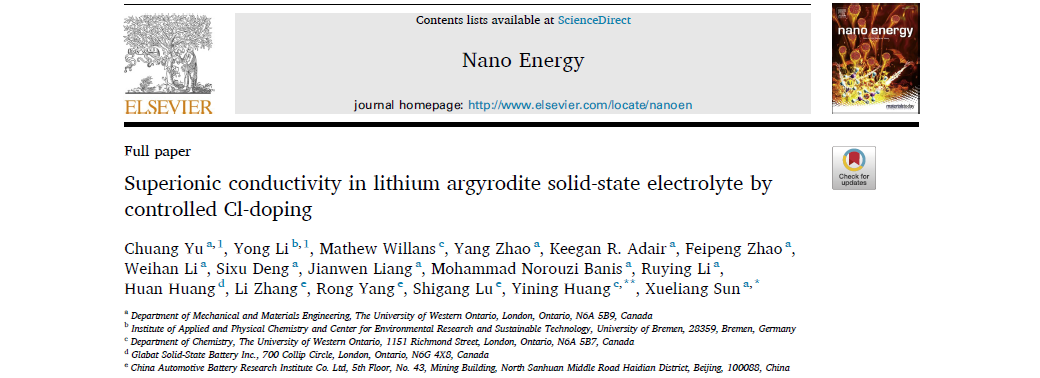
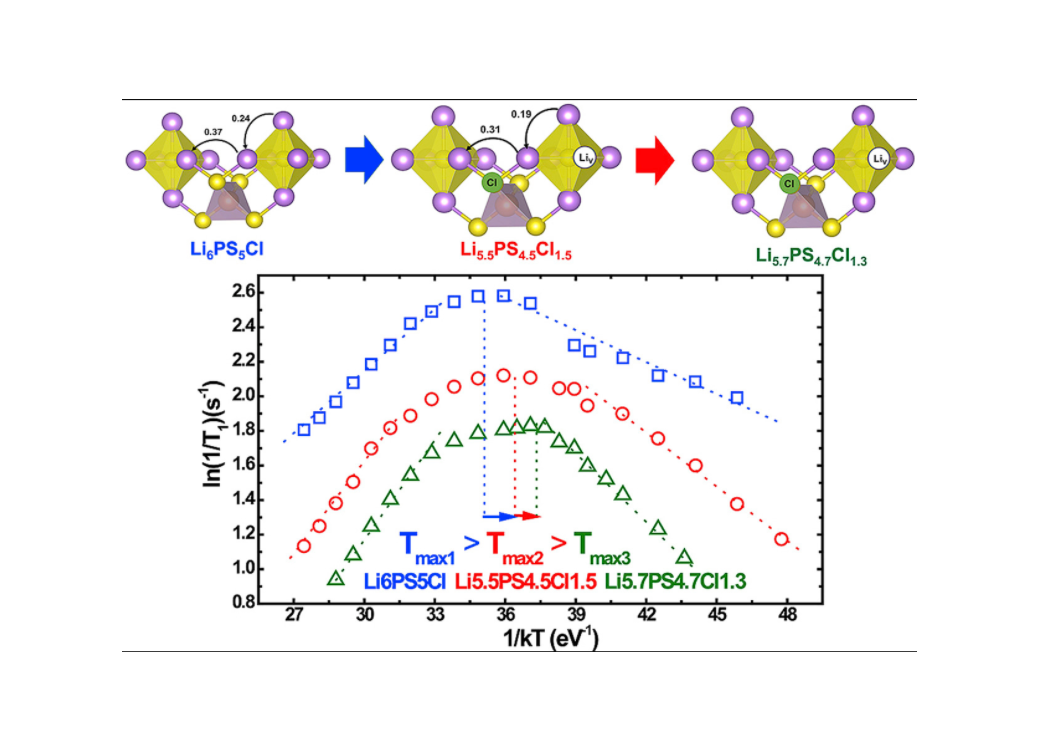
C. Yu, Y. Li, M. Willans, Y. Zhao, K.R. Adair, F. Zhao, W. Li, S. Deng, J. Liang, M. N. Banis, R. Li, H. Huang, L. Zhang, R. Yang, S. Lu, Y. Huang, X. Sun. Superionic conductivity in lithium argyrodite solid-state electrolyte by controlled Cl-doping. Nano Energy 69, 104396 (2020)
© 2019 Elsevier Ltd. All rights reserved.
https://doi.org/10.1016/j.nanoen.2019.104396

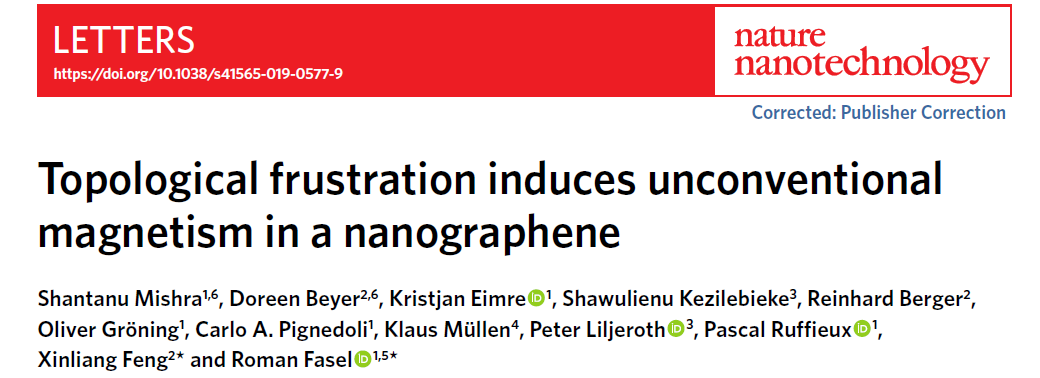
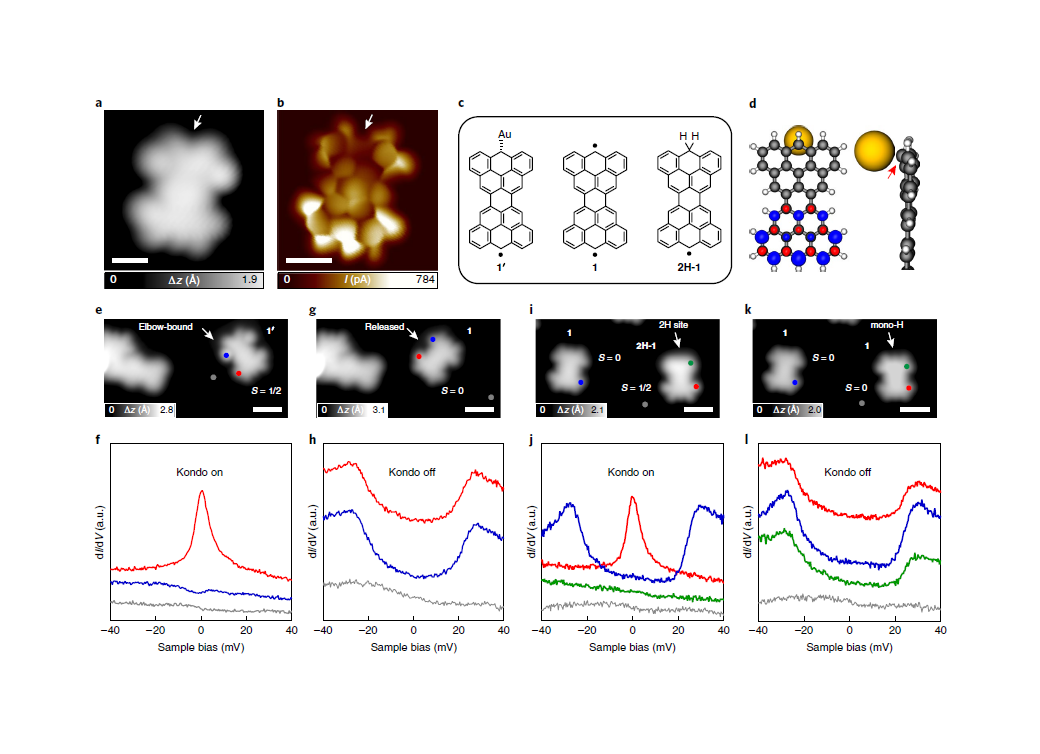
S. Mishra, D. Beyer, K. Eimre et al. Topological frustration induces unconventional magnetism in a nanographene. Nat. Nanotechnol. 15 (2020)
© 2020 The Authors
https://doi.org/10.1038/s41565-019-0577-9
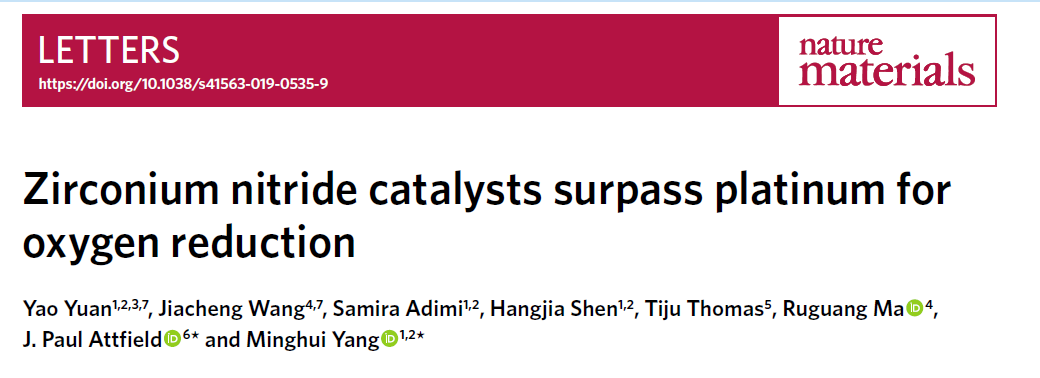
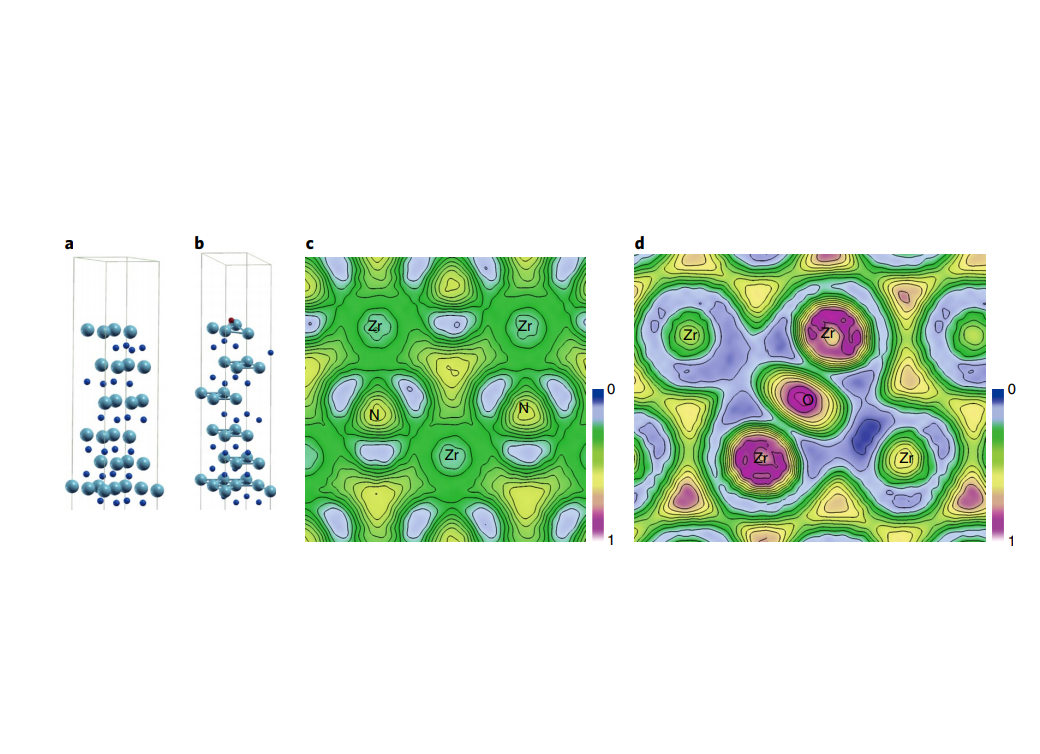
Y. Yuan, J. Wang, S. Adimi et al. Zirconium nitride catalysts surpass platinum for oxygen reduction. Nat. Mater. 19, 282–286 (2020).
© 2019 The Author(s)
https://doi.org/10.1038/s41563-019-0535-9











